FEATURING 267 Industry-First Reviews of Fiction, Nonfiction, Children’s, and YA Books

THE WISDOM (AND WIT) OF LOUISE ERDRICH
The acclaimed novelist brings all her gifts to The Mighty Red

FEATURING 267 Industry-First Reviews of Fiction, Nonfiction, Children’s, and YA Books

The acclaimed novelist brings all her gifts to The Mighty Red
Ho;
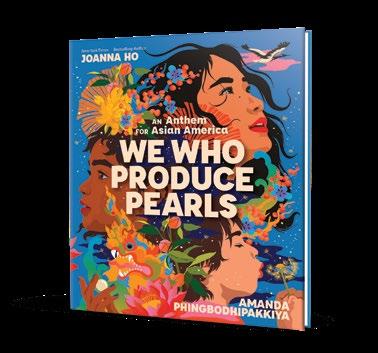

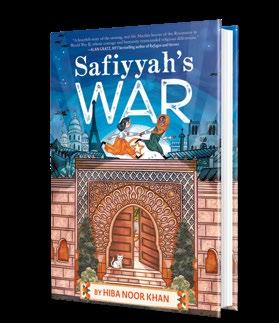
By Hiba Noor Khan
Kenneth M. Cadow

Safia Elhillo
By Sherri Winston
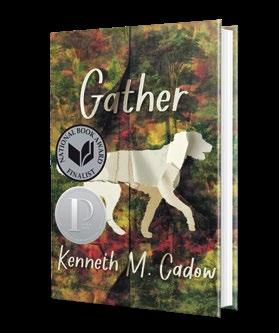
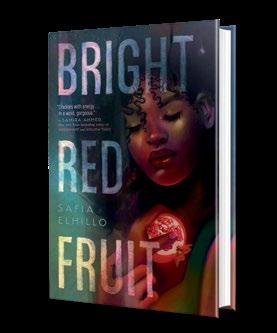
Steve Coll
Tessa Hulls

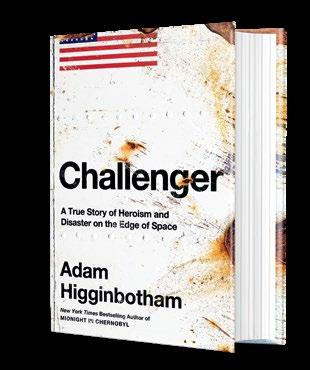

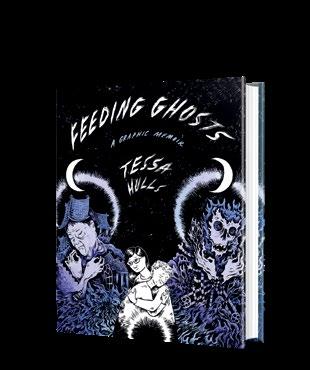


THE KIRKUS STAR , our emblem of excellence, has long been a beacon to book lovers. It lets readers know which titles we believe will stand the test of time. Since 2014, it’s served an additional purpose: letting our teams of expert jurors know which books are eligible to win the Kirkus Prize.
Created to honor 81 years of honest industry-first reviews, the Kirkus Prize remains one of the richest literary honors in the world, with three awards of $50,000 in fiction, nonfiction, and young readers’ literature given annually. That means we’ve awarded $1.5 million (and counting) to a cavalcade of outstanding authors, illustrators, and translators whose work has transported us to brave new worlds and illuminated necessary truths about the one we live in.
Nothing gets us more excited than introducing someone to their next favorite book. The six finalists in each Kirkus Prize category are our jurors’ top picks of 2024. We consider that designation a sort of super-star, illuminating some of the brightest work in the literary firmament.
The Kirkus Prize symbolizes our ongoing commitment to serve readers with dedication and discernment. We can’t wait to celebrate that work—and these 18 fantastic finalists—at the awards ceremony in New York City on Oct. 16.

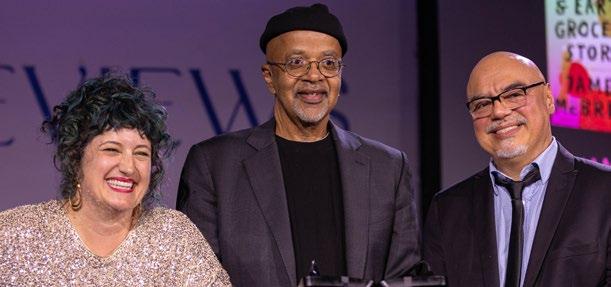
(1) From
(2)



Jennine Capó
Louise Erdrich
Percival Everett
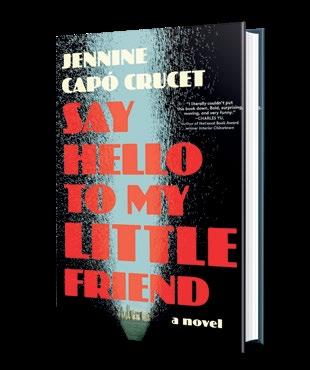
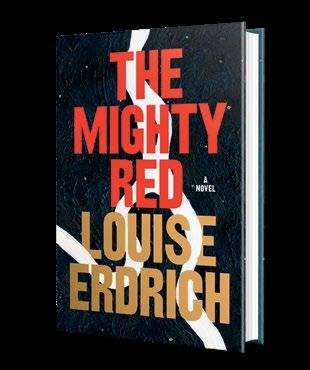
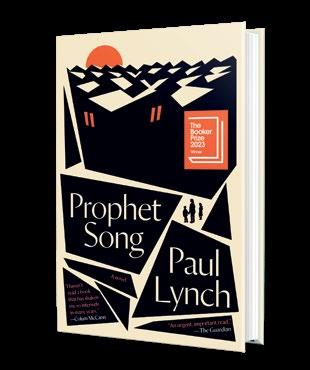
Paul Lynch
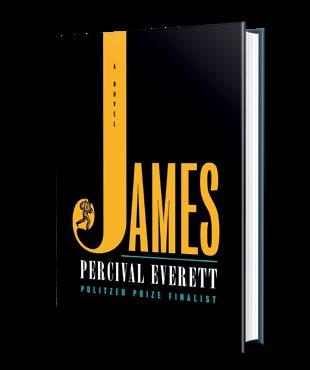

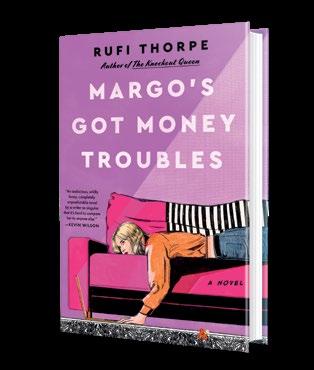


FROM THE EDITOR’S DESK

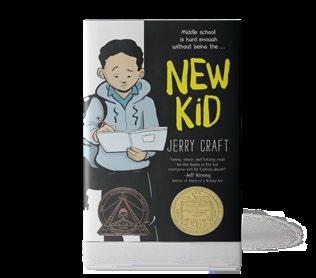
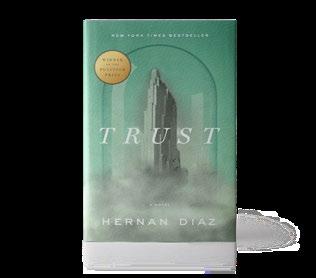
AS I’M WRITING this column, we’re deep into preparations for this year’s Kirkus Prize ceremony. By the time the issue lands in your mailbox, we’ll be just days away from the big event. On that night, we’ll be honoring the 18 finalists in three categories and presenting awards for the three winning books. Turn to our editors’ columns to learn more about the finalists in fiction (p. 6), nonfiction (p. 40), and young readers’ literature (the children’s finalists are on p. 76, and the young adult ones are on p. 120). It’s a remarkable lineup, representing a wide range of styles, subjects, and formats. If you’re looking for a stimulating reading list for the fall and winter, you couldn’t do better than these books.
The Kirkus Prize was launched in 2014—a relative
newcomer in a crowded field of literary awards that includes the well-known National Book Awards, Pulitzer Prizes, and Booker Prize, along with the PEN/ Faulkner Award for Fiction, the Baillie Gifford Prize for Non-Fiction, the Royal Society Trivedi Science Book Prize, the Plutarch Award (for biography), the Edgar Allan Poe Awards (for mystery literature)…the list goes on and on. (Visit Kirkus.com for our in-depth coverage of literary awards news.)
But the founders of the prize—Kirkus co-chairs Herb Simon and Marc Winkelman and publisher and CEO Meg LaBorde Kuehn—saw that the magazine could bring something unique to the table. Because we review nearly 10,000 books a year,
Frequently Asked Questions: www.kirkusreviews.com/about/faq
Fully Booked Podcast: www.kirkusreviews.com/podcast/
Advertising Opportunities: www.kirkusreviews.com/book-marketing
Submission Guidelines: www.kirkusreviews.com/about/publisher-submission-guidelines
Subscriptions: www.kirkusreviews.com/magazine/subscription
Newsletters: www.kirkusreviews.com
For customer service or subscription questions, please call 1-800-316-9361
our reviewers survey a broader field of contenders than any prize jury out there. Of those thousands of books, only titles that receive the Kirkus star—indicating a title of exceptional literary merit—are sent to the prize jurors, and those jurors, along with the editors, produce the lists of finalists. Kudos to this year’s jurors, by the way, for their tireless work reading and evaluating hundreds of titles: Christine Bollow and Jeffrey Burke (fiction), Hannah Bae and Mary Ann Gwinn (nonfiction), and Christopher A. Biss-Brown and Michelle H. Martin (young readers’ literature).
Over the course of its 11 years, the Kirkus Prize has recognized many works that are now contemporary classics, often before those books have received any other laurels. Among them are Euphoria by Lily King (2014), Between the World and Me: Notes on the First 150 Years in America by Ta-Nehisi Coates (2015), As Brave as You by Jason Reynolds (2016), The Gulf: The Making of an American
Sea by Jack E. Davis (2017), Severance by Ling Ma (2018), New Kid by Jerry Craft (2019), Trust by Hernan Diaz (2022), and The Heaven & Earth Grocery Store by James McBride (2023). All told, the Kirkus Prize has bestowed $1.5 million in prize money to the creators of these books—support that helps them to continue their achievements.
Every year, the staff of Kirkus works overtime to make the prize ceremony a memorable evening; the 10th anniversary event, held last year for the first time in New York City, took things to new heights (literally) at the Tribeca Rooftop in Lower Manhattan. We’ll be back in New York again this year, and wherever you might be, we hope you’ll tune in to our YouTube channel on Wednesday, Oct. 16, at 7:30 p.m. ET, to see our livestream of the proceedings. See you there.

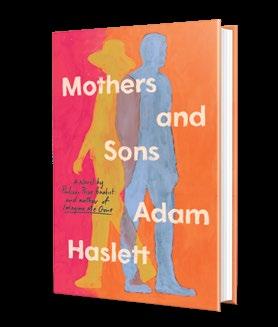

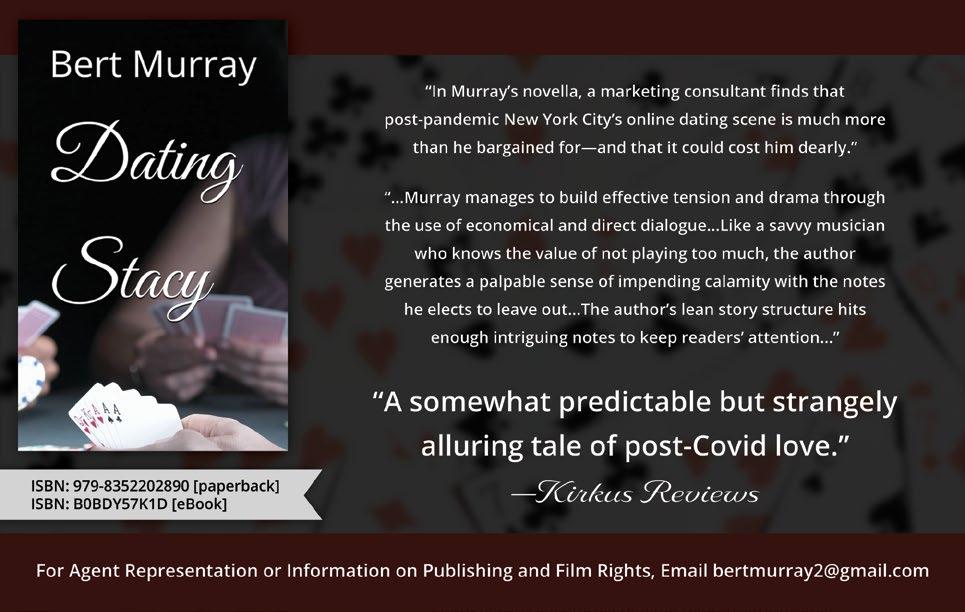
Co-Chairman
HERBERT SIMON
Publisher & CEO
MEG LABORDE KUEHN mkuehn@kirkus.com
Chief Marketing Officer
SARAH KALINA skalina@kirkus.com
Publisher Advertising & Promotions
RACHEL WEASE rwease@kirkus.com
Indie Advertising & Promotions
AMY BAIRD abaird@kirkus.com
Author Consultant RY PICKARD rpickard@kirkus.com
Lead Designer KY NOVAK knovak@kirkus.com
Magazine Compositor
NIKKI RICHARDSON nrichardson@kirkus.com
Kirkus Editorial Senior Production Editor ROBIN O’DELL rodell@kirkus.com
Kirkus Editorial Senior Production Editor
MARINNA CASTILLEJA mcastilleja@kirkus.com
Kirkus Editorial Production Editor
ASHLEY LITTLE alittle@kirkus.com
Copy Editors
ELIZABETH J. ASBORNO
LORENA CAMPES
NANCY MANDEL BILL SIEVER
Contributing Writers
GREGORY MCNAMEE
MICHAEL SCHAUB
Co-Chairman
MARC WINKELMAN
Editor-in-Chief TOM BEER tbeer@kirkus.com
President of Kirkus Indie
CHAYA SCHECHNER cschechner@kirkus.com
Fiction Editor
LAURIE MUCHNICK lmuchnick@kirkus.com
Nonfiction Editor JOHN McMURTRIE jmcmurtrie@kirkus.com
Young Readers’ Editor
LAURA SIMEON lsimeon@kirkus.com
Young Readers’ Editor MAHNAZ DAR mdar@kirkus.com
Editor at Large MEGAN LABRISE mlabrise@kirkus.com
Senior Indie Editor DAVID RAPP drapp@kirkus.com
Indie Editor ARTHUR SMITH asmith@kirkus.com
Editorial Assistant NINA PALATTELLA npalattella@kirkus.com
Indie Editorial Assistant DAN NOLAN dnolan@kirkus.com
Indie Editorial Assistant SASHA CARNEY scarney@kirkus.com
Mysteries Editor THOMAS LEITCH
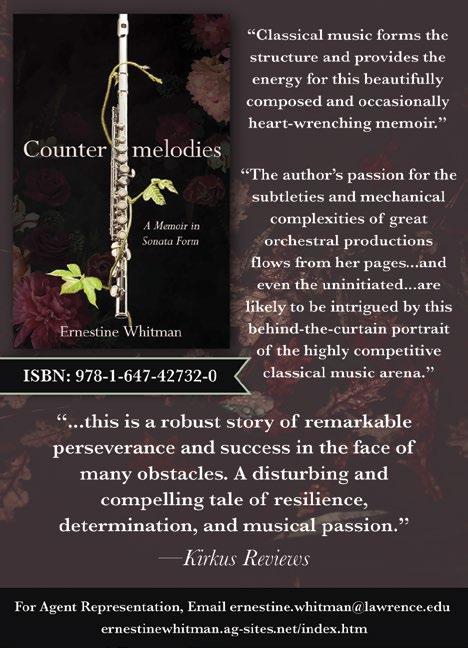
Contributors
Colleen Abel, Mahasin Aleem, Reina Luz Alegre, Paul Allen, Jenny Arch, Kent Armstrong, Heather Rose Artushin, Mark Athitakis, Colette Bancroft, Robert Beauregard, Heather Berg, Elizabeth Bird, Ariel Birdoff, Sarah Blackman, Amy Boaz, Jessica Hoptay Brown, Cliff Burke, Jeffrey Burke, Hailey Carrell, Charles Cassady, Sandie Angulo Chen, Ann Childs, K.W. Colyard, Jeannie Coutant, Michael Deagler, Dave DeChristopher, Amanda Diehl, Steve Donoghue, Elspeth Drayton, Jacob Edwards, Lisa Elliott, Lily Emerick, Joshua Farrington, Katie Flanagan, Mia Franz, Ayn Reyes Frazee, Jenna Friebel, Nivair H. Gabriel, Elisa Gall, Omar Gallaga, Laurel Gardner, Cierra Gathers, Jean Gazis, Fiona Giles, Carol Goldman, Carla Michelle Gomez, Melinda, Greenblatt, Vicky Gudelot, Tobi Haberstroh, Geoff Hamilton, Alec Harvey, Peter Heck, Lynne Heffley, Zoe Holland, Katrina Niidas Holm, Julie Hubble, Ariana Hussain, Kathleen T. Isaacs, Wesley Jacques, Kerri Jarema, Jayashree Kamblé, Ivan Kenneally, Colleen King, Stephanie Klose, Maggie Knapp, Andrea Kreidler, Christopher Lassen, Tom Lavoie, Hanna Lee, Judith Leitch, Donald Liebenson, Coeur de Lion, Sarah Lohmann, Patricia Lothrop, Francesca Martinez, Rachel Mack, Douglas MacLeod, Michael Magras, Joan Malewitz, Thomas Maluck, Collin Marchiando, Gabriela Martins, Matthew May, Kirby McCurtis, Jeanne McDermott, Dale McGarrigle, Zoe McLaughlin, Kathie Meizner, Carol Memmott, Tara Mokhtari, Clayton Moore, Andrea Moran, Rhett Morgan, Molly Muldoon, Cleyvis Natera, Christopher Navratil, Liza Nelson, Therese Purcell Nielsen, Katrina Nye, Tori Ann Ogawa, Mike Oppenheim, Emilia Packard, Derek Parker, Scott Parker, Hal Patnott, Deb Paulson, John Edward Peters, William E. Pike, Shira Pilarski, Margaret Quamme, Carolyn Quimby, Kristy Raffensberger, Matt Rauscher, Maggie Reagan, Nancy Thalia Reynolds, Erica Rivera, Amy Robinson, Bella Rodrigues, Lizzie Rogers, Lloyd Sachs, Hadeal Salamah, Bob Sanchez, Keiko Sanders, Caitlin Savage, Jerome Shea, Sadaf Siddique, Linda Simon, Laurie Skinner, Wendy Smith, Margot E. Spangenberg, Mo Springer, Allison Staley, Mathangi Subramanian, Jennifer Swanson, Jennifer Sweeney, Eva Thaler-Sroussi, Renee Ting, Lenora Todaro, Christina Vortia, Francesca Vultaggio, Katie Weeks, Erica Weidner, Vanessa Willoughby, Marion Winik, Jean-Louise Zancanella

IT’S A GREAT pleasure to present the fiction finalists for the Kirkus Prize. Together with this year’s jurors— Christine Bollow, co-owner of Loyalty Bookstores, and Kirkus reviewer Jeffrey Burke—I spent months reading the books that received starred reviews and discussing them over spirited Zoom calls. The six finalists are wildly different but share a commitment to telling a great story while playing with language and form.
Say Hello To My Little Friend by Jennine Capó Crucet (Simon & Schuster, March 5): A young man who went from Cuba to Miami on a raft. An orca who’s spent most of her life at the Seaquarium. The movie Scarface. Moby-Dick. Somehow, Crucet combines these disparate elements into

what our review calls an “unclassifiable and unforgettable” novel. As Ismael Reyes tries to forge an adult life for himself, his role models come from pop culture, but the dangers are real.
The Mighty Red by Louise Erdrich (Harper, Oct. 1) Kismet Poe is in high school, and two boys want to marry her. Her mother is a trucker who hauls sugar beets, and her charming father stole money from their church. “The Red River cuts a vivid track through the hardscrabble lives that anchor Erdrich’s surpassing North Dakota fiction,” says our review. “In this tender and capacious story, love and tragedy mingle along the river and into the world.” (See our interview with Erdrich on p. 14.)
James by Percival Everett (Doubleday, March 19): In


Everett’s audacious reimagining of Huckleberry Finn, Jim—the enslaved man who travels the Mississippi River with Huck—is revealed as James, who can write, argue with Voltaire, and speak in elevated English. This enthralling novel can be read on its own, but Everett has made it a necessary companion to Twain’s masterpiece. “One of the noblest characters in American literature gets a novel worthy of him,” says our review.
Prophet Song by Paul Lynch (Atlantic Monthly, 2023): Over the course of Lynch’s frightening novel, one woman tries to preserve her family as Ireland devolves into a police state. Eilish’s labor-unionist husband has been taken away, and her son has been called to military duty. Lynch makes every step of this near future nightmare as plausible as it is horrific. Our review calls it “captivating, frightening, and a singular achievement.”
Playground by Richard Powers (Norton, Sept. 24):
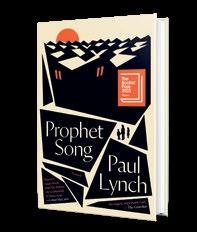
Two boys bond over board games and fall in love with the same girl. One becomes a tech multi-millionaire, the other moves to an island in the middle of the Pacific Ocean. There’s an elderly scuba diver, too. Powers explores the computer revolution and the beauty of aquatic life in what our review calls “an engaging, eloquent message for this fragile planet.”
Margo’s Got Money Troubles by Rufi Thorpe (Morrow/ HarperCollins, June 11):
When Margo, a college freshman, gets pregnant with her English professor’s baby, she decides to keep it. One thing leads to another and she’s posting videos on OnlyFans, a porn site, and taking marketing advice from her pro-wrestler dad. Thorpe’s exuberant novel has “terrific characters, rich worldbuilding, deep thoughts about fiction and morality, a love story, and a happy ending,” according to our review.
Laurie Muchnick is the fiction editor.

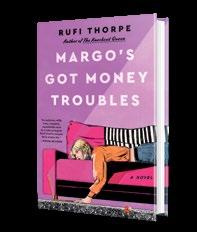
An overworked immigration lawyer and his religious mother work to finally face their pasts.
Haslett’s third novel is partly narrated by Peter Fischer, a New York City lawyer working for a nonprofit handling asylum cases. There, and in the rest of his life, he handles things with assurance but little joy—his lover, Cliff, has little more depth than a dating app hookup, and he avoids conversations with his snarky and unfiltered sister, Liz. But he’s unsettled when he takes on the case of Vasel Marku, a young gay Albanian man seeking asylum over fears he’ll face homophobic persecution. Peter’s narration of his unusually deep involvement in Vasel’s case is braided around
third-person narration about his mother, Ann, who leads a women-focused spiritual retreat in Vermont with her partner, Clare. Ann’s breakup with her husband (and Peter’s father) after falling for Clare disrupted her life, and it’s clear that both mother and son have been swallowing a lot of unspoken hurt. The strength of Haslett’s storytelling is its deliberation, slowly peeling back the veneers of Peter and Ann’s professional accomplishments and cool public personas to reveal storms of guilt and fear. The two share complex queer sexual coming-of-age stories— Peter as a teenager falling for a handsome and emotionally distant classmate, Ann as a middle-aged woman falling
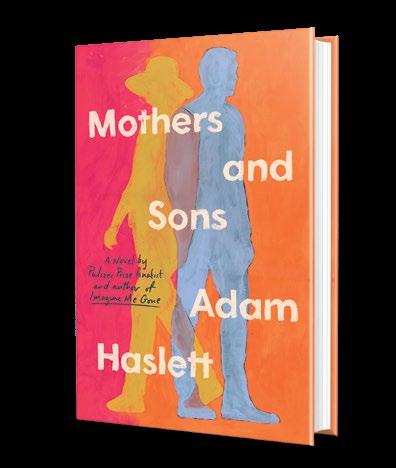
Haslett, Adam | Little, Brown | 336 pp.
$29.00 | Jan. 7, 2025 | 9780316574716
for a woman, shipwrecking her marriage and career as a pastor. They share losses, too—Peter’s father’s death from cancer and a withheld event that gives the novel its emotional payoff. It’s “practically mandatory,” Clare observes, for women to “hide in other people’s pain,” just as men like Peter are asked to never feel it.
And though the outlines of the novel suggest sentimental family-trauma fare, Haslett’s sophisticated grasp of the ways that people over-police their feelings makes it a remarkably acute and effective character study. A family-in-crisis story that keenly captures deepseated fears and regrets.
Kirkus Star
Baldacci, David | Grand Central Publishing (432 pp.) | $30.00 Nov. 12, 2024 | 9781538757901
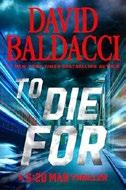
The feds must protect an accused criminal and an orphaned girl. Maybe you’ve met him before as protagonist of The 6:20 Man (2022): Ex-Army Ranger Travis Devine, who’d had the dubious fortune to tangle with “the girl on the train,” is now assigned by his homeland security boss to protect Danny Glass, who’s awaiting trial on multiple RICO charges in Washington state. Devine has what it takes: He “was a closer, snooper, fixer, investigator,” and, when necessary, a killer. These skills are on full display as the deaths of three key witnesses grind justice to a temporary halt. Glass has a 12-year-old niece, Betsy Odom, and each is the other’s only living relative—her parents recently died of an apparent drug overdose. The FBI has temporary guardianship of Betsy, who’s a handful. She tells Travis that though she’s not yet 13, she’s 28 in “life-shit years.” The financially well-heeled Glass wants to be her legal guardian with an eye to eventual adoption, but what are his real motives? And what happens to her if he’s convicted? Meanwhile, Betsy insists that her parents never touched drugs, and she begs Travis to find out how they really died. This becomes part of a mission that oozes danger. The small town of Ricketts has a woman mayor who’s full of charm on the surface, but deeply corrupt and deadly when crossed. She may be linked to a subversive group called “12/24/65,” as in 1865, when the Ku Klux Klan beast was born. Blood flows, bombs explode, and people perish, both good guys and not-so-good guys. Readers might ponder why in fiction as well as in life, it sometimes seems necessary for many to die so one may live. And what about
More brilliant work from one of world literature’s greatest writers.
THE VOYAGE HOME
the girl on the train? She’s not necessary to the plot, but she’s a fun addition as she pops in and out of the pages, occasionally leaving notes for Travis. Maybe she still wants him dead. Fast-moving excitement with a satisfying finish.
Kirkus Star
The Voyage
Barker, Pat | Doubleday (288 pp.)
$29.00 | Dec. 3, 2024 | 9780385549110
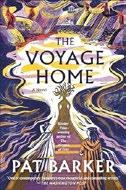
The third volume in Barker’s Trojan War series moves to Mycenae for a bloody climax. Briseis, the enslaved Trojan princess who narrated the fall of Troy and ensuing wait for the Greeks to sail home in The Silence of the Girls (2018) and The Women of Troy (2021), is replaced here by Ritsa, a fellow Trojan who was her close friend. Ritsa is charged with babysitting Cassandra, daughter of the fallen King Priam, who is now enslaved to victorious Greek commander Agamemnon and proclaims that they will be killed in Mycenae. Indeed, readers soon meet Clytemnestra—in close third-person chapters alternating with Ritsa’s slave’s-eye first person— who is plotting to revenge herself on Agamemnon for his sacrifice of their daughter, Iphigenia. But Ritsa’s master, Machaon, dismisses this idea: “Frightened? Of his wife ?...She’ll jump if he tells her to.” Ritsa, as punchy a narrator as Briseis, voices the feminist critique central to all three novels in response. “Pure reflex that, an automatic assertion
of the rights of men.” Barker’s use of blunt British vernacular to revive this ancient Greek tale remains as effective as ever. Her latest volume adds a new note to its predecessors’ grim catalogues of brutalities. It’s decidedly creepy; the palace rustles with the voices of invisible children who leave handprints and footprints that keep reappearing no matter how often they’re scrubbed off. They are the children Agamemnon’s father, Atreus, murdered and served in a pie to their father, his brother. But they are also “all the other little boys hurled to their deaths, the babies tossed into the air and caught on spears while their mothers were made to watch” as the victorious Greeks overran fallen Troy. Barker’s vision of a world shaped by violence, a key theme in all her fiction, is equal to the tragic grandeur of ancient myth, and her insistence that ordinary people’s sufferings be given equal weight with the woes of the mighty gives it a contemporary edge. More brilliant work from one of world literature’s greatest writers.
Berney, Lou | Morrow/Harper Collins (320 pp.) | $18.99 paper Nov. 5, 2024 | 9780062292483
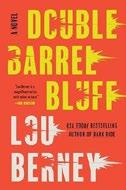
An erstwhile accomplice of the Armenian mob gets drawn into a kidnapping plot in Cambodia. Hijinks and doublecrosses ensue. From a distance, Charles Samuel “Shake” Bouchon seems to live a pretty boring life in Bloomington, Indiana. He’s a
driving instructor, mostly for older international students, and he’s settled into domestic bliss in a quiet, dog friendly neighborhood. He’s lived this “legitimate” life for a little over a year, but he’s determined to keep it up, until circumstances beyond his control— most directly represented by a huge, purple-track-suit-wearing, skull-tattoosporting Armenian—pull him back into the criminal underworld. Dikran Ghazarian wants Shake to help him find his pakhan, Lexy Ilandryan, the L.A. boss of the Armenian mob. She seems to have disappeared while on vacation in Cambodia, so, soon, the mismatched Dikran and Shake trek halfway across the globe, where they discover that Lexy has been kidnapped by a pair of criminals-for-hire who have no idea who she is. With the help of a Cambodian hippie who reads auras and may experience prophetic dreams; a local honcho—and onetime CIA contact—named Ouch; and, eventually, Shake’s wife, Gina, also reformed from the wrong side of the law, Dikran and Shake go head-to-head with a fashionista kingpin named Bjorn and then Lexy’s second-in-command, who has “more teeth than seemed possible for a single human mouth” and may or may not be on their side. There is no shortage of action, clever jibes, roughand-tumble fights, casual murders, or double-crosses in the novel; it moves smoothly and quickly, with Shake as the thoughtful, sympathetic, knowledgeable linchpin who keeps everything grounded just enough in logic and reality. The prose lacks some of Berney’s usual flair, but his characters, always on the edges of polite society, continue to plumb its gray areas and find the compromises with which they can— and sometimes must—live.
Deft, well-crafted fun: irreverent, darkly humorous, and multilayered.

Boaz, Amy | Thoth Books Berlin (346 pp.) $13.00 paper | Dec. 1, 2024 | 9783949271069

A trans person looks back on their relationship with their mother after her disappearance. Boaz’s novel opens two weeks after George’s mother, Louise, vanished from Willow, New Mexico. In the year or so before her disappearance, George and their girlfriend, Truley, had been living with Louise in her home. Cobbling together part-time jobs, the two semi-adrift 20-somethings pursued their creative pursuits while Louise, a native New Yorker and former publishing professional, toiled away at her copyediting job at the local paper. George, Louise, and Truley often spent their nights together laughing, gossiping, and drinking wine by the fire; their home may have been happy, but that happiness is fragile. Though Louise quickly bonded with Truley, she was struggling with an all-consuming crush on a young, aloof coworker—and coming to terms with George’s transition. At one point, Louise told her child: “If I can’t call you by the name I gave you at birth, then you can call me by the name I want to be called by.” The painful yet poignant relationship between the two serves as the novel’s nucleus. Jumping between the past and the present, the short vignettes can feel perplexing at times—but they also provide a cataloging of Louise’s life, which, to the novel’s credit, far outshines her disappearance. As the book comes to a close, George considers what might have happened to their mother, including, but not limited to, having had an unfortunate run-in with a violent man or jumping off a bridge during an existential onslaught. George’s last and favorite theory involves Louise forging a new life and identity—just like themself—and, most importantly, includes the two finding each other again. With this theory, Boaz beautifully renders the complicated relationship between
mothers and their children: “But I know Louise will recognize me, and I will know them anywhere.” George’s mother may be gone—for now, or for good— but their love endures.
A melancholy novel about imperfect people loving each other imperfectly.
Bollen, Christopher | Harper/ HarperCollins (256 pp.) | $30.00 Dec. 3, 2024 | 9780063378896
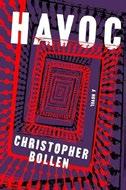
Thelma meets The Bad Seed meets The White Lotus in this Covid-19-era tale of an elderly American woman’s murderous obsession with a troubled young boy at an Egyptian hotel. The 81-year-old Maggie Burkhardt left her home in Wisconsin six years ago following the deaths of her husband and daughter. Moving from hotel to hotel, she spent five years in the Alps, where she perfected her unseemly skill at insinuating herself into people’s lives to cause the breakup of what she deems bad marriages. “I liberate people who don’t know they’re stuck,” says the widow, whose methods include planting false evidence of infidelities and relating false rumors. After both partners in one targeted marriage die—the wife by strangling, the husband by suicide— and suspicions point Maggie’s way, she escapes to Luxor and picks up where she left off. Convincing her fellow hotel guests that she is a kindly old lady, she sets her sights on a young American woman, Tess, only to find her hands full with Tess’ psychologically damaged 8-year-old, Otto. He incurs Maggie’s wrath with stunts like stealing a precious ribboned lock of her husband’s hair and pretending to be her late daughter on the phone. Taking heavy doses of antipsychotic drugs, she becomes determined to kill the boy. Guests who threaten to expose her turn up dead. Others are arrested for crimes they didn’t commit. Returning to the
setting of his gripping novel The Lost Americans (2023), Bollen takes the art of the unreliable, self-deluded narrator to new heights. Did Maggie really have a happy marriage? Did her family really die? Is she really 81? (All the physical stuff she must do would suggest someone younger.) The ending of the novel is a bit slack, leaving plot strings untied. But it’s still a wicked delight. A devious and deranged thriller.
Chizmar, Richard | Gallery Books/ Simon & Schuster (480 pp.)
$26.99 | Oct. 22, 2024 | 9781668009192

Three emotionally fragile college students head into the Appalachian wilderness to film a class project about roadside memorials.
Despite some fairly purposeful Blair Witch Project vibes and an atmosphere positively seething with menace, this slice of hillbilly horror has trouble sticking the landing. It’s a good premise, bordering on cliche: Three students at Pennsylvania’s York College are teamed up in May 1983 by their eclectic American Studies professor, Marcus Tyree, to explore a topic of their choice related to American society. Our narrator is Billy Anderson, 19, an orphan traumatized by the death of his parents in a tragic accident, leaving him to be raised by his doting Aunt Helen. Troy Carpenter is curious but anxious, rattled by the death of his little brother in a drive-by shooting. Melody Wise is the oldest of the trio at 23, but is still reeling from the death of her mother. Their collective project is “Roadside Memorials: A Study of Grief and Remembrance,” a documentary for which the students plan to investigate these memorials and interview survivors, starting with Billy’s parents and their memorial in Sudbury, Pennsylvania. Other than an abundance of accidents, their subjects seem ordinary, but the omens and totems that start appearing
are anything but. Among these are an ominous hitchhiker, a flat tire, a dead animal, and a common symbol appearing on each memorial—all escalating events that lead to bloody and unexpected consequences. At first, the setup seems a little Scooby-Doo, replete with small-town secrets, concealed identities, and the odd unmasking. Our three leads are very likeable, but their bickering can lean toward the soapoperatic. Thankfully, Chizmar, a veteran at writing pedestrian horror in the vein of his occasional co-author Stephen King, gives the story enough of a whiff of the otherworldly, complete with an evil cult, to keep readers on edge before some late-stage twists strain the book’s hard-won authenticity.
A pulpy, peek-between-your-fingers look at small-town America, powered by real grief.
Cho Nam-Joo | Trans. by Jamie Chang Liveright/Norton (224 pp.) | $16.99 paper Oct. 29, 2024 | 9781324095316

Eight stories of ordinary women living complex lives can also be seen as eight stories of complex women living ordinary lives. In these stories, set largely in Seoul, Korean women ranging in age from 10 to 80 navigate the everyday with a quiet determination to allow themselves joy. Often, the stories give the reader insight into family dynamics in the context of the larger society’s repression. In the collection’s tender opening story, “Under the Plum Tree,” the narrator’s oldest sister, Geumju, is set adrift from a life controlled by the labor of duty by Alzheimer’s disease, finally affording her time to enjoy simple pleasures. In “Runaway,” the narrator’s elderly father runs away from home in order to “start living [his] life” in the years he has left. Though his children and their mother are at first distraught, the father’s
absence allows them the space to reveal themselves to each other as fully rounded humans, rather than automatons fulfilling their familial roles. Other stories take on the foundational misogyny of a patriarchal culture more directly: In “Grown-up Girl,” a woman who self-identities as a feminist finds herself conflicted by the way her high school aged daughter stands against unwanted sexual attention. In the sublime “Night of Aurora,” an aging woman struggles with her aversion to being asked to help raise her grandson as society expects, while her daughter struggles with her own aversion to quitting work to dedicate herself solely to motherhood. Throughout the collection floats the specter of Miss Kim—a model for the possibilities of Korean womanhood who is sometimes an icon for the rights of women to live self-determined lives, sometimes a literal incarnation of the invisibility of women’s labor, and sometimes a foil for the narrator’s own complicated feelings about gender roles, duty, aging, and the relationships between mothers and daughters. Spare but never stark, weary but never despairing, Cho’s trim prose examines the under-seen world of women with a keen appreciation for all the possibilities for their lives—including the ones they themselves may not be able to imagine. This subtle collection is elegant, honest, and empowering.
Cooper, Helen | Putnam (352 pp.)
$19.00 paper | Dec. 3, 2024 | 9780593719930
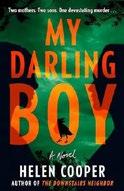
Mothers and sons are mired in a quicksand of deception in this tale of psychological suspense set in rural England. The title of Cooper’s fourth novel appears to give a nod to happy families ensconced in idyllic relationships, but it quickly becomes apparent that it’s just another of the book’s intriguing misdirections. Cooper builds the scaffolding of this
secret-packed novel on a harrowing event in which either “a push or a punch” during a scuffle in a pub leaves a young man dead and another sent to prison. Left to pick up the pieces following this tragedy are the men’s mothers. Chrissy Dean and Alice Lowe, once the closest of friends, are now irrevocably estranged—yet always on each other’s minds. Alice lost her son, Robbie, and she’s leading a campaign to oust Chrissy from the insulated village of Cromley. What Robbie and Chrissy’s son, Leo, fought over is one of the mysteries running through the book, and the answer becomes more urgent when Leo is paroled and immediately goes missing. Into this already compelling storyline, Cooper drops other plot-driving grenades: Who is Georgie Fallows, a village newcomer who immediately embeds herself in the Deans’ and Lowes’ lives? What secrets is Alice’s brother, Peter, hiding, and what hold does an older inmate have over Leo during his time in prison? As the race to find Leo pushes forward, the snowballing secrets strangling the two families begin to unravel. In a vertigo-inducing denouement of Hitchcock-ian proportions, “a push or a punch” seems to come full circle. Cooper, with her keen understanding of family dynamics, pushes her characters and her readers to wonder how far they would go to protect themselves and their children. This pitch-perfect story about families and secrets starts with a punch and ends with a bang.
DeLozier, Elizabeth | Dutton (320 pp.)
$29.00 | Nov. 5, 2024 | 9780593475034

A young midwife is called upon to save a pope—and a city—in this work of historical fiction. At age 17, Eleanore Blanchet is following in her late mother’s footsteps, working as a midwife and herbalist. She lives with her twin sister, Margot, who is
Gilb is a master of stories about people who are reinventing themselves.
about to marry a rich man, and their father, who works as a papal notary at Pope Clement VI’s extravagant palace in their city of Avignon. The year is 1347, and the city buzzes with rumors about a plague sweeping through Europe, as well as the news that the imperious Queen Joanna of Naples may soon be a resident of the city. Elea, as she’s called, is an anomaly for a girl of her time, literate in two languages. She takes her work seriously and has misgivings about her sister’s marriage that sound more modern than medieval. In historical novels, characters may have anachronistic attitudes and experiences, and that can work with the right grounding. This novel, though, overdoes it. Early in the story, Elea goes to the woods to gather plants and runs into a well-dressed man who introduces himself as Guigo. He begs her to sell him the hawthorn berries she’s just gathered so he can treat an important patient. When she describes the tincture she will make with them for her father, Guigo sweeps her off to his laboratory—and she realizes he is the physician to Clement. He declares her brilliant before he even knows whether the tincture will work and then, in a blink, she’s in the pope’s inner chamber giving him a hands-on examination. A powerful 14th-century pope dropping trou in front of an unknown teenage girl more than strains credibility, and the plot takes more improbable twists as it progresses. There are some interesting minor characters and somber parallels between the effects of the plague and the violent social fractures it provokes in the 14th century and today, but the unlikely plot weakens the book. An implausible plot and main character keep this historical novel from taking off.
Gilb, Dagoberto | City Lights (192 pp.) | $16.95 paper Oct. 1, 2024 | 9780872869318
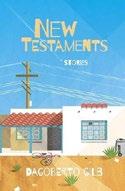
A suite of stories of life on the U.S.–Mexico border.
“I didn’t believe he was telling the whole truth, but I didn’t question him.” Gilb is a master of stories about people who are constantly reinventing themselves, always trying to escape one delicate dilemma or another. Indeed, the title notwithstanding, most of the stories here involve tribulations worthy of Job, if not a few encounters with Delilah, his actors working-class men and women who are running out of options on the hard paths they’ve followed. One, met in passing, is a should-be retiree in Mexico City who finds himself old and without a pension. He sighs, “I never thought....” His interlocutor, a Chicano visitor, says, enigmatically, “I’m lucky...because I didn’t either.” Another, working in a laundry, falls in love with a woman married to a very scary, if momentarily absent, man from across the line.
Doubting his self-worth, he recalls how little he has been valued by others: “I didn’t hate school, I especially didn’t hate learning. The main thing they taught me, yelling into my face, was that I was wasting their time and money.” Many of Gilb’s supporting characters have done time; many live in the wake of tragedies of all kinds. These things are matter-offact realities, as are dreams of money, fame, even just getting out of town. Gilb’s prose is often a lively Spanglish: “I was la conecta in a big music scene
world of marijuanos in Texas, Denver, LA even,” says one dreamer. “This was how mota got to everyone back in the day.” It all makes for a memorable chronicle of people caught between nations, classes, and cultures, all doing their best just to get by. A well-crafted summoning of people living ordinary lives on la frontera, in all their sorrow and splendor.
Groff, Lauren with Heidi Pitlor Mariner Books (400 pp.) | $18.99 paper Oct. 22, 2024 | 9780063275959

Pitlor ushers in her final installment as series editor of this long-running staple showcasing the year in short fiction. Of all the kids at the literary lunch table, the anthology might have it the hardest. Wearing plaid with stripes, unpacking the random items in its lunch box—it’s hard for a cohesive personality to shine through, unlike those cool-kid single-author collections. But if readers are prepared for eclecticism—and since Best American Short Stories was established in 1915, we must be—these 20 stories have something for everyone. Guest edited by Groff, a seven-time Best American author, the collection includes some nods to short story royalty: Jhumpa Lahiri, Lori Ostlund, the late Laurie Colwin, and Jim Shepard are all represented. But as both Pitlor and Groff discuss in their introductions, Groff sent back Pitlor’s initial batch of stories asking for
something “rawer, meaner, spikier”— stories with their own “weird logic.” (Groff’s description of this aesthetic preference lands better than her diatribe against the first-person point of view, which precedes 12 of 20 stories in first-person.) In finding weird, spiky stories, Groff leans hard—and often thrillingly—on early-career writers. There is Katherine Damm’s sparkling and funny “The Happiest Day of Your Life,” featuring a young husband freewheeling into drunkenness at a wedding reception for his wife’s ex-boyfriend. In Suzanne Wang’s inventive “Mall of America,” AI narrates a tale of corporate (and all-too-human) woe when an elderly man spends time after hours in the mall’s arcade. Madeline Ffitch’s “Seeing Through Maps” recounts the tense relationship between two neighbors with a complicated history. In Steven Duong’s “Dorchester,” a young writer has a poem go viral after an anti-Asian hate crime. All hits and no skips is a tall order, but this strong, solid compilation is well worth a short story lover’s time.
Harper, Jordan | Mulholland Books/ Little, Brown (304 pp.) | $18.99 paper Nov. 19, 2024 | 9780316581400
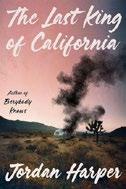
Young gang members find their sense of identity within a criminal family. Familiarity with She Rides Shotgun (2017), Harper’s Edgar Award–winning debut about gang warfare in California’s
Harper finds his characters’ humanity in the context of a pitiless world.
Inland Empire, is not necessary to follow this sequel. What is necessary is a strong stomach for graphic violence and toxic masculinity summed up by the Combine family’s mantra, “Blood is love.” Initiation into the family involves receiving a heart tattoo that combines ink with the blood of a murdered Combine member. At age 7, Luke Crosswhite witnessed his father, Bobby, the leader of the Combine, kick a man to death in a bowling alley parking lot. Bobby went to prison (where he remains), and Luke was sent to Colorado to live with his long-absent mother’s law-abiding relatives. His uncle Del is running the Combine for Bobby—think theft and drug-dealing with occasional gang warfare thrown in—when 19-year-old Luke returns as the unlikely heir apparent, a college dropout still struggling with debilitating flashbacks to his father’s crime. Luke finds himself torn. His basic decency and sensitivity are challenged by the adrenaline rush that acts of extreme machismo offer. Affection for a lovable pit bull named Manson (the novel’s only joke) plays a central role in the battle within his soul, but the pull of being part of a family, however defective, is hard for the lonely outsider to resist. In contrast, Luke’s childhood playmate Callie, now a small-time drug dealer, has always been part of the family’s operations. She yearns to escape with her drugged-out, sweet-natured boyfriend to a life she imagines outside the gang. As Luke and Callie make fateful decisions, the larger, scarier gang Aryan Steel threatens the Combine’s autonomy while California wildfires rage beyond human control. A novel in which needless deaths pile up somehow manages to be heartbreaking yet oddly hopeful, even a tad sentimental. With raw eloquence, Harper finds his characters’ humanity in the context of a mostly pitiless world.

For more by Jordan Harper, visit Kirkus online.
Kirkus Star
The Blue Hour
Hawkins, Paula | Mariner Books (320 pp.)
$30.00 | Oct. 29, 2024 | 9780063396524
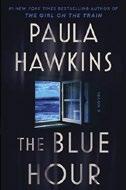
The discovery that a revered artist’s sculpture contains a human bone sets off scandal and violence.
Art historian
James Becker has what seems like a sweet deal. He’s the curator of the collection of the Fairburn Foundation, housed at a stately home owned by the Lennox family: Sebastian, Becker’s best friend, and his bitter mother, Lady Emmeline. Becker’s wife, Helena, was Sebastian’s fiancee first, but they’re all very civilized about it and happily awaiting the birth of her baby. The centerpiece of the Fairburn collection is works by the late Vanessa Chapman, an artist about whom Becker wrote his thesis, and with whom he is somewhat obsessed. Partly, it’s because of her great talent, but she was also a glamorous figure, a beauty who, as she became successful, sequestered herself on an isolated Scottish tidal island called Eris. She had a dark side—lots of stormy relationships, plus a philandering mooch of a husband who vanished without a trace a few decades ago. Her reputation, though, has risen after her death—so much so that the Fairburn has loaned some of her works to the Tate Modern. That’s where a forensic anthropologist sees one of her sculptures, made of found objects that include what’s described as an animal bone. The scientist is sure the bone is human, and soon Becker finds himself scrambling to prevent scandal. Vanessa willed her works and papers to the foundation, but some of them are still on Eris, guarded by her longtime friend Grace Haswell. A retired doctor, Grace lived with Vanessa off and on over the years and nursed her through her fatal cancer. It was a surprise when Vanessa left her estate not to Grace but to Douglas Lennox, Emmeline’s husband and Sebastian’s father. Douglas was Vanessa’s gallerist and lover, but the
two had a nasty falling-out. Sebastian is so frustrated by Grace’s refusal to turn over all of the bequest that he’s ready to sue her, but Becker believes he can negotiate, so off to the the island he goes. He finds far more treachery and shocking secrets than he expected, past and present alike. Hawkins keeps her cast tight, her wild setting ominous, and her plot moving fast.
This propulsive thriller twists into the dark and bloody underbelly of the world of fine art.
The Pushcart Prize XLIX: Best of the Small Presses 2025 Edition
Henderson, Bill with Pushcart Prize editors | Pushcart (560 pp.) | $38.00 Dec. 3, 2024 | 9798985469752

The famed literary annual stares 50 in the face.
The Pushcart anthology has always been admirably open to comers from all backgrounds, and if more of the contributors here are connected to creative writing departments than not, that’s just the way of the writing world these days. A noteworthy exception, Ann Chinnis—an emergency physician—turns in a richly metaphorical poem encouraging young women to “Ignore [their] brother’s laughter / Then go find a pony.” The late Charles Simic knew where he was going, hoping, in a short lyric, “To place one last chip / On this dark night’s / Spinning roulette wheel.” Death is a constant preoccupation of many writers here, as when Nishanth Injam delivers an affecting portrait of a mother, gifted at finding lost things, who leaves her child at a loss for direction when she dies: “Lost somewhere in her trachea: a phrase that would tell me how to live this life.” On matters of life and death, two pieces are especially perceptive. One, a brilliant essay in the form of a set of definitions, finds Abby Manzella
writing of the demise of a Pennsylvania coal town, while in another essay Leslie Jill Patterson hauntingly describes the all-too-common American way of death by assault rifle, with bullets that “broke all the bones in the middle of her face, shredded her brain, tore through her abdomen, collapsed her right lung, and splintered her spinal cord.” Another highlight of many comes when the elegant Joyce Carol Oates swears like a stevedore as she peeks into a Carveresque working-class home: “Mick had a temper quick to flare up as a struck match, can’t blame Mick on his feet eight hours of the Goddamned day, if overtime as many as ten, twelve fuckin hours at a shit-job he hated where he had to wear a fuckin olive-gray uniform like a fuckin janitor.”
As ever, an invaluable snapshot of the small-press scene.
Hopson, Carole | Henry Holt (432 pp.)
$29.99 | Aug. 20, 2024 | 9781250347213

A woman from meager beginnings becomes the first Black female airplane pilot in this lightly fictionalized account.
Bessie Coleman was born into a Texas sharecropping family in 1892, the 10th of 13 children of a woman born in slavery. When she learned about the Wright brothers as a child, thoughts of flying began to invade her daydreams, and she became determined to fly herself one day. An opening section describes a disastrous 1923 crash that leads Bessie to set down the story of her life. Narrating in the first person, she takes readers with her to Chicago in 1915, where she lives with her brother while trying to find a way to become a pilot. But no American flight schools will take her, so she moves to France. Her training there is perhaps the novel’s best part, as we watch
The award-winning novelist on original inspirations, wandering narratives, and perfect endings.
BY MARION WINIK
SINCE 1975, when she was honored for her poetry by the American Academy of Poets, Louise Erdrich has won every major U.S. literary prize: the National Book Critics Circle Award for Love Medicine (1984) and LaRose (2016), the National Book Award for The Round House (2012), the Pulitzer Prize for The Night Watchman (2020), and a slew of others. Her 19th novel, The Mighty Red (Harper/HarperCollins, Oct. 1), has just been selected as a finalist for this year’s Kirkus Prize.
At the center of The Mighty Red is a teenage love triangle, smoldering with the particular intensity of adolescent romance. Gary Geist, son of the wealthiest family in a small town in North Dakota’s Red River Valley, is in love with Kismet Poe, daughter of parents struggling to stay above the poverty line. Her mother, Crystal, works the graveyard shift hauling beets for the Geist family’s sugar factory.
While Kismet can’t bring herself to ignore Gary’s desperate certainty about their connection, or his sudden marriage proposal, she’s long been crazy about Hugo Dumach, a boy genius who dropped out of school after being bullied in ninth grade. Since then, he’s built his own computer out of spare parts and worked at his mother’s bookstore, Bev’s Bookery. He plans to leave town, get a job in the oil fields, make his fortune, and return to claim Kismet as his bride.
The weave of the novel deftly incorporates many characters and subplots. The central love triangle is embedded in longstanding relationships among the three families, and each of the three mothers—Crystal Poe, Winnie Geist, and Bev Dumach—has a profound connection to her child. The three see each other
I love best those times when you don’t want a book to end. You’ve willingly surrendered yourself to the narrative.

at book club meetings sponsored by Bev’s store, which is currently reading Eat, Pray, Love— at Hugo’s suggestion.
And there’s more, from the adventures of a bank robber named the Cutie Pie Bandit to the grief and anger surrounding a recent tragedy involving Gary and his high school friends, whose details are withheld until the end of the book. As our reviewer put it in a starred review: “In this tender and capacious story, love and tragedy mingle along the river and into the world.”
Erdrich answered our questions over email; the exchange has been edited for length and clarity.
What was the original inspiration for The Mighty Red?
I was originally going to write about the 2011 lockout when union members working at Crystal Sugar, also in the Red River Valley, went on strike. It was a brutal, hard-fought situation that didn’t end for almost three years. The original title was Crystal. Later on, I shifted the focus of the book and set it in 2008. Crystal was still the title until the last few drafts.
The strike is not even in the book anymore, Crystal is the name of one of the main characters, and the title is The Mighty Red! That’s the creative process for you, I guess. The first scene of the book seems to introduce every plotline and theme that’s to come. I reread it several times, marveling. Did you actually write that scene first?
I wrote the opening chapter when I was desperate for the book to come together. Quite late in the writing, I realized that the book wandered. I needed a magnetic charge to bring the plot together. So I went through the manuscript to find who had the magnetism and gave Crystal the hauling job. Then, as I wrote about Crystal, I saw my handwritten note that Gary had a guardian angel. So I put in a call-in show where Gary’s mother phones in to talk about guardian angels, and that ended up setting up the rest of the story.
One of the themes in the book is the importance of taking responsibility for
the harm one has done as a first step to any kind of healing. So many characters have this issue in play; some make progress and some don’t. It’s always a struggle to admit culpability, especially for a tragedy you might have prevented. But you’ll be dragged down the road by your guilty leg tied to the bumper of your sin anyway, so you might as well give up. If you do your best to help the wronged person—even though you believe you didn’t cause the wrong—you’ll feel mysteriously better. If it turns out you really weren’t to blame, you’ll have the gratification of a noble act. If you really were to blame after all, you’ve saved yourself the road rash.
This is a book about time and money, anchored in the particular financial moment of 2008–2009. Why that time period?
There are a host of reasons I set the book in 2008–2009. It was a year of reckoning that came as a result of Ronald Reagan’s enthusiasm for deregulation back in the ’80s. He undid financial protections that had kept our markets stable since FDR’s time. Those protections would have disallowed shady and risky mortgage investments by leaders of financial institutions. The $150 billion cleanup that saved our banks seemed unfair to those who lost their homes and savings, which is why I wrote a bank robber into the book.
Gardening is important to several of the characters. Are you a gardener? I don’t know if what I do is gardening. I planted a clover lawn for rabbits so they wouldn’t eat my herbs. But I also planted the clover so I could watch rabbits pop above the clover when they binky [Ed.: A binky is a rabbit happy dance]. I planted a few tomatoes and some Hidatsa squash. Apparently, bumblebees wait out rainstorms in the squash blossoms.
The flash forward at the end of the book is so satisfying, it feels like a gift to the reader. Do you have some thoughts about what you like and don’t like as far as endings go?
Yes, I gave the book a series of endings because I do like endings so much. Endings, beginnings, titles, and
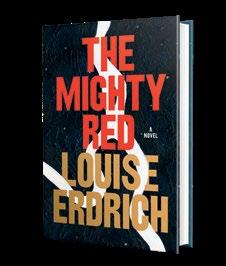
research—these are my favorites. I researched everything in the book and, as with every book, I have a whole other book of background on each character and on the facts of farming. It would be overwhelming to include it all, but my hope is that the reader senses the unsaid, the held-back, the historical lightness or weight in the details.
I love best those times when you don’t want a book to end. You’ve willingly surrendered yourself to the narrative, you’re under the spell of the book, and now it is going to be over. So you read as slowly as you can, putting down the book to make it last, but still you cannot lose the thread, so you pick it up. Then all of a sudden you rush to the end because you need it to end. You understand you can no longer live in that alternate world.
The endings I don’t like are the ones that go on and on analyzing the characters, as though a psychoanalyst is breaking a professional boundary and giving you a cascade of therapeutic resolution. Often a writer loses confidence in the characters to hold the ending and begins to philosophize on, say, art or trauma, not trusting that silence will say more. Not giving the reader just enough special blankness to use any way they wish. This is why, if I am not satisfied with an ending, I return to the manuscript and cut back to the place where it says more to say nothing.
Marion Winik hosts the NPR podcast The Weekly Reader.
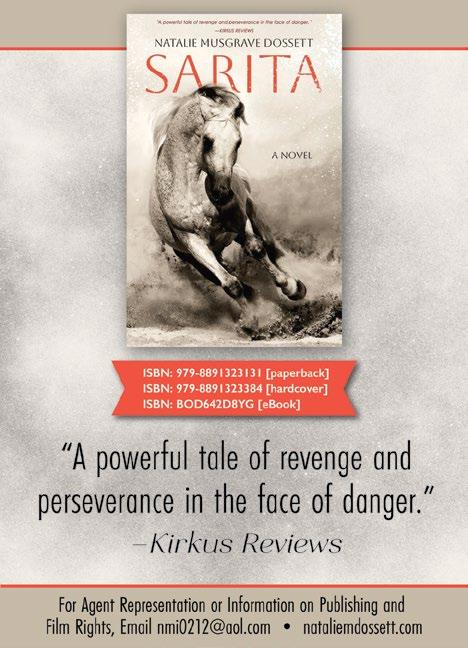

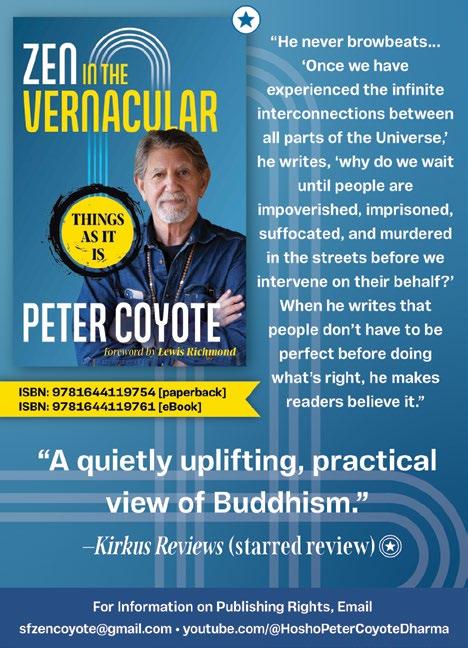

Stuart C.

Kei Ishikawa will direct an adaptation of Kazuo Ishiguro’s debut novel.
Nobel Prize winner Kazuo Ishiguro’s A Pale View of Hills is headed to the big screen, Deadline reports.
Ishiguro’s first novel, published in 1982, follows Etsuko, a Japanese woman living in the U.K., reeling from the suicide of her daughter, and thinking back to her life in post–World War II Nagasaki. A critic for Kirkus called the novel “evocative but oppressively unfocused fiction.”
The film is being developed by the production companies Bunbuku and Number 9 Films. Kei Ishikawa ( A Man) will write and direct, with Ishiguro on board as an executive producer and Suzu Hirose ( A Morning of Farewell ) set to star.
Ishiguro’s novels The Remains of the Day and Never Let Me Go have
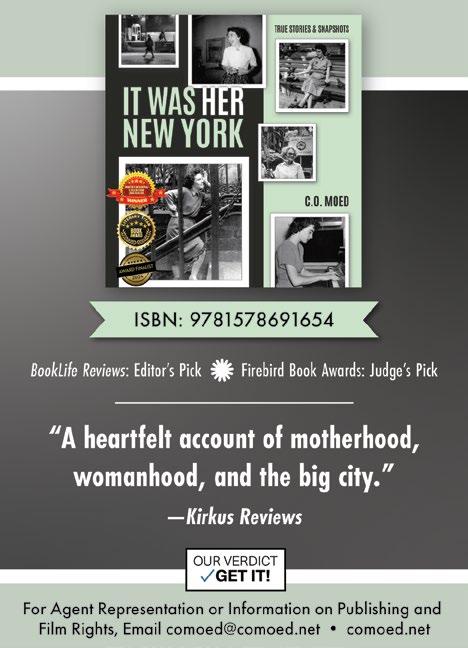
previously been adapted into films, and movie versions of two other novels, The Buried Giant and Klara and the Sun, are in the works.
Ishiguro told Deadline that he is “a great admirer” of director Ishikawa.
“He has a masterly command over the language of cinema and draws superbly nuanced performances from his actors,” he said. “His fine screenplay, which I’ve read with fascination, is mysterious and moving. The story itself concerns the yearnings, hopes and fears of the generation that emerged in a rapidly

changing Japan after the horrors of World War II and the atomic bombings. How appropriate, then, that our movie will be released as we mark the 80th anniversary of the end of those terrible events whose shadows continue to fall over us all today.”
—MICHAEL SCHAUB


Coleman grow from an enthusiastic young woman to a talented pilot. Hopson is a pilot herself, and her knowledge is evident in the flying scenes—perhaps a bit too evident for the layperson. It’s a pleasure to follow Bessie on her life’s journey right up to the night before her final flight in 1926, even though it’s delineated with imperfect craftsmanship. Hopson stuffs her story to the brim with historical details and anecdotes, which are interesting in and of themselves but aren’t well integrated into the narrative flow. Characters frequently provide background information without any setup or any credible reason for volunteering it. If the material were less compelling, the novel would be a slog, but even strained prose and weak similes can’t detract from the gripping saga of a remarkable woman. A fascinating tale competently though awkwardly told.
Johansen, Iris | Grand Central Publishing (368 pp.) | $30.00 Sept. 3, 2024 | 9781538726419

Johansen’s latest standalone revolves and revolves around a fight over a fabulous treasure that’s personal for everyone involved.
Jack Harlan may be a billionaire who’s won two Nobel Prizes for developing technologies that will help all humanity, but he won’t be happy until he gets revenge on Joseph Taylor, the former Harvard professor who wormed his way into the confidence of Harlan’s brother, Colin, stole his invaluable encryption algorithm, and killed him. Taylor, for his part, won’t rest until he avenges himself on the billionaire, who managed to shoot him in the stomach before he escaped. When Taylor blows up Harlan’s new Parisian museum, Kira Drake and her explosive-sniffing golden retriever, Mack, are called to
Johansen’s latest revolves around a fight over a fabulous treasure.
ON THE HUNT
the scene, and it’s her turn to get drawn into the battle. Instead of resting on her laurels after splitting a fortune she’s discovered with her friend Jabir Kalim, an Egyptian horse breeder, Drake is drawn to Harlan, who wants her to join in his hunt for Taylor. Nesting on a remote island with Harlan—and Colin’s 15-year-old daughter, Fiona, whose loss of her father has given her a personal stake—Drake waits for Taylor to make a move so that she can pounce on him. That’s not exactly how it works out, though, and soon Drake and Taylor have personal motives of their own for getting the best of, humiliating, or killing each other, and incidentally getting control of that treasure. The story is plotted like an upscale video game, with enough violent, high-stakes, low-impact encounters and reversals to make you wonder if you’re ever going to make it to the end, or even to the next level. A perfectly good time-killer, best for fans who don’t take it too seriously, or even a little seriously.
Kauffman, Rebecca | Counterpoint (224 pp.)
$26.00 | Jan. 7, 2025 | 9781640096714
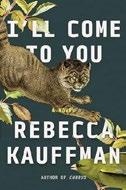
Kauffman tells the story of an extended family during times of transition and yearning. This quiet novel about the joys and anguishes of family relationships starts with an awkward dinner in January, 1995, between two divorced people who don’t seem to hit it off. Ellen and
Gary’s bad date sets off a chain of vignettes that encompasses Ellen’s son, Paul; his wife, Corinne; their babyto-be; and Corinne’s family over the course of a year. By 50 pages in, readers have met the wide cast of characters, learned what each person is hoping for, and how powerless or inadequate each of them feels. Every chapter is named for the month, ending in December. It’s not clear why the book is set in 1995 except that common use of cell phones could have taken the tension out of a few key scenes, and no specific cultural or historical moments are referenced. Kauffman takes time to explore the inner lives of her characters, some more than others, and each character’s vulnerabilities are made clear through the compassionate narration. Corinne’s brother, a car salesman, uses cash left over from a failed bachelor party to paper over the awkwardness of a career-day speech that embarrasses his sons. In a heartbreaking scene, Corinne’s mother, Janet, attempts to hide her husband’s dwindling memory with Just For Men hair dye. Physical injury and a missed baby shower ensue. Throughout, the characters are grasping at what they hold dear, fighting insecurities and jealousies that coexist with desperate love and hope. Kauffman sets a scene that ultimately allows for generosity and togetherness. Thoughtful characterization and light humor make for a pleasant, if not gripping, novel.

Majdalani, Charif | Trans. by Ruth Diver
Other Press (400 pp.) | $18.99 paper
Dec. 3, 2024 | 9781635423402

Multigenerational novel of life in a changing Lebanon. “This is not the Wild West,” declares the narrator of Beirut writer Majdalani’s novel, originally published in French in 2005. But it is, in a way. At the end of the 19th century, paterfamilias Wakim Nassar and his younger brother Selim arrive in rural Mount Lebanon, “at the edge of the mulberry groves of Ayn Chir,” like what they see, and begin to settle down. They have left home, it seems, because of some unspecified transgression: “a simple brawl after a game of dominoes,” or perhaps “just something to do with women.” Wakim soon has a vision: He envisions an empire of orange trees. Although “the two men who have just arrived on horseback are not cowboys,” it is indeed the Wild West: Bedouins squat on Wakim’s land, insisting on ancestral rights to the well that now waters his orchards, and Wakim finds it necessary to recruit a contingent of fighters—in that happy earlier Lebanon, made up of a mix of Muslims and Christians that “resembles the ride of the Magnificent Seven”—to chase the Bedouins away. Having done so, Wakim is now ready to build the first two-story house in the village, the Big House, even as World War I breaks out and the ruling Ottomans find themselves on the way to history’s dustheap. Majdalani’s novel plays out against a broad sweep of history, when Turkish rule gives way to French: The only constant is the passing of generations and the slow crumbling of the Big House—but happily, with the promise of restoration, for like the rest of poor battered Lebanon, “this is where everything must soon begin all over again.”
Deliberately paced and carefully written: a memorable evocation of a distant but not irrecoverable time.
Margolin, Phillip | Minotaur (304 pp.)
$29.00 | Nov. 5, 2024 | 9781250885821

After an unusually bumpy ride, an unprepossessing Portland lawyer comes into his own.
Charlie Webb was a mediocre student who graduated from a third-tier law school and now runs a modest practice. He’s exactly the sort of nothing-burger attorney you’d expect the court to appoint to represent Lawrence Weiss, who calls himself Guido Sabatini and tells everyone he’s the reincarnation of an Italian Renaissance painter. Weiss/ Sabatini has been arrested after breaking into Gretchen Hall’s restaurant, La Bella Roma, to steal back the painting he sold her for $500 because he’s incensed to hear that it’s stashed away in her office instead of hanging in the dining room for everyone to enjoy. Charlie quickly negotiates a deal that will set his client free if he returns the painting. But the case is more complicated than he realizes, for in addition to reclaiming his painting, Weiss, or Sabatini, also opened Gretchen’s safe and helped himself to a thumb drive he thought might be interesting. Since the drive turns out to contain information that links Gretchen to a dastardly series of crimes, the stakes of this insignificant case rise exponentially. And that’s all before a shooting that will force a very unwilling Charlie to defend his first client, who’s now charged with murder. Margolin deals out the complications as deftly as a card shark, and if the revelation of the actual culprit, whose identity is the least surprising feature of the story, seems to come unduly early, don’t worry: He has plenty more tricks up his sleeve.
An inventive legal thriller that manages to spend remarkably little time in the courtroom.
Kirkus Star
Mezrich, Ben | Grand Central Publishing (384 pp.) | $30.00 Oct. 8, 2024 | 9781538754672
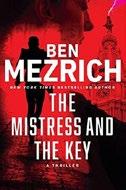
A lchemy stages a comeback in this fast-moving modernday thriller. In Philadelphia, a construction supervisor inspects a large underground space beneath a worksite and finds a mid-18thcentury laboratory filled with beakers, oil lamps, hand cranks—and his two dead co-workers sitting in chairs. Then he’s attacked and killed by a man looking for an engraving of a kite and a key. Thus begins this oddball thriller whose characters seek a philosopher’s stone that will turn lead into gold. Mezrich loads the text with historical references to the likes of Paul Revere, Ben Franklin, Mozart, and Catharine Ray, one of Ben’s actual lady friends. He also offers new twists on the stories of the Liberty Bell and Franklin’s famous experiment with a kite and a key. Present-day protagonists Nick Patterson and Hailey Gordon are in Boston on the run from the law, suspects in a string of art thefts including the big 1990 heist at the Gardner Museum. Nick is a nonviolent ex-con who gets his gunshot wound stitched up in the basement of a seedy dentist and later survives an encounter with the humongous Tyrannosaurus rex skeleton in the Boston Museum of Science. Hailey faked her high-school records to gain admission to MIT and excelled there as a grad student in applied math while she paid her bills by counting cards. In the opposite corner is the evil La Nadie—Spanish for “The Nobody”—who looks so ordinary that no one notices her until it’s too late. She works for the Family, which has ambitions both dastardly and grandiose. The frequent twists in this zany and well-researched story will keep the reader entertained and informed. If you’ve ever lain awake wondering about the Statue of
Liberty’s innards, or how many rivets Gustave Eiffel used in the construction of his eponymous iron tower in Paris, or how a particular Mozart composition looks on an oscilloscope, Mezrich puts those and many more questions to rest. The ending hints at a sequel, which would be most welcome. Light, quirky, and funny.
Oates, Joyce Carol | Mysterious Press (288 pp.)
$26.95 | Nov. 5, 2024 | 9781613165577

T hirteen stories—12 previously published in magazines—from the reigning monarch of neogothic creepy-crawlies. Despite the collection’s subtitle and its publication by the Mysterious Press, none of these tales is a traditional mystery, and most are suspenseful only in the broad sense that all effective fiction is. The common thread is dysfunctional couples. The new lovers in the title story—which opens the book— embark on a hike that’s bound to end badly. The patient in “The Phlebotomist” is pressed ever more disturbingly by the man who takes her blood. The widow in “The Heiress. The Hireling” dreams of a man coming for her. The husband in “Weekday” is so self-absorbed that he treats everything his wife says as a personal intrusion. The wife in “Bone Marrow Donor” resolves to go through a painful procedure to benefit her husband. The together-forever couple in “Mick & Minn” turn out to be less than ideal foster parents. The new wife in “Late Love” is troubled by the bad dreams of her husband, who insists he’s not having any. And the final story, “The Siren: 1999,” circles back to Flint Kill Creek for a chilling coda. Other couples are less obvious: the narrator and the mother he visits in “***” in a desperate attempt to find out why his
A vibrant portrait of a modern family shaped by a significant missing piece.
calendar has marked June 11 as so important; the discarded and vengeful friend who stalks her more successful ex-buddy in “Friend of My Heart”; the woman whose holiday visit to her mother in “Happy Christmas” is curdled by mom’s new boyfriend; the heroine of “The Nice Girl” who’s hopelessly in thrall to the needs of her bipolar older sister. They’re all a mess in this anthology of folies à deux. Fever dreams for readers with a taste for freak shows that just might be about them.
Reich, Tova | Seven Stories (256 pp.)
$19.95 paper | Oct. 29, 2024 | 9781644214213

Sacred cows of all sorts are skewered by Reich in a broad satire of contemporary mores.
Gershon Gordon, a “world famous literary powerhouse and public intellectual,” is a resident at Camp Jeff, a reeducation center for those who have found themselves implicated by the #MeToo movement—or caught in the hashtag, as Reich wryly puts it. The camp is named after its benefactor, the “good” Jeffrey Epstein, a cosmetics tycoon who refuses to let his name be ruined by the infamous bearer of the same name. Gershon’s own name is a refinement of his given name, George Gordon, also the name of Lord Byron as well as a Protestant who led riots against Catholics mentioned in Dickens. Slippery nomenclature is just one of many verbal sleights of hand Reich plays in
her densely packed narrative of Gershon’s attempts to game the systems at Camp Jeff for his own purposes. The primary therapeutic method at Camp Jeff is Zoyaroyan Psychoempathy—named after one of at least three Zoyas playing a part in the novel—which allows Reich to take aim not only at sexual predators but at purveyors of sketchy self-help models. As the madcap plot unfolds, Reich explores themes of antisemitism, Jewish culture in America, and misogyny. At several points along the way to the novel’s apocalyptic resolution, she takes a deep dive into Talmudic studies, too. With the book taking place just before and during the earliest days of the Covid-19 pandemic, the mass hysteria and uncertainty surrounding that disruption comports nicely with the general tone of upheaval as old rules give way to the new. Stereotypes of many sorts—the stern nurse, the mousy female academic, the pederast priest— are present in the cast of characters Reich uses to make her point. Reich comically airs out many grievances.
Rieger, Susan | Dial Press (336 pp.)
$29.00 | Oct. 29, 2024 | 9780525512493
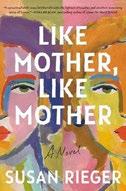
A vibrant portrait of a modern family shaped by a significant missing piece.
Rieger starts her latest with the untimely death of her powerhouse central character: Lila Pereira, the recently retired
executive editor of a major Washington newspaper. Among those left with regrets is her youngest daughter, Grace, who recently published a novel that was a fictionalized version of Lila’s life, including more than one troublesome variation from the official story. Whereas Lila’s violently abusive father, Aldo, told his children that their mother, Zelda, died in the mental institution he packed her off to when Lila was 2, in Grace’s version, “Zelina” didn’t die, but escaped to start another life. Grace has also managed to wound her father, Joe, by giving the fictional mother a long-running affair with a colleague. There’s one thing they all agree on, though: The IRL Lila was a washout as a mother, completely and explicitly leaving the parenting to Joe while she pursued her career. She had grown up fine without a mother; why shouldn’t they? The story ping-pongs between past and present to develop these themes, with brisk storytelling and sharp dialogue making the pages fly. Rieger manages a very large cast without undue confusion: In addition to three generations of Lila and Joe’s family, Grace’s best friend, Ruth, is at the center of another group of characters. As in her previous book, The Heirs (2017), DNA testing eventually plays a key role. Fans of Cynthia D’Aprix Sweeney’s The Nest , Jenny Jackson’s Pineapple Street , and Taffy Brodesser-Akner’s Long Island Compromise will enjoy the complex interaction of sibling relationships, inherited money, and inherited trauma, and like the authors of those books, Rieger doesn’t let the darker parts of her story get in the way of her vivacious storytelling. Both snappy and sprawling, this psychologically sharp novel gets the details right on culture and politics, too. A fun read.

Sandlin, Lisa | Little, Brown (320 pp.)
$28.00 | Dec. 3, 2024 | 9780316578004
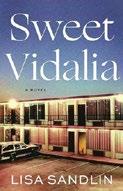
A recent widow copes with a surprising new life in Sandlin’s buoyant latest, set in 1964 in a small Texas town. When railroad man Robert Kratke unexpectedly dies of a heart attack, Eliza, his wife of 30 years, discovers that he had been living a double life, with another wife and family on the other side of town, and that the savings she thought they had have vanished. Reluctant to burden her children by moving in with them, she rents out their house— which she can’t sell, because the other wife has put a lien on it—and moves into an efficiency in the Sweet Vidalia Residence Inn, a motel populated mostly by students and others in their early 20s. With no work experience and three years before she will be eligible for her husband’s Social Security benefits, she enrolls in business school and finds she has an aptitude for the material. As she gets to know her neighbors and fellow students and finds an unlikely business opportunity, she evolves from a “preparer” who “dislike[s] suspense” to someone who’s delighted to realize that her “life is lively.” Despite a somewhat erratic plot, in which Sandlin introduces new characters and dilemmas at a brisk pace without resolving all of them, the novel has a nostalgic charm, and it’s impossible not to cheer for Eliza and the members of her motley tribe. Sandlin tempers the more melodramatic elements with quirky
humor, and she has a gift for summing up a character in a sentence or two, like the classmate with “doll-baby eyelashes” and a “contrary laugh, made up of malice and merriness.” Fans of Anne Tyler should be happy to greet Sandlin as a Texan cousin. A novel that endearingly proves it’s never to too late to come of age.
Segura, Alex | Flatiron Books (320 pp.)
$28.99 | Dec. 3, 2024 | 9781250801777
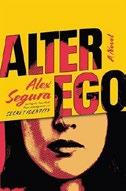
Segura explores the world of comic books and film in his latest thriller. Segura’s standalone sequel to Secret Identity (2022) brings back the Lynx, a comic book character co-created by Carmen Valdez in the 1970s. Decades have passed, and the Lynx—originally published by a company called Triumph—has faded into obscurity, though she still has her admirers. Chief among them is Annie Bustamante, a comic book writer who turned to film after having become disenchanted: “Comics had chewed me up and spit me out, and at the moment I wasn’t sure I wanted to go for another twelve rounds.” But now Annie’s movie career has stalled, too, after her studio declined to release her latest, an “artsy superhero thriller” called Miss Midnight , turning it into a tax write-off instead. She’s approached by Bert Carlyle, the son of Triumph’s founder, who wants her to work with Arturo Spinoza, a filmmaker, to reintroduce the Lynx
Segura explores the world of comic books and film in his latest thriller.
ALTER EGO
across a wide range of media. Annie can’t bring herself to say no; the Lynx was a formative character for her as a young woman: “It was one of the first and few comics I could remember not only featuring a woman in the lead, but one that—at least for a brief time—was written by a woman, too. A Cuban woman like me, no less.” Things are looking up, until Annie starts to get messages saying “BE CAREFUL,” and realizes that her involvement with the Lynx might be putting her in real danger. While the novel doesn’t quite live up to the heights of Secret Identity —the dialogue here can come across as forced—Segura has lost none of his talent at building suspense. Readers will need to come with their disbelief fully suspended, but Segura is charming enough to make it work, and, as in his last book, he sticks the landing beautifully.
A ride worth taking, especially for comic book fans.
Star
Smith, Ali | Pantheon (272 pp.)
$28.00 | Feb. 4, 2025 | 9780593701560
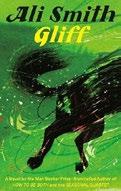
Two siblings find ways to get by on their own in a challenging near-future world. Rose is about 11 and Briar 13 when their mother goes abroad to help her ailing sister. Soon after, her partner, Leif, leaves to retrieve her. The youngsters have food, money, and a place to stay, but so much is uncertain: When will Leif return? Will he find their mother? Why has someone painted a red line around their house? Adventurous Rose soon befriends a horse named Gliff, while Briar meets a rebellious old woman named Oona. The siblings’ uneasy daily life changes for the better when they find the abandoned school occupied by Oona and other resourceful squatters, who
A dark vision brightened by the engaging craft of an inventive writer.
GLIFF
provide a home for Gliff and the welcome company of adults. But always in the worrying background is a government seeking to define people by their online personal data and to quell dissent. The siblings’ mother had been fired for whistleblowing at a weedkiller company and seems to have inspired her kids to distrust the state’s data fixation (she herself is never named in the novel). When the story shifts briefly to five years later, Briar appears in a corporate environment and meets an assembly-line worker who knew Rose, in a way that suggests the siblings got separated. Throughout the meandering plot, narrator and older sibling Briar (whose gender is withheld for most of the book) narrates much of the story’s angst. But that mood is frequently lightened by the author’s gift for conveying a fizzily fresh and vibrant young person’s mind. Other familiar Smith subjects here include government intrusiveness, the closing of public libraries, environmental degradation, the pernicious effects of technology, and the delights of language.
A dark vision brightened by the engaging craft of an inventive writer.
Kirkus
Star
Tuck, Lily | Liveright/Norton (144 pp.)
$24.99 | Dec. 10, 2024 | 9781324095729
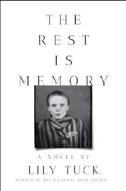
The haunting story of one real-life Polish teenager amplifies the infinite horror of Auschwitz.
Fourteen-yearold Czeslawa lives with her parents
on a rural farm in the Zamość region of Poland. It’s not an easy life. Czeslawa’s parents, who are Catholic, don’t own the property they live on. Hitler’s program to rid Poland of Poles and repopulate the country with Germans is first executed in Zamość, and more than 100,000 residents are removed from the area, with the least fortunate sent to Auschwitz. When Czeslawa and her mother arrive in the camp and are stripped of their belongings, shaved of their hair, tattooed with identification numbers, and photographed for the camp’s extensive records, the reality of their dire circumstances—and their helplessness to do anything about it—becomes apparent. Czeslawa’s actual existence was documented by Wilhelm Brasse, the photographer at Auschwitz. Brasse, himself of Austrian and Polish descent and imprisoned at the camp, was chosen for the position due to his background in photography and his ability to speak German. Tuck became aware of Czeslawa when she happened upon Brasse’s obituary— which included three of his photos of the teen—in the New York Times. With myriad references to the historical realities of the Holocaust, the work beautifully interweaves Tuck’s imagined story of Czeslawa’s constrained life before the German occupation and the hideous conditions she faced during her short, brutal months at Auschwitz. Extensively annotated and researched, Tuck’s brief novel returns, time and time again, to the subject of memories, a theme alluded to in an epigraph consisting of a fragment of a Louise Glück poem. The author’s skillful blending of facts and fiction reanimates the memory of one of the countless lost children of the Holocaust.
A painful, essential, unflinching memento.
The Charterhouse of Padma Viswanathan, Padma | Godine (200 pp.) $26.95 | Oct. 8, 2024 | 9781567928143

An academic couple weathers pandemic quarantine in two different versions of what their marriage might have been.
In the opening pages of Viswanathan’s third novel, a woman named P, her husband, Mac, and their two children, Aakash and Deepa, come together in the kitchen on the day in March 2020 when the world shuts down. Cracks already exist in the marriage—P, a tenured professor in translation, loves her job but feels the strain of being a South Asian native of Montreal in the deeply conservative American South. Mac, whose work on the intersections of “industrial design, corporate structures, and feminism” is what first brought them to Arkansas, is in danger of being denied tenure but refuses to jump through the tenure committee’s hoops, thus threatening the whole family’s stability. As quarantine wears on, those cracks are widened beyond repair by a truly disturbing secret P uncovers on Mac’s laptop one night, pushing her into a burgeoning self-reliance that takes the form of a Maggie Nelson–style book about the color chartreuse. On a parallel course, a woman named P, her husband, Mat, and their children, Nikhil and Sarojini, come together in the kitchen in March 2020 on the day the world shuts down. P and Mat are both tenured professors, both more-or-less fulfilled in their careers, though while Mat loves Arkansas and the economic freedom it affords them, P feels she has been “trailing him since they fell in love” and longs for recognition on her own terms. When P is accepted for a fellowship at the Sorbonne to work on her book about the color chartreuse, Mat’s response destabilizes the careful fairness of
their marriage. Periodically interrupted by passages from P’s chartreuse essay, the twin narratives mirror each other in different lights—one revealing the inequities in a marriage founded on secrecy, one exploring the consequences of unfettered choice. The result provides ample fodder for a reader interested in the knotty problems of preserving individual identity within a family or society; institutional inequity in academia and beyond; or just the possibilities inherent to a woman who gives herself time alone to think. Unfortunately, the author makes structural choices that allow the sections on chartreuse to float untethered from either of the two P’s narratives. The result is the creation of a third P—the author of the essay—who, rather than bringing all the P’s together, muddles the tension of the novel and allows it to hang, slightly baggy, from the structural armature of its own form. Heady, intellectual, ambitious, and not fully realized.
Wrobel, Stephanie | Berkley (352 pp.) $29.00 | Sept. 24, 2024 | 9780593547113

Six former friends reunite for a killer weekend in their old college town. Alfred Smettle has waited 16 years to get revenge on the friends who betrayed him.
Acquiring the Hitchcock Hotel, named after Alfred’s favorite filmmaker and namesake, was only
the first step. Getting the five others to gather there for the weekend was the second. And for the third, well, let the games begin. Zoe, Grace, Samira, Julius, and TJ all have their reasons for showing up at Alfred’s behest: guilt, for most of them. Also, their professional and private lives are in shambles, and a weekend away with old friends offers a welcome escape from reality. Little do they know that their host plans to kill one of them and plant evidence implicating another, righting a nearly 20-year-old wrong and sending the hotel’s profile skyrocketing. With his encyclopedic Hitchcock knowledge and his faithful assistant, Danny, Alfred might just get away with murder… unless something goes horribly wrong in the second act. Wrobel deftly juggles seven point-of-view characters, finding and harnessing their unique voices with practiced ease. The writing is crisp and clean, if occasionally info-dumpy, and the details of the group’s betrayal unspool organically throughout. Mystery and thriller readers will have no complaints for much of their time here—right up until the curveball ending they already saw coming. A predictable twist would be forgivable, given the rest of the positives here, if only we could believe that the character in question would actually get away with it. Unfortunately, we cannot. Their proverbial goose is cooked, and the novel’s attempt to handwave an explanation exonerating them in the eyes of law enforcement falls flat under even a modicum of critical thinking.
A Hitchcockian caper with an ending that hamstrings it.
Six former friends reunite for a killer weekend in their old college town. THE HITCHCOCK HOTEL


“Over the course of Paul Lynch’s frightening novel, one woman tries to preserve her family as Ireland devolves into a brutal police state. Lynch makes every step of this near-future nightmare as plausible as it is horrific.”
—Kirkus Prize Jurors





BEST BOOKS OF AUGUST 2024:
Colored Television by Danzy Senna (Riverhead)
Paris in Ruins: Love, War, and the Birth of Impressionism by Sebastian Smee (Norton)
Uprooted: A Memoir About What Happens When Your Family Moves Back by Ruth Chan (Knopf)
Ruin Road by Lamar Giles (Scholastic)
THANKS TO OUR SPONSORS:
Beneath the Scarlet Frost by Marissa Miller
Fully Booked is produced by Cabel Adkins Audio and Megan Labrise

Identity politics gets the shakedown in Danzy Senna’s brilliant, boisterous new novel, Colored Television BY MEGAN LABRISE
On this episode of Fully Booked , novelist Danzy Senna joins me to discuss Colored Television (Riverhead, Sept. 3).
Senna is an award-winning novelist and essayist, based in Los Angeles, who teaches literature and creative writing at the University of Southern California. She is the author of six books, including Caucasia , You Are Free, and New People, which was named one of the Top 10 Novels of 2017 by Time
“When her second novel hits a wall, a biracial California writer makes a desperate attempt to start a TV career,” Kirkus writes in a starred review of Colored Television, whose kicker simply states: “That’s entertainment.”
Here’s a bit more of our review: “One of the funniest scenes in this brilliant, of-the-moment, just really almost perfect book happens early on, in a flashback to the party in Brooklyn where Jane met Lenny, her husband and the father of their two kids. Feeling that she’s aging out of the dating game, Jane has recently consulted an ‘intuitive psychodynamic counselor with a specialty in racial alchemy,’ aka a psychic, who told her she’s about to meet her future husband, a funny, tall, handsome Black man who would be wearing ‘West Coast shoes’.… But that’s just one of the great things. The rant about teaching Gen Z versus millennial college students is sure to kill any college professor, and the story of Jane’s doomed second novel, an opus on biracial characters in history that she’s spent 10 years writing, is literary satire par excellence.…The only reason we said ‘almost perfect’ earlier is that there’s a big plot twist that doesn’t quite compute, but if you care, that makes one of us.”
Senna and I begin by talking about Colored Television’s protagonist, Jane, a struggling novelist living in LA with



Senna, Danzy Riverhead | 288 pp. | $29.00 Sept. 3, 2024 | 9780593544372
her husband Lenny (a painter) and their two children. I borrow a question Lenny asks Jane the night they meet— So what world do you write about?— to which Senna gamely responds. We agree that Jane isn’t grappling with her identity; she’s deciding whether and how to monetize it. We talk about what a funny novel Colored Television is, whether comedy is hard to write, and the hot wire of anger undergirding the very best comedy. We talk about poet mothers (with apologies to ours), the essential loneliness of art-making, the necessity, in an artistic partnership, of protecting one another’s solitude, following one’s obsessions, scarcity mindsets, moral ambiguity, and much more.
And editors Laurie Muchnick, John McMurtrie, Mahnaz Dar, and Laura Simeon share some of September’s best books.
Editor-at-large Megan Labrise hosts the Fully Booked podcast.

by Emma Donoghue
The Paris Express is based on a real-life 1985 train disaster.
Room author Emma Donoghue is taking readers to France with her next novel, People magazine reports.
Summit Books will publish the Irish Canadian author’s The Paris Express next year. The press describes the book as “a sweeping historical novel about an
infamous 1895 disaster at the Paris Montparnasse train station.”
Donoghue made her literary debut in 1994 with the novel Stir-Fry. Several novels followed, with Room, published in 2010, becoming a breakout hit.
The book, which told the story a woman and her young son who were held captive for years in a shed, was shortlisted for the Booker Prize; in a starred review, a critic for Kirkus praised it as “wrenching, as befits the grim subject matter, but also tender, touching and at times unexpectedly funny.”
The novel was adapted into a 2015 movie directed by Lenny Abrahamson and starring Brie Larson and Jacob Tremblay. Donoghue was nominated for an Academy Award for writing the screenplay.
The Paris Express is inspired by a real-life train derailment that killed one person and injured six.
Summit says the novel is “an evocative masterpiece that effortlessly captures the politics, glamour, chaos, and speed that marked the end of the 19th century.”

The Paris Express is slated for publication on March 18, 2025.—M.S.

For a review of Room, visit Kirkus online.
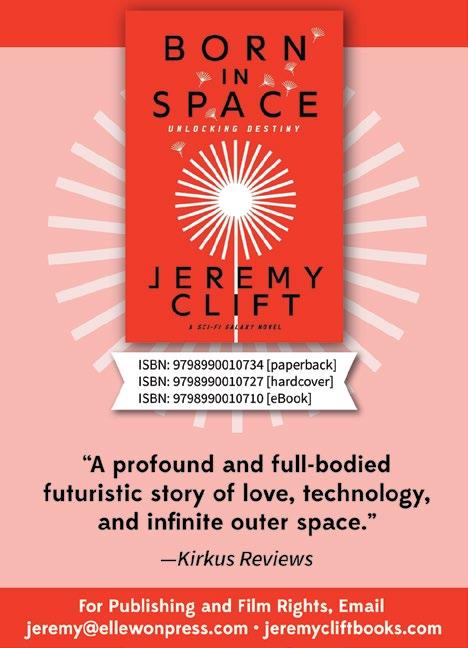

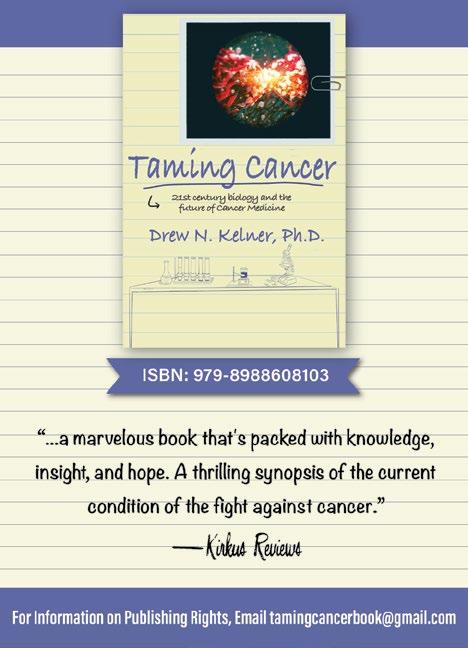

Novelist
S.A. Cosby is among the writers taking home the mystery literature prizes.
S.A. Cosby is among the winners of this year’s Anthony Awards, given annually to outstanding works of mystery literature. The winners of the prizes were announced at Bouchercon, the mystery convention held this year in Nashville.
Cosby won the best novel award for All the Sinners Bleed, which was previously shortlisted for the Edgar Award, the Andrew Carnegie Medal for Excellence in Fiction, and the Los Angeles Times Book Prize. This is the fifth Anthony Award that Cosby has won.
Timothy Egan took home the critical/ nonfiction prize for A Fever in the Heartland: The Ku Klux Klan’s Plot to Take Over America, and the Woman Who Stopped Them, while Nina Simon won the

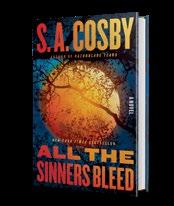
best first novel prize for Mother-Daughter
Murder Night
The paperback/ e-book/audiobook award went to Hide by Tracy Clark. Nancy Springer won the children’s/young adult prize for Enola Holmes and the Mark of the Mongoose, and editor Holly West was awarded the anthology/collection prize for Killin’ Time in San Diego. Dru Ann Love and Kristopher Zgorski won in the short story category for “Ticket to Ride.”
The Anthony Awards were established in 1986. Previous winners include Tony Hillerman for Skinwalkers, Attica Locke for Bluebird, Bluebird, and Hank Phillippi Ryan for The Murder List.—M.S.

Adams, Ellery | Kensington (320 pp.)
$27.00 | Oct. 22, 2024 | 9781496743794

A bookseller searches for a hidden treasure trove of books. As the owner of Miracle Books, Nora Pennington occasionally offers shop-athome services to her customers. In Lucille Wynter’s case, she takes it a step further, bringing books to the reclusive woman and sitting with her in her sparsely furnished “boot room,” where they share tea and Lorna Doones. When Lucille fails to appear one day, a worried Nora calls her, only to hear a faint “Help me. Please!” from Lucille’s landline. Following the instructions her boyfriend, Sheriff Grant McCabe, once gave her for kicking a door in, Nora breaks in, only to find Lucille dead and Wynter House filled floor to ceiling with rotting food, trash, and books, books, books. Lucille has left Nora a letter thanking her for her visits and entrusting her with a special book written by Lucille’s father, Hugo Wynter. The volume contains a woodblock engraving of a set of bookshelves and a poem about a little lost library. Each verse contains cryptic clues that Nora hopes will help her figure out how Lucille could have lost a library and perhaps even help Nora find it. Lucille’s children, Harper, Beck, and Clem, commission Nora’s friend Bea, an antique dealer, to help clear out their mother’s house, and Nora uses the time while Bea is decluttering to follow the clues in the poem. In the meantime, McCabe tells her that Lucille wasn’t killed in a fall but was strangled. Nora’s search for the lost library and her quest to find Lucille’s killer intersect, but chance plays as great a role as sleuthing in their solution. The grim ending reveals a sad history that strips all the joy from Nora’s efforts. Complex but ultimately unsatisfying.
Armstrong, Jess | Minotaur (336 pp.)
$28.00 | Dec. 3, 2024 | 9781250909886
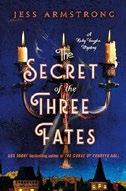
An American heiress becomes caught up in a series of mysterious deaths at a Scottish castle. Ruby Vaughn is as infuriated as she is intrigued when she discovers that her octogenarian employer, Mr. Owen, has brought her to Manhurst Castle to buy illuminated manuscripts that don’t exist. When he confesses that his real reason for the visit is to take part in a seance that will put him in contact with his son, killed in World War I, she follows him, certain that the three mediums they will see—who call themselves the Three Fates—are frauds. The seance is brought to an abrupt close by the shocking accusation that Mr. Owen is a murderer. Ruby realizes that nothing about this adventure or the people she and Mr. Owen meet are quite what they seem, including the elderly medium who dies shortly afterward by apparent suicide. From the moment the body is discovered, Armstrong draws readers deep into an ever-twisting, page-turning narrative set against a haunting gothic backdrop. Ruby, along with a handsome folk healer named Ruan who has followed her to Manhurst to warn her of impending danger, soon begins to uncover clues about family betrayals, lost loves, secret identities, and deadly sexual predators. But the closer she comes to the truth about her beloved employer and his tangled history, the more she is forced
to face truths about her own painful past and the disturbing but profound psychic and physical connection she has with Ruan, a man with blood ties to the supernatural world of mermaids and witches. Armstrong’s deft merging of mystery and gothic genre elements make this novel, the second in her Ruby Vaughn series, a suspenseful, sometimes chilling read that never ceases to surprise and delight.
Eerie and thoroughly bewitching.
Benoit, Deborah J. | Minotaur (336 pp.)
$28.00 | Nov. 5, 2024 | 9781250334978
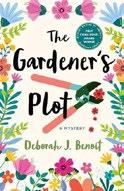
Sometimes rivalries from the past never fade away.
Maggie Walker has been drawn back to her hometown of Marlowe, Massachusetts, by warm memories of her recently deceased grandmother. In the grocery store, she runs into Catherine Whitacker, who has been mean to her since seventh grade. Catherine’s husband, Police Chief Sam Whitacker, dated Maggie in high school, providing yet another reason for her mistreatment. When Maggie’s grandmother’s estate was being settled, Maggie bid for her Victorian home, which none of the other legatees wanted, and that money went into the residual estate. Now her cousin Simon is demanding more money, which he insists she can give him by selling the place to Catherine’s half brother, pushy developer Carl Henderson. Meanwhile, Maggie’s developed a friendship with Violet
An American becomes caught up in a series of deaths at a Scottish castle.
THE SECRET OF THE THREE FATES
Nineteen stories featuring some of Griffiths’ most beloved characters.
Bloom, whom she’s helped with plans for a community garden. The day of the garden’s opening, Maggie finds a note from Violet warning that she may be late. So Maggie begins the event on her own, only to find a body partially buried in one of the food plots. Her best friend, Sally, provides muchneeded support when the body is identified as that of Carl Henderson. In the absence of Violet, who’s vanished without a trace, Catherine and her equally snarky friends all but accuse Maggie of murder. Henderson’s development schemes antagonized many people, but Maggie, who can’t help feeling that she’s the main suspect, sets to work to prove her innocence and find Violet. Both the state police detective and Sam warn her to stop, but she continues nosing around, putting herself and Sally in danger from a desperate killer.
All those obvious suspects give the plucky heroine plenty of scope for her investigation.
Flower, Amanda | Kensington (352 pp.) $8.99 paper | Oct. 22, 2024 | 9781496743756

Christmas and crime threaten the delicate balance that Harvest, Ohio, has established between English and Amish residents.
Life is good for Bailey King. She’s recently opened Swissmen Candyworks as a counterpart to Swissmen Sweets, the candy store she helps her Amish grandmother run. She’s happily engaged to county sheriff Aiden Brody.
And she’s the go-to sitter for her future mother-in-law’s pet pig, Jethro, whose latest feat is covering himself with gingerbread taffy. Lida Lantz, one of her Amish workers, is upset over Jethro’s accident, but Bailey, secure in her personal happiness, is more concerned about other things. There’s been a series of break-ins at Amish businesses. She’s expecting the arrival of her globe-trotting parents—a father who’d grown up Amish, and the English mother he left the community to marry—who’ve been pushing wedding plans on her. And she’s worried about the whereabouts of Lida’s brother, Zephaniah, who’s supposed to be shoveling the sidewalk. Eventually Bailey spots Zeph putting up a Candy Land piece on her roof at the direction of Margot, the bossy person in charge of town festivities. After Bailey finds Zeph dead below the factory roof and the police find other footprints at the scene, it seems possible that his death was no accident. Zeph had sticky fingers from early childhood. He got into trouble with his family and the Amish community for stealing. And he was probably involved in those break-ins. Adding to Lida’s heartbreak, her father refuses to let her continue working for Bailey, who’s already helped solve several murders and is determined to learn the truth about Zeph. An inspiring feel-good Christmas mystery mixed with Amish lore and pre-wedding angst.

Griffiths, Elly | Mariner Books (320 pp.)
$28.00 | Oct. 15, 2024 | 9780063289338
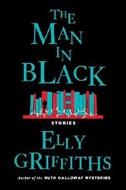
Nineteen short stories featuring some of the acclaimed British mystery writer’s most beloved characters. The collection offers a mix of previously published stories and new work following the adventures of detectives Justice Jones and Harbinder Kaur, magician Max Mephisto, and Griffiths’ most famous character, forensic archaeologist Dr. Ruth Galloway. What makes these fictions so delightful is the gentle humor that underlies each narrative and the kinds of mysteries Griffiths explores. Some, like “The Valley of the Queens,” which in its River Nile setting recalls Agatha Christie’s Death on the Nile, are classic whodunits. Others, like “The Village Church,” which features the apparitions of a long-dead caretaking couple, verge on the supernatural. Still other stories embed inklings of murder or mystery within stories about characters who, like Galloway, stand apart from the world of criminal investigators. In “Max Mephisto and the Disappearing Act,” for example, a young magician learns the art of making women disappear onstage only to find himself privy to a possible, but uninvestigated and unproven, crime of passion involving his married landlord and a singer. Even those characters who, like Justice Jones and Harbinder Kaur, are more involved with murder investigations are often made to feel like outsiders because of their gender, their ethnicity, or both. Griffiths’ narrative playfulness is on full display throughout the book, but especially in the concluding story, in which Ruth meets Harbinder as she investigates curious goings-on in the basement of the same theater where Mephisto made
GHOSTS OF WAIKĪKĪ
his London debut. Skillfully plotted and deliciously quirky, these stories will appeal not only to Griffiths’ many fans but to any reader seeking memorable encounters with unforgettable characters.
Eclectic and always surprising.
Hobbs, Elizabeth | Crooked Lane (320 pp.) $29.99 | Nov. 5, 2024 | 9781639109739

A modern woman of 1894 faces the vicissitudes of fortune. Marigold Manners, who grew up in a wealthy Boston family, planned to use her Wellesley education to pursue a career in archeology, but it all comes to nought when her parents die after burning through their entire fortune, leaving her with a modest annuity and no home. Although she’s mightily attracted to Harvard- educated lawyer Jonathan Cabot Cox, who returns her feelings, she has no plans to marry. A letter from her mother’s cousin Sophronia Hatchet of Great Misery Island, off the New England coast, claims that “[her] man once did [Marigold’s] mother…a great and godless wrong” that must be repaired, and she invites Marigold to come see for herself. Her courage is tested when she arrives to find a moldering house, a hardscrabble farm, and an assortment of truly odd relatives. Her handsome cousins Wilbert and Seviah have crude manners and no clue about any wrongdoing. The household also includes her cousin Daisy, a
stunningly beautiful replica of Marigold’s mother; Cleon, a general servant; Ellery Hatchet, a religious fanatic; his unseen mother, Alva, who rules the roost; and Lucy Dove, a Black woman hired to care for Alva. Marigold rolls up her sleeves and slowly cleans up the place while setting her cousins on a path to a better life. Great Misery poses many mysteries to be solved, beginning but not ending with the deaths of several local women. With help from Cab Cox and several other friends, Marigold eventually uncovers a shocking tale of evil.
A humdinger introduction to a new series whose characters bring to mind those of both Emily Brontë and L.M. Montgomery.
Jones, Kristi | Crooked Lane (304 pp.) $31.99 | Nov. 19, 2024 | 9781639109715

Risking her own reputation, a WAAC squad leader in World War II turns investigator to avenge a colleague.
General Dwight D. Eisenhower, supreme commander of the allied forces in North Africa, has followed up his November 1943 invasion with the first-ever assignment of women soldiers to a combat region, albeit in “rear-echelon positions.” Despite the shadow of war, spirits are high at a military dance in the Algiers Opera House, as squad leader Dottie Lincoln watches over her WAACs like a mother hen. But
the night ends tragically. Brought outside by a scream, revelers discover the body of WAAC Ruth Wentz sprawled on the pavement in a pool of her own blood. Dottie’s superior, Captain Devlin, rules it a tragic suicide. But could Ruth have jumped to her death? Dottie, who narrates in a crisp and upbeat first person, isn’t so sure and successfully presses Devlin to investigate. When he falters in the face of pushback from his commanding officers, Dottie feels compelled to look into the case on her own. Jones’ debut novel often has the flavor of wartime Hollywood movies, complete with a cadre of savvy military gals, each with her own backstory. Deftly handled and equally compelling is the often subtle misogyny and sexism Dottie and her squad face. The rumor that Dottie’s a German spy, cleverly planted by the killer, slows but doesn’t stop her investigation. A highlight of her twisty probe is an ambush at the infamous Casbah, which is strictly off limits to the soldiers. Appropriately, Ike makes a cameo appearance. A solid whodunit built around an important historical footnote.
Morita, Jennifer K. | Crooked Lane (288 pp.) $31.99 | Nov. 19, 2024 | 9781639109395

A Hawaiian ghostwriter turns sleuth after she uncovers dark family secrets. After the California daily newspaper she works for goes belly up, Maya Wong is pleased to land a freelance writing gig in her native O’ahu. It will give her a year to figure out her next move and to hang out with her best friend, Lani, who owns a boutique and has been pressing hard for her to move back to Hawaii. Maya has been hired to ghostwrite a self-published autobiography of controversial developer Charles Hamilton, whose family was actively involved in the colonization of
Crime-rich or crime-free, these stories are all refreshingly good-natured.
Hawaii. But moments after Maya’s first visit to the Hamilton home, Charles is found dead in the swimming pool where he did 50 laps a day. Maya’s suspicion of foul play grows when she’s mugged, and it grows further when she learns that the police are investigating Charles’ death. The detective on the case happens to be Maya’s ex, Koa Yamada, cousin of Lani’s longtime boyfriend, Luke. The case, immediately complicated by the obvious chemistry Maya and Koa still have, gets even more tangled by Maya’s new relationship with dashing lawyer Mark Nichols, who works for the Hamiltons. Soldiering on with her research, Maya finds copious incriminating evidence about the sketchy Hamilton clan, several of whom emerge as suspects. A second attack underscores the personal danger she is in and the urgency of finding the culprit. Morita’s breezy whodunit captures the flavor of her tropical setting and nicely balances the relatable dilemmas of Maya’s personal life with her sleuthing. A brisk and appealing mystery that could easily blossom into a series.
Penzler, Otto. | Mysterious Press (288 pp.)
$19.95 | Oct. 22, 2024 | 9781613165720
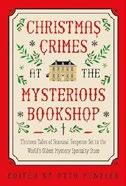
A collection of 12 stories commissioned separately over the years as Christmas gifts to patrons of the world’s oldest extant mystery bookstore.
The stories range “from humorous to suspenseful to heartwarming,” editor/proprietor Penzler notes in his introduc tion, but they all take place at Christmas, are set—at least in part—at his Mysterious Bookshop, and involve a mystery. Some are actual crime stories, such as Rob Hart’s “The Gift of the Wiseguy,” “The Christmas Party” by Jeffery Deaver, Tom Mead’s “Hester’s Gift,” and Ragnar Jónasson’s “A Christmas Puzzle.” Some have just a whiff of crime: Loren D. Estleman’s “Wolfe Trap” and David Gordon’s “Sergeant Santa,” for example. And some, such as Jason Starr’s “Black Christmas” and Lyndsay Faye’s “A Midnight Clear,” feature no real crimes, just bad choices. Mystery writers themselves take center stage in “Secret Santa” by Ace Atkins, Thomas Perry’s “Here We Come A-Wassailing,” and “End Game” by Martin Edwards. Laura Lippman’s “Snowflake Time” deserves special notice for its prescience. First published in 2017, it’s the tale of a loudmouthed journalist whose air of sweet reasonableness masks his small-minded, misogynistic views and his special animus toward single women who love cats. He gets his. Crime-rich or crime-free, the stories are all refreshingly good-natured and, in the spirit of the season, lean toward peace on earth and good will to most.
A must for every mystery lover’s wish list.

Sanders, Angela M. | Kensington (288 pp.) $8.99 paper | Nov. 26, 2024 | 9781496740953
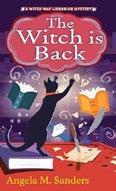
A witch with a special connection to books helps an Oregon town plunged into chaos byblackmail and murder.
Josie Way doesn’t need to use her witch’s powers to tell that her mother hasn’t made a surprise visit just to spend time with her. After many years of a marriage in which she’s been ignored by her husband, a classic absent-minded intellectual, Nora Way sounds all but ready to bid him farewell. Josie can’t believe it, but as her mom stays on in Wilfred and develops a friendship with shifty art appraiser Emilio Landau, she wonders if her family really is going to fall apart. Nor is that the only drama in the small town. Local residents have received a series of blackmailing poison-pen letters threatening to spill their secrets all over town. What makes these letters unique, almost charming, is that the secrets and demands are such small potatoes. Is it really worth $20 to keep the secret that someone’s been fishing without a permit? But things get more serious when a clifftop manor at the edge of town becomes the site of a murder.
For more books edited by Otto Penzler, visit Kirkus online.
After the Aerie’s owner, Rev. Clarence Duffy, died, the property becomes more attraction than residence, and now it’s truly a tragedy that the body of one of Duffy’s adult sons is found at the foot of its cliffs. Even though the townsfolk don’t know that Josie has a witchy ability to communicate with books, they still hope she’ll uncover the murderer and restore their sense of safety. Josie seeks the help of her boyfriend, Sheriff Sam, but struggles with the prospect of telling him the truth about her witch history—until she receives a poison-pen letter of her own. Best when it leans into lightness and humor rather than the dark side.
the
Balle, Solvej | Trans. by Barbara J. Haveland
New Directions (160 pp.) | $15.95 paper Nov. 19, 2024 | 9780811237253

A woman navigates a world in which time has stopped moving forward for her.
This slim but densely meditative novel, the first in a seven-volume series by veteran Danish author Balle, is narrated by Tara Selter, antiquarian bookseller living in northern France. She has recently discovered that she keeps repeating November 18— thrusting her into a world where “time fell apart,” as she puts it. This doesn’t provoke panic, nor does it instill an urge for intellectual and moral improvement à la Groundhog Day. Rather, Tara moves in a sea of bemused curiosity—what is she allowed to retain from day to day, and what gets erased? The early part of her chronicle—the novel is formatted as diary entries, numbering the days she’s been “stuck” on November 18—concern her efforts to sort out the reasons why time is out of joint with the help of her husband and business partner, Thomas. Every day she informs him of her predicament (which he accepts with admirable equipoise) as they attempt to determine what might have caused it. She retraces her steps—a visit with a fellow bookseller, the acquisition of an ancient Roman coin, an accidental burn on her hand—but no explanation is forthcoming. Some things endure as the days repeat, like her notebook, and the stores she shops at don’t seem to replenish their stocks. Though Tara isn’t driven to despair by all this, Balle captures a sense of disorientation and loss that intensifies in the later pages of the novel, as if she’s working through the stages of death: “I am a monster, a beast, a pest,” she laments. The story concludes at the end of her first year’s worth of November 18s, and though there’s no resolution, Balle has set up the emotional and intellectual stakes for the project; though temporally, Tara is stuck in
A woman navigates a world in which time has stopped moving forward for her.
ON THE CALCULATION OF VOLUME
neutral, intellectually the story plainly has lots of places to go.
A sober, thoughtful study of time and connection.
Balle, Solvej | Trans. by Barbara J. Haveland New Directions (176 pp.) | $15.95 paper Nov. 19, 2024 | 9780811237277
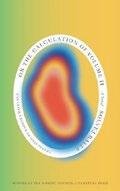
Our narrator, stuck in place temporally, looks for a change in scenery. The first book in this seven-volume novel series introduced readers to Tara Selter, a bookseller who has mysteriously been forced to relive November 18 over and over. In that book, Tara chronicled her sometimes desperate efforts to recruit her husband for clues about the rationale behind her predicament. As the second book opens, a year of reliving the same day with no explanation hasn’t exactly defeated Tara, but she’s listless: “I have no pattern of sounds and silence around which to organize my day, I have no plans, I have no calendar.” And no changing seasons, either—the bulk of the book chronicles Tara’s efforts to travel across Europe to capture the sensations of winter, summer, and spring that reliving the same day has denied her. From France, she heads to her native Belgium, where she visits her family, then heads to Norway for winter, London for a sense of a rainy spring, southern France for a whiff of summer. After two years of traveling, she settles in Dusseldorf, Germany, where she sinks into a fall-like contemplation of her next move. A cliffhanger ending suggests an
accelerating plot in the coming books, but here Tara’s situation is more an opportunity for Balle to consider how much our identity is tied to sensory details and our sense of time’s passage: “I want the cold and dark of winter, not just a single day of showers and chilly sunlight, not just mild days with rain and more rain, not just gray skies and a nip in the air.” Tara contemplates this intellectually: An ancient Roman coin she carries with her is a symbol of history, boundaries, and mortality, but Haveland’s translation also captures the twitchy urge to both keep moving and seek the comforts of home.
A speculative, lyrical study of our sensory self.
Doocy, Maiga | Orbit (416 pp.) | $19.99 paper Oct. 15, 2024 | 9780316576758

Two rival classmates set off on a dangerous mission to undo a curse that has magically bound them in the opening book of the Wildersongs Trilogy.
Leovander Loveage and Sebastian Grimm are students at the Fount—a training school for sorcerers—who have nothing in common beyond a knack for getting on each other’s nerves. Leo is a scriver, one who imbues the words of a spell with magic. But while he’s a master of frivolous charms like turning someone’s hair pink, he’s so far been unable to write any powerful Grandmagic spells without them going horribly wrong. Grimm, on
the other hand, is a brilliant caster, serious, studious, and driven. Early in the semester, Leo accidentally collides with a student who’s on his way to file spells in the school’s library, and while helping him pick up the scattered pages, unknowingly adds one of these incantations to his own folder. Later, Leo and Grimm are forced together as partners in their Duality class, where Grimm casts the errant spell, thinking it one of Leo’s ineffective charms. It’s not until Grimm tells Leo to “go jump in a lake” during an argument—and Leo does it—that they realize Leo is under a dangerous, and forbidden, control spell. Though Grimm is careful not to give Leo any commands afterward, the effects of the spell soon worsen: The magic compels Leo to stay near Grimm, and he can’t stray from his side without experiencing life-threatening symptoms. Desperate, Leo asks Grimm to travel with him into the Unquiet Wood in search of a mythical sorceress who is known for her unrivaled ability to reverse spells gone wrong. As the journey slowly unravels the truth behind the curse, the depths of their magic—and their feelings for one another—will be tested. The author doesn’t waste any time jumping into the action, creating a propulsive atmosphere that leans on page-turning plot. With vibrant characters, delicious slow-burn tension, and a fascinating magic system, this is a compelling start to the trilogy. Adults yearning for the enchantment of their childhood favorites will be spellbound by this modern magical adventure.
Hart, Rob & Alex Segura | Blackstone (304 pp.)
$27.99 | Oct. 8, 2024 | 9798212218795
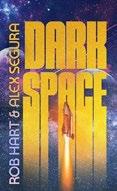
Plans to colonize a far-flung planet go catastrophically awry. Earth is over capacity, as are its outposts on the moon, Mars, and Titan. Humanity’s best hope for the future is Esparar, a distant world
discovered decades ago and chosen from dozens of candidates for its apparent habitability. Humankind’s maiden voyage to Esparar—a joint U.S.-China mission aboard a ship called the Mosaic—is “blasting through a gravity manifold at close to light speed” when the engines die, taking with them shields and life support. The Mosaic’s pilot, Lieutenant Commander Jose Carriles, manages to save the day with a risky feat of derring-do, but later realizes that the expected alarms didn’t sound and the ship’s wire logs have been erased. Suspicious of sabotage, he starts digging. Meanwhile, back at the New Destiny lunar settlement, former field agent turned desk jockey Corin Timony is monitoring communications for the Bazaar, an international espionage conglomerate, when a distress call from the Mosaic comes through. Moments later, a second relay arrives: “DISREGARD PREVIOUS MESSAGE.” Corin alerts her boss to the broadcasts, expecting him to share her concern; instead, he orders her to forget the evening’s events and take the week off to clear her head. Corin can’t quite bring herself to do either; drinking and drug use may have resulted in her demotion to “glorified secretary,” but she remains a spy at heart. Co-authors Hart and Segura give Corin and her storyline regrettably short shrift, substituting cliche and melodrama for character development. Still, the stakes steadily escalate, the action-packed plot consistently entertains, and a ping-ponging third-person narrative kindles suspense and keeps the pages turning. Explorations of humanity’s hubris and myopia lend depth. Gritty, bombastic space pulp served with a side of Roddenberry-esque optimism.

Mesa, Desideria | Harper Voyager (368 pp.) $17.99 paper | Oct. 29, 2024 | 9780063056121
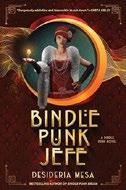
For a bruja running an underground jazz club, life is never simple. Luna, known as Rose around those who don’t know about her Mexican ancestry, should feel settled. After all, she’s married, has managed to keep her club running, and in this novel’s predecessor, Bindle Punk Bruja (2022), defeated the Ku Klux Klan—but therein lie her problems. Her marriage to Heck is one of convenience, protecting her club and her reputation, along with her husband’s, whose true affections lie with her brother, Javier. Luna is happy with the arrangement, though it does take effort to hobnob with Heck’s elite circle and relegate meetings with her boyfriend, Gio, to secrecy. Defeating the Klan has also left her rattled, raising unsettling questions about her magic and what she can and cannot do. The incident with the Klan has left Javier even worse off, and it slowly becomes clear that something magical is still preying on him, something Luna resolves to deal with herself. But magical threats are not the only dangers encroaching on Luna’s carefully constructed life: New men are in town, threatening her business and her family. Luna is determined to save everyone, even as her every solution raises more questions about the nature of magic, identity, and loyalty. Full of the heady energy of the Roaring ’20s, the plot trips along between dinner parties and jazz club meetings. The diverse cast, however, highlights the sexism, homophobia, and racism behind the glitter, creating the need for Luna and her community to build a hidden, safe haven. Sexy, magical, and gritty—a fine sequel.
Kirkus Star
Long, Julie Anne | Avon/HarperCollins (368 pp.)
$9.99 paper | Oct. 22, 2024 | 9780063281172
Series: The Palace of Rogues
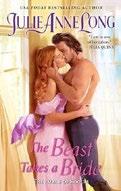
A marriage of estrangement becomes real just as it’s ending. Alexandra Bellamy kissed her first love goodbye on the day of her wedding to war hero Colonel Magnus Brightwall, widely known as the Beast. The seeming betrayal stalled her new life and led to five years of separation from her husband, who went off to Spain as a diplomat without her. Now Magnus has returned to England and proposed a permanent separation, but not before they pretend to be a happy couple so as not to jeopardize his imminent elevation to Earl of Montcroix. Saddened that her action hurt her husband, Alexandra agrees to the plan—and thus begins their stay at the guesthouse known as the Grand Palace on the Thames. Their forced proximity and the presence of the inn’s charmingly eccentric inhabitants bring Alexandra and Magnus to a pained understanding of the happiness they could have had together. This “Beauty and the Beast” rewrite is evocative of some of Lisa Kleypas’ and Sherry Thomas’ historical romances, where marriages must be rebuilt by two complicated people healing the wrongs they did to each other and baring their true selves. Long’s thoughtful prose is studded with striking analogies for emotions and character traits that reward attentive reading. For instance, unfulfilled love is compared to the weather: “Did it merely spend itself like a storm, and then make way for new weather?” There are also some chuckle-inducing moments, with the style ably buttressing the plot, which asserts that romance is hollow without a man respecting a woman’s choices and selfhood. A keeper, fusing the beauties of historical romance with present-day ideas of individual happiness.
Pearson, Mary E. | Flatiron Books (560 pp.)
$30.99 | Nov. 12, 2024 | 9781250367570
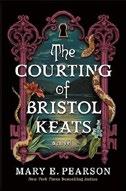
A fae king falls for a sassy pizza delivery driver in this slow-burn romantic fantasy. Months after the death of their father, Logan Keats, leaves them orphaned (they think), a trio of down-on-their-luck sisters receive an intriguing proposition: meet with their great aunt and leave with a priceless work of art. There’s just one problem—Logan grew up in foster care and had no relatives. Bold youngest child Bristol seizes her chance to make the family some much-needed cash, only to find herself surrounded by monsters. As it turns out, Logan grew up in the fairy realm of Elphame and his daughter may hold the power to save the fae world from utter destruction. The news that her father might still be alive in Elphame, coupled with fae king Tyghan’s promise to help her search for him, makes for an offer Bristol simply can’t refuse. Little does she know, Tyghan knew both her parents back before she was born. Her mortal-born father fell for her mother, leading him to betray Tyghan, and the lovers went on the lam in the mortal realm. Also unbeknownst to Bristol, the king is certainly not planning to give either of her parents a warm welcome once he finds them. Though not as tightly plotted as one might hope, Pearson’s latest offering dishes up plenty of fun for romantasy fans, with a slowly simmering passion that builds for more than half the novel. Readers looking for a well-researched fae novel with plenty of
traditional fairy lore will delight in the little moments Bristol and Tyghan’s story has in store for them. The worldbuilding is top-notch, although some readers may find the occasional lore drop a smidgen too info-dumpy for their tastes. Some sections become sluggish, as Pearson tells rather than shows the story, but these are few and far between, and reader interest should hold on throughout. A fun and sometimes steamy romp through fairyland.
Riley, Lia | Avon/HarperCollins (320 pp.) $18.99 paper | Nov. 12, 2024 | 9780063412323

A 21st-century hockey player becomes a prime marriageof- convenience candidate when he’s thrust into 19thcentury England. After having been benched for the season, professional hockey goalie Tucker Taylor decides to use his time off to visit his sister in England. After an unexpected dip into a local cow pond finds him emerging in 1812, he meets spinster Lizzy Wooddash, who’s as perplexed as he is, especially since she’s never seen a cell phone before—there’s no service, of course, but she’s amazed when Tuck takes her picture. All Tuck wants to do is get back to his own time, but Lizzy sees an opportunity, prompted by a suggestion from her friend Jane Austen. Lizzy longs for the life of freedom often afforded to widows. If she and Tuck marry, she’ll be declared a widow once he returns to the present day and disappears from her era. In the
A fae king falls for a sassy pizza delivery driver in this slow-burn romantic fantasy.
THE COURTING OF BRISTOL KEATS
MUCH ADO ABOUT MARGARET
meantime, Lizzy is happy to provide Tuck with guidance on how to blend into Regency society. Lizzy takes things in stride, perhaps a bit too much, as the notion that a man from the future— who plays a sport that hasn’t been invented yet—has shown up in her timeline prompts barely any disbelief on her part. Of course, Tuck and Lizzy’s well-meaning plan begins to go wrong as their mutual attraction grows and they start to rethink whether they’ll be able to make a clean break when Tuck is able to leave Lizzy’s world. As if a time-traveling hockey player didn’t make this story strange enough, the inclusion of Jane Austen—who’s inspired by Lizzy to create the character Elizabeth Bennett— is an even more bizarre detail. While the romance genre nurtures a culture where even the most inventive and nonsensical setups can find an audience, this book doesn’t quite nail the campy creativeness needed to pull off its odd combination. This wild and wacky time travel romance may challenge even the most adventurous reader.
Roux, Madeleine | Dell (272 pp.) | $18.00 paper Oct. 22, 2024 | 9780593499399
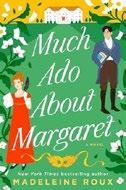
In Regency England, Margaret Arden’s aunts want her to find a wealthy husband, but she’d prefer to find a man to publish her novel. Since their father died, Maggie and her sisters have been reliant on the aid of their aunts. Maggie knows that as the eldest, it’s her duty to find a way to support her family and—although it’s unconventional—she desperately wants to become an author. After returning from
war, Bridger Darrow wants no association with his title of Captain and is focusing on the publishing business he inherited from his mentor. He needs the money because his foolish, philandering older brother has depleted the family’s resources. While attending a wedding celebration for his dearest friend, Bridger stumbles on loose pages of a story blowing around in the wind, and he finds himself desperate to publish them—but that becomes tricky when he realizes that not only is the author his friend’s cousin Maggie, but they’d met before—and Bridger had huffily rejected her work. When a masquerade ball leads to mistaken identities, drama ensues that throws Maggie and Bridger together to set everything straight, and animosity develops into love. This lushly written, entertaining romp boasts a large cast of captivating characters and is particularly exciting when it revels in the chaos of celebrations and shenanigans, dialing the conflicts and confusion all the way up. Maggie is a winsome, formidable, bookish heroine, and while Bridger is a prickly, flawed hero, his personal growth will endear him to readers, making them a charming pair.
A fun, breezy romance full of delightful hijinks.
Smith, Tiana | Berkley (368 pp.) | $18.99 paper | Nov. 5, 2024 | 9780593550328
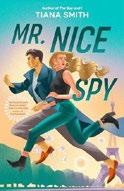
The daughter of a drug kingpin is kidnapped alongside a charming CIA operative in Smith’s action-packed sequel to The Spy and I (2024). Andee Paxton is used to things blowing up...literally.
She’s a fireworks designer, and while there aren’t many sparks in her love life, her career is literally on fire. For 26 years, Andee has been under the impression that her father is Oscarwinning actor Keith Huxley-Beck, a fact she regrettably shared with her coworkers, who enjoy teasing her about it. Though Andee has never met Keith, her single mother swears he’s the one. Andee even studied American Sign Language for him, since he’d learned it once for a movie role. But then Andee decides to take a DNA test to prove her claim, and the results are nothing if not explosive. The same day Andee learns she’s not a descendant of Hollywood royalty, she comes face to face with a handsome CIA operative named Adam Chan who happens to know the identity of her real father—and it turns out to be a man known as Holt, one of the most wanted and dangerous drug lords in the world. As fate would have it, he’s been searching for her, too. Just as suddenly as Chan fills Andee in about her father’s evil deeds, Holt arrives and kidnaps them both. Locked in Holt’s secret hideout within the French catacombs, Andee and Chan devise a quick plan to parade as a couple, which offers them some privacy under the guise of romantic rendezvous. They also have a secret advantage: Chan is hard of hearing, and since Andee is fluent in ASL, they can communicate virtually undetected. Can Andee stop her father’s nefarious plans and score the hot CIA agent, or will her plan crash and burn? In Smith’s second My Spy novel, it’s Chan’s turn to play the hero, and Andee is another savvy-smart heroine. While Holt and his henchmen are caricature villains, all guns and bravado, Chan is devilishly charismatic and capable, and his hearing loss works seamlessly as a critical part of the story. Sparks fly and guns blaze in Smith’s latest.

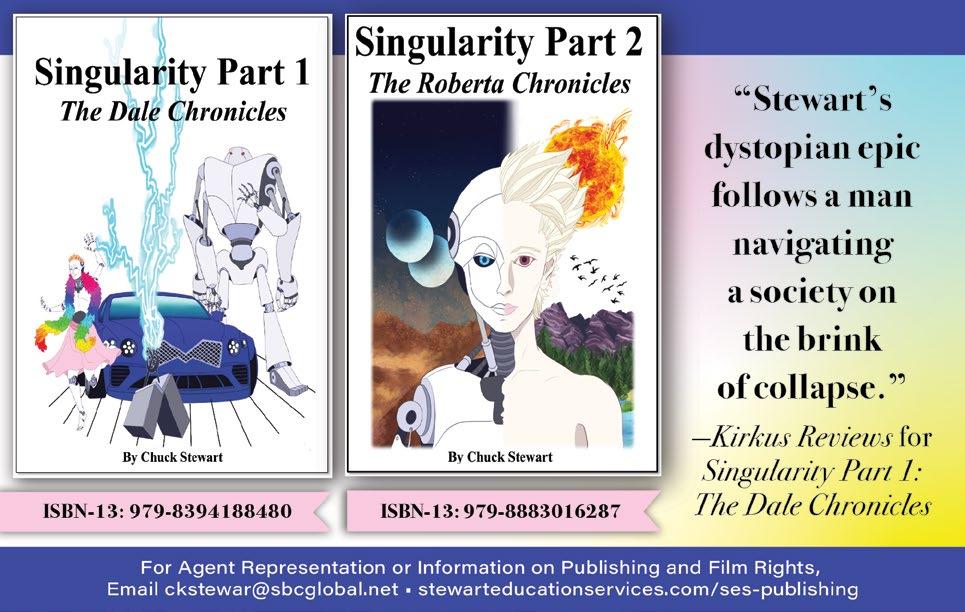

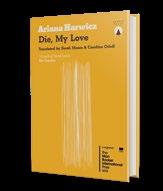
The actor joins Jennifer Lawrence and Robert Pattinson in the adaptation.
Sissy Spacek has joined the cast of the upcoming film based on the novel Die, My Love, Deadline reports.
Die, My Love, written by Argentine author Ariana Harwicz, was translated into English by Sarah Moses and Carolina Orloff and published in the U.S. by Charco Press in 2019; in the U.K. it was longlisted for the International Booker Prize in 2018. It follows a woman struggling with depression, barreling towards a psychological breakdown. A critic for Kirkus called the book “a portrait of motherhood, passion, and mental illness that cuts to the bone.”
The film adaptation is written by Enda Walsh (The House, Small Things Like These) and Lynne Ramsay
(Ratcatcher ) and directed by Ramsay. Martin Scorsese is among the film’s producers. Spacek, known for her roles in films like Coal Miner’s Daughter and Carrie, will join the cast alongside Nick Nolte (The Prince of Tides, Affliction). They join previously announced stars Jennifer Lawrence (Silver Linings Playbook, Joy ), who plays the mother, Robert Pattinson (The Lighthouse, The Batman) and LaKeith Stanfield (Sorry To Bother You, Knives Out).
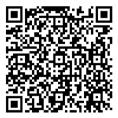
For a review of Die, My Love, visit Kirkus online.
Director Ramsay is no stranger to literary adaptations. She has directed films based on Alan Warner’s Morvern Callar, Lionel Shriver’s We Need To Talk About Kevin, and Jonathan Ames’ You Were Never Really Here —M.S.

Sissy Spacek
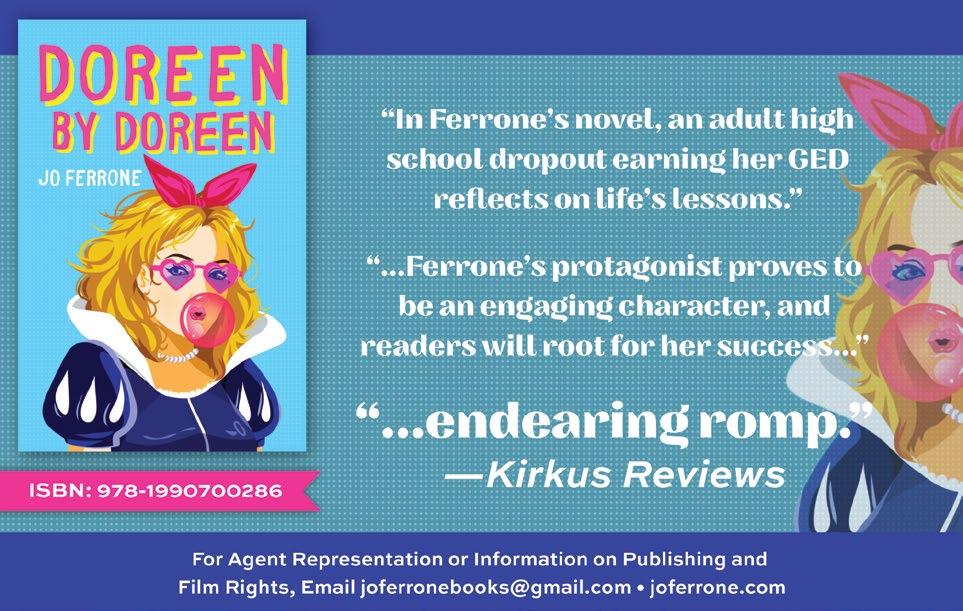


AWARD-WINNING PR FOR AUTHORS & PUBLISHERS
TRADITIONAL AND ONLINE
CONTENT, INFLUENCER CAMPAIGNS & ADS
IN-PERSON AND HYBRID LIVESTREAMS
TRAILERS AND AUTHOR VIDEOS
DEVELOPMENT AND MANAGEMENT
“WILDBOUND TOOK THE NATIONAL BOOK CRITICS CIRCLE AWARDS TEAM FROM VIRTUAL PRODUCTION NEWBIES TO A SUPERB VIRTUAL AWARDS EVENT. WE'LL ALWAYS BE GRATEFUL TO OUR WILDBOUND ANGELS.”
JANE CIABATTARI, PRESIDENT OF NATIONAL BOOK CRITICS CIRCLE
“HOW CAN YOU CUT THROUGH THE NOISE OF THE CULTURE AND GET ATTENTION FOR DESERVING WORK? HIRE WILDBOUND, FOR STARTERS. THEY’VE GOT A LOT OF ARROWS IN THEIR QUIVER AND THEIR AIM IS TRUE.”
STEVE WASSERMAN, PUBLISHER OF HEYDAY
“WORKING WITH WILDBOUND IS A DREAM! THEY’VE TAKEN OUR BOOK FESTIVAL TO NEW HEIGHTS THROUGH EXTENSIVE PRESS COVERAGE AND LEADING EDGE
SOCIAL MEDIA STRATEGIES, NOT TO MENTION SNAZZY VIDEO PRODUCTION.”
CHERILYN PARSONS, FOUNDER OF BAY AREA BOOK FESTIVAL

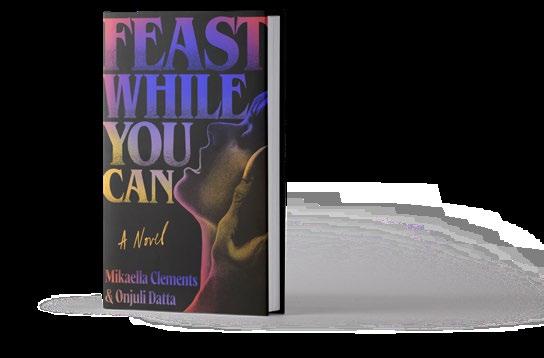
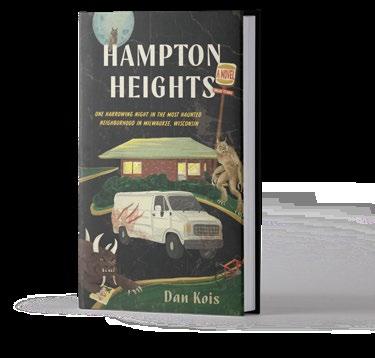
Rivers Solomon
By Mikaella Clements
Datta
Dan Kois
By Devon A. Mihesuah
Paul Tremblay





JOHN McMURTRIE
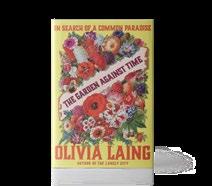

FROM THE GROUND under our feet to the edge of space—that’s the scope of this year’s nonfiction finalists for the Kirkus Prize.
Six books made the shortlist for the $50,000 prize. All earned starred reviews and were selected by our judges from the roughly 2800 nonfiction books that Kirkus reviewed with publication dates between Nov. 1, 2023, and Oct. 31, 2024.
Let’s start on the ground. Specifically, with English author Olivia Laing’s The Garden Against Time: In Search of a Common Paradise (Norton, June 25). During the pandemic, like millions around the world, Laing took to gardening for the solace it offered. Laing writes about this but digs up much more, exploring the notion of a garden as a paradise on Earth and shining a light on how these privately owned spaces are “a source of unquestioned privilege.” Our reviewer called

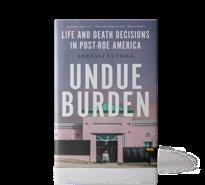
the book “an intellectually verdant and emotionally rich narrative journey.”
Another British prize finalist, Adam Higginbotham, centers his latest investigative work on an explosion high above Earth that shocked the world in 1986. Challenger: A True Story of Heroism and Disaster on the Edge of Space (Avid Reader Press, May 14) shows readers how NASA was forced to devise new missions with constrained budgets for the space shuttle—leading to catastrophic results. Our critic hailed the book as a “deeply researched, fluently written study in miscommunication, hubris, and technological overreach.”
Steve Coll takes a similarly expansive view of his subject in The Achilles Trap: Saddam Hussein, the C.I.A., and the Origins of America’s Invasion of Iraq (Penguin Press, Feb. 27). It’s now known that supposed weapons of mass destruction
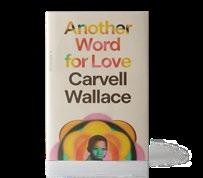
were used to justify the Iraq War, but Coll’s research, Kirkus’ review said, “turns up a great deal of unfamiliar, illuminating information.”
Shefali Luthra turns to more immediate concerns in her first book, Undue Burden: Life and Death Decisions in Post-Roe America (Doubleday, May 21). A health care reporter, Luthra travels the country to compose what our critic described as “vivid portrayals of lives disrupted and freedom denied” as a result of the Supreme Court’s ruling to reverse Roe v. Wade.
In a more personal vein is finalist Carvell Wallace’s Another Word for Love: A Memoir (MCD/Farrar, Straus and Giroux, May 14). A poet and podcaster, Wallace examines his upbringing as a queer Black American who has come to question, wrote our reviewer, “the indoctrinating grip of traditional masculinity, with its insistence on power and control, interrogating its
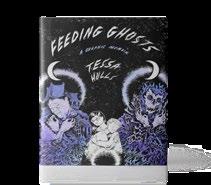
lessons about fear and intimacy.…Ultimately, this is an intricate and exhilarating memoir—heartbreaking, humbling, and hopeful.”
Rounding out the finalists is another debut memoir, Tessa Hulls’ Feeding Ghosts: A Graphic Memoir (MCD/ Farrar, Straus and Giroux, March 5). In her artfully imaginative drawings, Hulls embarks on a journey to learn about her grandmother, a Chinese journalist and popular memoirist whose life was forever changed by mental illness—which in turn colored Hulls’ relationship with her mother. Hulls navigates this fraught terrain and says of her family’s ghosts: “They never wanted to devour us. They just wanted to be known. To have their stories heard.” Said our reviewer: “From start to finish, this book is a revelation.”
John McMurtrie is the nonfiction editor.
The profit in healing. Scholar of literature, gender studies, and medical humanities, Gevirtz brings a breadth of knowledge to her witty, deeply researched history of the commodification of health care and medicine. Drawing on abundant archival sources, including letters, diaries, herbals, sermons, advertisements, medical tracts, and a prolific number of recipe books, Gevirtz reveals that until the mid-17th century, ill people were treated at home with medications made in kitchens by a family member or friend. Recipes for elixirs, poultices, salves, and libations appeared in the same books as recipes for soups and stews and were handed down from woman to woman. The advent of the
scientific revolution, however, wrested the production and administration of medicine from women. Physicians and apothecaries, which became “defined professions with guild status,” competed for control of diagnosing illness and prescribing, making, and selling medications, united only in their determination to exclude women. What was once free was transformed into a product with monetary value; what was once freely shared was produced in secret factories. Even recipe books changed to contain apothecaries’ or physicians’ recipes, for which women sometimes had to pay. By the mid-18th century, women’s housekeeping, gardening, and cookery books “had little or
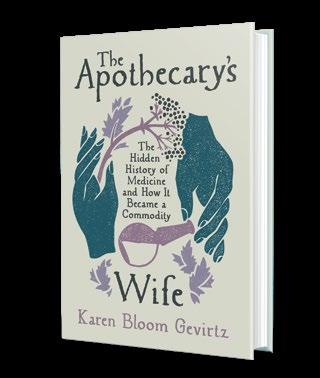
nothing to say about women’s role as medicine makers.” In recounting a century of tumultuous change, Gevirtz introduces a host of idiosyncratic characters: a man who concocted and fed viper wine to his wife; a naturalist eager to dissect a dead elephant delivered to his front lawn; a bold, self-promoting “medicatrix”
trained by her physician father. All participated in the “shift in values [that] compromised medication’s identity as a fundamental right of all human beings.” As Gevirtz’s well-populated narrative amply shows, seeking profits from treating ailing patients did not begin with big pharma. A lively medical, scientific, and economic history.
Asif, Manan Ahmed | The New Press (400 pp.) $29.99 | Oct. 22, 2024 | 9781595589071
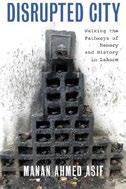
A historian walks through Lahore, touching on its long and difficult history as a center of Muslim life and rupture.
“Lahore became a city of refugees and migrants in 1947,” writes Asif, “and it has never stopped being that.” A Columbia University historian, Asif offers a bittersweet reflection on his native city—“its history, the role of memory and violence, and the vexed question of nationalism and state control.” He is especially attuned to texts about the city that were written in Sanskrit and Persian, such as the shahr ashob—the poetic form from the ninth or 10th century that means “city disrupted.” He dwells on the Hindustani influence when Lahore was a “vibrant, polysacral” place; the population exploded under the British, and its new institutions and neighborhoods grew largely segregated. Partition violently sundered the golden age of the city in 1947, largely emptied of Hindus and Sikhs and refilled by Muslim “refugees” from other parts of India, such as the author’s own family. The city had to reinvent itself within the new nationstate of Pakistan. Asif also writes of the environmental degradation of Lahore, once a city of gardens like Shalimar, now imperiled by floods from the Ravi River, air pollution, and heat. He wanders areas of Lahore that have been familiar to him since his youth, all the while musing on the city’s vast changes. A poignant history and personal memoir of a constantly evolving city.

Asif offers a bittersweet reflection on his native Lahore.
DISRUPTED CITY
Barrett, David | Tatra Press (235 pp.)
$32.00 | Oct. 30, 2024 | 9781732222779

One hundred years of key U.S. Opens, dramatically captured. Award-winning golf writer Barrett recounts in crisp, polished prose the stories of 20 U.S. Opens played at America’s toughest courses under the most difficult conditions. He begins in 1913 with amateur Francis Ouimet’s takedown playoff with England’s two finest professionals at The Country Club outside Boston. Barrett describes their play up close, with details that all golfers will enjoy. It was all amateur Bobby Jones in 1923 taking down the likes of Gene Sarazen and Walter Hagen to win his first U.S. Open in a playoff against Scotland’s Bobby Cruickshank before a crowd of 10,000. Throughout, Barrett provides excellent profiles of many players, like Cruickshank, whom readers might not be familiar with. In 1930, amateur Jones won his fourth U.S. Open, then retired at age 28. Two years later, Cruickshank would again contend but lose to Sarazen, who won his second Open by three strokes. Barrett neatly covers Ben Hogan’s miraculous comeback at Merion and the long-shot win by Jack Fleck at the fearsome Oakland Hills before reaching The King: Against a crowded, talented field, Arnold Palmer won his only Open in 1960 at Cherry Hills. At Oakmont the following year, he was beaten in a playoff by a young Jack Nicklaus. In 1973, Johnny Miller captured his Open
by shooting a historic final-round 63. Tom Watson finally outlasted Nicklaus at Pebble Beach in 1982. Barrett closes his comprehensive book not with Brooks Koepka’s or Bryson DeChambeau’s multiple wins but with Jon Rahm, whose birdies at Torrey Pines’ last two holes brought victory. Fans of golf’s history will savor this captivating book.
Barrett, Paul M. | Smithsonian Books (160 pp.)
$24.95 | Oct. 29, 2024 | 9781588347336
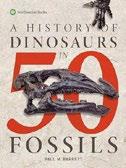
Good pictures and a basic education. Barrett, a merit researcher at the Natural History Museum, London, delivers an informative account of
dinosaur evolution, emphasizing the Mesozoic era (from about 250 million to 66 million years ago), when dinosaurs dominated land and air with a nod toward an earlier era when their ancestor, a small lizardlike creature scuttled through the underbrush about 320 million years ago. As many readers know, a major extinction event occurred when a small asteroid struck the Earth, exterminating every traditional dinosaur but not birds, which were suspected to be related since Darwin’s time but during the past 50 years have been accepted as genuine dinosaurs. Dinosaurs are reptiles that evolved one startling innovation: walking on two legs. All other reptile groups use four or none at all, and humans are among the incredibly few other mammals who became bipedal. The first dinosaurs were
lightly built small bipeds with slender necks and long tails that expanded into varieties that dominated life on land for over 150 million years. Many grew to sizes that required more support, so they re-evolved four walking legs. Perhaps the most pleasure readers will experience in these books is poring over dozens of colorful artistic recreations of Mesozoic life, with crowds of dinosaurs going about their business in an authentic, if overcrowded, landscape. Because Barrett’s emphasis is on fossils, there are plenty of those too. The complete specimens (rare in nature) are spectacular, but others appear to be clumps of bone, teeth, and rock, which reveal the reality of the puzzles that paleontologists encounter but deliver little information to the average reader. Steve Brusatte’s The Rise and Fall of the Dinosaurs may be the best popular introduction, but this is an intelligent overview.
Vivid insights for the dinosaur buff.
“They Just Need To Get a Job”: 15 Myths on Homelessness
Brosnahan, Mary | Beacon Press (232 pp.) $17.99 paper | Nov. 12, 2024 | 9780807006979

A historical overview of U.S. housing, with particular attention to homelessness. Brosnahan, former executive director of the Coalition for the Homeless in New York City, set herself three tasks. The first was to convince the reader that the antidote for chronic homelessness is decent, affordable, and permanent housing. Housing, she maintains, is “essential to be fully human.” The second was to correct multiple, widely held myths regarding homelessness. Her case for “housing first” is a response to two of these myths. One is that “people need to prove they’re worthy of and ready for assistance,” a myth that supports a “treatment first” approach that strives to mitigate the
mental and physical health problems before offering housing to the homeless. When combined with supportive services, she asserts, “housing first” is “humane and practical” and more economically efficient. The other myth is that “investment in social housing has proved to be a failure.” Deeply experienced and widely knowledgeable, Brosnahan believes this is false and offers limited equity cooperative housing in New York City as an example of its feasibility. (Given her all-in approach to “housing first,” one wonders why housing is absent from the title.) The third task was to provide a history of housing and homelessness in the U.S. and New York City in order to reveal the roots of the homeless crisis and support her debunking of the myths. Her criticism, though, is often unfocused, while a number of her myths, such as “Homeless people just need to learn to save,” hardly seem to qualify as widespread misperceptions. In addition, the attention she gives to the other two tasks detracts from her “housing first” position, the book’s political core. A useful perspective but a less than fully developed argument on housing.
Byrne, Paula | Harper360 (656 pp.)
$38.99 | Nov. 12, 2024 | 9780008322250
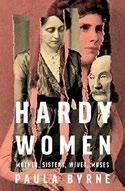
Hardy’s women, real and imaginary. The prolific novelist and poet Thomas Hardy (1840-1928) was famous for creating indelible female characters, displaying a rare insight into women’s experiences. As British biographer Byrne reveals in a close look at the women in his world, those insights did not translate into real life. He was a fickle suitor, easily disenchanted, and a neglectful spouse whose first wife “poured out her frustration” in bitter diaries titled “What I Think of My
Husband.” His second wife also grew disillusioned with a man whose deepest love, she realized, was Tess of the D’Urbervilles, a woman he invented. Beginning with the midwife who delivered him, Byrne devotes pithy chapters to some 40 women: Hardy’s strong-willed mother, his grandmothers, sisters, aunts, and female cousins; girls he had boyhood crushes on and those he fell “madly in love” with later. Byrne conveys a palpable sense of working-class women’s lives in Victorian Britain: many suffered domestic abuse at the hands of their drunken, dissolute husbands; multiple pregnancies undermined their health; poverty stalked them; disease killed them and their children. They had few chances to live fulfilling, independent lives. Even Hardy’s beloved sister Mary, who became a schoolmistress, endured a circumscribed, lonely existence. Besides examining women’s interactions with Hardy, Byrne illuminates Hardy’s major novels from the point of view of his complex female characters and, in the biography’s final section, focuses on his two wives and his intense infatuation with a young actress set to play his beloved Tess on stage. Drawing on Hardy’s voluminous correspondence, memoirs (including his self-ghosted biography), and recently discovered letters from his second wife, Byrne reveals an insecure man who feared physical contact and whose romantic involvements fell into a recurring pattern: obsession, rejection, and fuel for his imagination. An acutely sensitive portrait.
Comer, Krista | Bison/Univ. of Nebraska (290 pp.) | $24.95 paper Nov. 1, 2024 | 9781496229533
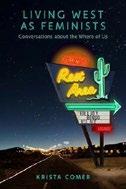
A feminist odyssey introduces readers to new landscapes, new friends, and new questions. Comer, author of Surfer Girls in the New World
Order and Landscapes of the New West: Gender and Geography in Contemporary Women’s Writing, tackles her subject as a never-ending project rather than an ultimate guide to the complexity of Western feminism. Using the metaphor of travel and road trips (à la Thelma and Louise), she guides the reader through different interviews with prominent feminists. Comer does not look at Western feminism as necessarily a sector of feminism that upholds Western ideals, but more as a geographical location with many different ideas and perspectives. Topics such as “The West Coast Women’s Music Festival,” circa 1981, at which naked women dance, swim, and sing with glee, give the book a down-to-earth vibe. Comer adds photos of the natural world—explaining how each person she interviews connects with the environment. The reader is taken on a trip through North America, mostly in the Southwest. At a certain point in this adventure, Comer realizes it has become exactly that. She writes about “slow scholarship,” which contradicts capitalization’s fast-paced culture. “I am good at being a grown up, the oldest child, the mother who balances, the university citizen,” she writes. “It’s time to figure out an alternative that is not a Band-Aid, figure out something real.” Somewhere during this feminist road trip, the reader sees a woman free herself. Comer presents the reader with the list of questions she asks her interviewees, urging us to engage thoughtfully. The reader isn’t just a silent spectator, but a mindful participant. An introspective memoir full of love and meditation.

Dreher, Rod | Zondervan (256 pp.)
$29.99 | Oct. 22, 2024 | 9780310369127
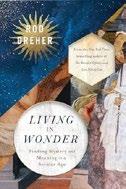
An admittedly “strange book” about religious faith and its necessary willing suspension of disbelief.
It’s one thing to believe in an invisible sky deity. It’s quite another to believe in demons that require exorcism in UFOs, whose extraterrestrial occupants, one religious scholar believes, “are likely to be at the bottom of a new religion that will arrive in the future.” For the moment, Dreher writes, Christianity will have to do—and not just any Christianity, but its Eastern Orthodox variant, which retains the ecstatic and the mystical in place of more rational, less awestruck Western strands. Dreher is committed to bringing his reader to adopt this extrarational way of being in the world, his or her every breath devoted to religious practice. (Toward the end of the book, he prescribes the “Jesus Prayer,” its four simple lines punctuated by breath and spoken as if a mantra.) Dreher is capable of stirring exaltations, as when he likens humans to fish at the bottom of a pond: “Sometimes we catch a flash of light reflected in a piece of matter drifting down from on high, and our attraction to it causes us to rise toward the light beyond the surface,” he writes, going on to say that the beauty brought to humans by the arts fuels that gracious light. Regrettably, he also punctuates his argument with flashes of rightist thought, as when he describes American teenagers who convinced an Eastern European pal that she “might
be genderqueer”—and so she might have been—and says that “witchcraft and paganism typically track with progressive political commitments, especially around feminism, environmentalism, and queer activism.” Such moments make it clear that Dreher’s “confident belief that there is deep meaning to life” doesn’t tolerate much wiggle room.
If you’re inclined to Orthodox fundamentalism, then this is your book. If not, not.
Edim, Glory | Ballantine (288 pp.)
$28.00 | Oct. 29, 2024 | 9780525619796
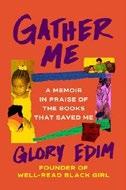
Professional bibliophile pays tribute to the books that made her. Edim rose to prominence as the founder of Well-Read Black Girl, an influential and far-reaching literary organization. In Gather Me, she reflects on a lifetime of devoted reading. From childhood on, whatever was going on in Edim’s life, books were a constant presence in her survival and self-development. But while each chapter in the memoir centers on the books that were most pivotal in a given period of her life, Gather Me is less a book about books than a book about a life in which books were always in the background. Edim writes more about her home life and personal struggles than she does about the books that are important to her. It is the power of reading, more than the power of specific books, that is Edim’s real interest. The details vary, but any reader can relate to the sentiment she expresses in recurring passages such as: “I built a personal library that reassured me that my own happiness was possible. Despite my mother’s illness and all that surrounded it. For me, reading was reparative. Toni Morrison compelled me to hone in on my vision. Maya Angelou urged me to
take more risks. Alice Walker drove me to build something outside of myself. Somehow their intricate stories and astute observations provided me with an unbreakable foundation.” Occasionally Edim gets carried away by the strength of her personal connection to the writers she loves and misses her own point. She refers to books by Morrison, Walker, and others as “monumental narratives written exclusively by and for Black women,” an assessment that would, by implication, impoverish literature for every reader, including many of Edim’s own. Gather Me is a book for anyone who has ever loved books. A love story that attests to the power of literature.
Egner, Jeremy | Dutton (368 pp.) $32.00 | Nov. 12, 2024 | 9780593476062
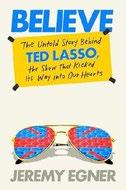
B ehind the scenes of the soccerthemed TV show that became a surprise pandemicera sensation. When it debuted in August 2020, Ted Lasso might have easily been missed in the ocean of streaming content—a dramedy about a British soccer team had little obvious appeal to American viewers. But for a nation that was housebound and weary of Covid-19 and divisive politics, the show’s title hero (played by Jason Sudeikis) proved a balm. Also weary of Tony Soprano–style antiheroes, people eagerly embraced Lasso’s emphasis on openheartedness, optimism, and good humor. This comprehensive but unfussy history by Egner, the New York Times’ TV editor, covers the show’s entire run, from its origins in jokey promos for NBC Sports’ Premier League broadcasts to its much-debated third (perhaps final) season, where Egner is among those who disliked the bloated scripts and questionable plot turns. Striving to
go beyond straightforward hagiography, Egner catches up with just about every relevant figure on the show, arguing that the show’s animating spirit of optimism was reflected in its leads—Sudeikis was processing a messy split with his partner, Olivia Wilde, and Hannah Waddingham (who played the team’s owner) was looking for a role that would keep her in England, where her daughter was recovering from an illness. “Every time a joke would come up that was rooted in sarcasm, or cynicism, or apathy towards someone else’s story, just cut it out,” Sudeikis says, which proved a winning strategy as the show gathered a mountain of Emmy nominations (20 in its first season alone). But Egner emphasizes the idea that staying positive, like staying in the Premier League, requires constant practice and doesn’t always turn out as planned. Solid arts reporting, and excellent fodder for Lasso fans.
Feniello, Amedeo | Trans. by Antony Shugaar Other Press (336 pp.) | $29.99 Nov. 12, 2024 | 9781590511039

A historian traces the origins of organized crime in southern Italy to medieval politics.
Feniello begins his narrative with an incident that happened on the street in Naples: the execution of three young men with ties to the local mob. Turning history into a brooding philosophical essay, Feniello wonders about the “source of all this savagery” and whether it has its origins in “something…so deep-rooted that it has carved its way into the viscera of time, allowing the weed of corruption to grow and germinate.” Mixed metaphor (do weeds regularly grow in viscera?) and all, he moves on to discuss an incident in the 1343 of his title, when Neapolitan freebooters seized a Genoese merchant ship, beheaded its
owner, and divvied up the spoils—an act worthy of the gibbet, that, but one that Feniello attributes to the roiling politics of contending realms and some very poor policies, including taxing the poor in a time of plague and famine. Those doing the taxing may have had ducat signs in their eyes, but the people had nothing: “Southern Italy was screaming with hunger.” Feniello then charts the growth of antimonarchical resistance and the entrenchment of political power in a handful of local families, giving birth to “a hungry new Neapolitan, a man of both clan and family, a man quick to draw his sword, both solitary and violent.” Feniello’s thesis would seem to be something of a stretch in time, though not in kind: most historians trace the rise of the Mafia to resistance in Sicily, not Naples, against French and Spanish occupiers, though the basis of power in family ties is right. Correct or not, Feniello’s wandering narrative waxes a bit too purple for comfort and often strays from the point. Of some interest to students of medieval Italian history, less so to those of organized crime.
Foster, Robin | Bison/Univ. of Nebraska (228 pp.) | $26.95 paper Nov. 1, 2024 | 9781496238467
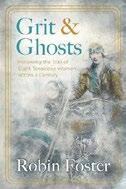
A historian traverses favorite spots on the American landscape, finding inspirational stories of women who thought nothing of accepting a good challenge.
In future years, the Covid-19 project will emerge as a genre of its own in whatever field it happens to fall. In Foster’s case, driven to online teaching by the pandemic, she walked away, deciding instead “to find those trails of crumbs that would lead me to women
Eight women who have little in common except an undeniable scrappiness.
GRIT AND GHOSTS
who, living under different conditions from my own, each trying to exert her will on a world that has ideas of its own, had done it.” On the face, the eight women on whom Foster settles have little in common except an undeniable scrappiness. One, Gertrude Stein, who famously said of her native Oakland that “there is no there there,” trained as a doctor but also walked away because a male professor refused to give a woman passing grades. Another, Marguerite Lindsley, was the first female park ranger in federal service, growing up and working in Yellowstone National Park after earning degrees in the sciences— and then being sidelined for, yes, being a woman. A couple of her heroes are her own ancestors, young women who navigated the hard years of Prohibition and the Depression, artists and bohemians in a California that Foster herself rejected to move east (“there were no ghosts in those dry grassy foothills or along that foggy coast to guide me; I heard no whisperings in the landscape”). Foster properly recognizes that history is storytelling, and she’s very good about weaving her own experiences into the lives of her subjects without seeking undue attention or shifting focus away from them: a Mexican revolutionary hailed as a saint, women warriors, a singer who fought widespread doubts whether “female jazz musicians were, fundamentally, any good.”
Foster’s subjects are interesting in their own right, if tenuously connected, and well worth reading about.

Gibson, Lorraine | White Owl (224 pp.)
$34.95 | Oct. 30, 2024 | 9781399049849
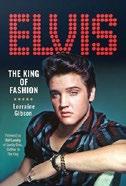
The King and his clothes. Since his death in 1977, there has been no shortage of books about Elvis Presley, and each generally attempts to provide new insights into the legendary performer. Gibson is no different, in that she makes the claim that Presley’s sense of style matched his sometimes introverted, sometimes confident personality, both on- and offstage, whether he wore blue suede shoes, black leather pants, or bedazzled leisure suits. In other words, Gibson argues that one’s image, developed over time, can profoundly change one’s sense of identity and self-worth. Gibson certainly proves her thesis; however, in an age when images are so pervasive and research on the subject is so widespread, is this point in any way unique? The author, with jubilance and a conversational tone, believes it is; some readers may feel otherwise. Because of the narrow scope of her argument, the book largely becomes another linear historical survey of the entertainer’s life from his youth, when he thought he could become a caped superhero, to his death as a bloated, wasted shadow of his former self. Gibson names the looks that Elvis sported—from the “Young Pretender” and “Rockabilly Rebel” to the “Star-Spangled Superstar”—and how those styles influenced fans and future musicians, including k.d. lang, Harry Styles, and Lana Del Rey. Also
included in the book are delightful photographs showing readers Elvis’ clothing styles, looks that Gibson explains chapter by chapter. Even with these images, though, much of the book reads like another straightforward chronology of a celebrity already revered by so many.
A close look at Elvis Presley’s panache.
Glinter, Ezra | Yale Univ. (288 pp.) $28.00 | Oct. 29, 2024 | 9780300222623
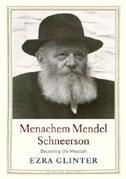
The life of one of the 20th century’s most influential Jewish leaders. Glinter provides an accessible, informed, and balanced biography of Rabbi Schneerson (1902-1994), rebbe of the ChabadLubavitch movement of Hassidism. The author takes on two tasks in this work. First, he explores the multilayered story of Schneerson’s life, which is split between the two different worlds of Eastern Europe and New York City, as well as two different eras, one as a student and scholar, the next as the innovative leader of an entire religious movement. Second, Glinter explains the history, culture, and influence of Chabad, which is no small endeavor, given its many complexities. Glinter allows the reader—Jewish or not—to gain a fuller understanding of Chabad Hasidism and its role in the world today. The author manages to tread on fragile ground with aplomb. In approaching a figure many believe to be the literal messiah, foretold in ancient prophetic literature, a scholar must demonstrate credibility, respect, and integrity in order to present the biography of an imperfect man yet recognize the esteem in which many hold him. Glinter walks this tightrope well, and the result is a worthwhile
portrait that is neither sensational nor hagiographic. Schneerson’s life is explored from a variety of angles: the global turmoil that shaped his youth, the almost disengaged man of scholarship, the pragmatic leadership of his years as rebbe, and the enthusiastic devotion of his followers. Yet none of this would make sense without Glinter’s excellent explanation of the history, theology, and culture of Hasidism, and Chabad especially. Jewish scholars will find nothing groundbreaking here, but for readers only somewhat familiar with the Hasidic population, Glinter has provided an exceptional tool for understanding. Insightful, balanced, and accessible introduction to Chabad and to its modern leader.
Gold, Lyta | Soft Skull Press (352 pp.) $27.00 | Oct. 29, 2024 | 9781593767709
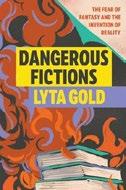
What good is fiction?
Journalist Gold makes an incisive book debut with a thoughtful, often witty, examination of the causes and consequences of banning novels. “Most of the time,” she writes, “when we get anxious about the effects of fiction, we’re worried about mimetic responses—not so much from ourselves but from other people.” From ancient Greece to present-day America, book banners claim that they are protecting readers from ideas about reality that would harm them or undermine the community’s values. To Plato, for example, tales of gods behaving badly were “always endorsement and a social license for bad behavior.” Gold skewers the justification used by right-wingers that readers—especially children—will mistake a story for reality, “and that this mistake will lead them into unhealthy or disreputable situations.” “Cancel culture,” Gold contends, though not as virulent as outright banning, arises from
the same “misguided presumptions” about fiction’s insidious power. For Gold, the crucial question is this: “How much can we expect of art and entertainment to fix our problems with reality, especially under our current economic and political system?” Gold refutes assertions from the left that “viewing and promoting something that the far right dislikes” is “a political act in itself,” and a virtuous act, at that. Reading about climate change, she reminds readers, doesn’t stop global warming. Gold looks at sci-fi, video games, movies, and TV to argue that media companies produce what is in their “financial best interest.” If an anti-capitalist novel were published, she writes, “it would just be a novel: it wouldn’t affect capitalism one way or another.” Still, Gold extols the impact of fiction: “We’re transformed by great writing,” she claims, “not beyond our own powers and capabilities but into them.”
A savvy contribution to current debates.
Gómez Urzaiz, Begoña | Norton (320 pp.) $18.99 paper | Nov. 12, 2024 | 9781324079477

The challenges of mothering. Even before she became a mother, Spanish journalist and podcast host Gómez Urzaiz was fascinated—and horrified—by mothers, in real life or in fiction, who abandoned their children. In her engaging debut book, she melds memoir, biography, and cultural criticism to offer an incisive look at the causes and consequences of such women’s decisions. Although she notes that most women who leave their children are “involuntary abandoners” whose families remain in their home country while they find work abroad, Gómez Urzaiz focuses on more well-known cases: women who have found motherhood stifling, hindering them from pursuing an intellectual or
creative life, or—in the case of actor Ingrid Bergman or Tolstoy’s Anna Karenina—because raising a child got in the way of a romantic relationship. These women include writers Muriel Spark, Doris Lessing, and Mercè Rodoreda; Gala Dalí, for whom a child was nothing more than an annoyance; Ibsen’s Nora Helmer; and Joanna Kramer in the movie Kramer vs Kramer Spark left her 4-year-old son in the care of nuns in Africa when she left for Edinburgh; although she retrieved him when he was 6, she handed over his care to his grandparents while she devoted herself to writing. Lessing, at 21, left her two small children and went to work in a law office, living in her own flat and later emigrating to London. As a mother of two sons, struggling to keep up a career as a freelance journalist, Gómez Urzaiz is forthright about the demands of motherhood. Caring for young children, she admits, is “living in a state of perpetual attack.” In most cases she recounts, though, abandonment leads to a state of perpetual sadness for mother and child.
Perceptive, compassionate portraits.
Hamilton, Nigel | Little, Brown (800 pp.) $38.00 | Nov. 5, 2024 | 9780316564632
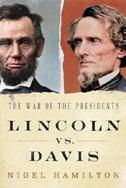
L incoln and Davis never met, but their strengths and weaknesses defined the shape of the Civil War, as this well-researched account explains.
Hamilton, an award-winning author, has written a long list of history books, including a trilogy about FDR’s leadership during wartime. So a study of the leaders of the Civil War—Abraham Lincoln in the Union, Jefferson Davis in the Confederacy—is a logical subject for him. It was an odd pairing: Lincoln knew about politics but not about military matters, while Davis was a hero from the Mexican War
>>>


JOHN LEWIS ARRIVED in the U.S. House of Representatives in 1986, representing an urban Atlanta district that was largely but not exclusively Black. He soon earned a reputation for gravitas and well-deliberated decisions; within a few years he bore the sobriquet “the Conscience of Congress.”
In his wisdom and manner, Lewis could be Solomonic, even saintly. But, as David Greenberg makes plain in his new book, John Lewis: A Life (Simon & Schuster, Oct. 8), Lewis was not without his human shortcomings. Getting to Congress, for example, involved a bruising primary battle with a fellow veteran of the civil rights movement, Julian Bond, who had proved himself a highly effective advocate for his constituency. Bond had also developed a costly and destructive addiction to cocaine, which Lewis didn’t hesitate to exploit in his campaign.
“You could make the argument that it was a legitimate thing to raise,” Greenberg tells Kirkus by telephone during a recent vacation on Cape Cod. “But, you know, a lot of people saw this as John Lewis, the so-called saint, being a political animal like everybody else. He
The author’s new biography makes a case for the late John Lewis as “the Conscience of Congress.”
BY GREGORY MCNAMEE
wanted to win, and he resorted to talking about Bond’s drug abuse to do it.”
For another thing, Greenberg observes, there was a time when the entire Black Congressional Caucus was called “the Conscience of Congress.” Lewis eventually assumed the mantle, and even if none of his congressional peers objected openly, there was behind-the-scenes talk that Lewis sought too much of the limelight.
“When he wrote his memoir and ascended to celebrityhood,” says Greenberg, “he left behind the Student Nonviolent Coordinating Committee that he had been a part of. SNCC had always seen itself as a group, not as a bunch of heroic individuals, and they felt that Lewis didn’t fully give credit to them and that maybe he had come to enjoy his fame and celebrity a little too much.”
Not that he didn’t deserve that fame and celebrity, and rare is the idol without feet of clay. Indeed, adds Greenberg, a Rutgers professor of history and journalism whose previous work has often centered on the presidency, it was Lewis’ undeniable stature as “a distinctive figure in our time” that convinced Greenberg that it would be
worth the six-odd years he spent working on the biography.
It helped, he admits, that one of Lewis’s late-in-life archenemies came into office at about the time Greenberg was finishing his previous book, The Republic of Spin. “In politics presidents stay within the defensible boundaries of what can be said to be true, even if they’re putting a spin on it. Trump was taking our politics somewhere else. I wanted to get away from all that and from him, since I was spending so much time with him anyway. We all were—on the news, on our homepages, everywhere.”
Watching a palate-cleansing documentary on the late Robert F. Kennedy, Greenberg noticed that Lewis kept appearing onscreen. “I must have known, but I had forgotten,” he says, “that Lewis worked for Bobby Kennedy in the ’68 campaign. And somehow it just occurred to me: I wonder if there’s been a biography about John Lewis? ” There were several children’s books, he discovered, but no full biography. “I didn’t quite formulate it this way at the time, but [I positioned him] as an anti-Trump, someone who represented a lot of what has been most noble in our political traditions.”
Lewis grew up on a small farm in segregated Alabama, recalling of his childhood, “The world I lived in was completely Black. I cannot even recall seeing somebody white.” A devout Christian from an early age, Lewis had an informed sense of systemic injustice, and the bookish young man enrolled in the reform-minded American Baptist Theological Seminary in Nashville, where the “social gospel” found adherents among students and faculty.
Steeped in philosophy and history, Lewis seemed to have a promising career as a minister ahead. But then he wrote a letter to Martin Luther King Jr., offering to lead an effort to desegregate a teacher’s college in Montgomery. Because Lewis was underage, he couldn’t file the necessary lawsuit himself, but King and his lieutenants were impressed by Lewis’ commitment. For his part, Lewis said simply, “I love life, but I’m prepared to die if that’s what it takes to bring about true equality in America.”
Lewis showed that bravery many times; says Greenberg, “It was as if fear vacated his body.” Soon after returning to Nashville, he led a sit-in at the downtown Woolworth’s lunch counter, drafting a sermon while enduring the jeers and shoves of rowdy white supremacists. Unnervingly serene and apparently fearless, he endured beatings by civilians and cops alike, his head once broken open by a mob carrying tire irons and baseball bats. Even so, he remained committed to King’s cause of nonviolence—and for that he was sidelined by younger activists who would become increasingly militant in the late ’60s. Lewis had a simple explanation: “I was pious, not hip. I believed in an interracial democracy, and I believed in the beloved community.…I was never used to the sniping that went on, and I couldn’t snipe at Martin King, and I wasn’t in any of the cliques.”
Lewis’ commanding moral authority was second only to King’s, and after King’s assassination Lewis continued to advocate tirelessly for civil rights. He moved between groups and coalitions, building and crossing bridges, forging strategic alliances. When Lewis entered politics at the city level in Atlanta, Greenberg says, he “had an
integrationist vision of equality, and he was proud to represent both Black and white and Atlantans of other racial identities.” Many civil rights leaders went on to head universities, foundations, churches, and companies, notes Greenberg, but Lewis took the fight for civil rights to the halls of the Capitol. He retained that integrationist vision even as more divisive political strains emerged, often saying, “No matter what ship your ancestors came over on, we’re all in the same boat here.”
So John Lewis was the “Conscience of Congress” after all, even if the rift with Julian Bond never healed. “He really came to inhabit that nickname, and he worked to be worthy of it,” says Greenberg. For one thing, Lewis never wavered in his commitment to nonviolence. “And it wasn’t just nonviolence as a tactic, where getting beat up wins you sympathy from people watching on TV,” Greenberg explains, “but the deep
commitment to nonviolence as a way of life, achieving true forgiveness of people who oppressed you and meeting that with love. That was the key to John Lewis’s whole career, and one reason he did achieve that status, that aura, was that people could see that there was a truth to that commitment.”
“Think of it this way,” Greenberg adds. “There are two paths for America to follow. Raphael Warnock, the senator from Georgia, calls the first January 5th, the path of freedom and equality. The other is January 6th. Both Warnock and his fellow Democratic senator from Georgia, Jon Ossoff, were elected that week in 2021. Ossoff was Lewis’s intern. Warnock was Lewis’s pastor. When they were elected together, it’s not too much to say that they both came in on the legacy of John Lewis.”
Gregory McNamee is a contributing writer.
It wasn’t just nonviolence as a tactic, where getting beat up wins you sympathy from people watching on TV.


“Prepare to be captivated by a world where every shadow conceals a mystery, every whisper harbors a secret, and every choice echoes in worlds seen and unseen.”
Jake Adelstein, author of Tokyo Vice and e Last Yakuza




Set in 1877 Kyoto, Ghost Train is a dazzling, meticulously researched tale which combines historical fiction with traditional Japanese folk horror. It is also the story of a teenage girl’s evolution as she confronts the rapidly changing world of 19th century Japan.




















www.selectbooks.com SelectBooks is distributed by Independent Publishers Group (IPG) Available for order through INGRAM, Baker & Taylor, Bookazine, or direct from IPG distribution
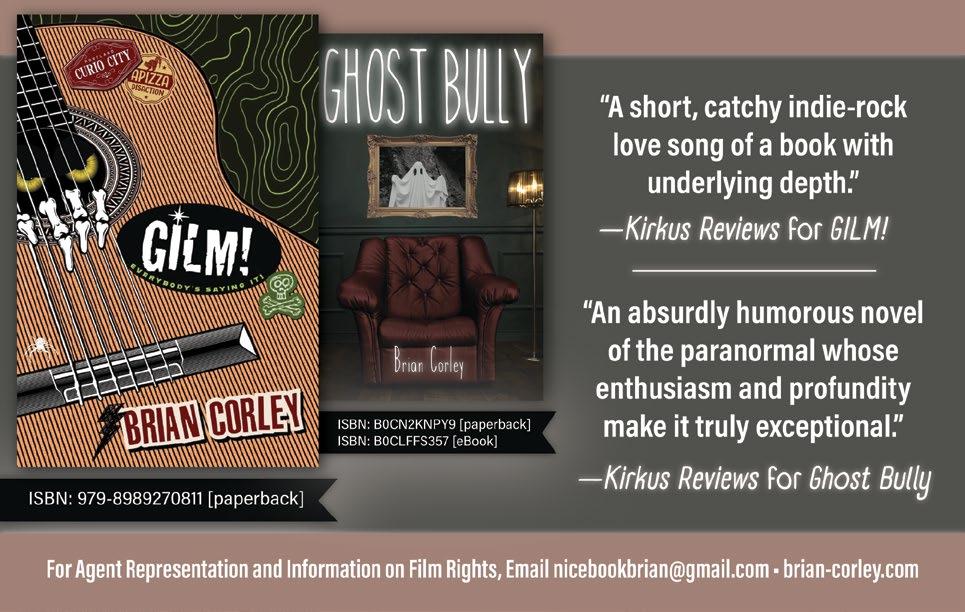
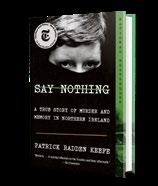
The FX limited series is based on Patrick Radden Keefe’s 2019 book.
The FX limited series based on Patrick Radden Keefe’s Say Nothing: A True Story of Murder and Memory in
Northern Ireland has a premiere date, Deadline reports.
The series’ nine episodes will begin streaming on Hulu on Nov. 14 in the U.S., and on Disney+ on the same day in the U.K., Ireland, and several other countries.
Keefe’s book, published in 2019 by Doubleday, is a history of the Troubles in Northern Ireland—the 30-year conflict between Irish nationalists and U.K. loyalists—that focuses on the murder of Jean McConville by the Irish Republican Army.
In a starred review, a critic for Kirkus called the book “a harrowing story of
politically motivated crime that could not have been better told.” The book won the National Book Critics Circle Award and was a finalist for the Kirkus Prize.
The series adaptation stars Lola Petticrew (Tuesday ), Anthony Boyle (Masters of the Air Finan (The Responder Hazel Doupe (The Miracle Club), and Megan Cusack (Call the Midwife). Keefe is an executive producer of the show.

Keefe’s New Yorker article “The Family That Built an Empire of Pain” partially formed the basis for the 2023 miniseries Painkiller, and his book The Snakehead is currently in the works as a television series.—M.S.


but weak on management. Neither of them wanted war but soon realized that conflict was inevitable. Both were plagued by incompetent generals, especially in the early stages of the war. Hamilton tracks the moves and countermoves of the two presidents, as well as the constraints acting upon them. Crucially, Lincoln could claim a popular mandate, whereas Davis had been selected by a cabal of state representatives. Hamilton unfolds the split-screen story at a magisterial pace, digging through records of the time and providing portraits of the main military and political figures. He investigates the fateful Confederate decision to invade the North, noting how close the Union came to losing the war. The critical turning point, however, was Lincoln’s Emancipation Proclamation, which provided a moral basis for the war and robbed the South of international support. Hamilton provides a great deal of detail but he manages to keep the narrative focused. It should be said, however, that at over 700 pages, Lincoln vs. Davis is a daunting read. Nevertheless, those willing to accept the challenge will find it informative and authoritative. This immense examination of the Civil War presidents provides a crucial perspective on how wars are fought, won, and lost.
Henderson, Anna Farro | Univ. of Minnesota (208 pp.) | $18.95 paper Oct. 22, 2024 | 9781517916046
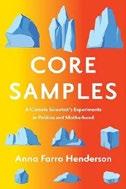
Science, politics, and family can make for a volatile mix. How much do we owe to the world, and how much do we owe to ourselves? This is the question at the heart of Henderson’s book; as a climate scientist and an award-winning
writer, she is a good person to explore it. She has led a colorful life, and the early part of her memoir recounts adventures tramping to inhospitable places to drill for specimens in glaciers and frozen lake beds. The science community can be sexist, so she had to work harder than many of her peers to build a reputation. Her career goal was a tenured position at a prestigious university, but she came to realize that publishing articles about climate data in academic journals was not having much impact. So when the chance to move to the political side appeared, she jumped at it. As an environmental policy adviser first to Senator Al Franken, then to Minnesota Governor Mark Dayton, she found the work vastly different from scientific research, and she felt she was fostering positive changes. Over time, however, beyond the constant irritant and distraction of discrimination, her desire to have children was impossible to reconcile with the grinding pace of political life; Henderson eventually opted for a more settled existence with her family. She still contributes to the field through teaching and advocacy. Her story is one that many readers, not just scientists, will appreciate.
A lively and accessible narrative about finding a balance between convictions and love.
Herring, Emily | Basic Books (320 pp.)
$32.00 | Oct. 22, 2024 | 9781541600942
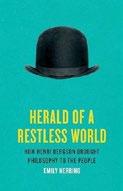
An illuminating study of the life and work of the acclaimed French philosopher Henri Bergson (1859-1941).
In what is marketed as the first English-language biography of Bergson, Herring (Ph.D. in the history and philosophy of science from the University of Leeds) diligently aims to reinvigorate
Bergson’s central philosophical concepts for a contemporary readership. His ideas garnered widespread attention in the early 1900s, establishing Bergson as an intellectual celebrity. His expanding orbit included such notables as Albert Einstein, William James (a close friend), and his not-yet-famous second cousin Marcel Proust. Herring explores how Bergson’s philosophy resonated with a society transitioning into the modern world. Bergson’s emphasis on the time-altering distinctiveness of personal experience, particularly his concept of durée, deeply connected with individuals grappling with rapid technological and social transformations. Bergson once summarized this concept as “time is not space.” Herring notes, “It was the idea to which he returned in all of his works, and that made him famous.” This notion of duration profoundly connected with those navigating the accelerating pace of modern life, helping to explain Bergson’s popularity during this era of sweeping change. Herring later observes, “In many ways, the concerns of people at the beginning of the twentieth century echo our twenty-first century anxieties, and Bergson might well offer some solutions.” Though Bergson would receive numerous honors throughout the 1920s, including a Nobel Prize in 1927, and write one final work, The Two Sources of Morality and Religion (1932), Herring sympathetically traces how Bergson’s popular appeal began to wane after World War I. He also faced antisemitic critics who viewed him as a “barbarian.” Herring chronicles how health issues and changing intellectual currents would eventually lead to his relative obscurity.
A solidly researched and earnestly accessible portrait of a creative, free-thinking intellect.

For more books about philosophy, visit Kirkus online.
and perseverance in ignoring naysayers.
LOVELY
ONE
Jackson, Ketanji Brown | Random House (464 pp.) | Sept. 3, 2024 | 9780593729908
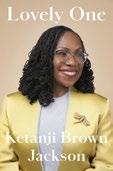
The first Black female Supreme Court justice shares her story. At first blush, the title of U.S. Supreme Court Justice Jackson’s memoir may seem like an exercise in extreme solipsism. But as every review and article and interview about this book will point out, the title is the English translation of the author’s first and middle names, Ketanji Onyika. That is merely the first captivating thing readers will learn about Jackson, who by any objective measure is one of the most interesting people to serve as a Supreme Court justice. Relatable is perhaps not an adjective one would associate with someone who not only is a member of the nation’s highest tribunal but also holds undergraduate and law degrees from Harvard, clerked for the man whom she would replace on the court, and performed as an improv comedian. But it fits, and Jackson is deftly equal to the task she set before herself in writing with candor about her ambition and inspirations, work-life balance (she is married to a surgeon who happens to be a descendant of a delegate to the Continental Congress), and perseverance in ignoring naysayers. Jackson’s memoir will inevitably be compared to books written by her colleagues on the court. It might not have the gripping narrative of Clarence Thomas’ My Grandfather’s Son , but it is far more dynamic than the prose of Sonia Sotomayor’s My Beloved World. Since everything in contemporary American life is politicized, the right may automatically
dismiss Jackson’s memoir as DEI dreck from an activist judge, while those on the left may hail it as the greatest autobiography by an American public figure since Ulysses S. Grant’s. Neither is correct. What Jackson offers, however, is a well-written, intriguing, and quintessentially American story about a fascinating woman who is truly the embodiment of what is possible in the United States because of its freedoms and in spite of its flaws—lovely indeed. A terrific memoir.
Jansson, Tove | Illus. by Tuulikki Pietilä Trans. by Thomas Teal | Timber (128 pp.) $28.00 | Oct. 22, 2024 | 9781643264790

The renowned Finnish author returns to the Baltic archipelago that formed the setting for her 1972 novel The Summer Book
As in her novel, Jansson grew up with a spirited grandmother who wasn’t shy of doing hard work and draining a beer when it was done. Here Jansson (1914–2001), author of the beloved Moomin series of children’s books, moves a few islands farther away from shore, arriving at a “fierce little skerry” called Klovharun. Whereas Jansson had shared the earlier island with her grandmother, mother (“Ham,” for her maiden name, Hammarsten), and brother, here she makes a home on Klovharun with the woman who will be her life companion, Tuulikki (“Tooti”) Pietilä. An accomplished graphic artist—her abstract work punctuates these pages—Tooti is never short of
opinions, telling Jansson, “Well, for once you could stick to the facts a little.” The facts are abundant, as Jansson describes dynamiting out a basement for the essentially illegal house that she and Tooti build, assured by a bureaucrat-hating friend that “the law says that no building can be torn down if the builder has framed as high as the roof beam.” That’s good incentive, given that winter is fast approaching. One of Jansson’s great realizations is that they are mere guests on this difficult land of black rock and white sand and snow, that nothing they can build will ever last. (Says Ham, wearily, of Baltic weather reports, “All the facts and statistics are idiotic, because the sea does precisely whatever it wants.”) Aging as the years pass, Jansson and Tooti return to the city, but not before seeding their little island house with delightful notes (“Don’t close the damper, it will rust shut”) for the next person to come along. A pleasure for Jansson’s many fans, and a lovely memoir of hardscrabble island life.
Johnsen, Sönke | Princeton Univ. (224 pp.) $24.95 | Oct. 15, 2024 | 9780691181745
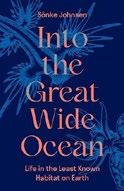
A fact-filled tour of the ocean and its sometimes improbable denizens. Why do people drown in the ocean? Because they inhale water and die. But why? It’s one of many questions to which Duke biology professor Johnsen turns, explaining that whereas most of the human body is “only slightly denser than water,” we can float only so long before we begin to sink, succumbing to the physics of water pressure, and “water is surprisingly heavy and thus exerts substantial pressure, even at shallow depths.” This fact, Johnsen continues,
constitutes a touchpoint for scuba diving instruction, training in an activity that is both fraught with peril and essential to the pursuit of oceanography. Indeed, by Johnsen’s account, it’s a wonder that science is done at all in the pelagic portion of the ocean, which is to say, everything but the bottom of the sea, which is its own world. Doing research in the open ocean can kill a person in many different ways, from attacks by unfriendly fish to mechanical malfunctions and more, and in any event it’s hugely expensive to operate a research vessel (“the ocean doesn’t have a smell,” he writes, “but the ships certainly do. Outside, they smell of diesel, and inside they smell of ice cream mixed with the ‘butter’ in microwave popcorn”). Johnsen’s prose is often dense with both scientific terminology and scientific concepts, but he asks and answers fascinating questions (even if you’re not a marine biology nerd): Why are so many fish silver in color? (The silver is a kind of camouflage, resembling light flashing in water.) How is it that green sea turtles can find their way, year after year, across thousands of miles to a “tiny volcano in the South Atlantic”? (They’re guided by Earth’s magnetic field.) Must sharks constantly move forward? (No.)
A pleasing excursion into the deep for scientifically inclined readers.
Khader, Serene | Beacon Press (256 pp.)
$29.95 | Oct. 29, 2024 | 9780807008270
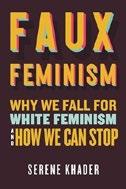
A political philosopher reimagines contemporary feminism. When Khader becomes pregnant, her friends shower her with “all the cliché bookish Brooklyn mom swag,” including a series of feminist
children’s books with titles like Dream Big. These gifts purportedly celebrated radical feminism, but Khader realizes she’d seen their messages before: an amicus brief supporting the Supreme Court decision to repeal the constitutional right to abortion contained language embracing women’s “total freedom from burdens of unwanted children.” The call for freedom for American women is something Khader associates with her own progressive views and not those of conservatives who backed policies that restricted reproductive rights. Khader asks, “Since when were conservatives saying that women were free? And since when did they seem to be conceding that we should be?” The co-optation of these ideas inspires Khader to investigate the state of c urrent feminism and to engage in a robust critique of which types of feminism are effective tools for achieving equity. Khader writes, “This book is about how to recognize feminist visions that harm and exclude, and how to stop ourselves from falling into them.” In the end, Khader encourages feminists to take stances that work toward systemic equality rather than personal freedom, and to be wary of feminists who conflate the two. Her book is well researched, compellin gly written, and passionately argued. At times, the terms Khader uses are confusing or redundant, since they often feel like a rewording of a facet of white feminism that other scholars have already critiqued. That being said, the depth of her analysis and the breadth of her research make this a fascinating and informative read.
A critique of modern feminism that advocates for a more intersectional, systems-based approach.

Khosrokhavar, Farhad | Polity (260 pp.)
$64.95 | Nov. 4, 2024 | 9781509564491
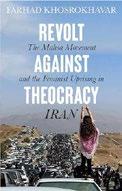
An analysis of the latest wave of feminist protest in Iran.
For more books about intersectionality, visit Kirkus online.
In September 2022, Mahsa Amini was killed by officers of the Islamic Republic’s vice squad after being arrested in Tehran for wearing an ill-fitting veil. Her murder sparked a series of protests across Iran that lasted several months, fueled by social media and driven by Iranian youth, both male and female. While Iran has had its share of notable feminist activists following the Islamic Revolution and the implementation of the mandatory veil, Khosrokhavar contends that the “Mahsa Movement” established a new precedent for activism in the country, distinct in its embrace by youth whose growing secularization has cultivated a certain “joie de vivre” that lays a foundation for equality and cooperation between men and women. The author catalogs outrageous acts of violence against women, offers examples of increasing and broadening support and solidarity from popular icons and members of the diaspora, and tells of the defiant spirit among the youth in today’s Iran. But his chief preoccupation is with the dispositions of today’s Iranian youth, whose changing values and worldview swirl beneath their political activity and the Islamic Republic’s oppressive backlash. These youth belong to the “would-be middle class,” robbed of future prospects, economic mobility, and political freedom by autocracy and theocratic Shi’ism; they are calling for a full-blown alternative to the Islamic regime rather than posing arguments laced with theological justification and sensitivity. The text is well researched, but the author
relies on repetitive insistence, rather than methodical organization, leaving the fullness of the Mahsa Movement’s singularity, promise, and forewarning rather unsharpened. Still, Khosrokhavar’s text clarifies the terms of the mounting pressure in the standoff between an increasingly desperate and ruthless Islamic Republic and its youthful citizens. A dense overview of a movement with meaningful global implications.
LaBrie, Sarah | Harper/HarperCollins (224 pp.)
$27.99 | Oct. 22, 2024 | 9780063280724
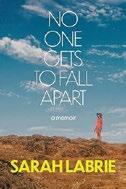
A memoir that faces failure head-on. In Labrie’s raw account, there is the failure of her mother to parent her daughter without resorting to abuse. There is also her grandmother’s refusal to seek medical help for her daughter’s escalating mental health crisis. And LaBrie tells of battling her own mental health issues, making clear the danger she faced in having to parent herself. The author does a remarkable job presenting the ways in which our health care system has failed the women in her family. Much of the memoir focuses on LaBrie’s sense of failure as a fiction writer. She owns up to feeling jealous of a friend who has become popular thanks to her own book: “At parties,” she writes, “when people learn that we are close, they speak about her book in breathless tones: ‘Oh, I love her.’ But you don’t even know her, I want to say back. I love her.” LaBrie fears that a novel she is working on isn’t more appealing because she is unwilling to give in to the pressure to write in a certain style: “I’m not postracial, but a Blackness that defines itself entirely oppositional is never a type of Black I learned how to be.” Early on, LaBrie reasons that
when faced with problems in life, “No one is allowed to fall apart.” This memoir is her attempt to challenge that perspective. A bracing look at a writer’s troubled past.
Lebermann, Virginia | The Monacelli Press (320 pp.) | $60.00
Oct. 22, 2024 | 9781580936262
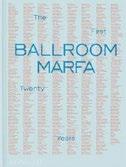
The story of the first 20 years of an innovative arts center in West Texas. In 2002, eager to leave New York City and find “a place with that elusive composition of elements that would finally set my painting free,” co-founder Fairfax Dorn set out for her home state of Texas. After she and Lebermann attended a reading in Marfa, they decided to turn that sleepy town into “a locus of possibilities, a place to manifest what anywhere else might be impossibilities.” They found a “tumbledown onetime bus stop, car repair shop, grocery store, gallery, and (most importantly) dance hall” and, with the help of Vance Knowles, a curator they brought on board “to bring in people not accustomed to the higher arts or art on walls: Punks. Ranchers. Cowboys. Queers. Escapees. Local legends. City. Town. Country,” they opened Ballroom Marfa, dedicated to “unmitigated youthful savagery— pour all the ingredients in a pot and whistle while you wait—in avoidance of anything resembling the obvious.” This coffee-table book highlights the
artists, concerts, film series, youth programs, and more that have appeared there, from Prada Marfa , a life-size store model on “a barren stretch of highway” that housed “luxury goods from the famed fashion brand’s fall 2005 collection of bags and shoes, but thwarts commerce, as access is impossible; the door is always locked,” to Irrigación, a video work by Teresa Margolles that “exposes the ongoing violence in Mexico, specifically along its northern border, through penetrating visual metaphor.” The many reminiscences and multidisciplinary projects described here blend together after a while, but the book is a handsome tribute and contains numerous entertaining anecdotes, as when one artist says a rancher told him he had no issue with him being Jewish and “homosexual,” but, “My one thing I do take issue with is you being a vegetarian.”
A lively compendium of reminiscences about a unique arts venue.
Lee, Michael G. | Chicago Review Press (320 pp.) | $30.00 Oct. 8, 2024 | 9780914090304
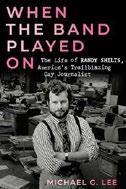
Admiring but not uncritical life of the pioneering reporter on the AIDS outbreak in the early 1980s.
“AIDS did not just happen, AIDS was allowed to happen.” So insisted Shilts, a reporter for the San Francisco Chronicle who arrived to “straight” journalism by
How an old dance hall in the desert became an innovative arts center.
BALLROOM MARFA
way of sometimes controversial advocacy pieces for the city’s gay press. One early source of division was his reporting on what was first called GRID, or gay-related immune deficiency, which, Shilts suggested, called for, among other things, self-policing among the gay community on issues of addiction and its risky sequelae. At the same time, he argued that the health establishment, having stigmatized that community, did too little to even try to understand the “gay plague” that frontline workers were even then calling a pandemic. The media was not much help; as biographer and LGBTQ+ activist Lee notes, “mainstream news organizations still produced the occasional medical story, but most of the coverage came from a handful of gay journalists…often against the wishes of their publishers and advertisers.” Shilts continued at times to find himself at odds with the community to which he himself belonged, to say nothing of the medical and epidemiological establishment, responsible for what Lee calls “a major systemic clusterfuck.” Shilts’ book And the Band Played On , later to become a TV movie, worked this theme heavily, earning both praise and criticism over thorny issues such as the quest for the so-called Patient Zero, a “loaded term…[that] hinted at more than the evidence could deliver.” For all that, Shilts’ work, well described and documented here, helped draw public attention to a disease that all too many—not least in the Reagan administration— plainly wished to ignore.
A nuanced portrait of a journalist and activist who sacrificed all while sounding a pandemic alarm.

Shilts argued that the health establishment did little to understand the “gay plague.”
WHEN
Lincoln, Margarette | Yale Univ. (368 pp.)
$35.00 | Oct. 29, 2024 | 9780300264586
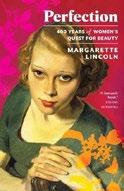
Women’s wear— and what it has meant over the centuries.
A fascinating exploration of shifting beauty standards.
Massie-Blomfield, Amber | Norton (272 pp.)
$17.99 paper | Nov. 5, 2024 | 9781324078753
For more books by and about Randy Shilts, visit Kirkus online.
With dazzling intellectual acumen, this book examines the various ways in which women’s bodies have been expressed culturally. It focuses on British society from the 17th century to the present, challenging the normativity of “white” skin as a “badge of civilisation” and tool of oppression. Throughout, beauty standards are employed to analyze the racial and socioeconomic implications of appearance. Far from superficial, Lincoln’s research is supported by a rigorous examination of what it means to be a woman in the Western world and the role of white women in furthering trade and colonialism. Lincoln draws parallels across centuries, writing about bodices and corsets and the pressures of social media. She investigates the Western obsession with slimness, from Catholic ideas of abstinence as virtue to the contemporary diet industry, noting that, in the suffragette movement, “a slender, fit body became associated with intellectual achievement.” Divided into categories like body, skin, makeup, teeth, and hair, the book is as thorough as it is fascinating, tracing, for example, how British standards of beauty became instrumental in enforcing colonial constructions of race and class. Diagrams, old photos, and advertisements add a richness and immediacy to the text.
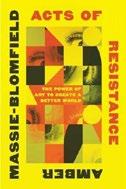
Delving into political art across genres, places, and periods. People have been making art since they lived in caves, but the reason why has always been hard to pin down.
To Massie-Blomfield, a writer and theater director, art is a crucial part of political action, and in the essays of Acts of Resistance she pulls together a number of examples. She covers some notable cases, from Susan Sontag producing Waiting for Godot in war-torn Sarejevo to authors exposing oil pollution in Nigeria. She also documents alternative communities that have sprung up at protest sites, and she is particularly impressed by the ZAD community established to prevent the building of a new airport in France (ZAD stands for Zone à Défendre, or Zone to Defend). Some readers might find the author’s occasional drumbeating, sensationalist style to be wearisome. Massie-Blomfield maintains that the sense of hope inherent in producing resistance art is necessary for continued human existence, and readers who agree with that sentiment will like this book. Others might find that Acts of Resistance raises more questions than it can answer. Interesting cases of resistance art, sometimes hindered by ideological views.
Mayer, Youngmi | Little, Brown (256 pp.)
$29.00 | Nov. 12, 2024 | 9780316569231
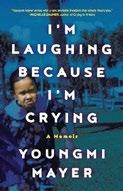
A Korean American stand-up comic, influencer, and podcaster shares her story, and her rage.
Early in her provocative and passionate memoir, Mayer explains that she feels she can speak about being Asian with more confidence than other Asian American comics because she was raised in Asia. The daughter of a Korean mother and a white American father, she was born in the U.S., grew up in Seoul and Saipan, then at the age of 20 ran away from her family and her oppressive then-boyfriend, landing first in San Francisco. She met and married the celebrity chef Danny Bowien; moved to New York and had a child; became quite wealthy; lost it all. The best parts of Mayer’s memoir are where she explains aspects of Korean history and culture, including painful subjects like the country’s relationship with Japan and international adoption. She presents terms and concepts in Hanjul characters as well as in transliteration and vibrantly weaves them into her story: for example, nunchi , which is the Korean way of knowing what you’re supposed to do in any situation (her white father did not), and wangtutta , the lowest of losers (herself, at school). It’s easy to predict that the woman behind the Hairy Butthole podcast is not worried about offending people, and that is certainly true. Whether or not you fall into one of the groups Mayer
scorns—white, American, male, rich, Japanese, liberal, and more—buckle your seat belts. She heaps on the generalizations, extreme irony, profanity, and fury. According to her bio, she is “one of the rare comedians working today who has obtained success both on online platforms and in the mainstream,” which suggests that lumping people into categories and making proclamations about them works better in stand-up than it does on the page.
If you can tolerate the use of words as a blunt instrument, this challenging book has a lot to say.
McIntyre, Trevor B. | Casemate (400 pp.) $37.95 | Oct. 31, 2024 | 9781804511657
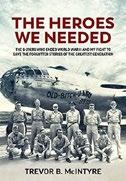
The story of a time when young Americans showed remarkable courage. They were, in their way, beautiful pieces of aviation machinery. The B-29 Superfortress bomber was the largest combat airplane of World War II, yet it displayed a streamlined, silver grace. They, and the young men who flew in them, were pivotal in the victory over Japan, and McIntyre tells their story with authority and compassion. His project began, he says, when he bought a scrapbook on eBay, which turned out to be about one of the men killed on a B-29 mission. McIntyre began to collect
Coming to America, becoming wealthy, then losing it all.
I’M LAUGHING BECAUSE I’M CRYING
militaria, as well as journals and official records, then interviewed some of the surviving airmen. He explains that designing and building the B-29 was a massive undertaking. Each plane was made of 40,540 parts, with much of the construction work done by women. The first combat missions were flown in June 1944, and the number of planes gradually increased. But the cost was high, with Japanese fighters shooting down scores of B-29s and even deliberately ramming them. McIntyre recounts the stories of many airmen who did not return, which are undeniably touching, as are the photographs he includes. Because of their size, the B-29s were able to drop the atomic bombs that ended the war. But it is the human stories that resonate the most. In fact, McIntyre says he occasionally had to put the book aside because of the emotional toll it took on him. “We all know that freedom isn’t free, but most people really don’t know the price of freedom,” he writes. “Now you do.”
A heartfelt account of the men who flew the combat airplane known as the Superfortress.
McNeil, Jean | Barbican Press (280 pp.) $18.99 paper | Nov. 5, 2024 | 9781909954113

A travel writer muses about age and a warming planet. A novelist and academic as well as a journalist, McNeil, author of Ice Diaries: An Antarctic Memoir, has reached middle age with over a dozen novels and nonfiction works under her belt, so a collection of her musings is worth a reader’s time. She opens with 30 pages on her months in Kenya earning a license as a professional safari guide. Without losing sight of the exotic surroundings,
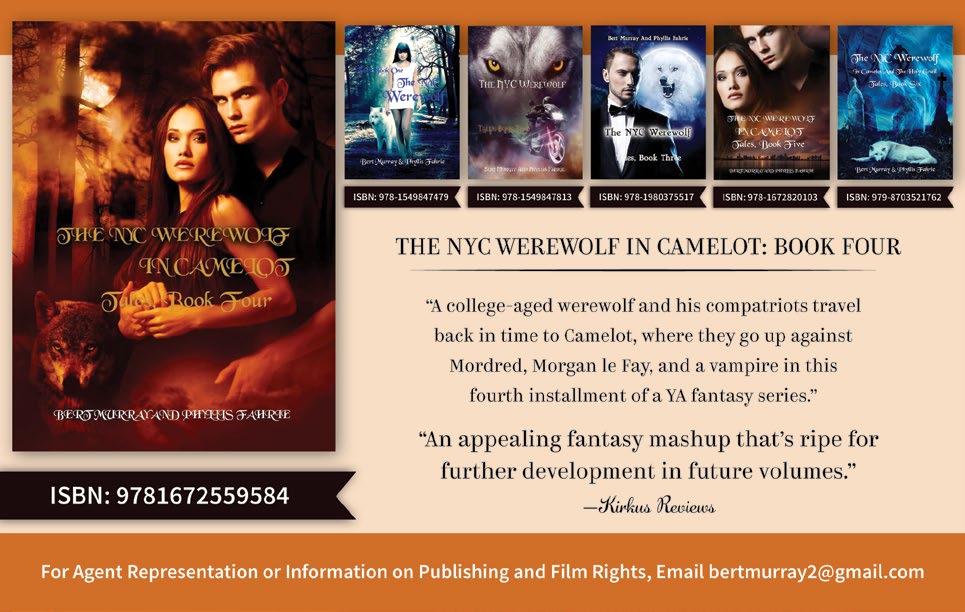
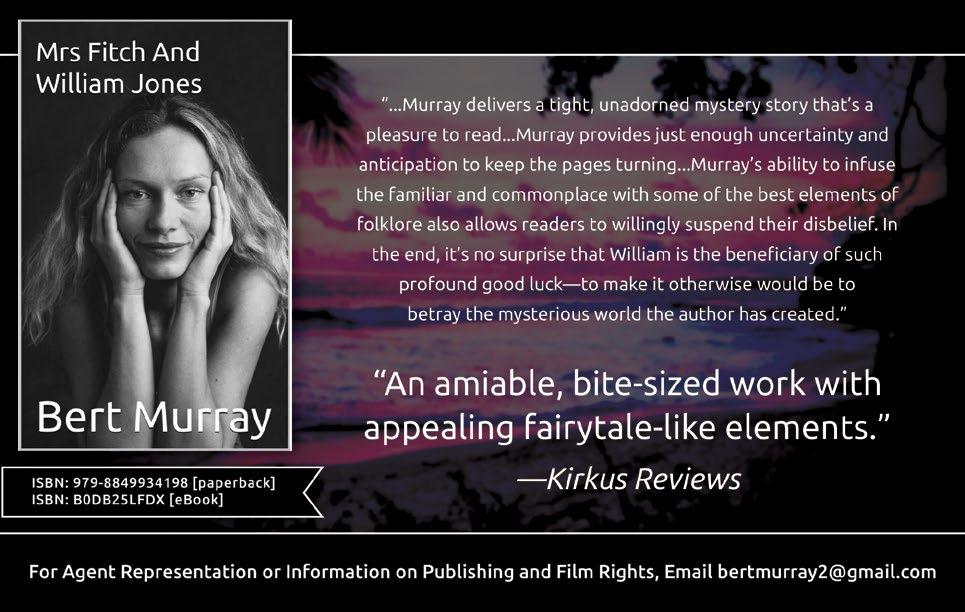


EDITORS’ PICKS:
Where Wolves Don’t Die by Anton Treuer, illus. by Mangeshig Pawis-Steckley (Levine Querido)
Borderlands and the Mexican American Story by David Dorado Romo (Crown)
Hum by Helen Phillips (Marysue Rucci Books)
THANKS TO OUR SPONSORS:
The Zeroth Day by Daniil Rozental
Bubba’s Dad, Duffy, and College Football’s Underground Railroad by Tom Shanahan
Fully Booked is produced by Cabel Adkins Audio and Megan Labrise.

Métis storyteller Chris La Tray shares his powerful tale of tribal enrollment. BY MEGAN LABRISE
ON THIS EPISODE of Fully Booked, Chris La Tray discusses Becoming Little Shell: A Landless Indian’s Journey Home (Milkweed, Aug. 20). In this standout debut memoir, La Tray, Montana’s poet laureate, tells the story of embracing his identity as a member of the Little Shell Tribe of Chippewa Indians. In a starred review, Kirkus calls Becoming Little Shell “a brilliant contribution to the canon of Native American literature.”
Chris La Tray is an enrolled member of the Little Shell Tribe of Chippewa Indians. His first book, One-Sentence Journal: Short Poems and Essays From the World at Large, won the 2018 Montana Book Award and a 2019 High Plains Book Award. He writes the weekly newsletter An Irritable Métis and lives near Frenchtown, Montana.
Here’s a bit more from our starred review: “La Tray, a Métis storyteller, grew up with a strong curiosity about Indigenous culture, captivated by his grandmother’s stories about their family history, but he was also raised by a father who did not want to acknowledge their Indigeneity. ‘Suggesting my dad was Native made him angry. I could never understand why. I was the opposite,’ writes the author. When his father died in 2014, he left behind ‘a lifetime of questions about who he was and where he came from. No, who we are, where we come from.’ Without his father to ask, La Tray set out to answer questions about his family’s heritage and that of the tribe in which he would eventually enroll: the Little Shell Tribe of Chippewa Indians. The resulting narrative is richly layered, carried across time and the vast state of Montana by the author’s unique voice and masterful storytelling. Building off the work of those who came before him, such as historian and folklorist Nicholas Vrooman, La Tray weaves a history of his tribe that blooms into the present day.”


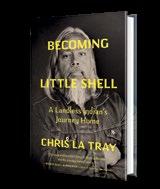
La Tray, Chris Milkweed | 256 pp. | $28.00 Aug. 20, 2024 | 9781571313980
La Tray tells us about western Montana: its landscape, rivers, population, wildlife, and highways. We discuss his relationship to his Indigenous heritage growing up, and how and when he decided to learn more about his father’s side of the family. La Tray shares his admiration and affection for Vrooman, whose book The Whole Country Was… ‘One Robe’: The Little Shell Tribe’s America inspired his research. We talk about what it means to identify as a storyteller and the importance of integrating multiple streams of knowledge into our understanding of historical events. We also talk about the federal restoration of the Little Shell Tribe, communities of care, women’s power, Indigenous languages today, the best parts of his job as poet laureate, and much more.
Then editors Laura Simeon, Mahnaz Dar, and Laurie Muchnick share their top picks in books for the week.
Editor-at-large Megan Labrise hosts the Fully Booked podcast.
The journalist’s Through Mom’s Eyes is based on her Today show segment.
Sheinelle Jones will write about motherhood in a book coming next year, People magazine reports.
G.P. Putnam’s Sons will publish the journalist’s Through Mom’s Eyes: Simple Wisdom From Mothers Who Raised Extraordinary Humans in the spring. The press describes the book as “an inspiring collection of heartfelt life-lessons from hard working moms who raised some of our favorite celebrities.” Jones worked as a broadcast journalist for local television stations
before joining the Today show in 2014; she is currently a co-host of the program. She hosts a segment on the show called “Through Mom’s Eyes,” in which she interviews the mothers of celebrities.
The segment is the inspiration for her book, she told People
“I noticed after interviewing about 20 of them that I was taking all of these jewels and applying it to myself for my own kids, calling my girlfriends and being like, Can I tell you how Steph Curry’s mom got him to do his chores? ” she said.
Putnam says, “By combining behind-thescenes insights from top celebrity mothers—such as the moms of Matthew McConaughey, Serena and Venus Williams, and Padma Lakshmi—with her own tales from the trenches of modern parenting, Sheinelle reveals how to make it through the hard parts of motherhood and still tap into the joys of it with empathy, generosity, and solidarity.”

Through Mom’s Eyes is slated for publication on April 15, 2025.—M.S.


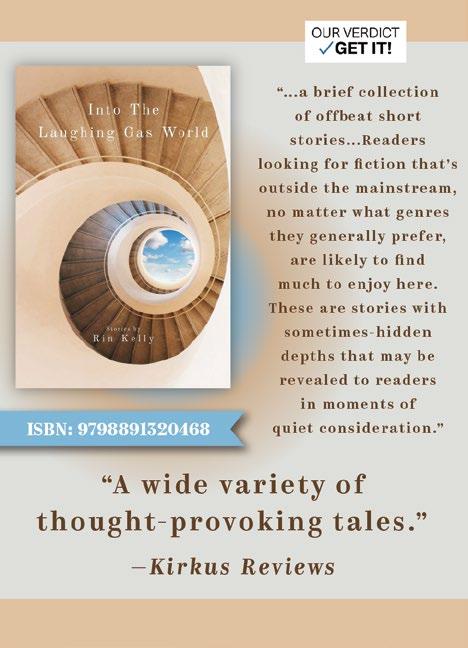

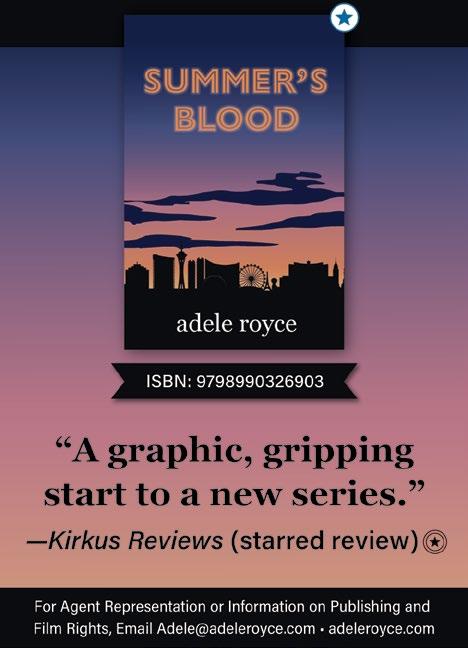
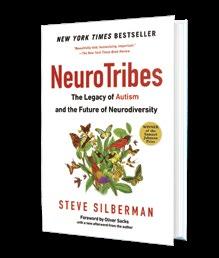
The journalist wrote about autism in the influential book NeuroTribes. Steve Silberman, the Wired magazine journalist and author of an influential book about autism, has died at 66, Salon reports.
Silberman, a New York native, was educated at Oberlin College and the University of California, Berkeley, where he studied with the poet Thom Gunn. A longtime fan of the Grateful Dead, he co-wrote a 1994 book about the band, Skeleton Key, with David Shenk. He wrote for Wired for 20 years and in 2015 published NeuroTribes: The Legacy of Autism and the Future of Neurodiversity. The book explored the history of autism, diving into the careers of doctors Hans Asperger and Leo Kanner and arguing for the acceptance of people who have the developmental disorder.
A critic for Kirkus wrote of the book,


which won the Baillie Gifford Prize, “In the foreword, Oliver Sacks writes that this ‘sweeping and penetrating history…is fascinating reading’ that ‘will change how you think of autism.’ No argument with that assessment.”
Silberman’s admirers paid tribute to him on social media. On the platform X, Atlantic staff writer Jennifer Senior wrote, “Dear God no. @stevesilberman was a generous and joyful advocate for the disabled, a man who genuinely changed the way our culture thinks. I reviewed his book, Neurotribes, in 2015 and was blown away. Everyone should order it to honor him—and all humans.”—M.S.

discomfort, and fierce boot camp education, she delivers the traditional bad news about large African wildlife. A veteran of a season in Antarctica that produced a book and curious to visit the frozen north, she joins an oceanographic expedition to the arctic but jumps ship to experience Greenland, which turns out to be a disappointment. She signs up for a month-long voyage carrying researchers home from the Falklands to Europe, knowing in advance that it will be utterly boring, but the details turns out to be a reasonably good read. She walks a hundred miles across the Namibian desert to the sea, a miserable but cleansing experience. McNeil mixes personal reflections with a mostly discouraging view of world affairs. Modest national efforts to slow global warming are having no noticeable effect. In just a few decades, the great tropical plains and forests will be home to cattle herds and corn. Rewarding scraps of natural history and memoir.
Miller, Cindy & Lailoma Shahwali Apollo Publishers (288 pp.) | $24.99 Oct. 29, 2024 | 9781954641303
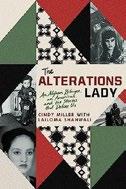
T he harrowing story of an Afghan refugee’s journey to Arizona.
A gown that needed alterations brought Miller into contact with Shahwali—and allowed the journalist to learn the tailor’s remarkable story. In this as-told-to biography that alternates between episodes from the tailor’s past, Miller examines the events that transformed Shahwali from an Afghan girl with dreams of becoming a doctor into an international refugee. Growing up in comfortable,
Much of what we “know” about chickens, says Montgomery, is wrong.
WHAT THE CHICKEN KNOWS
though not wealthy, circumstances, young Shahwali learned that marriage—typically brokered between families—was her fate as a woman. However, through the intervention of Zaher, her father’s older brother and family patriarch, Lailoma was allowed to go to school, where she excelled. Her parents still arranged a marriage for her to Mussa, a wealthy older man she at first did not accept but came to love for his kindness and liberal attitudes toward her professional goals. But just as she was ready to begin university studies, the Taliban took power and forced all girls and women back into the home. The Taliban eventually killed Mussa, forcing the almost penniless Lailoma and her son Maiwand to flee across mountainous terrain into Pakistan, then to the United States. Miller’s narrative skillfully transforms the raw details of Lailoma’s life into a captivating book.
Engrossing reading about a courageous immigrant.
Montgomery, Sy | Atria (96 pp.)
$21.99 | Nov. 5, 2024 | 9781668047361
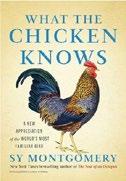
Setting the record straight about the humble chicken. Montgomery’s portrayal of what she terms the “Chicken Universe” is packed with colorful characters, ranging from variously feathered
chickens to variously informed neighbors, friends, and other interlopers who offer advice and provide delightful anecdotes. In turns laugh-out-loud funny and tear-jerking, Montgomery’s account is consistently thought-provoking and informative. The author reframes the assumptions that many laypeople carry about chickens, debunking stereotypes about their lack of intelligence with support from specific scientific studies and stories from her own experiences with her “Ladies,” as she affectionately refers to her flock of hens. From the outset, Montgomery states that “almost everything people ‘know’ about chickens is wrong,” and goes on to prove as much throughout her account. The author acknowledges these misunderstandings without much judgment, instead setting the record straight and sharing the vibrant and varied lives of these birds. As she says, “[Chickens] have a great deal of wisdom to share with us, as well as comfort and joy.” Montgomery does not shy away from the more unsavory, less palatable truths of these animals, at times criticizing the human tendency toward anthropomorphism and at other times wryly questioning if she too is falling victim to the very same. With a subject matter that could easily lend itself to sanctimonious sentimentality, Montgomery maintains a degree of discernment, insisting that chickens do not deserve our respect because of the ways in which they are similar to humans, but instead for the simple fact that they are living things, with their own lives.
An unflinching and surprisingly heartfelt account of a complex ecosystem.
National Museum of African American History and Culture | Smithsonian Books (240 pp.) $39.95 | Oct. 29, 2024 | 9781588347794

A masterwork about forms of self-expression during the times of chattel slavery.
The National Museum of African American History & Culture and Smithsonian Books have produced what should be considered the definitive text for understanding both Black people’s cultural contributions to world history and how the systemic implementation of slavery throughout the globe was and still is one of the key reasons for a significant amount of artifact conception and creation. Having over 30 contributors who proficiently speak to the horrors of slavery, colonialism, and capitalism, this masterpiece identifies how racially based atrocities and repulsive business decisions perilously affected millions of people in the United States, Brazil, England, South Africa, the Congo, and the many other countries involved with chattel slavery and its ramifications. Museum curators, experts, and academics contributed concise, informative, and limpidly written essays for this expertly produced anthology, which is as much a feat of graphic design as a spectacular work of nonfiction, mixing in its pages artistry, history, and personal testimony through a variety of visual, written, and aural narrative techniques. The book presents photographs of paintings, portraits,
poetry, drawings, pottery, ironworks, tapestries and quilts, maps, jewelry, clothing, architecture, and more—all of which tell both the individual story of each creative person who produced the artifact and the collective story of the oppressed peoples who needed an outlet to express both their pain and their hope for a better future. The reader senses a certain catharsis from the writers themselves as they finally have an opportunity to tell the stories behind these moments of creative genius, whether they stemmed from a need for self-expression or religious epiphany or archival purpose or abject protest; the contributors, in other words, write from a place of sympathy and empathy, sadness and joy, adoration and awe. The book, thus, is “a living archive,” evidencing the freedoms found through inventive expression and illustrating how slavery, though no longer legally in existence, is embedded in the fabric of history and has left an indelible and tragic mark on all of humanity. A must-read about the power of artistry over overt oppression.
Nofil, Brianna | Princeton Univ. (336 pp.) $32.00 | Oct. 22, 2024 | 9780691237015

The forbidding role of imprisonment in the nation’s treatment of migrants. This study examines the last century or so of migrant incarceration in the United States as it makes the case that the expansion of the
A spectacular collection of essays as well as a feat of graphic design. IN SLAVERY’S WAKE
government’s imprisonment powers has produced human rights violations on a mass scale. Using case studies to chart this troubling history, Nofil explains how a complex network of institutions has formed in response to both real and imagined threats of an unregulated flow of migrants into the country. In chapters dedicated to such topics as the detention of Chinese immigrants in New York in the early 20th century or of Caribbean refugees in the Gulf states in the late 20th, she sets forth the human costs of a booming carceral industry. Local officials, we learn, routinely profit from relationships with federal immigration authorities, incentivizing the construction of larger and larger jails and disincentivizing alternate methods of managing undocumented migration. We come to understand how this flawed system evolved and how crucial events, such as the passing of the 1882 Chinese Exclusion Act and the 1929 Undesirable Aliens Act, contributed to its cruelties and inefficiencies. Also compelling are the accounts of how those caught up in the system have used the courts, as well as the media, to petition for fairer treatment. Though immigrant jails have become “sites of coercion and neglect,” Nofil explains, they have also been sites of resistance “where migrants lodged legal claims, plotted escapes, organized with aid groups, and fought for the right to stay in the United States.” The American treatment of migrants, she rightly concludes, lacks basic accountability at the local, state, and federal levels and is badly in need of reform if its grievous human consequences are to be addressed.
An insightful and alarming history of the nation’s failures in detaining and deporting migrants.

more
Petty, Terrence C. | Potomac Books (304 pp.)
$34.95 | Nov. 1, 2024 | 9781640125698

A wide-ranging investigation of the incorporation of former Nazis, including war criminals, into postwar German commerce and government. World War II had barely ended, writes former Associated Press chief correspondent Petty, when German chancellor Konrad Adenauer declared impatiently, “This sniffing around for Nazis has to stop.” It did, quickly. As Petty notes, 24 major players in the Third Reich were put on trial “on charges of crimes against peace, war crimes, and crimes against humanity,” with 19 convicted and 12 executed. Of lesser figures in the Nazi machine, about 5,000 were convicted in American, British, and French military courts, with about 700 condemned to death. (Thousands died in Soviet hands, but that was another story.) The supposed “denazification” of Germany by Occupation forces was quickly stymied by the desire of “ordinary” Germans to forget about the bad times and get on with it. Couple that with the well-known desire of Western operatives to recruit Germans as allies in the budding Cold War, and the order of the day was to forgive and forget. As Petty writes, this amnesia had shocking dimensions: one war criminal who escaped to Chile and whose funeral, years later, was accompanied by those familiar stiff-armed salutes traveled back to Germany for briefings with federal intelligence agents—who, in turn, were indifferent to whether their colleagues and informants had engaged in mass murder. After decades of silence, German historians have been at work chronicling the collusion of wartime and postwar regimes, discovering, Petty writes, that “the infestation of government offices by former Nazis with seriously
compromised backgrounds was worse than had been previously imagined.”
All this has implications, Petty concludes, in a Europe where nationalist parties are on the rise, in tandem with Trump’s America.
A sharp-eyed look at a troubling past that still reverberates in modern Germany.
Prem, Deja Vu | Counterpoint (256 pp.)
$27.00 | Nov. 19, 2024 | 9781640096455
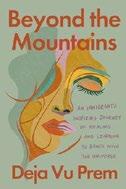
A “mail-order bride” from the Philippines creates a nontraditional life for herself in the United States. At a young age, Deja Vu Prem (then known as Lucia) was dissatisfied with her life in her “remote barrio in the Philippines.” With a mother she resented, a father who was rarely home, and three relatives who sexually assaulted her, Prem dreamed of leaving for America, a land she learned about from one of her father’s jobs. She writes, “The encounters with the Americans gave me the perspective that America was a safe haven and its people were kind.” Determined to escape from poverty and abuse, at the age of 17, a chance encounter with a stranger leads her to begin corresponding with five American men in search of mail-order brides. When she announces her engagement to one of these men—a sound engineer named Harvey—her family is shocked, but helpless to stop her migration. Soon after a brief wedding in Las Vegas and a subsequent move to California, Prem realizes that her husband is dangerously manipulative. Eventually, Prem embarks on a life of remarkable creativity and independence, which culminates in her realization of her queerness and her decision to rename
herself Deja Vu. Prem’s story resonates with frankness, circumspection, and humor. Her ebullient voice radiates warmth and confidence and is just as confident poking fun at her own foibles as it is celebrating her resourcefulness and strength. While the prose can, at times, feel stilted, this story is a pleasure to read. The triumphant tale of a Filipina who takes control of her story.
Reade, Orlando | Astra House (288 pp.)
$28.00 | Nov. 12, 2024 | 9781662602795
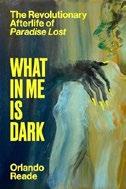
A powerful poem endures. British literary scholar Reade makes his book debut with a fresh consideration of the long and surprising afterlife of John Milton’s epic Paradise Lost, published in 1667, by revealing the poem’s effect on readers over time, from colonial America to Wordsworth’s Lake District, from Bloomsbury to a New Jersey prison. In the 17th and 18th centuries, Milton’s political ideas infused the North American colonies and informed the language of the Declaration of Independence. “With the outbreak of war between Britain and the thirteen colonies, in April 1775,” Reade notes, “references to Milton began to sprout like mushrooms after rainfall.” Jefferson saw Milton as a radical republican who made the need for throwing off tyranny self-evident. For William Wordsworth, witnessing revolution in France, Milton aroused a fascination with lone revolutionaries, as he did for rebels later in Haiti and Cuba. “In the years leading up to the Arab Spring,” Reade reveals, “readers across the Middle East saw in Milton’s poetry messages about freedom and totalitarianism.” For George Eliot—who admitted to having a crush on the poet—his life and work were inspiration for Middlemarch, “a
For Colette, writing was aggressive, in keeping with her voracious appetites.
COLETTE
horror story about marriage.” Milton inspired, too, the 19th-century New Orleans carnival society Mistick Krewe of Comus. Among many other readers Reade considers are abolitionist James Redpath; Virginia Woolf, who mused over the poem in her diary; Hannah Arendt; Malcolm X, who saw in the poem “a radical critique of Western rulers”; and Reade’s students in a poetry class he taught at Northern State Prison. Reade helpfully provides historical context and enlightening explications of the poem that, he persuasively asserts, conveys a crucial message: “that the fundamental human condition is one of freedom.” Edifying, wide-ranging cultural criticism.
Renfro, Paul M. | Univ. of North Carolina (216 pp.) | $24.95 paper Oct. 22, 2024 | 9781469680842

Reexamining the life and times of an “innocent” teenager.
Ryan White (1971-1990) was born with hemophilia and diagnosed with AIDS in 1984, during a time when those with the disease were vilified and shunned. He was in one of the so-called 4Hs, or “risk groups”: homosexuals, hemophiliacs, heroin addicts, and Haitians. Only those groups could contract HIV/AIDS—that was the uneducated perception of the time. We now know differently, of course, and it is partly because of people
like White that the stigma associated with AIDS has dissipated. In his thoughtful overview, historian Renfro rightly notes that White’s case received attention due to White’s status as “young, white, midwestern, heterosexual, middle-class, photogenic, ‘normal,’ and ‘innocent,’ media narratives [that] helped undermine reigning ideas of HIV/AIDS as solely a ‘gay plague’ or an illness for ‘junkies.’” Ryan’s death led to a star-studded funeral, an all-too-common political/cultural rift between both sides of the aisle, and the implementation of the Ryan White CARE Act, which was vehemently opposed by Republican Senator Jesse Helms, who “downplayed the severity and scale of the HIV/AIDS crisis.” Decades later, Renfro argues, some things have not changed. In particular, he cites former Vice President Mike Pence, previously the governor of Indiana, where White was born: “Pence’s sordid public health record reveals the continuities between HIV/AIDS and COVID-19 and illustrates both the continued relevance and the limits of the Ryan White story.”
A compact and knowledgeable study of the “poster boy” of the AIDS epidemic.
Roberts, Michèle | Oxford Univ. (160 pp.) $24.99 | Nov. 7, 2024 | 9780192858214

Rereading an illustrious writer. As part of Oxford University Press’ My Reading series, award-winning novelist, poet, memoirist, and playwright Roberts offers
intimate reflections about her connection to Colette (1873-1954) by considering four texts that had particular significance for her: My Mother’s House, a prismatic memoir of linked stories; Break of Day, an autobiographical novel; Chéri, Colette’s famous tale of a seductive gigolo and his aging mistress; and The Rainy Moon , a novella that Roberts first read during a particularly dark time when she was in her 30s. Raised in the “grip of Catholic morality” by a strict, undemonstrative mother, sent to a convent school that instilled a sense of “self-hatred as a woman,” the young Roberts discovered in Colette “an enticing landscape distinguished by its straightforwardly amoral celebration of sensuality.” My Mother’s House, in which Colette’s mother, Sido, “appears as a figure of powerful, overarching mythic status,” helped Roberts to rethink her relationship with her own overpowering mother and to find her way back “to that unsentimental, strong, practical French woman.” Colette showed her a new way to think about femininity as well, not as self-abnegation or inferiority to men, but “as a performance or a disguise or a fancy-dress costume.” For Colette, Roberts asserts, writing was aggressive, in keeping with her celebration of her “robust, healthy body” and voracious appetites. Besides highlighting themes of women’s independence and agency, Roberts reveals ways that Colette shaped her as a writer: teaching her, for example, that there was “a wealth of ways to use autobiographical material”; presenting prodigious examples of “supple and muscular” prose, skillfully shaped characters and dialogue, and writing replete with sensuous textures and sharply observed details. Insightful close readings inform a fervent homage.

Kirkus Star
Rowland, Ingrid D. | MIT (248 pp.) | $34.95 paper | Dec. 17, 2024 | 9780262549097
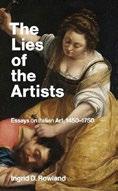
Seeing Italian art with fresh eyes. Rowland is a respected historian at the University of Notre Dame who has written a series of books about the art of the Renaissance. This collection of essays focuses on artists who “lied”: that is, who were able to depict reality in a way that went beyond the realistic to reach a sublime level. This was considered a pinnacle of achievement, and Rowland traces the idea through some of the key works of the era. Several of the artists discussed here, such as Raphael, Titian, Bernini, and Michelangelo, are famous, but Rowland finds new things to say about them by delving into their biographical details and working methods. She also does much to rescue the reputations of figures who are almost forgotten, such as Bertoldo di Giovanni, a sculptor of “beguiling little masterpieces,” and Artemisia Gentileschi, an artist of “brutality and brilliance” and one of the few successful female painters of the time. Rowland frames much of her analysis with a book written in the period, Lives of the Artists, by Giorgio Vasari, who was himself a fair artist as well as an author. This gives her own study additional authenticity and provides the opportunity for her to add personal touches and flashes of humor. It all makes for an enjoyable collection, of interest to art aficionados and general readers alike. Rowland does not include pictures of all the works she cites, but her enthusiasm for her subject is contagious and many readers are likely to enjoy tracking them down for themselves.
A novel approach to Renaissance art.
Saldívar-Hull, Sonia & Geneva M. Ganos Univ. of Texas (240 pp.) | $34.95 paper Oct. 22, 2024 | 9781477329900
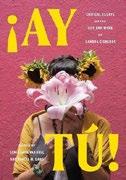
The first interdisciplinary collection of essays by scholars to address the work of the Mexican American novelist and poet underscores themes of shame and finding her unique voice.
The publication of Cisneros’ work starting in the mid-1980s has coincided with the emergence of Chicana critical studies, note editors Saldívar-Hull and Gano in their introduction to the author’s life and work. Born in Chicago in 1954, Cisneros embarked on a literary and academic career that took her to Texas, California, and Mexico, with subsequent award-winning books, from The House on Mango Street (1984) to Woman Without Shame (2022). Among the 13 essays here, divided into three parts, Mary Pat Brady explores Cisneros’ use of folk “types” in her sprawling novel Caramelo, both celebrating and satirizing them; Olga L. Herrera focuses on Cisneros’ early experience (as recorded in her actual childhood diaries) of segregation in Chicago to create her spacial construction in The House on Mango Street Georgina Guzmán turns to Cisneros’ grade-school diaries in mining themes of shame and trauma in her work.
Adriana Estill looks at Cisneros’ use of the telenovela as a subversive form in her poetry collection Loose Woman (1994). Belinda Linn Rincón finds in Cisneros’ transgressive characters (mistresses) a transformative and liberating autonomy over their bodies. Several of the essays address Cisneros’ collaboration and friendship with other important Chicana writers such as Joy Harjo, Norma Alarcón, and Helena María Viramontes. The last piece of the collection concludes with a 2021
interview with Cisneros by journalist Macarena Hernández that happily escapes the dry academic language in favor of Cisneros’ own lively descriptions of growing up.
Not terribly accessible for the lay reader, but a tremendous gathering of voices acclaiming Cisneros’ influence.
Schuettpelz, Carrie Lowry
Flatiron Books (304 pp.) | $29.99
Oct. 15, 2024 | 9781250903167

The complexities of claiming a Native American identity.
In this brief study, Schuettpelz explores how a long, troubled history of dispossession has contributed to the vexed status of Native selfhood in contemporary America. While the number of people who identify as Native has been steadily increasing over the past several decades, Native people “[have] been forced into a corner of needing constantly to prove our identities to ourselves and others, to carry around a card in our wallet [providing] not just validation, but also protection from those who’d like us to believe we’re not Indian enough.” The author provides an accessible historical overview of the various military, legal, and social factors that have blocked and complicated assertions of Native identity, along with illuminating case studies of individuals struggling to affirm their identities against cultural and bureaucratic resistance. Interspersed throughout are accounts, too, of the author’s own evolving sense of what it means to be Native and what full federal recognition of the Lumbee, her tribal nation, would mean to her and others. Particularly engaging here are the summaries of how different tribal nations continue to negotiate with government authorities over self-definition and how “the federal government is still actively tugging at
A brilliant scientist who was encouraged by her progressive father.
the puppet strings of Native identity.” Also intriguing are the discussions of how different tribal nations are working out the conditions of membership on their own terms, often in the face of entrenched prejudices from non-Natives, and how fraudulent claims to Native identity have impacted those efforts. The personal and collective stakes for Native peoples are ably set forth here, and one gains a vivid sense of why establishing more sensible and fair criteria for tribal belonging is so urgent. Greater Native sovereignty is, the author aptly concludes, a worthy and realizable goal.
A clear and frank analysis of the challenges that define Native selfhood.
Sobel, Dava | Atlantic Monthly (336 pp.)
$30.00 | Oct. 8, 2024 | 9780802163820

Admiring biography, by the noted popular historian of science, of the extraordinarily accomplished Madame Curie. As of now, notes Sobel in her opening pages, Marie Curie, née Marya Salomea Slodowska, is “the only Nobel laureate ever decorated in two separate fields of science.” Sobel points to Curie’s brilliance across a range of disciplines, encouraged by her progressive father, a math teacher at a Warsaw high school, who encouraged all his children to enjoy the sciences but also read Dickens
aloud to them in English, “translating the text into Polish on the fly.” Fortunately, at least some of the French scientific establishment was just as progressive, with the Sorbonne admitting women into medical school, and there Marya, now Marie, went, changing her study track to physics. That was a hard slog; as Sobel writes, she still had some catch-up work to do in math, and in French, a language not her own. Still, in 1893, two years after arriving in Paris, she came in first in her class and began studying for a doctorate, her topic the relatively unexciting “magnetic properties of dozens of varieties of steel.” Enter Pierre Curie, with whom Marie would have a binding love until his unfortunate death; modest to a fault, he made sure to credit her for her work, even if international organizations too often did not. Indeed, Sobel makes plain that Marie was Pierre’s equal and more, making critically important discoveries at the dawn of our understanding of radioactivity —a term that Marie coined. Moreover, Sobel notes, though known as a martyr of science, dying of radiation poisoning in the form of aplastic anemia, Marie Curie should just as properly be recognized for helping dozens of women advance in the sciences.
A lucid, literate biography, celebrating a scientific exemplar who, for all her fame, deserves to be better known.

Storm, Eric | Princeton Univ. (496 pp.)
$39.95 | Oct. 29, 2024 | 9780691233093

Nationalism is a two-sided story, and both aspects need to be understood, says this comprehensive study. It was not too long ago that academics and political commentators were talking about economic globalization and borderless connectivity. Now, says historian Storm, that sort of optimism seems quaint. Instead, there has been an increase in nationalism, with populist leaders promising to reassert national identity and cultural values. His aim in this book is to trace the forms of the new nationalism and assess its impact on populations. Nationalism can bind disparate groups together, but it often fosters coherence of the majority by depicting ethnic minorities as disloyal, dangerous enemies. Cultural nationalism, once embedded in the psyche, is enduring: for example, the collapse of the Soviet Union immediately saw the re-emergence of Russian ethnic nationalism. The Brexit campaign was explicitly cast in terms of reclaiming control and sovereignty. Storm examines how nationalism pervades modern culture through sport, entertainment, art, and even cooking. Sometimes the framework he sets up seems to be confusingly wide, and he comes close to defining all culture as nationalistic. He worries that the current trend of majority-rule nationalism has more negatives than positives and wonders if regional and multinational organizations could ameliorate the downside. He also suggests that global issues such as climate change, which will require cooperative action, might provide a balancing factor. Storm presents many interesting ideas, but the book is dauntingly complex; sometimes the
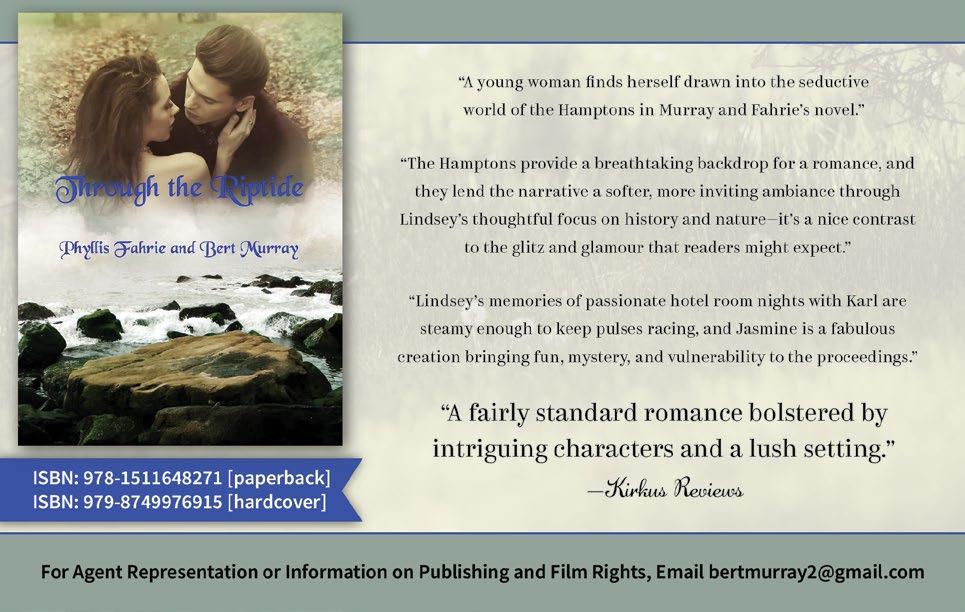
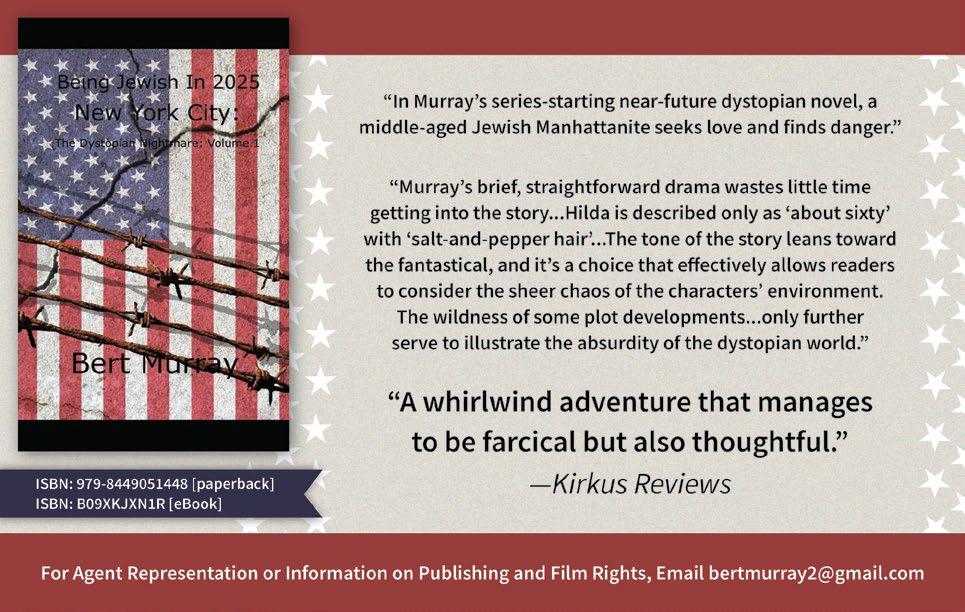




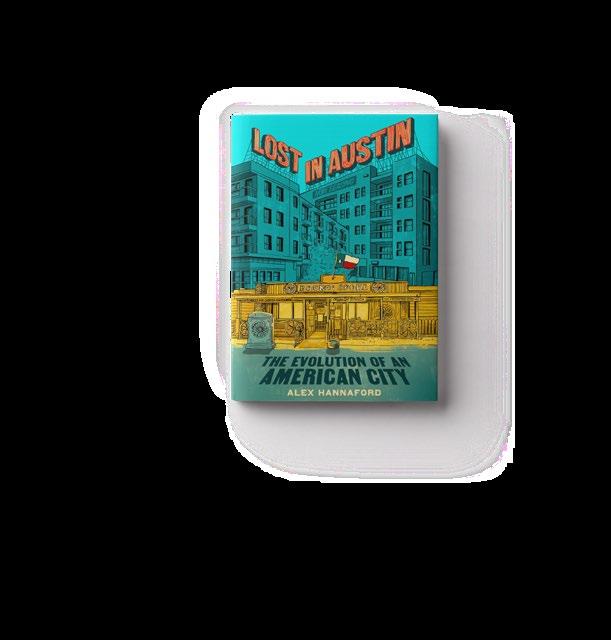
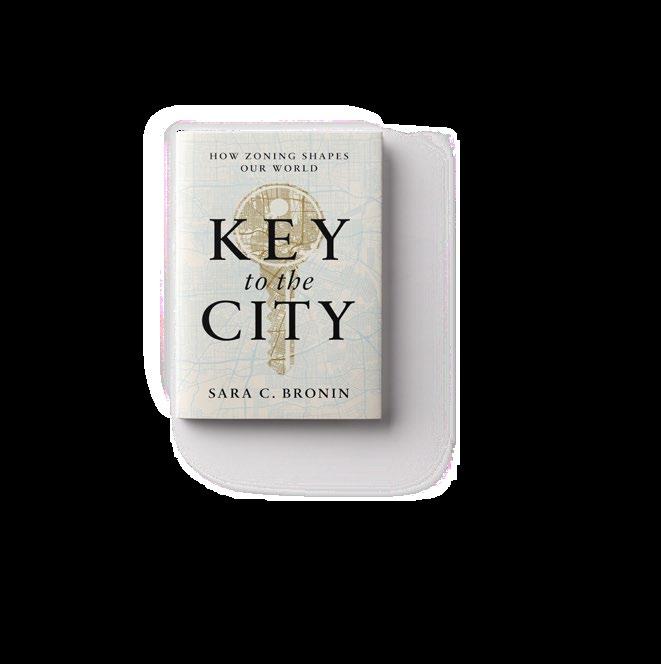



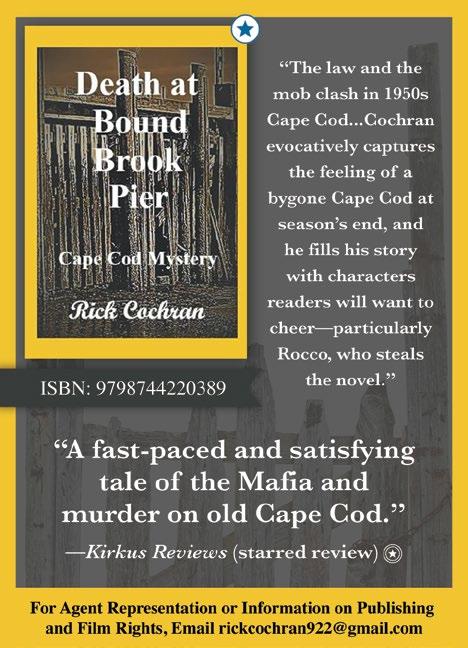

Kim Kardashian is developing an adaptation of La La Anthony’s 2014 book.
Kim Kardashian is bringing La La Anthony’s The Love Playbook: Rules for Love, Sex, and Happiness to the small screen, Variety reports.

Kristen Kish’s Accidentally on Purpose will be published by Little, Brown.
Top Chef host Kristen Kish will tell the story of her life and career in a new memoir. Little, Brown will publish Kish’s Accidentally on Purpose next year,
Anthony, the actor known for her roles in the films Think Like a Man and Baggage Claim and on the series Power and BMF, published The Love Playbook, co-written with Karen Hunter, in 2014. Publisher Celebra calls the advice book “the everywoman guide to dating, finding love, building healthy relationships, and staying true to yourself along the way.”
The series adaptation, called Group Chat, will star Anthony and be executive produced by Kardashian as part of a deal with 20th Television. Black-ish creator Kenya Barris is the series’ creator and will also executive-
produce along with Anthony. The show will stream on Hulu.
“I’m incredibly interested in telling stories that are personal, complicated, relevant, from my own experiences and those familiar to me,” Kardashian said.
Anthony shared news of the adaptation on Instagram, writing, “This show is about to be CRRAAZZZYYY!
Everything you and your friends talk about in love, life, friendships and relationships! Can’t wait!!…Let’s gooooooooo @hulu!!!!”
Barris also took to the photo-sharing platform to

For more book-to-screen news, visit Kirkus online.
announce the series, writing, “Dude. No words…Ok…a couple words…this is about to be CRAZY!!!!! #dreamingawake #blessed #lookkidsitsdaddy”.—M.S.

the press announced in a news release, calling the book “profoundly moving and beautifully written.”
Kish, a native of South Korea, was adopted as a baby by a Michigan couple and educated at Le Cordon Bleu College of Culinary Arts in Chicago. In 2012, she competed on Top Chef and was named the winner of the season. Last year, she was

named the new host of the series after its previous host, Padma Lakshmi, left the show.
“[What] defines Kristen’s story aren’t the missteps or even the pleasant surprises that crop up,” Little, Brown says. “It’s how to respond when they do, and the decisions made at those intersections.…And as Kristen approaches life’s milestones, big and small, with intention—the ones she expected, and those she didn’t—she realizes she can write her own definitions and chart her own course.”
Kish announced her book on Instagram, writing, “Stories, celebration, lessons learned, moments of challenge in kitchens and life in general. Things I’m
nervous about sharing, things I haven’t shared out loud. A great deal of reflection writing this book and a huge helping of care, forgiveness, love & growth.”
Accidentally on Purpose is scheduled for publication on April 22, 2025.—M.S.

For more books about food, visit Kirkus online.
narrative bogs down under the weight of references and footnotes. A detailed examination of the origin, use, and future of nationalist ideologies.
Street, Joe | Univ. of Georgia (272 pp.) $32.95 paper | Nov. 1, 2024 | 9780820366951
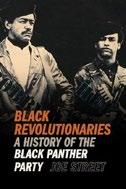
Comprehensive history of the Black Panther Party. It is a measure of both the Black Panthers’ renown and the fear its members inspired that Ross Perot, running for president in 1992, “claimed that the Vietnamese sent some Black Panthers to kill him in 1969.” Historian Street, the chief of police in Dallas, where Perot lived, refutes Perot’s story, saying, “There were only about eight people here that belonged to the Black Panther Party. Two of those people worked for us.” Crawling with undercover police informants, its leadership under men such as Eldridge Cleaver and Huey Newton problematic, the BPP nonetheless made significant contributions to Black communities around the country. One of them was the distribution of free food to needy families, one of a series of social programs that FBI director J. Edgar Hoover “highlighted as the most subversive of its activities.” Hoover’s concern was symptomatic of the fear and loathing that the BPP excited among law enforcement officers in its short lifetime: indeed, by Street’s reckoning those agents
killed more than 20 Panthers, and in places as far-flung as Des Moines, Seattle, and New Orleans charges were ginned up for crimes supposedly committed by party members. That the Panthers persisted in the face of so much opposition, distributing free food and offering high-quality health care and early education programs, “renders the social programs even more impressive.” Although Street criticizes the supposed monetization of the BPP experience that came with the publication of several memoirs, to say nothing of the Huey Newton Foundation’s hawking of a “Burn Baby Burn” hot sauce, he also notes the view of most surviving members that their time in the party was invaluably positive, with one even going so far as to liken the militants’ charitable works to those of Jesus.
A welcome contribution to the literature of Black political activism.
Strouse, Jean | Farrar, Straus and Giroux (336 pp.) | $30.00 Nov. 19, 2024 | 9780374615673
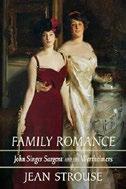
An artist’s colorful world. With an illuminating group portrait of artist John Singer Sargent (18561925) and the family of Asher Wertheimer, award-winning biographer Strouse
In some London circles, Sargent was sniffed at as a painter of Jews.
FAMILY ROMANCE
creates a richly detailed history of social and artistic transformations at the turn of the century. Sargent grew up in Europe, studied art in Paris, and settled in London in 1887, where he lived, between travels, for the rest of his life. Although his shocking Madame X almost derailed his career, he became renowned as a portraitist, sought after by wealthy bankers, industrialists, and aristocrats—among them, Asher Wertheimer, an art dealer whose clients included an international roster of dealers and collectors. The son of Samson Wertheimer, who emigrated from Bavaria in 1839 and became known as a “king of the London art trade,” Asher became the “prince regent.” Like many among the newly wealthy, Asher wanted to underscore his stature with portraits; for his part, Sargent saw in the Wertheimer family—Asher, his wife, and their 10 children—“a rich opportunity to capture personal and social change.” Strouse examines that change by tracing the fortunes of each member of the sprawling Wertheimer clan: their education, marriages, offspring, and negotiations with the “occasional hostility and exclusion” resulting from tacit, or sometimes overt, antisemitism. In some London circles, Sargent was sniffed at as a painter of Jews, even though Jews comprised a small minority of his sitters. The Wertheimers, however, were more than just clients; they became friends. Like them, Sargent knew he would never be considered “one of us” in England. Besides exploring his friendship with the Wertheimers, Strouse reveals his warm relationships with artists such as Monet and Rodin, his generosity to younger artists, and the arc of his posthumous reputation.
A deeply informed, acutely sensitive cultural history.

Even when writing about random minutiae, Thomas is always fun, smart, thoughtful, and pithy.
STILL
LIFE AT EIGHTY
Thomas, Abigail | Scribner (240 pp.) $18.99 paper | Nov. 19, 2024 | 9781668054659
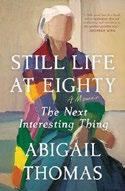
Reflections on aging from a master of the fresh and moving fragment.
“I love the word ‘fragment.’ It has a jagged quality,”
Thomas announces in her latest assemblage of short vignettes, a form she first used in her much-loved memoir Safekeeping (2000). They are grouped in four sections: “Being This Old,” “Stay-at-Home Order,” “Wisteria,” and “A Few Thoughts About Writing.” If you’ve read other works on the theme, you may agree that when a writer feels compelled to squeeze a book out of “being this old,” it is not always a good thing. Thomas proves a delightful exception, offering reflections on the sedentary life she leads in Woodstock, New York, alone with her dogs, various visiting insects and creatures, and occasional drive-bys from her children and friends. Even when writing about wasps, word etymologies, using a coffee cup as an ashtray, and other random minutiae, she is always fun, smart, thoughtful, and pithy, modestly trying not to take up too much of your time. Some instances of repetition (the same writing prompt twice—on the other hand, it’s a good one) can be forgiven as can enough-already ruminations on the frustrations of lockdown, more than made up for by the myriad freshly turned phrases and pearls of existential wisdom. Though she includes a few
sections recalling escapades of her halcyon youth, she’s fairly sure she’s forgotten more than she remembers and decides to “think of my failing memory as an achievement. I am finally living in the moment.” She faces the eventuality of death with frankness and a stiff upper lip, hopeful that when she does go she won’t get that “funny feeling” when you realize you’ve left the house with some important task undone. Given this fine little book, she should not. Thomas is still smokin’—in both senses of the word!—and her candor is a gift to us all.
Tomine, Adrian | Drawn & Quarterly (168 pp.) $16.95 paper | Oct. 15, 2024 | 9781770467309
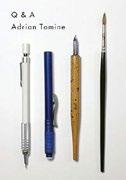
A cartoonist uses fans’ questions to trace his personal history. Tomine began self-publishing his work at the age of 16. Since then, he’s developed a devoted fandom that, he says, has stuck by him for almost three decades. Although cartooning is a solitary profession, Tomine says his relationship with his readers has helped him stave off the loneliness that is, so often, a hazard of the job. He writes, “It’s never felt that way. In fact, I often think of my career as a decades-long conversation between myself and an amorphous, mostly anonymous group of people who are for some reason drawn to my work.”
In Q&A , Tomine continues this conversation by responding to some of the most common queries, which
include how to correctly pronounce his name (which, it turns out, Tomine didn’t know until a trip to Japan), his favorite brands of art supplies, his ability to balance the inspirations and frustrations of parents, and his thoughts about adapting his comics into films. He also offers career advice, describing how he got his start at the New Yorker, spelling out his opinions on self-publishing and marketing, and providing ideas for connecting with comic artists who could serve as role models or mentors. Although this memoir doesn’t necessarily contain a clear character arc, it does provide a fascinating insight into a beloved artist’s personal history. Tomine’s writing is compassionate, empathetic, and tongue-in-cheek, and his narratorial voice has the intimate, confessional frankness of a good friend. The book’s visuals—which include Tomine’s illustrations—are a welcome addition to the text.
A cartoonist’s gentle and charming epistolary memoir.
Trom Eayrs, Sonja | Bison/Univ. of Nebraska (326 pp.) | $24.95 paper Nov. 1, 2024 | 9781496234995
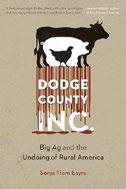
A fierce denunciation of corporate agriculture by a working farmer and attorney.
“Corporate agriculture has not only destroyed the rural spirit and harmony of living as one with the land but of living with one another as well.” So writes Trom Eayrs toward the end of her book, equal parts manifesto and memoir. A constant presence is her father, the son of a Norwegian immigrant who made a hard living in the red-barn country of southern Minnesota, where farmers learned that the longevity of their fields hinged on taking care of them—and
memoir
taking care of the surrounding community as well. Now that land ownership, as Trom Eayrs notes, has been unlinked from the bonds of family, some good has resulted, “giving women access to land ownership and property rights, allowing racial and ethnic minorities to become landowners, and creating more avenues for upward social and economic mobility.” Yet, she adds, it has also opened the door for corporate ownership, either outright or via leasing farms whose owners become employees. In this regard, she observes, a leased farm just a mile from her family farm in Dodge County earned what on paper appeared to be a sizable source of income, but once expenses were deducted, the net monthly profit was only $41. Those “razor-thin margins” explain why growers use the cheapest possible immigrant labor, cram as much livestock into “concentrated animal feeding operations” as possible, and take no care of the land; the result is meat laced with antibiotics, polluted rivers, and a depopulated countryside. All this will continue, Trom Eayrs concludes, until the federal government stops subsidizing Big Ag and abetting “corporate lawlessness.” A smart, militant update to Wes Jackson’s and Wendell Berry’s writings on smallholder farming, her book demands immediate reforms.
An indignant, righteously wrathful defense of the family farm in the face of corporate voracity.

Weatherford, Jack | Bloomsbury Continuum (352 pp.) | $35.00 Oct. 29, 2024 | 9781399417730
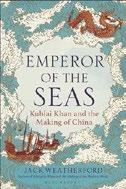
A biography of Mongol ruler Kublai Khan, focused on his role in creating a unified China and a maritime empire. Genghis Khan, Kublai’s grandfather, gained control of large parts of China, along with much of the rest of Asia and Eastern Europe. But southern China, ruled by the Song dynasty, was protected by broad rivers that the Mongols found challenging to bring their warriors across. Kublai and his generals overcame the traditional Mongol distrust of boats and developed strategies that allowed them to cross the rivers and defeat the Song. With all of China in his grasp, Kublai began to look farther; Japan, Korea, and Vietnam seemed ripe for conquest. At the same time, Mongol outposts in Persia and the Middle East would be easier to reach by sea than by the often dangerous overland routes of the time. Pu Shougeng, who had overseen coastal defense and shipping for the Song, was enlisted to build a navy and a merchant fleet for the Mongol dynasty. Mongol invasions of Japan and Vietnam failed, but the merchant fleets more than repaid Kublai’s investment, making China the preeminent economic power of its
day. Shortly before his death, Kublai managed to launch an impressive fleet to carry a Mongol princess to Persia to marry its Mongol ruler. Marco Polo, whose writings provided most of what Europeans knew of Kublai and his realm for generations to come, traveled with that fleet on his return to Europe. Weatherford puts Kublai’s accomplishments in full context, following up with a summary of China’s maritime history right up to the present day. Readers will find this a valuable treatment of a part of history previously familiar primarily to specialists. A detailed look at one of history’s most powerful rulers, and his impact on a huge swath of the world.
Whittington, Keith E. | Princeton Univ. (256 pp.) $29.95 | Nov. 12, 2024 | 9780691265391

A leading legal thinker delves into the law and politics of impeachment in this timely study. Impeachment is one of the most loaded terms in American politics, and one of the most misunderstood. Whittington, a law professor at Yale, aims to unravel the process and set it into the broader political context. Impeachment is usually discussed in terms of the presidency, although it can also be used in response to malfeasance by officers of the executive branch and the judiciary. Whittington tracks through the precedents, as well as the impeachment provisions at state level. The Constitution sets out the mechanics but is vague about the reasons for impeachment, and Whittington provides an interesting chapter on the possible meanings of the “high crimes and misdemeanours” clause. Of course, there have been no occasions when a president has been impeached,
convicted, and removed from office, although Nixon probably would have been had he not resigned. More recently, impeachment has been wielded more as a partisan weapon than a legal sanction, first against Clinton and then Trump. The second impeachment of Trump set the precedent that the House does not need hearings or an investigation but simply a majority of votes. Impeachment in that case looked more like a symbolic punishment, and it is not clear where that road might lead in the era of hyperpartisan conflict. Whittington sets all this out in a dispassionate tone, eventually concluding that the impeachment power should remain in the Constitution, even if it sometimes seems outdated. Written with a commendably cool head, Whittington’s book will be a key guide for legal experts as well as lay readers.
Yvette, LaTonya | Dial Press (224 pp.) $29.00 | Nov. 12, 2024 | 9780593242414

A meditation on the messy intricacies and enduring comforts of home.
Yvette’s relationship to the construction of “home” is colored by both her childhood and her motherhood, by her art, her race, and a series of influences she has absorbed in multiple spheres and spaces. This collection transmits the weights of these forces, turning a penetrating eye toward everything from clotheslines and desks to divorce and eviction proceedings. Yvette sketches her personal narrative, including a youth marked with housing uncertainty and instability, her experience as a single mother during the Covid-19 pandemic lockdown, and her being forced to vacate her home in 2021. She shades in these contours with the richness of both personal reflection and the wisdom, creativity, and scholarship of Black elders
like James Baldwin, Lucille Clifton, and Robin Wall Kimmerer, framing chapters with photographs of her Brooklyn apartment and the Hudson Valley home—Mae House—that she purchased to provide an affordable retreat for Black families. The range and dimensions of the author’s subjects and sources compile and overlap, building the vision of home as a place for looking both inward and outward, to the past and to the future. With a keen eye and lyrical empathy, the author attends to the possibilities and limitations of the physical outlines and objects of home, while recognizing the people who mourn, bond, collaborate, and celebrate within it. As she sifts through the violations of police shootings, sexual assault, flooding and fires, and the march of unfair housing practices, land theft, and gentrification, Yvette demonstrates that, for Black women in particular, home—its sheen, its allure, its security, or its remaking—cannot be separated from its entanglement with attacks upon and within it, the labor it extracts, or notions of ownership.
A poetically reverent inspection of safety, embodiment, and inheritance through the lens of inhabiting space.
Zehme, Bill with Mike Thomas Simon & Schuster (336 pp.) | $30.00 Nov. 5, 2024 | 9781451645279
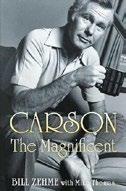
A biography of American latenight television’s biggest star.
Zehme, author of biographies of Frank Sinatra and Hugh Hefner, had a lifelong love of Tonight Show host Johnny Carson.
In 1973, at age 15, Zehme was “already a full-blown Carson fanboy.” As a reporter for Rolling Stone, he tried unsuccessfully to secure an interview to coincide with Carson’s 1992 retirement after a 30-year run. In 2002, Zehme, now with Esquire , “gets extended face time” with the star for a piece to mark 10 years since Carson’s departure. Shortly after Carson’s death in 2005, Zehme began work on a biography. The task was overwhelming—“there was always more to be gleaned”—even before Zehme’s 2013 diagnosis of stage 4 colorectal cancer. He died in 2023, having finished only the first three-quarters of this biography. Thomas, a longtime Chicago arts reporter, has completed the book in time for Carson’s 2025 centenary. The result is an admiring work that nonetheless acknowledges the lows as well as the highs of Carson’s life—he had three divorces—and career, from his ill-fated 1955 variety program The Johnny Carson Show, to his 1957-62 stint as host of the ABC game show Who Do You Trust?, to his taking over The Tonight Show from Jack Paar in 1962. It’s easy to tell where Zehme left off and Thomas took over. The tone changes dramatically, from Zehme’s florid style to Thomas’s drier approach. Those florid passages, which make up most of the book, are baroque in the extreme, with lines like, “And so, like sun and moon and oxygen and ionosphere, Johnny Carson was always there, reliable and steadfast.” Despite the purple prose, the result is an entertaining look at not only a unique figure in 20th-century popular culture but also a bygone era in American television.
A fun if overly flamboyant appreciation of a TV giant.
Here’s Johnny, as seen by a lifelong fan.
CARSON THE MAGNIFICENT

“WITH GREAT POWER comes great responsibility.” These words reverberate through my head each year as we select the six finalists for the Kirkus Prize for Young Readers’ Literature. It’s a job that fellow young readers’ editor Laura Simeon and I take seriously; after all, the books we choose will be read for generations to come. This year we were joined by jurors Christopher A. Biss-Brown, curator of the Children’s Literature Research Collection at the Free Library of Philadelphia, and Michelle H. Martin, the Beverly Cleary Endowed Professor in Children and Youth Services in the Information School at the University of Washington. I’m delighted with our choices; these books will stir the imagination, serve as healing balms, and remind readers that they aren’t alone. Read about the picture-book and middle-grade finalists below, and check out Laura’s column (p. 120) for the young adult selections.
Our two picture books are both informational texts that take refreshingly original approaches to their subjects. There Was a Party for
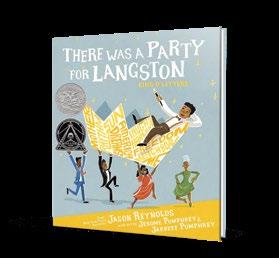

Langston (Caitlyn Dlouhy/ Atheneum, 2023) demonstrates that Hughes’ poetry has the power to provoke laughter, tears, and physical movement. That last item is at the heart of this soaring ode, which sees a host of authors gather to celebrate the opening of the Langston Hughes Auditorium at the New York Public Library’s Schomburg Center for Research in Black Culture.
Jason Reynolds’ verse positively sings, while the handmade stamps by Jerome and Jarrett Pumphrey bring to life a high-stepping soiree where the likes of Maya Angelou and Amiri Baraka cut loose and where Hughes’ words leap and cavort across the page.
We Who Produce Pearls: An Anthem for Asian America (Orchard/Scholastic, April 16) is a much-needed counternarrative to textbooks that leave out the stories of

marginalized peoples and to the recent rise in anti-Asian sentiment. Writing in verse that’s by turns galvanizing and reassuring, Joanna Ho speaks eloquently of resistance, courage, and community; the titular pearls are a masterful metaphor for Asian Americans’ ability to persevere—and even triumph—despite oppression.
Amanda Phingbodhipakkiya’s accompanying portraits of ordinary people are commanding yet startlingly intimate; this is a work that’s vital for a true understanding of U.S. history.
Our middle-grade finalists are two profoundly moving works of fiction. Sherri Winston’s Shark Teeth (Bloomsbury, Jan. 16) follows Kita as she attempts to keep herself and her siblings out of foster care despite their mother’s neglect. Winston’s vigorous prose captures the protagonist’s youthful voice
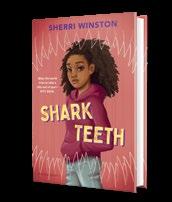
perfectly; readers who rarely see their own families represented in literature will feel embraced by this tale that balances Kita’s devastating pain with her determination and hope.
Inspired by the true story of the Grand Mosque of Paris, whose members worked to save Jewish Parisians during World War II, Hiba Noor Khan’s Safiyyah’s War (Allida/HarperCollins, May 7) centers on an 11-year-old Muslim girl who, despite her fear, begins to take perilous risks when the Nazis invade. Khan blends an immersive sense of setting, gripping suspense, and beautifully realized characters. In Safiyyah, readers will find a protagonist whose courage and empathy are unmatched— a hero to light the way in our own troubled times.
Mahnaz Dar is a young readers’ editor.
Patience and persistence pay off in Caldecott Medalist Cordell’s ode to owling. Janie’s long dreamed of seeing an owl. “Perfectly stout. Large, round eyes. Silent, knowing faces. Birds of the night.” Janie’s new teacher, Mr. Koji, is a birder, and Janie’s inspired by his words: “To see an owl is magic.” Accompanied by Mama, Janie searches the woods, an open prairie, the beach, a harbor, and even a cemetery. Yet even after months, not a single owl has presented itself. Undeterred, Janie gets a tip from Mr. Koji. When Janie finally goes to the location he
suggested, Cordell presents readers with a truly resplendent moment. Incredible pen-and-ink illustrations treated with watercolors convey not simply Janie’s passion (readers get glimpses of the young birder’s drawings, notes, and map) but also subtler details, like Mama’s uncertainty or one moment in which the two miss a hidden owl entirely. The understanding that there are no guarantees with nature lends a special poignancy to the pages. While the book has distinct ties to titles such as Jane Yolen’s Owl Moon (1987), illustrated by John Schoenherr, and Susan
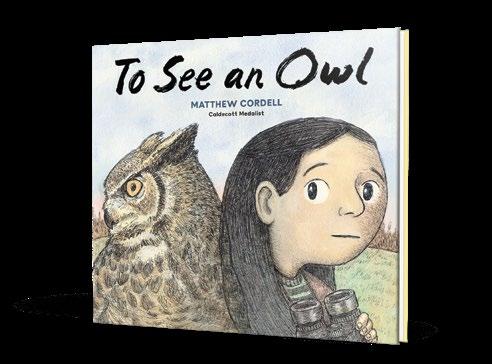
Edwards Richmond’s Night Owl Night (2023), illustrated by Maribel LeChuga, it also contains additional lessons on staying the course, which resonate loud and clear. Janie and Mama are brownskinned; Mr. Koji presents East Asian. A title easily summed up in a single word: magic. (Picture book. 4-8)
Kirkus Star
Alexander, Lori | Illus. by Rebecca Santo
Clarion/HarperCollins (128 pp.)
$18.99 | Jan. 28, 2025 | 9780063245990
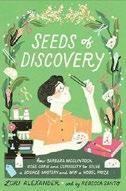
A winning profile of a stubbornly self-motivated researcher who, through decades of study, revolutionized our understanding of genetics. Acclaimed (eventually) by the Nobel Prize Committee for making “one of the two great discoveries of our times in genetics” (the other was the structure of DNA, discovered by others), Barbara McClintock was the very model of a maverick scientist. “It begins,” Alexander writes, “with a girl who loves science,” studies biology and plays jazz banjo in college, exchanges dresses for more practical trousers, and goes on to parlay an early fascination with the chromosomes found in corn cells into a lifelong study that culminates in finding the “jumping genes” (“transposons”) that play vital roles in genetic variance between generations. The author explains McClintock’s achievements in clear, nontechnical language and, after acknowledging her death at age 90 in 1992, goes on to highlight some of the advances, from the Human Genome Project to the development of CRISPR technology, that have resulted from her work. Along with close-ups of corn and chromosomes, Santo offers gracefully composed views of McClintock addressing colleagues and welcoming racially diverse groups of students to join her for tea and brownies. Most often, however, she’s in solitary absorption, hard at work in labs and cornfields. What will remain with readers is a memorable picture of an independent woman’s life in science, as well as a clear understanding of her
contributions and a vivid sense of the joy she took in making them. Absorbing and inspirational. (timeline, glossary, source notes, bibliography, photo credits) (Nonfiction. 8-12)
Alsaid, Adi | Aladdin (288 pp.) | $18.99 Nov. 19, 2024 | 9781665927789

When a corporation unveils a plan to move a dormant volcano to make room for an amusement park, only 11-year-old Shmebecca Ferguson sees a problem. Of all the happy folk in the peaceful (if earthquake-prone) land of Joviala, only Shmebecca objects to having her beloved Mount Saint Helenhunt forcibly relocated by Shmebenezer Eyebrows, the genial head of the Fun Corporation. He intends to use a magical artifact known as the Muffin of Glory. So it is that with the help of Candelabra Dangling, Bobert Bougainvillea, and other exchange students from the neighboring Kingdom of Nefaria, where evil schemes are a way of life, she contrives a complex plan to steal the Muffin. The stage is set for a mad, hilarious scramble, devastating betrayal, and ultimate vindication when the ambitious construction project sets off certain Natural Inconveniences of a wildly explosive sort. Along with concocting another front-runner in the silly names department, Alsaid follows on The Bravest Warrior in Nefaria (2023) by dishing up a tectonically active round of kids vs. oblivious grown-ups. Driven
by conflicting loyalties, hidden agendas, and deeply felt friendships weathering hard tests, the story flows in a leisurely if sometimes comically fraught way toward a thoroughly satisfying resolution. The cast, as in the opener, is racially ambiguous. Droll and, notwithstanding severe danger and widespread destruction, delightful. (Fantasy. 8-12)
Ameri-Siemens, Anne | Illus. by Anton Hallmann | Trans. by David Wilson
Little Gestalten (56 pp.) | $24.95
Oct. 8, 2024 | 9783967047707
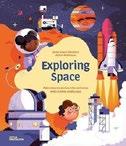
Two young space experts conduct a whirlwind tour of the solar system and other astronomical topics. Brown-skinned Emma and light-skinned Louis begin with basic concepts such as gravity and light-years before going on to cover the Big Bang and the planets; they also offer superficial considerations of random related topics from galaxies to science fiction books and movies. Featuring bright, sometimes busy illustrations, this German import feels haphazardly organized. The entries on Venus and Mercury are sandwiched between those for the likewise out-of-order Neptune and Uranus, and spreads on spacecraft and space tourism, which are at least tangentially related, are interrupted by an introduction to exoplanets. The book also contains several factual flubs that may be translation errors, such as claims that the sun is “the largest star in our solar system” (in fact, it’s the only star)
Droll and, notwithstanding severe danger and widespread destruction, delightful.
THE GREATEST HEIST IN JOVIALA
and that Saturn’s year is the longest of all the planets (that distinction belongs to Neptune). More orderly and more carefully fact-checked overviews of our universe and its exploration abound for readers with stars (or planets) in their eyes. Leave this one on the launch pad. (glossary) (Informational picture book. 7-9)
Armendia-Sánchez, Nydia | Illus. by Devon Holzwarth | Candlewick (40 pp.)
$18.99 | Oct. 1, 2024 | 9781536227062
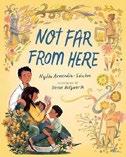
Tales told between generations help build understanding. Two brownskinned, Latinecued children playing in an attic discover a suitcase filled with letters and photos as well as a key dangling from a long gold chain. Excitedly, they rush to ask Mamá to tell them the story of these items. She explains how she and their father met, starting with his childhood in an unnamed Spanish-speaking country. Papá worked and studied hard, lessons he had learned from his own blacksmith father before he died. But Papá dreamed of more. Rumors of the possibilities in a new country inspired him to head north, crossing la frontera in search of new opportunities. Papá persevered, learning a new language despite sneers and cruel words from others. He then met Mamá, and together they built a wonderful life for their growing family. Mamá tells the children to follow their hearts and find their voices; she reminds them that their own stories will inspire. In this sweet family history, the children discover that the roots of their future are deeply intertwined with the stories of those who came before them. Melodic text
incorporates Spanish phrases throughout; a Spanish glossary is included in the backmatter. Mixed-media illustrations meld past and present with bright colors, swirling lines, and playful artistic elements.
A touching reminder that the stories of our ancestors light the way for generations to come. (Picture book. 4-9)
Atinuke | Illus. by Angela Brooksbank Candlewick (40 pp.) | $17.99 Sept. 3, 2024 | 9781536235555
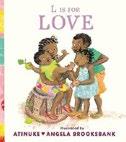
An alliterative lesson in love, highlighting the 12th letter of the alphabet. This slice-of-life tale follows a family of Nigerian farmers as they haul their fruit from the lemon groves to the big city of Lagos. The text consists solely of “L is for…” sentences, and the letter L does a lot of heavy lifting in describing a world so large and dynamic, from the family’s nighttime journey through the trees (“L is for Lamp”) to the truck that gives them a ride (“L is for Lift. L is for Lucky”). Atinuke and Brooksbank home in on key details: the crack of lightning across the sky, the “lazy lions” and “lonely leopard” on the savanna, the children playing in a market filled with fabrics. At last, a morning of lemon selling gives way to lunch (“L is for Lick. L is for Lips”), and soon the family starts their long journey back home, past a herd of roaming elephants and through the winding paths beneath the lemon trees. Though the writing is spare, it exudes pure joy: Love is the focus throughout and an L word worth cherishing. Making rich use of textures, the mixed-media art highlights the family’s affection for one another and
for their home and their work; each spread is rife with detail, telling a story all its own. Luminous illustrations and lively text make for lovely reading. (Picture book. 4–8)
Baines, Nigel | Kane Miller (256 pp.)
$11.99 paper | Dec. 1, 2024 | 9781684649075

C an magic reunite a heartbroken boy with his deceased father?
Cooper Stanley is a gifted young stage magician whose father, an electrician named Eddie, taught him all he knew about the craft, creating a strong father-son bond. But when Eddie (whose magical alter ego was the Great Eduardo) suddenly and tragically dies, Cooper struggles with his volatile emotions. Although he tries to internalize his grief, going for laughs instead, his sorrow eventually gets the better of him, causing him to lash out and run away from home. When a scary older boy chases him, Cooper ducks through a doorway and is transported into another world. He’s accompanied by Rabbit De Niro, his dad’s talking stage prop rabbit. Cooper meets the sly and magically deficient Dimblechip, the President of Magic, who promises to unite him with his father in exchange for Cooper’s putting on a special magic show. Could it be this simple? Baines’ exploration of grief has an approachable sensibility, playing on themes drawn from Alice’s Adventures in Wonderland. Uncomplicated grayscale illustrations set against clean backgrounds keep the focus on the character-driven story. The format may be helpful for readers who are struggling with their own grief. In many scenes, complicated emotions are straightforwardly portrayed in ways that can at times feel a tad facile but that nonetheless accessibly convey the gravitas of Cooper’s situation. Main characters present white. A simple, heartfelt examination of grief after the loss of a parent. (Graphic fantasy. 8-12)
Barnett, Mac | Illus. by Shawn Harris HarperAlley (272 pp.) | $16.99
Nov. 5, 2024 | 9780063315280
Series: The First Cat in Space, 3
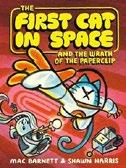
A rogue spellcheck program’s bid to transform all life-forms into that eminently useful office item, the paper clip, touches off a fresh round of lunar lunacy.
Predicated on the entirely reasonable premise that eliminating all spelling and grammar errors everywhere would logically lead to the necessity of exterminating carbon-based life in the universe, this third series entry combines high stakes with daffy banter and daring exploits. CheckMate—a chipper, jumped-up editing program—has invented the Transmogratron, a giant laser that will fulfill its ultimate goals in both the cyber world and “meatspace.”
Facing challenges as random as prankster lunar unicorns and a disarmingly motherly Motherboard, scowling First Cat joins a motley crew of diversely carbon- and silicon-based allies, led by the pearlescent Queen of the Moon. They’re in a race to the finish—diverted occasionally by, for instance, a relentlessly punny comic-book interlude featuring a pair of literal and figurative Pool Sharks. They ultimately triumph thanks to teamwork and moxie.
Following a celebratory party and toasts to “new friends…and steadfast comrades” (and, of course, “MEOW”), the story’s energetic, brightly colored panels close with a reveal of the next volume. (“I always hate it when comics end by announcing a sequel. SO CRINGE!” declares an authorial stand-in.) It can’t come too soon.
File under “laugh riot.” (Graphic science fiction. 8-11)
Bartikova, Petra | Illus. by Katarína Macurová | Albatros Media (28 pp.)
$15.95 | Oct. 15, 2024 | 9788000072821
Series: My First Books of Nature

How do animals wind down before bed?
Using straightforward bits of information and quirky illustrations, this lively title describes the sleep habits of 11 animals. An opening spread of all the animals together sets a whimsical tone: A kangaroo wearing flip-flops suns itself on a mat; a seal and a flamingo argue over a pillow. Bartikova then devotes a spread to each of the animals. Short, factual sentences detail where each creature lives, as well as when and where it sleeps and for how long. These specifics are interspersed among humorous cartoon images of the heavily anthropomorphized animals. Many illustrations include cutaways. Jammie-clad gerbils nod off in their burrow, while their kin cavort in the desert setting above; seals read books and sip tropical drinks above the water, while others snooze below the surface. Some of the humor will go over youngsters’ heads, like a bat reading Freud. Though this Czech import includes the kind of information that children are interested in, it lacks sources or further references. The book also contains a few errors: Seals live in both the Northern and Southern Hemispheres, not just the Northern Hemisphere. An image of an ant with a feather on its
A heartwarming coming-of-age story that radiates humor and care.
THE GIRLS OF SKYLARK LANE
head, carrying a quiver full of arrows, may raise eyebrows due to its flattening depiction of Native cultures. Best shared one on one to help listeners distinguish between fact and fancy. (Informational picture book. 3-7)
Beard, Jack | Illus. by Jayri Gómez Flowerpot Press (32 pp.)
$8.99 paper | Nov. 12, 2024
9781486730346 | Series: Why Do?
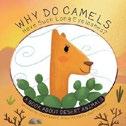
A select set of desert flora and fauna pass in quick review. “Each of these animals,” Beard opens over an illustration depicting only plants, “has special traits that help them to live and thrive in the desert.” Continuing in the same disconnected vein, he invites a search for shapes hiding in “shadows” that Gómez renders as silhouettes with nothing hiding behind them. The author muses on questions such as “Why do FENNEC FOXES have BIG ears?” (no, it’s not so they can eavesdrop on other animals) and “Why do LIZARDS feel cold to the touch?” In one scene, a rattler (native to North America) menaces a pair of meerkats (native to Africa), and when the narrative gets around to answering the titular question (“Is it because they’re wearing MAKEUP?” the author wonders), the lashes on display are all modeled by two-humped camels only. (Several pages later, the author also touches on one-humped camels.) Along with switching abruptly to stock photos floated over stylized backgrounds toward the end, the painted pictures— which alternate views of smiling tortoises marching on hind legs and other fanciful imagery with more naturalistic portraits—feature labels as sparse as they are unhelpful: “plant,” “rock,” “sky,” “sand.”
A patchy mishmash of assorted facts and misinformation. (Informational picture book. 6-8)
Beever, Alexandra | Illus. by Sol Linero
Nosy Crow (32 pp.) | $17.99 | Oct. 1, 2024
9798887770802 | Series: How To Be A...
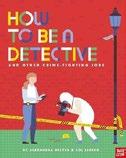
Like the other How To Be books, this latest offers an accessible, in-depth introduction to the profession.
Veteran detective Beever explains exactly what a detective is, what equipment detectives use, and why they are needed. A timeline of the profession starts in 1833, with the Parisian Eugène Vidocq, and cites notable contributors, including Kate Warne, a Pinkerton employee and the first female detective. It ends in 2000 with the introduction of drones. Beever covers such topics as what skills are useful for a detective, how detectives are trained, and the many different kinds of crime-fighting jobs, including those involving vehicles, criminal science, or intelligence. The book further delves into the processes of reporting a crime and crime scene investigation, as well as what happens when a suspect is identified and when a person goes to court. The writing is clear, concise, and to the point; important words are in boldface, and potentially unfamiliar words and phrases are explained in the text. Beever writes in a manner accessible for the target age range. Stylized illustrations use flat, sharp-edged color blocks to define elements and provide informative, idealized depictions of detectives at work. Crime fighters and members of the public depicted include wheelchair users, people wearing head scarves, a detective in a Sikh turban, and people with a variety of skin tones.
No great mystery here: All evidence points to a career-shelf winner. (relevant organizations’ websites) (Informational picture book. 7-10)
Benway, Robin | Harper/ HarperCollins (272 pp.) | $19.99 Oct. 1, 2024 | 9780063311596

Softball, sisterhood, social commentary, and a natural disaster come together in this contemporary middlegrade novel.
Twin sisters Jac and Aggie move with their dad and papa (and pet rat, Jack) from San Francisco to Los Angeles. As they adapt to their new home and adjust to seventh grade, they befriend a rambunctious group of girls who run a gender-inclusive softball team; one member is trans and was excluded from other teams. The team practices regularly, and over time, its members grow emotionally and go through puberty even as they face assorted challenges and support one another both on and off the field. The well-developed, spirited, and diverse cast of characters is reminiscent of those in the film A League of Their Own
The narrative, told in the siblings’ alternating third-person perspectives, contrasts easygoing Jac with anxious Aggie, allowing both of their distinct voices to shine and reflecting the unique struggles and complexities of growing up with (and potentially apart from) a twin. When a wildfire forces a neighborhood evacuation and destroys property, the players organize a fundraiser to support those affected. Benway weaves themes of teamwork, solidarity, gender equity, and empowerment throughout (“nobody breaks up our team,” says Jac) in a way that’s never overtly didactic. The twins present white. A heartwarming, richly told comingof-age story that radiates humor and care. (Fiction. 8-12)
Brooks, Nick | Union Square Kids (240 pp.) | $16.99 | Nov. 5, 2024 9781454947134 | Series: Ethan Fairmont, 3
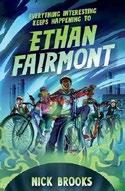
A whiz-kid inventor and his ragtag crew must save the world from aliens…again. It’s unclear why Ferrous City is a “hotbed of alien activity,” but Ethan Fairmount knows that he can’t tell his parents about any of it—especially not about another potential alien attack just a few months after the last. And even as he turns to his friends instead, he still doesn’t initially tell them the whole truth about his beloved and now-missing guinea pig, Nugget. Ethan is scared and in over his head when he reaches out via walkie-talkie to the squad— his oldest friend, Kareem, inventive Fatima, creatively inclined Jodie, siblings RJ and Di (the latter of whom Ethan has a huge, not-sosecret crush on), and loyal new friend Juan Carlos. The narrative jumps right into the adventure as the ranks of aliens grow—both the good guys accompanying small, purple, six-eyed Cheese and the world-destroying reptilian light-thieves. Ethan eventually needs to add his big brothers to the hero squad, a move that draws attention to his habit of keeping secrets from those closest to him. Ultimately, the bumbling, one-dimensional alien villains who seemingly barely understand their own nefarious goals and technology stand no chance against an abundance of clever, sometimes snarky, and increasingly tight-knit young Black and brown humans and their alien companions. The path to a happy ending relies just as much on realizing how invaluable friendship is as it does on sheer luck.
A solid trilogy closer for returning fans. (Science fiction. 8-12)
Hill: Inside the Secret World of
Brower, Kate Andersen | Quill Tree
Books/HarperCollins (304 pp.)
$18.99 | Oct. 8, 2024 | 9780063229310
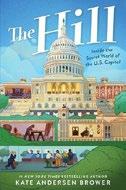
A detailed guide to Capitol Hill in Washington, D.C. Spanning the time period from the Revolutionary War and George Washington’s placement of the cornerstone of the Capitol building in 1793 to the attack on January 6, 2021, and the presidency of Joe Biden, this book offers an in-depth look into how the Capitol as we know it came to be, how it functions, and who runs it, both politically and practically. Brower examines various “firsts” on the Hill, such as the first openly gay member of Congress and the first Hispanic American woman to serve in the House of Representatives. Other sections note the hypocrisy of the fact that the building, itself a monument to freedom, was built by enslaved people and the continuing unequal racial and gender representation in Congress. The informationheavy text is divided into three broad categories: “Places,” “People,” and “Perspective” (this last section highlights five notable dates). Text boxes with labels such as “Fun Fact” and “Did You Know?” offer additional context and help to alleviate reading fatigue. Photographs, historical newspaper clippings, paintings, and maps pair with humanizing anecdotes to create relevant connections and provide context while keeping the narrative flowing. The detailed table of contents makes this a useful reference for readers to find material for personal and educational uses. Thorough and well paced: ideal for browsing or research. (Capitol timeline, selected bibliography, recommended reading, chapter notes, image credits) (Nonfiction. 9-12)
Choi, Yangsook | Farrar, Straus and Giroux (32 pp.) | $18.99 | July 9, 2024 | 9780374391300
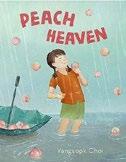
In this newly revised version of her 2005 work, Choi draws from personal experiences to tell the story of a memorable hailstorm. Tasked with a school assignment about what makes her hometown unusual, Yangsook decides to write about peaches. Bucheon is known for growing the finest peaches in South Korea. But what makes them unusual? Just then, Yangsook’s grandmother and brother burst in, warning that giant hailstones are raining down—an odd occurrence for August. The trio notice pink objects too big to be hail. With a rope tied around her waist, Yangsook wades out and sees…peaches! The storm must have carried the peaches from the nearby orchards. Yangsook’s family and community enjoy the fruit, but once the sky clears, the child realizes that this will be a devastating loss for the local farmers. Armed with an idea, a ball of yarn, and a pair of scissors, Yangsook recruits members of the community to collect the peaches—a loving gesture and a wonderful topic for her assignment. Choi’s quiet, meditative narrative is paired with softly blended colors, textured with simple lines; this is a gentle musing on the unexpected delights of childhood and the power of community. In her author’s note, she describes the 1976 hailstorm that inspired her story and discusses the cultural significance of peaches. An endearing tale dripping with charm. (Picture book. 5-8)
Colandro, Lucille | Illus. by Jared Lee Cartwheel/Scholastic (32 pp.)
$6.99 paper | Jan. 7, 2025 | 9781546138525
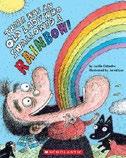
Swallowing a rainbow sets off a series of events that lead to a surprising conclusion.
The title character begins by consuming a cloud—and who hasn’t wished to do that? The cloud is meant to carry the rainbow, but why did she swallow it? The somewhat weak answer: “I don’t know why she swallowed a rainbow. Would you like to know?” The cloud is followed by glitter (kids, don’t try this at home!), then by a cone to catch the glitter, a pole to lift the cone, ribbon to tie the cone, and a horse (“silly, of course”). Then suddenly the lady starts to run, and the items painlessly reappear. The cone becomes a unicorn’s horn, and the unicorn becomes part of a small carousel with golden, beribboned poles and two more matching unicorns, topped with the glitter-sprinkled cloud and the rainbow arching over all. The dame and a half-dozen children stand watching in breathless excitement. As per the astoundingly successful formula, the repetitive text is irresistible and the zany art is more than half the fun. The dame’s head swells to accommodate a mouth capable of the necessary swallowing feats, and her small black dog—whose mouth stretches from ear to nose—is on hand to celebrate key moments. The old lady has pink skin and dark hair, and the children have a range of skin tones.
The insatiable elder is still ingesting the unpalatable, to kids’ everlasting amusement. (Picture book. 3-6)
Choi draws from personal experiences to tell the story of a memorable hailstorm.
PEACH HEAVEN
A young girl is tired of being sidelined by her family.
Compestine, Ying Chang | Illus. by Ginnie Hsu
Rocky Pond Books/Penguin (40 pp.)
$18.99 | Dec. 17, 2024 | 9780593534014

A young Chinese girl is tired of being sidelined by her family.
Jia’s family owns “the biggest restaurant in Chinatown,” and everyone has been busy preparing for Chinese New Year for weeks. Today, Father’s cooking in the kitchen, Mother’s carrying plates, Aunty’s standing on a ladder putting up decorations, Jia’s grandmother’s lighting the lanterns, and her brother, Hu, is moving chairs. But each time Jia volunteers to help, she’s told that she’s too young. At last, it’s time to celebrate. But Jia’s too disappointed to enjoy the holiday. Not even the bags filled with lucky money cheer her up, and as everyone sits down to a sumptuous banquet, Jia refuses to lift her chopsticks. When the dragon dancers arrive, however, she’s entranced, despite her grandmother’s warning to step back. When Jia is invited to take part, sitting on the shoulders of the lead dancers, she helps the performers do the one thing that will bring luck and prosperity to all. Compestine brings her narrative to a satisfying conclusion that will resonate with kids who have been in Jia’s shoes. Bright reds and yellows dominate Hsu’s warm and festive gouache and digital artwork, which features a diverse community of people. An author’s note explains the significance of the lion dance as well as other Chinese New Year traditions. Celebratory and inspiring, especially for youngsters tired of being told they’re too young to contribute. (Picture book. 4-8)
Conrad, Vicki | Illus. by Jeremy Holmes | Calkins Creek/Astra Books for Young Readers (48 pp.)
$18.99 | Dec. 3, 2024 | 9781662680151
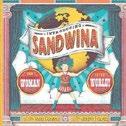
Meet pioneering strongwoman Katie Sandwina.
Opening on a daring (but possibly apocryphal) tale of Katie outlifting strongman Eugen Sandow, the narrative quickly immerses readers in this female athlete’s life. Born in 1884 to a performing family in Essen, Germany, Katie staged her “first hefty stunt” at only 2: “a perfect handstand on Papa’s outstretched palm!” She grew into a teenager with “legs as thick as tree trunks.” Katie performed tirelessly until she attained her big break, headlining the Ringling Big Top Circus. Though she wowed audiences with her astounding feats of strength, Conrad passionately emphasizes that she was celebrated for her femininity, too, mothering two sons and wearing “bold costumes” that highlighted her muscles. Lengthy, somewhat sprawling backmatter (including photos, an author’s note, a bibliography, a timeline, and mini-biographies of other strongwomen) helps establish Katie’s enduring legacy. What really steals the show, however, are the striking, old-timey illustrations in a primary color palette with circus-style fonts and framing. Grainy lithograph-inspired images of vintage travel posters, ostentatious newspaper headlines, and bursts of oversize, colorfully garish text create the feeling of spectacle. Images meld perfectly with text, including on a
dynamic page showing Katie juggling cannonballs, depicting symbols of her desires for domestic life and showbiz success. In this dazzling introduction, an extraordinary woman takes her rightful place back in the spotlight. (Picture-book biography. 7-11)
Cook-Cottone, Catherine | Illus. by Lena Podesta | Random House (40 pp.)
$14.99 | Dec. 3, 2024 | 9780593567913
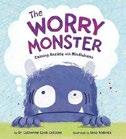
The worry monster feels anxious before a school field trip and practices calming techniques to cope. This practical picture book guides little monsters through seven “Mindful Monster Moves” that help them regulate and quiet their minds. In advance of a field trip, the worry monster’s concerns include missing the bus, getting lost, or needing their pet dragon. To help, the teacher explains mindfulness moves such as stretching, deep breathing, shoulder tapping, and practicing gratitude. Eventually, the worry monster acknowledges that ahead of the trip, there will be big feelings, but they’re prepared to cope—and maybe even have fun. The text takes a very realistic, honest look at the realities of anxiety while also providing concrete, useful methods for regulation. The worry monster is an adorable blue creature with big eyes and goofy teeth who also turns a common childhood fear of monsters into a friendly, helpful mentor. A note to caregivers from the author, licensed psychologist Cook-Cottone, addresses anxiety and management tools for young children. The story confronts deep feelings head-on without dismissing or assuaging, and the included exercises are both doable and helpful for all ages. This book is a must-have for teachers and caregivers looking for an age-appropriate guide
THE MAGIC CALLALOO
to coping with fears and worries for young children.
A useful and adorable book that’s the just-right blend of story and resource. (Picture book. 3-6)
Kirkus Star
The Magic Callaloo
Cooke, Trish | Illus. by Sophie Bass Candlewick (32 pp.) | $18.99 Sept. 3, 2024 | 9781536235579

An Afro-Caribbean retelling of “Rapunzel.” “Long, long, ago, somewhere far, far, away,” in a small village, a callaloo plant grants wishes to those who eat its leaves. A tan-skinned “greedy, selfish man” steals the plant and makes many wishes, accumulating a huge farm, as well as a barbed wire fence and snakes and a dragon to guard the callaloo. Meanwhile, Mister and Missus, a Black couple unable to have children, make their way to the wicked man’s abode on the advice of a wise old woman. They eat the last leaf from the withered plant and finally have a baby girl, Lou, who has “luscious Afro curly locks.” Seeking revenge, the wicked man kidnaps Lou and forces her to work for him. Many years pass, and the wise old woman offers to braid Lou’s hair after years of neglect. A map forms through the braids on Lou’s head, which aids her in her eventual return to her parents. Cooke’s narrative is lengthy yet absorbing and, along with Bass’ colorful, swirly gouache illustrations, evokes the oral storytelling style of classic fairy tales through repetition. In an author’s note, Cooke explains how she drew inspiration from the stories of
enslaved Africans who used similar hairstyles as means to escape.
A vibrant, culturally specific look at a classic fairy tale. (Picture book. 6-9)
DeGroat, Cayla Bellanger & Cicely Lewis | Lerner (48 pp.) | $11.99 paper Sept. 10, 2024 | 9798765629185
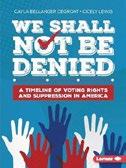
A timeline of high spots and low in the continuing struggle to expand voting rights in the United States. Designed more to give students a basic historical frame for this evercontentious issue than to deepen their understanding of its controversies and nuances, this chronological overview begins with the “three-fifths clause” in Article 1 of the 1787 Constitution. The authors then proceed to identify significant legislation and legal cases up to the 2020 settlement in Brakebill v. Jaeger, which protected voting rights for Native Americans living on reservations. Period images and brief commentary accompanying the timeline that runs throughout the pages create some context. The authors allude to unspecified “unfair treatment” or continuing “barriers” for marginalized groups and specific changes for better or worse on limiting who may vote. The authors rarely pause to examine the racist, sexist, or political mores and motives behind those stubbornly pervasive limits— largely leaving it to readers to research and draw their own conclusions about, for instance, the motives behind the 1882 Chinese Exclusion Act or the 1901 “moral turpitude” tests for voter
registration in Alabama. And to remind their audience of future voters that there are no age limits on activism, the authors switch tracks at the end with a nod to the young eco-litigators behind the still-pending Juliana v. United States lawsuit before closing with suggested activities and debate questions. Sketchy but useful as a springboard for further research. (glossary, bibliography, index) (Nonfiction. 9-11)
Duff,
David | Illus. by Noemi Vola Princeton Architectural Press (44 pp.)
$18.99 | Sept. 10, 2024 | 9781797228266

Breaking up, surveying the options, and making up, solar system–style. Moon and Earth quarrel. So Moon, clad in sports socks and sneakers, stalks off on her extra-long legs to start fresh and meet someone new. Orbiting Venus is fun at first, but the toxic clouds are off-putting. Mercury is too fast to stop for her, and the Sun soon burns her, so she reverses course. Mars looks perfect—until Moon, disillusioned, discovers that Mars has two orbiting satellites already and declines to get involved (“This situation seems complicated”). Upon learning that Jupiter already has a bevy of moons, she decides she doesn’t want to be “anybody’s number ninety-six.” A night of partying with Saturn leaves Moon exhausted. Uranus is too smelly, Neptune is desolate and cold, and is Pluto even a planet anymore? Suddenly Moon longs for Earth. The pastel art is exuberant and decorative; on every page, black space is filled with colorful confetti and tiny improbable spaceships, and planets have stubby appendages and odd alien life-forms. Though the solar system facts are sound, much of the humor, with its references to dating woes, won’t strike a chord with children, who may even emerge with some bleak takeaways about romance. The titular
pair apparently reunite only because Moon can’t find anyone better, and they never address the reasons for their fight or promise to do better.
An uncertain mashup of astronomical information and relationship therapy. (more information on the solar system) (Picture book. 4-7)
Elbayya, Hazar | Anne Schwartz/ Random (40 pp.) | $18.99
Sept. 17, 2024 | 9780593810224

A Palestinian child learns why olive trees are so special.
Salam’s Sido (Arabic for Grandfather) explains that olive trees are “strong and resilient, and their roots run deep in this land.” The trees connect the entire community, from Samir, the farmer who picks the olives, to Teta Dalal, who serves them to her visitors each afternoon. Salam plants an olive tree, too, and waits weeks for it to grow. Salam and Sido are thrilled to see a small sprout emerging. But one day soldiers arrive, destroying everything— including the tiny olive tree. Sido comforts Salam, and at his urging, their friends and neighbors plant more trees: “Just like the olive trees, we are part of this land,” he says. “And just like the olive trees, when they try to break us, we grow back stronger.” Elbayya’s simple, direct language pairs well with her sepia-toned, loose-lined cartoons, capturing Salam’s childish exuberance, the relationship between grandfather and grandchild, and the resilience of the community. Though tinged with a whimsical flair—the sun smiles as Salam plants the tree, a helpful little bird appears throughout—the scenes turn grim as the soldiers arrive. While the author’s note expands on the significance of olive trees to the Palestinian people, neither the backmatter nor the story itself explains who the soldiers are or why they’ve come; with historical context from educators or caregivers, however, this tale could be a starting point for further discussion.
A moving tale about the power of community and love. (Picture book. 4-8)
A Meerkat Diary: My Journey Into the Wild World of a Meerkat Mob
Eszterhas, Suzi | Owlkids Books (40 pp.) $18.95 | Oct. 15, 2024 | 9781771476386
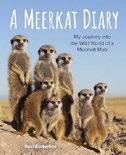
Meet the meerkats! Veteran photographer Eszterhas continues to mine her incredible collection of baby animal images. Here, she recalls two weeks spent observing a family of meerkats in southern Africa’s Kalahari Desert. The pups are a mere two weeks old when she first encounters them. Her team includes zoologist assistant Becky Cliffe (who, like Eszterhas, presents white) and two Botswanan locals: naturalist guide Villa Moatshe and wildlife habituator Motto Keitumetse, whose job it is to get the meerkats accustomed to humans so that they’ll accept human visitors. Even so, Eszterhas and Cliffe start by lying on the ground with their equipment so as not to scare the meerkats—who eventually become so used to their observers that the mother climbs on Becky’s back, where the young ones join her and comfortably nurse. Day by day, the author recounts her observations, giving the individual family members names and marveling at their development. Like any family’s new babies, these are the subject of hundreds of photographs. Eszterhas has selected the most appealing and enlightening to accompany her text, providing lengthy captions in a font that resembles handwriting. She expertly weaves information about the species and their surroundings into this fascinating account of her work as a naturalist-observer.
An exceptional introduction to the young animal world. (more about the local team, glossary) (Informational picture book. 7-10)
Farooki, Roopa | Illus. by Viola Wang Candlewick (32 pp.) | $18.99
Jan. 28, 2025 | 9781536237801
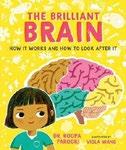
A n elementary guide to our most complicated organ and its functions.
Nurture (experience) beats nature (genetics) in this colorful anatomical overview. Along with providing fanciful schematic portraits of the lumpy organ itself, Wang unleashes a diverse set of children energetically playing or posing amid abundant sprays of tiny images meant to represent “the thrilling thoughts” and “magical memories…that make you YOU.” Still, if Farooki is not as entertaining as the drooling zombie tour guide of Stacy McAnulty’s Brains! (2021), her experience as a medical doctor brings some authority to her pithy descriptions of what each major brain part does, from cerebellum and hippocampus to limbic system, as well as to her general advice about keeping brains properly fed, rested, protected, and stimulated. Readers interested in more advanced topics, such as brain disorders or differences, or in getting past what nerves do, to some explanation of how they actually do it, will have to look elsewhere. Still, the author does occasionally go beyond simple functions to touch on more complicated processes, such as how brains multitask, where researchers have shown feelings are generated in the brain (except for shyness, which seems to be a puzzler), and the differences between long- and short-term memory.
Positive and energetic, if just a quick slice of the basics. (Informational picture book. 6-8)

With her debut picture book, the U.S. Poet Laureate ponders the mysteries of the universe.
BY MAHNAZ DAR
U.S. POET LAUREATE Ada Limón is no stranger to tough writing prompts, but few have been as challenging as the one she received from NASA: crafting a poem that would be engraved on the side of the Europa Clipper. The space probe will explore Jupiter’s moon Europa for signs of life. Though Limón initially found the assignment an intimidating prospect, the resulting verse is a profoundly moving meditation on our place in the universe and the beauty of the unknown. It’s also given her the opportunity to connect with a new, younger readership: She recently made her picture-book debut with In Praise of Mystery (Norton Young Readers, Oct. 1), an adaptation of the poem, illustrated by Peter Sís.
While the work is ultimately intended for the farthest reaches of the solar system, it’s rooted in her love for Earth—and her commitment to keeping it safe. “We’re nothing if we don’t have our planet,” Limón told Kirkus via Zoom from her home in Glen Ellen, California. “And I think that we have to really reimagine our connection to it, reinforce our connection to it.” The following conversation has been edited for length and clarity.


I recognized that what I’m most passionate about, and what I truly believe in my heart, is that this planet is the best planet. And so the poem, even though it’s going outward, had to be in praise of this Earth.
What were your first thoughts when NASA approached you?
I’ve always been fascinated by the stars, the planets, and by space in general. So I immediately said yes and then had the full-fledged fear that comes with accepting an enormous prompt. They had given me some guidelines. [The poem] had to be, I think, under 200 words. They wanted it to be written at
the fourth grade level. And they also wanted it to include water in some way, because the mission’s central interest and curiosity is water.
I had many, many drafts, most of them terrible, because I was making it a NASA poem. It was my husband who said, “You need to stop writing a NASA poem and start writing a poem you’d actually write.” That’s when
Many people think of space as cold and sterile; in your poem, it’s anything but. I was thinking about what it was to be on this Earth and looking at the stars and having those moments— whether we’re alone, whether we’re in love, whether we’ve just lost someone, whether we’re a child, or whether we’re at the end of our life. I wanted that not to be a lonely thing, but a thing that offers connection.
What was it like to adapt the poem into picture-book format?
I submitted the whole poem to my publisher, and they said that Peter Sís was interested. They asked me, “Do you have any rules or creative prompts for him?” And I said, “No, I think he’s so talented, and I’m just excited to see what his imagination will do.” He sent initial paintings as he went, and with each one, I thought, I couldn’t have asked for anything better. My publisher did ask me about line breaks, because, of course, the line breaks shift when you’re creating a children’s book. I always deferred to how it looked with the painting itself. I surrendered my line breaks and instead let the form flow with the illustrations.
Did you approach this poem differently from your other works, knowing you were writing at a younger level?
[NASA] asked just that it could be read at a fourth grade level. I didn’t necessarily write it for children, but I did think about them. One of the things that has brought me the most joy is that [In Praise of Mystery] feels like a children’s book, and it also feels like it’s for everybody. It feels like an art book, and it feels like a science book, and it feels like a poetry book. I would love to write more for children. It’s easy for me, I think, to speak to a younger audience, because I’ve always been interested in writing for all people.
Many people think of art and science as two separate things, but in your book, you make it clear they’re intertwined. Why is it important to honor both?
They both begin with curiosity, and there’s a sense of exploration, but I think that they have to be combined in a way that science can make room for our emotions. [Science] can make space for our souls’ need to be recognized. And art can make room for the potential for change and the potential for our imagination to shift consciousness.
Do you believe we’re alone in the universe?
I don’t know what I believe. I love the mystery of not knowing. And there’s something about giving up to the idea that we don’t know everything that’s kind of wonderful. I do know that we’re all connected, whether we’re part of this planet or part of this universe. We’re connected by what we do
and how we act. And I hope, if there is life outside our planet, that that [type of] life understands how much we love our Earth. It might not seem like that, but we truly love it. That’s one of the things I wanted this book to elucidate.
Earlier this year, you edited the anthology You Are Here: Poetry in the Natural World, and you also launched You Are Here: Poetry in Parks, an initiative in partnership with the Poetry Society of America, the Library of Congress, and the National Park Service, which has placed poetry installations in seven national parks. Why were those projects so important? Our relationship to the natural world has become
What I truly believe in my heart is that this planet is the best planet.

Praise of Mystery Limón, Ada; illus. by Peter
Sís
so bifurcated and divided that it’s dangerous, because we don’t see how we have an impact on the earth, and therefore we don’t see how we have an impact on each other. I’m passionate about not only protecting our environment and talking about the climate crisis, but also about advocating for more imagination, advocating for opening up the limitless possibilities of what we can do, of how we can do it, and what systems and structures need to change in order for us to be better stewards of this planet.
You toured several national parks this summer. How have people responded to the installations?
One of the things that has really surprised me is how far people have traveled to come to the unveilings. I’d [earlier] met someone at Smith College in Massachusetts, and she’d always wanted to go to the Redwoods. I talked about this project onstage, and many months later there she was [at the unveiling]. She said, “This was my opportunity to come visit the Redwoods for the first time.”
What role do artists have when it comes to protecting our planet?
I think that all artists need to focus on what it is that they’re truly passionate about. It can be overwhelming for any artist to feel they must solve all the problems happening right now. We should intertwine our art and our activism in ways that feel authentic. Whatever our passions are, that’s what’s going to come through and connect with a wider audience.
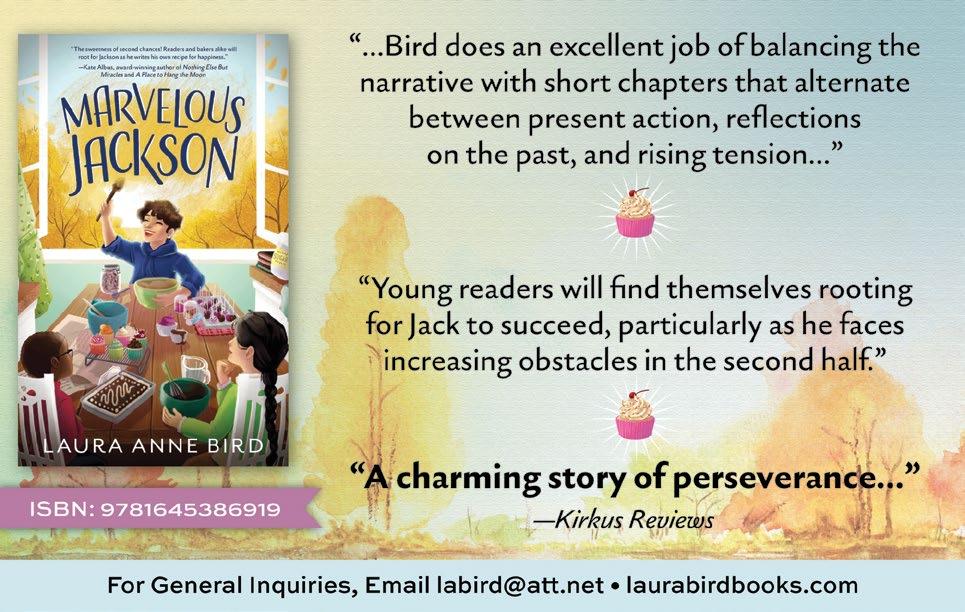
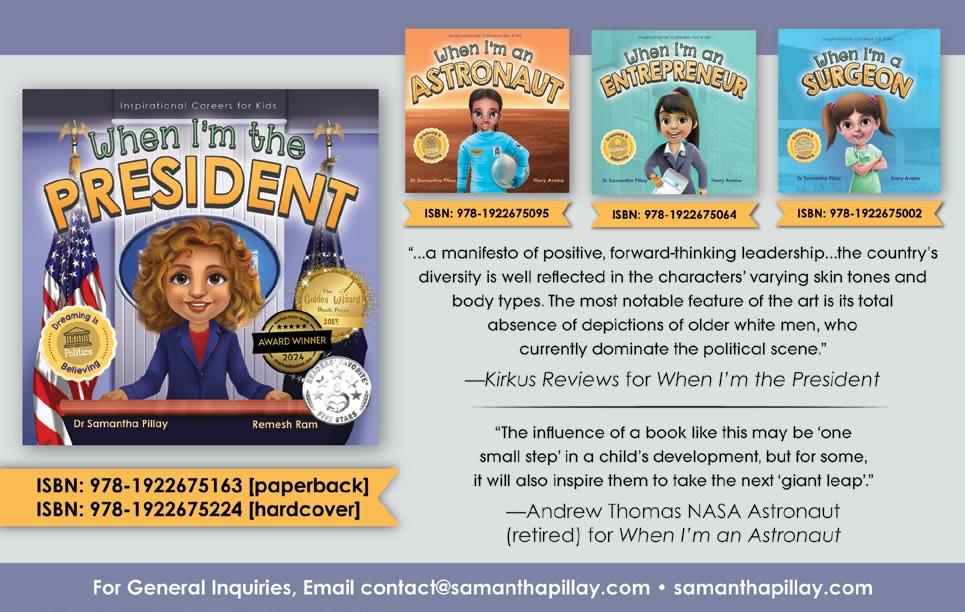

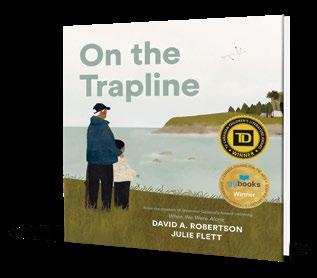



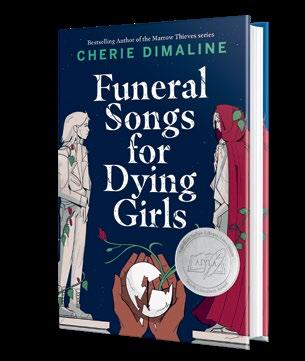
Stop That Mop!: Ready-ToRead Level 1
Fenske, Jonathan | Simon Spotlight (32 pp.) | $18.99 | Jan. 7, 2025 9781665932721 | Series: Ready-To-Read

An inventive riff on “The Gingerbread Boy,” featuring the phoneme made famous by Hop on Pop. A disgruntled mop is done with the brown “SLOP” and green “GLOP” that a pig continues to “DROP.” The mop gleefully decides to “RUN! Run far away!” and blithely bids the pig farewell. The pig’s cry of “STOP THAT MOP” summons a bunny, a pony, and a fish. Though they “HOP,” “CLOP,” and “FLOP,” their efforts are in vain. (The fish sports a water-filled helmet so that it can give chase alongside the others.) Although the put-upon mop initially evokes readers’ sympathy (who wouldn’t want to flee a life of cleaning up slop?), its repeated cry of overweening pride—“But you wil NEVER stop this mop!”— eventually calls out for comeuppance. A stop sign is ready to provide it. Though the sign tries to warn the escapee of an impending “DROP,” the mop is too full of self-importance to listen. Predictably but satisfyingly, the mop falls off the cliff but fortunately lands (“PLOP”) on a blue, vaguely peacock-ish bird passing by. The mop is exuberantly unrepentant, giddily flying off on the bird. Cartoon-style art boldly foregrounds the major players, setting them against minimal backgrounds and giving the mop a distinct personality. This masterful romp makes the very most of its limited vocabulary, entertaining even adult readers while offering beginners humor, suspense, and just plain fun.
Laugh-out-loud fare for burgeoning readers and a rollicking celebration of the rebellious spirit. (Early reader. 4-7)
Finck, Liana | Rise x Penguin Workshop (48 pp.)
$18.99 | Jan. 21, 2025 | 9780593660423
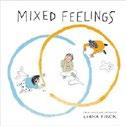
How do you feel? It’s complicated! Going beyond the basics, several racially diverse children discuss the many emotions they experience. A youngster is “mostly happy” to be going on vacation but “a little sad” at having to leave the family dog behind. Another child feels “forgotten-about,” “like the whole world is against me,” when a caregiver ignores the little one to chat with a friend; the child’s tears linger even after the initial upset fades. Finck also explores how it feels to be in the very specific mood to playact as a horse and how being hangry can amplify other negative emotions. Both the text and the deliberately wonky yet controlled cartoon artwork are dryly humorous, at times appealing more to a grownup’s sensibility than a child’s. But Finck carefully pays tribute to the depth and breadth of youngsters’ emotions, which overall makes for an endearing read. Many little ones will emerge empowered to express their complicated yet universal feelings in equally intricate ways, while adults will be gently reminded of the complexity of children’s inner lives, even when they don’t yet have the vocabulary to communicate it. A nuanced take on children’s emotions. (Picture book. 3-6)
George, Jennifer & Zach Umperovitch
Illus. by Ed Steckley | Abrams (240 pp.)
$35.00 | Nov. 12, 2024 | 9781419761256
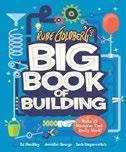
George, Rube Goldberg’s granddaughter, and Rube Goldberg Machine Contest champion Umperovitch, offers suggestions for everyday inventions in the spirit of Goldberg’s time-consuming machines that do simple tasks. The introduction describes simple machines and types of energy and offers tips and tricks for building. Each invention is broken down over several spreads that cover a description of the task it will perform, step-by-step illustrations and instructions, and a blank ruled page for readers’ building and testing notes. The projects are divided into chapters organized by level of difficulty from “Beginner (3-step)” to “Advanced (7+step),” with names such as (in increasing level of difficulty) “Apply a Band-Aid,” “Pour a Glass of Water,” “Dunk a Cookie,” and “Serve Fresh Popcorn.” The extensive backmatter includes facts about Goldberg, safety tips, suggestions for alternate materials to use, a glossary, and further resources. Steckley’s full-color artwork is fun and engaging and clearly depicts how the machines are supposed to work. While it’s debatable whether most of these projects will function in the real world, even with repeated tries, creative inventors may enjoy trying them anyway or coming up with their own improvements. A decent selection of inventions for patient kids who enjoy tinkering. (Nonfiction. 8-12)
Girmay, Aracelis | Illus. by Diana Ejaita Enchanted Lion Books (60 pp.)
$18.95 | May 28, 2024 | 9781592703890
A compilation of zany Rube Goldberg machines for the dedicated aspiring inventor. This book, co-authored by
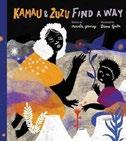
A boy and his grandmother learn that home is where you make it. Kamau and Mama ZuZu, both of whom present Black, wake one morning stranded on the moon, unaware of how they got there. With no memories of his village, Kamau is excited for the change of scenery, while homesick ZuZu creates a new life using
treasured possessions. Out of the photo of her mother grows “a large quilt of stars to keep them warm,” while the river of tears she cries becomes their drinking water. Meanwhile, worried family members Back Home search for them. After a letter from Kamau mysteriously appears in his father’s pocket, his family writes back, placing their missives in the nearby sea. Realizing that “none of the roads Back Home lead here,” ZuZu resolves to “find a way to live, as people do.” Examining the challenges of being forced to leave one’s home, this visually gorgeous, nuanced work echoes stories from the African diaspora as well as global areas of conflict. Girmay’s folkloric text is simple and straightforward yet deeply moving as she explores the emotions, both good and bad, involved in navigating a life-altering situation. Ejaita’s textured, flat illustrations use saturated color to brilliant effect as bright colors pop off the page against a background of deep, dark blues and blacks.
A stunning and empathetic look at the struggles of displacement. (Picture book. 5-8)
Gopal, Jyoti Rajan | Illus. by Nabi H. Ali Candlewick (32 pp.) | $18.99 Dec. 3, 2024 | 9781536228274

A South Asian family gathers around for a baby’s bedtime.
Loving parents and grandparents sing a soft tune— inspired by a Malayalam lullaby from the author’s childhood—coaxing the tot toward a cradle, where delightful dreams await. The baby lands in the lap of the goddess Durga, who will “guard your slumbers.” Other Hindu deities appear: Saraswati (“heavenly guide”), Lord Ganesha (“beloved seer”), and Krishna “prince of tunes,” who “will trill his flute and hum and croon.” The family hopes that their baby will forge connections with their ancestors and shared traditions. As the infant drifts off to a blissful sleep,
they call upon the blessings of nature and wish for a bright future where “hurdles crumble to debris.” This calming story weaves a gentle circle of love. Tamil endearments intertwine with the elders’ hopes, blessings, and prayers for the newest member of the family. Bold images in rich blues, sunset yellows, and dusky oranges showcase the Hindu gods in their regalia. By featuring Mohiniattam, Kathakali, and Onam dancers along with Oppana and Margamkali, which are traditional dances of the Kerala Muslim and Christian communities (respectively), the illustrator gives a nod to the diverse religious traditions of Kerala. A lullaby that radiates feelings of protection and hope. (Picture book. 3-8)
Make Your Mark: The Empowering True Story of the First Known Black Female Tattoo Artist
Gresham, Jacci | Illus. by David Wilkerson | Dial Books (32 pp.)
$18.99 | Jan. 14, 2025 | 9780593618363

A tattoo artist reflects on her personal journey and her adopted community. Staking out a claim to be “America’s very first female African American tattoo artist,” Gresham starts off her tale by spotlighting the peace symbol she drew on her arm in black marker as a child inspired by watching Civil Rights protests on TV. She covers her later move to New Orleans, where she opened a tattoo studio and became a welcoming neighborhood presence both before and after Hurricane Katrina. Retracing her artistic development, from her rejection of an elementary school art teacher’s instruction to “stay in the lines” to her determined quests for just the right
inks, colors, and designs for dark skin, she provides plenty of generally applicable advice: “Stray outside the lines.” “Follow your heart.” “Do what scares you.” “There will be storms, but never give up!” Wilkerson goes more for evocative glimpses than exact reproductions of Gresham’s work (the backmatter includes one close-up photo), offering instead views of her hunched over drawings and drawing boards, at work in her shop, arguing with an early business partner when he announces that tattooing women is “distasteful,” and, after remarking on the “vibrancy, rhythm, and style” of her community, waving from her door to customers and passersby broadly diverse of age, skin color, and body type. “This is how I make my mark,” she concludes. “How will you make yours?”
Informative and inspirational. (Picture-book memoir. 6-9)
Hakes Noble, Trinka | Illus. by Amanda Calatzis | Sleeping Bear Press (40 pp.)
$18.99 | Aug. 1, 2024 | 9781534113046
Series: Tales of Young Americans

A young girl growing up in the 1970s takes a stand against sexism, with support from the women in her life.
Jillian is excited to join math club. But other kids snicker when she signs up: “A girl in our club? Think you’re smart enough?” Discouraged, she flees to the bathroom and cries. On the way home from school, she sees her neighbor Miss Purdy putting up an “ERA Now” sign. She tells Jillian about the proposed Equal Rights Amendment guaranteeing women’s rights and about
A blend of history and earnest, heartfelt encouragement.
JUST ONE GIRL
how she fought for women’s suffrage in the 1920s alongside her cousin Alice Paul. Jillian’s galvanized by Miss Purdy’s activism and by the difficulties her mother has faced as a single woman. But Jillian’s still reluctant to sign up until she speaks to her math teacher, Ms. Henderson, who confides that she, too, was often the only woman in her college math classes. In color, style, and clothing (Jillie’s fringed vest, her friend’s headband), the illustrations evoke the period. While the narrative feels a bit purposeful, with thin characterization, the history it retells is important, and many youngsters will feel heartened by Jillian’s mother’s words: “Maybe all it will take is just one girl to be the first.” Most characters present white, while Ms. Henderson is Black. Offers a blend of history and earnest, heartfelt encouragement. (author’s note) (Picture book. 6-9)
Haruni, Nadine | Speaking Volumes (266 pp.) | $16.95 paper | Oct. 1, 2024 9798890221391 | Series: The Hat Diaries, 2

Ryan takes his girlfriend on junkets into the past and discovers some of his own family’s tragic history in this middle volume in the series.
Wheeling in a Portal to the past with a 60-minute time limit, Haruni sends her 14-year-old magic hat–wearing protagonist off on a series of Adventures. Ryan runs with the bulls in Pamplona, sings mariachi in Mexico, and gets a close-up view of the first moon landing. Then, along with his popular new girlfriend, Violet, he witnesses the coronation of King Charles III and the storming of the Bastille, joins Blackbeard’s crew for a pirate battle, and rambles through war-torn Aachen in 1944. Aside perhaps from the Mexican venture, which relies heavily on the trope of poor but happy people sacrificing for others, these outings rarely lead to
PRICELESS FACTS ABOUT MONEY
personal growth, nor do they make for particularly vivid set pieces. The author expends little effort on incorporating authentic historical details or fitting her travelers into each new setting—they arrive properly dressed and magically able to speak the language, for example. Subplots involving Ryan’s fence-mending with a repentant bully and some rough waters in his relationship with Violet feel shoehorned in, as do the flashback extracts from his grandpa’s diary. The trips do finally force the improbably secretive elder into explaining the dangers of time travel that he’s been darkly alluding to, and one such comes into play after much foreshadowing in a cliffhanger ending. The central cast reads white. Episodic and lacking in tension. (Fantasy. 10-13)
Kirkus Star
Heartbeat Drum: The Story of Carol Powder, Cree Drummer and Activist
Havrelock, Deidre | Illus. by Aphelandra Abrams (40 pp.) | $19.99 Sept. 3, 2024 | 9781419756689

In Carol Powder’s Cree family, drumming skills are passed down through the generations.
“Moshum’s drumbeat went, PUH-POM, PUH-POM, PUH-POM, PUH-POM. Uncles’ voices poured out, ‘Hi-ya, hi-ya, way-ah, hey-ah-oh.’ Kokum sang, ‘We are strong…We are singing… And we will continue.’” Variations on this potent refrain are artfully threaded through Havrelock (Saddle Lake Plains Cree) and Aphelandra’s (Oneida Nation of Wisconsin) biography of drummer
Powder. Carol learns to drum from Moshum, her great-grandfather, who says, “Women first made the drum. It is the sound of a mother’s heartbeat” and emphasizes that all people, including women and children, should drum together, “because that’s the only time anyone’s going to heal.” He tells her that one day women will be excluded from drumming but that it’s up to her to change that. After he passes, Carol continues to practice, growing up to teach her own children to drum and forming Chubby Cree, a female Indigenous drumming group. When Carol is told at a powwow that women are no longer welcome to drum, she faces her fears of speaking up (brilliantly illustrated in hues of blue) and continues to do so to this day, performing with her band, which now includes her grandson. Cree words are strung throughout the radiant illustrations, which make use of bold lines and a sunset palette. Characters are depicted in traditional Indigenous clothing, and the book has multiple gorgeous wordless spreads. Stunning and empowering. (author’s and illustrator’s notes, note from Carol Powder) (Picture-book biography. 4-8)
Kirkus Star
Hobson, Mellody | Illus. by Caitlin Stevens Candlewick (80 pp.) | $19.99 | Oct. 1, 2024 9781536224719 | Series: Mellody on Money
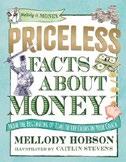
Two youngsters embark on a journey peppered with history, trivia, and skits while teaching money lessons. Meet Mellody and John, the young stars of this currency showcase.
Their very first dialogue offers a taste of the intriguing information to come, from the ancient Mayans’ use of cacao beans as payment to the origins of the piggy bank. The book offers a chronologically and geographically broad timeline of the history of money, encompassing the past 3.9 billion years (starting with meteorite crashes that scattered metals—“the very first bank deposit”) and referencing practices across five continents. Readers will find themselves eagerly sharing the facts gleaned here, including the centuries-old origins of terms and expressions still used today. Mellody and John’s fun banter crucially reflects their experiences with money, such as their families’ differing attitudes toward allowances. Both are savers as well as givers, sharing stories about giving to charity. In one especially entertaining section, a cat and a bunny converse in money-related catchphrases that are separately defined at the bottom of each page. Stevens’ watercolors are appropriately realistic and appealing, whether depicting Mellody’s pretend bank or Elizabeth II’s butler ironing a 10-pound note. Messages about money’s use as a means to an end, rather than an end in itself, ensure that readers will think about their own purposes for their savings. Mellody and John are Black. A variety show brimming with esoteric and practical information. (index) (Nonfiction. 8-12)
Jenkins, Martin | Illus. by Lou Baker-Smith Candlewick (32 pp.) | $18.99 Jan. 14, 2025 | 9781536235715

A polar bear has and then cares for two cubs in the rapidly melting Arctic. Consciousness of climate change is woven throughout this snowy tale. “The ice broke up early again last spring—it always does now,” but a female bear has made her way over the floes to land, feasted on a drowned beluga whale with its tail tangled in a fishing net, dug a den in the snow, and settled down to sleep
and wait out the winter. Emerging the following spring with two cubs in tow, she leads the way through unseasonable slush to the still-frozen sea to hunt for seals, and to teach her offspring how. But how will the bears survive, Jenkins asks, when the ice is gone? “I don’t think anybody knows.” In Baker-Smith’s impressionistic scenes, the mother bear, alone at first and then with her playful cubs, pads over dimly lit snowscapes past glimpses of open water loosely strewn with small bits of floating ice, pausing now and again to look out at viewers in silent enquiry. The author ends with further remarks about the causes of climate change and its effects on the bears’ habitat, then closes by urging readers to learn more about the issue and what they can do to help.
A low-key but fervent appeal to care, framed by atmospheric art. (Informational picture book. 5-7)
Johnson, Janet Sumner | Illus. by Manelle Oliphant | Pixel+Ink (368 pp.)
$18.99 | Oct. 29, 2024 | 9781645952053
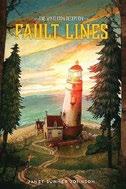
This sequel brings the extended Winterton family together for a Thanksgiving week reunion at Winterton Chalet that veers way off track.
Thirteen-yearold Hope and her twin brother, Gordon, are looking forward to seeing their newly discovered Winterton cousins, who were introduced in the series opener. Hope figured out that the enigmatic Ms. Springer is actually matriarch Jane Winterton, who faked her own death to try to get her quarrelling offspring to reconcile. Hope convinced her grandmother to reveal who she is over the holiday gathering—but then Jane suddenly disappears. When Hope takes it upon herself to reveal the truth of her identity, the family members accuse her of lying and turn against her, making her feel like the outsider she
was when she first learned that her father was a Winterton. The riddles and clues to finding both Hope’s estranged grandfather and the treasure of a long-missing Jane Austen letter will challenge and stimulate readers, who need to be familiar with the first book to follow the storyline. Unfortunately, some inconsistencies in the plot are confusing, and the motivating factor of the Wintertons’ anger toward Hope isn’t explained well enough to be convincing. Some violence later in the story shifts the tone away from the thoughtful and effective nuance of the book’s depiction of family. Most characters read white; the previous installment established some racial diversity in the family. Disappointingly disjointed. (family tree, author’s note) (Mystery. 9-12)
Josephson, Kalyn | Delacorte (272 pp.) | $17.99 | Oct. 1, 2024 9780593708828 | Series: Ravenfall, 3
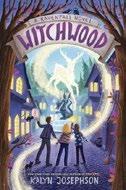
Something is kidnapping the strongest witches in a small town near Seattle—and Anna is in danger. In Josephson’s third series installment, 14-year-old Anna and 15-year-old Colin investigate disappearances in the town of Witchwood, which is hidden by a glamour, where Miriam, Anna’s aunt, is head of the town council. Aunt Miriam lives with her daughter, Leah, in a house that belonged to Anna’s grandparents and that moves about on chicken legs. Colin sets out to speak with the partners and families of the women—all powerful witches—who were taken by something that emitted an intense, bright light. But Witchwood’s denizens are hostile toward Ravens, who, like Colin, are guardians of the shield between the magic and ordinary worlds. Meanwhile, Anna turns out to be a witch, and in addition to having the gift of psychometry, which she’s still
developing, she seems to be a potential target of whatever is taking the witches. She’s also intrigued by and drawn to the ways that her aunt and cousin acknowledge their Jewish heritage, such as observing Shabbat and placing mezuzahs on their doorposts. The narrative, which alternates between Anna’s and Colin’s voices and viewpoints, blends magic and cosmology from multiple traditions. The quotidian magic—teas, candles, and enchanted objects for sale at the Witchmarket—is engaging. Max the Jabberwocky in cat form and the sentient houses—Ravenfall Inn (where Anna and Colin live) and Aunt Miriam’s home— will charm new and returning fans alike. Solidly entertaining. (map) (Fantasy. 10-14)
Kamanda, Ali & Jorge Redmond Illus. by Amanda Quartey Sourcebooks eXplore (40 pp.) | $18.99 Oct. 15, 2024 | 9781728271149

From the creators of Black Boy, Black Boy (2022) comes a similar ode for Black girls. A youngster sits on her bed, where an adult companion does her hair for the day ahead. The accompanying text strikes an encouraging note: “Dear girl, Black girl, / rise up, it’s time / It’s a new day and a / chance to shine.” The girl’s bed is covered with a multicolored fabric quilt—a nod to the quilting tradition in African American culture—while her walls are decorated with posters of inspiring quotations by famous Black women. The quilt serves as a visual leitmotif as the girl is told to “shape your own history like / these amazing queens.” “Dear girl, / Black girl, / what do you see?” her guardian asks. In rhyming sentences, the authors introduce and summarize the courageous actions of nine contemporary and historical Black women, including Vice President Kamala Harris. Bright digital illustrations of the subjects complement the brief, explanatory text. Refreshingly, the book takes a global perspective.
Potentially less familiar people from outside the United States are featured alongside U.S. figures: South African musician Miriam Makeba, Sierra Leonean Creole educational advocate Adelaide Casely-Hayford, and Canadian civil rights activist and businesswoman Viola Desmond. Together, Kamanda, Redmond, and Quartey have created an upbeat reminder of the great potential inherent in Black girls everywhere. Stirring and informative. (biographical notes about the people mentioned) (Picture book. 5-7)
Kassirer, Norma | Illus. by Mark Richardson
The Collective Book Studio (88 pp.)
$10.95 paper | Oct. 1, 2024 | 9781685552251
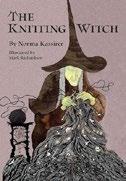
A posthumously published story of spoiled children and malicious crafting. Meet Ivy Lou, a spirited child, to say the least. Blessed with two overly indulgent parents who cave to her every whim, Ivy Lou has perfected three different levels of tantrum to get everything she wants. Kassirer incorporates deliciously chosen details as she describes Ivy Lou’s notoriously naughty behavior—from shrieking loudly to threatening to turn herself inside out. But then, in walks a witch with a green face, a pointed hat, and a pair of knitting needles. Before long she has knit Ivy Lou’s parents out of existence, and the girl is recruited to learn to become a proper witch’s child. Unfortunately, Ivy Lou is terrible at it and eventually is ordered to knit a cloak by midnight or be turned into a tiny
porcelain pig. Discovered in a pile of manuscripts after the author’s death, this title contains many elements of older children’s books, harkening to the days of Roald Dahl’s work and Betty MacDonald’s Mrs. Piggle-Wiggle series. Richardson’s loose, stylistic illustrations capture Ivy Lou’s most horrid moments, alongside the gleefully diabolical expressions of the witch. While the narrative is old-fashioned in look and feel, the storyline’s moralism has a charm that tempers some of the more dated elements. The main characters present white, while group scenes include people of different skin tones.
Extreme brattiness meets extreme witchiness in this merrily plotted tale. (Chapter book. 6-9)
Keane, Max | Harper/HarperCollins (32 pp.) $19.99 | Oct. 1, 2024 | 9780063349414

In this follow-up to Trash Truck (2020), two good pals keep on truckin’.
Donny, a raccoon, and Walter, a bear, are besties who do everything together, from taking care of dental hygiene (hilariously, Donny brushes using a tree branch, while Walter flosses with a bootlace) to savoring a light dumpster breakfast to taking a bit of exercise (such as running from a swarm of angry bees after Walter steals their honey). “Clever and crafty” Donny and Walter are into subterfuge: To trick a vendor into selling them ice cream, Walter dons an overcoat, and Donny, sporting a fedora, rides atop the bear’s shoulders. Life’s good—except these two have no one to
Extreme brattiness meets extreme witchiness in this merrily plotted tale. THE KNITTING WITCH
play with. Jump rope’s no fun; if each of them holds one end of the rope, no one can jump. Seesawing is unequally balanced, weight-wise. They don’t have much luck searching for friends, but, ever optimistic, they continue looking. Then, when least expected, two great buddies literally pick them up: It’s Trash Truck and young, blond, pale-skinned Hank! And what adventures follow! Donny and Walter can now jump rope, and the “disguised” ice cream buyers now order four cones. Whether or not readers are already familiar with Trash Truck and Hank from the previous book, they’re in for sprightly fun; the cartoony color illustrations, featuring endearing characters, are filled with giggle-worthy sight gags. Background humans are diverse. An uplifting tale that will especially resonate with truck mavens. (Picture book. 3-6)
Kerbel, Deborah | Illus. by Dawn Lo Owlkids Books (32 pp.) | $18.95 Aug. 13, 2024 | 9781771475716

An encounter between a young diver and an eight-armed sea creature touches off a deluge of octo-facts.
Catering to animal lovers who can’t get enough of these weird and fascinating creatures, Kerbel loads up the pages with easy-to-grasp information, presented in paired blocks of different type sizes. The author fetchingly observes that a drowsing octopus “might reach for something soft to cuddle” (a sponge or possibly a sea cucumber in the illustration), while a separate block labeled “FACT” in smaller type explains that octopuses have two rows of up to 280 “strong and sensitive” suckers on each arm that are “used for feeling, tasting, and gripping.” Lo’s freely drawn and brushed pictures add to the intimate overall feeling, depicting a pink,
button-eyed octopus working over a sandy seabed rich with brightly colored shells and fish; the octopus often seems to dance with a snorkeler with light brown skin and pigtails who glides by overhead. Meanwhile, the author marvels infectiously at the creature’s anatomy, intelligence, and uncommon ability to change colors, skin textures, and even shape (in the case of the mimic octopus) to hunt prey or hide from predators. The lesson’s not over when the time comes to wave “Goodbye, Octopus!”; Kerbel closes with a list of “Extra Octopus Facts.”
Enthralling fare for budding naturalists. (Informational picture book. 5-8)
Leahy, Elisa Stone | Illus. by Maine Diaz Quill Tree Books/HarperCollins (320 pp.) $19.99 | Nov. 19, 2024 | 9780063255531
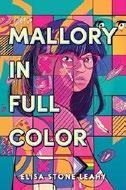
Mallory Marsh is eager to please. Whether she’s agreeing to look after her chaotic twin brothers to help her overworked and recently separated mom or simply saying that everyone else’s preferred pizza toppings are her favorites, too, Mal always puts everyone else’s needs before her own. She’s placated by stealthy acts of rebellion, lying about her age so she can publish her webcomic, “MetalPlated Heart,” whose characters are closely based on her classmates, and attending the library’s comic club when her parents think she’s at swim team practice. When Mal meets nonbinary cutie Noa at comic club, she begins to realize that neither gay nor straight might be the right label for her. Meanwhile, the library is planning a drag storytime, and Mal is anxious about the protesters who are trying to shut it down. Mal is at a relatable stage on her queer journey, and questioning middle schoolers will surely see themselves in her story. Most of her problems stem from conflict avoidance, and Leahy establishes that this trait comes from her father, who
tells Mal that he’s working on expressing his emotions in therapy, though there’s no mention that Mal could benefit from therapy as well. Dynamic panels from the webcomic are interspersed throughout, offering additional insights into Mal’s emotions. Mal’s mother is Korean, and her father is implied white; Noa has brown skin. A sincere cautionary tale about finding one’s voice and putting others’ needs before one’s own. (author’s note) (Fiction. 9-13)
Kirkus Star
Lebourg, Claire | Trans. by Sophie Lewis | Transit Children’s Editions (88 pp.) | $18.95 | Oct. 8, 2024
9798893389067 | Series: Mousse
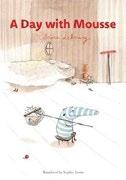
Mousse enjoys himself while dealing with an unexpected, demanding houseguest. Mousse—a small, longsnouted creature with a green-andwhite-striped body and stick-figure limbs—begins each day by reveling in such simplicities as “the strip of sunlight that shines through his window each day.” As the day goes on, readers learn that the nearby sea washes into Mousse’s house daily, allowing him to make a living by collecting marine treasures such as shells (he takes care to return living animals to the water) and shipping them to online buyers. But today, a walrus named Barnacle has washed in with the tide and begins to help himself to Mousse’s food and favorite book. Mousse unceremoniously attempts to oust Barnacle. The illustrations that follow hilariously contradict the text, which implies that Barnacle has left; he has in fact used Mousse’s bathtub and slept in Mousse’s bed. Yet compassionate Mousse eventually nurses Barnacle through an illness and tolerates a visit from Barnacle’s large family. Reminiscent of the late
A sure crowd pleaser, better for browsing than systematic research.
William Steig’s work, this imaginative French import blends elegant turns of phrase with delicate art, rendered in watercolor and pen and ink. Divided into three chapters, the text includes challenging syntax and vocabulary, but emergent readers will eagerly push on, encouraged by the gentle humor and by their feelings of sophistication over the naïve Mousse. The interplay between visuals and words is a sheer delight, while the final punchline will have little ones giggling. Enchanting. (Picture book/ early reader. 5-8)
Lin, Jiemei | Candlewick (30 pp.)
$10.99 | Dec. 17, 2024 | 9781536232356
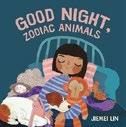
A child issues a gentle good night to the 12 animals of the Chinese zodiac.
A young child with black hair and rosy cheeks lovingly gathers stuffies and household pets before bringing them to bed. Layered lines and textured shapes with bright contrasting colors reveal different scenes of each sleeping zodiac animal. Simplified Chinese characters are written alongside each slumber-themed poetic stanza, such as “a clever mouse lies down to rest her weary ears and head.” This pattern goes on to portray an ox family snoozing amid various hues of blue plants; then, as the “striped and mighty tiger snores softly, gently, sweet,” a brightly striped tiger with exaggerated proportions lies surrounded by bold green plants. Every animal gets highlighted, from a bundle of floppy-eared bunnies to vividly blue dragons in a rustic cave. Eye-catching
illustrations provide plenty of engagement. Readers will be entranced as they follow every wiggly snake across the pages and examine the cozy curls of the sheep’s wool. The narrative eventually circles back by relaying how all zodiac members “safeguard dreams” as toy representatives populate the child’s room. Despite a few variances in pace and rhymes, the story projects an overall cozy tone. Brief notes explaining the legend of the zodiac and ties to the lunar calendar follow.
A gentle, beautifully illustrated tale, ideal for bedtime. (guide to Chinese zodiac legend, guide to the lunar calendar and the zodiac) (Picture book. 0-5)
Lindström, Eva | Trans. by Annie Prime Astra Young Readers (32 pp.)
$18.99 | Dec. 3, 2024 | 9781662620706

How far will you go for your pet?
Light-skinned
Mr. Krup does everything for his pup: He fries Marble’s kibble instead of feeding it to her straight from the bag, his spare home decor features only toys and objects meant for his canine companion, and he goes to great lengths to get Marble anything her heart desires. After sneakily stealing Mr. Krup’s pork chop, Marble muses, “I like the moon,” which sets Mr. Krup on a mission to capture it for his pup’s enjoyment. He enthusiastically builds a rocket and travels to outer space, soon returning with the celestial body in tow. But, like many a child who asks for a treasured object, only to grow
bored with it, Marble quickly finds herself moving on to a new interest. Lindström’s text, translated from Swedish, is deadpan and unsentimental, while her washed-out gouache and watercolor illustrations are slightly surreal yet still grounded in reality. While adults will chuckle knowingly, kids may be turned off by Marble’s blasé reactions to Mr. Krup’s efforts to meet her needs and wants; many will find themselves wondering why Mr. Krup continues to dote on her when he gets so little in return. A matter-of-fact, at times frustrating account of a one-sided relationship. (Picture book. 5-8)
Lorencen, Vicky | Illus. by Rémy Simard Bright Matter Books (288 pp.)
$19.99 | Jan. 28, 2025 | 9780593707913

A “spewnami” of straight poop on vomit. Leaving no double entendre unturned, Lorencen goes well beyond alimentary basics in this “ralphabetical” A-Z discourse on the causes, functions, varieties, and biological mechanisms of (to use the medical term) emesis. The book introduces readers to interesting new words, like peristalsis and uvula , and offers overviews of the whole digestive system and the enteric nervous system that governs it. Kids can also feast on a burgeoning lexicon of synonyms and slang terms for vomit —the A entry alone lists five that start with that letter—as well as potential causes, from food poisoning and car sickness to “cybersickness.” Lorencen suggests practical remedies and even offers step-by-step instructions for cleaning the carpet afterward. All of this content is delivered in a stew of digestible prose blocks and punny text exchanges between light-skinned
questioner Chuck, an unattached stomach named Queezy, and brownskinned explainer Professor Anita Puke. Recipes for gross but edible treats with stomach-churning names like Barfday Cake, historical anecdotes, and versions of Jonah and the whale and other briefly retold ancient tales are interspersed. The illustrations—fanciful cartoony spot images capped by a pair of simplified anatomical diagrams relegated to the “Back Splatter” alongside a list of international equivalents for toilet —are wanting. Still, this info-gusher, plainly a labor of love, will draw readers like flies. A sure crowd pleaser, better for browsing than systematic research. (glossary, vomit vocabulary) (Nonfiction. 8-12)
Lucyk-Berger, Chrystyna | Scholastic (288 pp.) $18.99 | Dec. 3, 2024 | 9781339012469
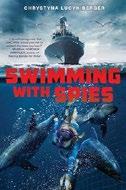
Twelve-year-old
Sofiya Oleksandrivna Len, who’s living in Sevastopol on the Crimean Peninsula in 2014, is used to confronting bullies; now she hopes to stymie the man who wants to train her beloved dolphins for military use.
Sofiya and her friends, including bestie Cedric, who’s Nigerian Ukrainian, are regarded as “the smart kids” and targeted by the rich clique. Sofiya, who has Russian, Ukrainian, and Tatar heritage, has gotten in trouble over her squabbles with Ilya, the Russian boy who’s the lead bully. So she’s surprised when her babushka reveals that Sofiya’s and Ilya’s mothers were close and that the two kids were once playmates—until a tragic accident resulted in Ilya’s mother’s death and Sofiya’s mother’s departure from the family. The former rivals get to know each other better when, as punishment, they’re assigned to work together at the dolphinarium where Sofiya’s father is the director. Sofiya begins to view Ilya
differently after seeing him interact with the dolphins, but their newfound bond is strained when Russia invades Ukraine, annexing Crimea and stirring up xenophobic nationalism, and when Major Chaban, Ilya’s father, takes over the dolphinarium in order to use the pod to support Russia’s war efforts. The fear of Sofiya and her friends is palpable, as is the heartbreak they feel for the dolphins. As they hatch a daring plan to rescue the dolphins, their steadfast teamwork and mutual trust against a backdrop of conflict is inspiring.
A heart-pounding, thought-provoking adventure based on true events. (maps, afterword, glossary) (Fiction. 8-12)
Madden, Kathleen | Tilbury House (40 pp.) $18.99 | Sept. 15, 2024 | 9780884489931
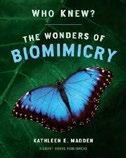
Nature is the ultimate inspiration. Packed with 18 spreads of engineering marvels, this book offers a brief introduction to the world of biomimicry (defined here as “the design and creation of materials, buildings, and processes that are modeled on nature”). Madden covers the Japanese Rail’s bullet train (based on the kingfisher bird’s beak), a type of concrete inspired by coral reefs, and space-focused examples, such as the lower body negative pressure device, designed by mimicking the blood flow of the long-legged giraffe. Many readers will be surprised to learn that the tiny nanotubes found in an astronaut’s spacesuit were designed by engineers who found inspiration from the hollow hair follicles of a polar bear. The pages are vivid and engaging, full of brilliantly colored photos of plants and animals, from a close-up of a lobster that inspired an X-ray device to a vibrant image of a pink lotus leading to the development of self-cleaning fabrics. The insets of the engineering creations, however, are a bit
small, with text that’s somewhat difficult to read. STEM enthusiasts may find themselves wanting more from the descriptions of some of the engineering products; on the whole, though, this is a fascinating introduction. A simple yet intriguing look at nature-based engineering. (Informational picture book. 7-10)
Madhani, Jehan | Illus. by Rashin Kheiriyeh | Candlewick (32 pp.)
$18.99 | Nov. 12, 2024 | 9781536228113
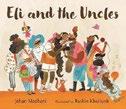
Eli spends a summer’s day with his uncles. Each of Eli’s eight uncles is bigger and taller than the next, and each sports a beautiful beard. Uncle Mahmoud enthralls Eli with stories, Uncle Salim prepares Eli’s favorite foods, and Uncle Hanif and Uncle Aman entertain him with their singing and dancing. Uncle Riz cracks Eli up with jokes, while Uncle Farouk and Uncle Aziz do nothing but argue. Last of all is Uncle Nooru, “a world champion nap-taker.” After a long day of merriment, Eli’s mother returns to pick him up. As Eli says goodbye to his uncles, he revels in their beards. Some are slippery with beard oil, while others are long and curly. He gets lost in Uncle Hanif’s waterfall-like beard, while Uncle Aman’s rough scratchy beard gives him tickles. Finally, Eli heads home sleepy, dreaming of eight elegant beards. Madhani’s text is somewhat plain, more a list of the various relatives than an engaging narrative, and though it touches on each uncle’s interests, we barely get to know Eli. Bright illustrations, dominated by oranges, pinks, and blues, add touches of whimsy as they bring each uncle to life—Uncle Aman sports cowboy boots, while Uncle Nooru is clad in striped jammies and a nightcap. The characters have brown skin and dark hair; their names suggest South Asian or Iranian heritage. Playful illustrations elevate a rather unadorned tale. (Picture book. 4-8)
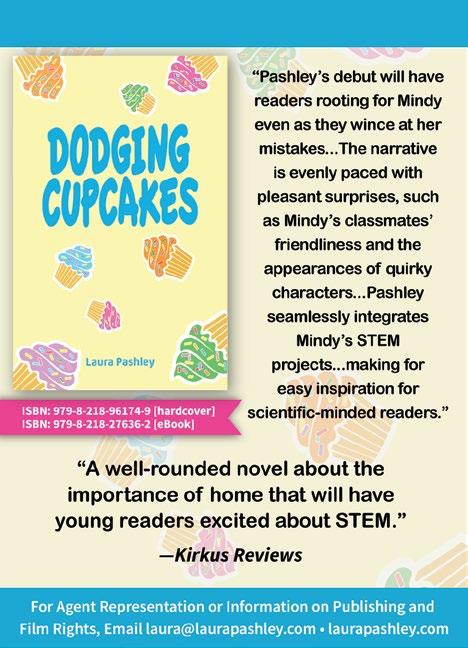
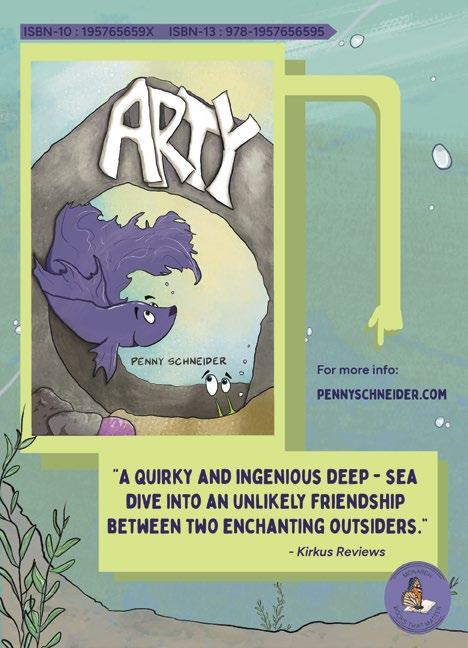

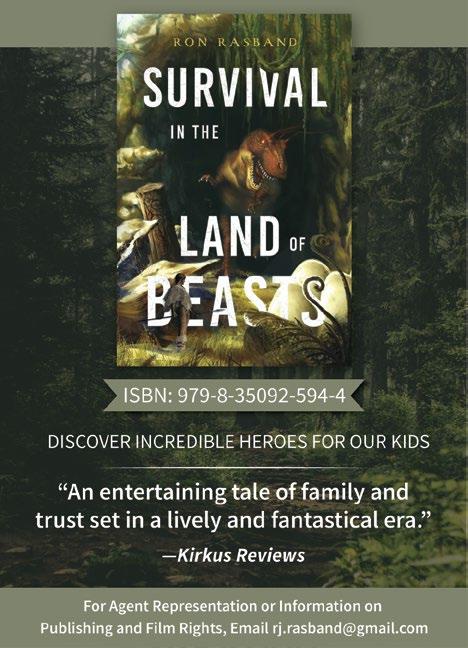
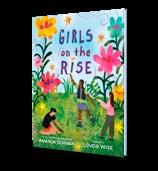
The poet’s Girls on the Rise is coming next January.
Amanda Gorman has a new children’s book coming out next year.
Viking Children’s Books will publish the poet’s Girls on the Rise, illustrated by Loveis Wise, in the winter, the
press announced in a news release.
Gorman gained literary fame in 2021 after she became the youngest poet to read a poem at a presidential inauguration. That poem, “The Hill We Climb,” was later published as a book, and she went on to publish a poetry collection, C all Us What We Carry, and two children’s books, Change Sings: A Children’s Anthem, illustrated by Loren Long, and Something, Someday, illustrated by Christian Robinson.
In August, she read a new poem, “This Sacred Scene,” at the Democratic National Convention.
Girls on the Rise, says the publisher, “celebrates the

strength of girls in their many forms—all beautiful, not for how they look but for how they look into the face of fear and reminds us how girls have shaped our history while marching boldly into the future.”
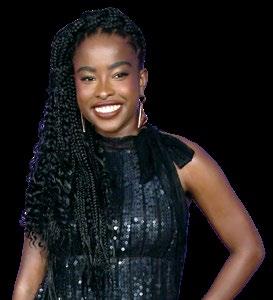
In an interview, Gorman told Time magazine, “I didn’t realize [Vice President] Kamala [Harris] was going to be running when I wrote that book, but I couldn’t have chosen a more perfect time to indulge in the fantasy of having it out in the world.”
Girls on the Rise is slated for publication on Jan. 7, 2025.—M.S.

For a review of


for being a Kirkus Prize Finalist for Young
“With potent verse rivaling Hughes’ own and gleefully energetic artwork, this is a book that reminds us why we read: to forge connections, to pursue joy, and, above all, to celebrate the beauty of the wri en word.”
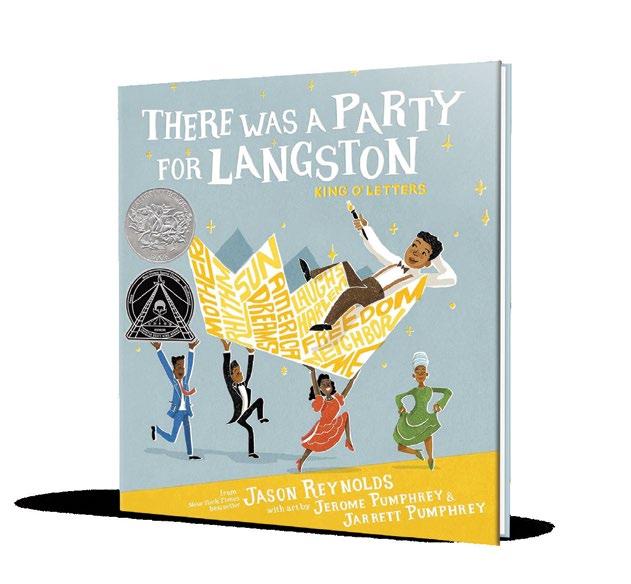
—Kirkus Prize Jurors
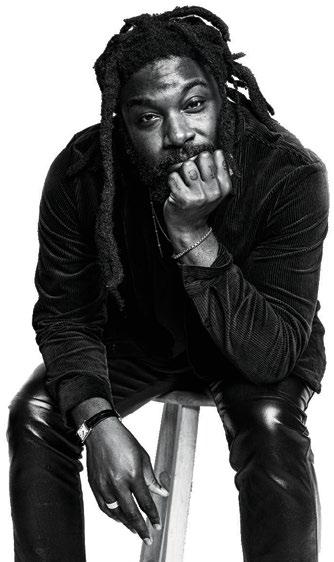






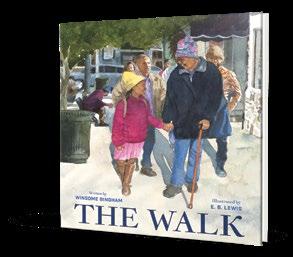


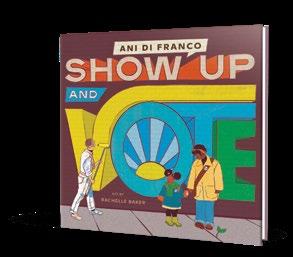
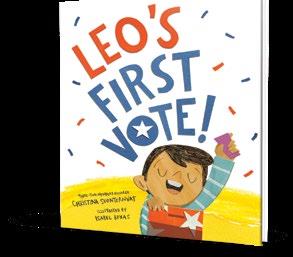

A heartfelt expression of love in the face of grief.
POPI’S ALL SOULS SONG
Popi’s All Souls Song
Malone, C.K. | Illus. by Shelly Swann
Beaming Books (32 pp.) | $18.99
Sept. 10, 2024 | 9781506487519
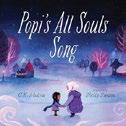
A child learns to keep her late grandfather’s tradition alive. Accompanied by her dog, young Mara grows up singing with her grandfather (Popi) and grandmother (Nene) every year for All Souls’ Day, a celebration of the departed. When Popi dies, Mara expects Nene to focus on him, not on the other deaths that still are remembered in their neighborhood. “Popi would want us to continue his tradition since others suffer, too,” Nene tells Mara. Mara tries to understand as they walk through the snow, from home to home, singing to neighbors. The child’s frustration mounts as they serenade families who have lost pets (“I love animals too, but what about Popi?”) and a father who lost his son in the war (“He died five years ago. Popi died this year”). “It is not for us to judge whose loss is the greatest,” Nene tells Mara. When Mara realizes that her grandmother’s effort is taking a toll, she goes off on her own, recruiting members of the community to come together and sing Popi’s song for Nene. Though tinged with melancholy, this story of the legacy that the departed leave the living is threaded with tenderness and hope. Swann relies on deeply saturated purple and blue hues, with airy swirls filled with musical notes expressing Popi’s song. Mara and her family are brown-skinned; their community is diverse. A heartfelt expression of love in the
face of grief. (information on All Souls’ Day) (Picture book. 4-7)
Marantz, Keith | Illus. by Larissa Brown HarperAlley (240 pp.) | $15.99 paper
Dec. 3, 2024 | 9780063009660
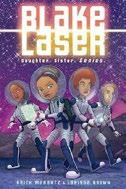
A family vacation among the stars becomes a mission to save the solar system. In the year 2354, 12-year-old Blake McClain is on a spaceship with her family—her mom, who reads Black, her dad, who appears white, and her big brother, Brody. They’re on their way to a stellar vacation home, but their trip is sidelined when they discover that the sun is rapidly being drained. Clues point to a nearby asteroid. Hijinks ensue involving Zagbar and Karl, a pair of bumbling, blueskinned aliens. The McClains’ family dynamics are wholesome and positive, with the parents showing affection for each other and the siblings playfully teasing each other. Blake and Brody learn to combine her science and his art in a standout scene. Blake’s parents are initially skeptical of her abilities, but they eventually recognize her scientific gifts and ability to handle responsibility despite her young age. Disappointingly, new classmate Sherman Klein, a chubby whitepresenting boy, receives the opposite treatment, with Blake and her friend Anusha Gupta, who’s cued South Asian, joking about his weight and unkindly calling him a nerd. Blake
says they’re “just playing,” but this behavior undermines her later heroism. Despite a flat quality to the illustrations, readers looking for an adventurous girl surrounded by science-fiction tech, spaceships, and dangerous robots will be well served, but the future looks regressive for nerdy friendship.
A STEM-friendly interstellar adventure. (Graphic science fiction. 8-12)
Meyer, Marissa & Joanne Levy
Feiwel & Friends (256 pp.) | $19.99
$9.99 paper | Oct. 29, 2024
9781250360670 | 9781250360816 paper
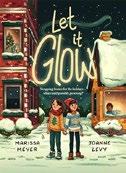
In a funny, feel-good tale, 12-year-old twins separated at birth meet by chance and try to pull off a family switch during the December holidays
The girls, who are cued white, agree that it would be a delicious prank, but each has a personal motive, too: Aviva Davis, who was adopted by a culturally Jewish mom and a Black dad who was raised Christian, wonders what it’s like to celebrate Christmas. Budding author Holly Martin, who was adopted by a white-presenting single mom, sees a golden opportunity to gather experiences for a school writing assignment about facing her fears. In a plot as sweet as a Hanukkah jelly doughnut and twisty as a Christmas cinnamon roll, the pair just manages to bail one another out of a string of sticky situations—both hilarious and otherwise. They both learn something of the customs and meaning of the two holidays while working through tears and laughter—not to mention conflicts sparked by their very different personalities. Everything culminates in a holiday performance at a local senior center that will have readers rising up to cheer them on. Though their history remains tantalizingly mysterious, for the protagonists, who narrate
alternating chapters, it’s mission accomplished and more: Aviva emerges feeling more secure in her Jewish identity, while anxious Holly discovers unexpected depths of courage. A warm bundle of holiday cheer. (song lyrics) (Fiction. 8-12)
Moore, Tanisia | Illus. by Robert Paul Jr. | Scholastic (32 pp.) | $19.99
Oct. 15, 2024 | 9781338776201
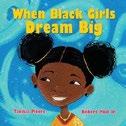
An upbeat manifesto that reflects on inspirational Black women of the past and present. This book opens matter-of-factly with the declaration: “I am dope.” A young Black girl confidently proclaims her royal African ancestry (“A descendant of African kings and queens. / My crown shines bright / in all its glory”). She likens herself to historical icons such as NASA mathematician Katherine Johnson, astronaut Mae Jemison, abolitionist Sojourner Truth, and athlete Serena Williams. Paul’s digital art makes effective use of cold-press watercolor paper, evoking the texture and fluidity of watercolors. His warm pastels complement the affirming text as the young narrator sings alongside musician Billie Holiday, writes in a journal with author Jacqueline Woodson, and high-fives First Lady Michelle Obama. In his artist’s note, Paul shares that he drew inspiration from his own daughter for the book’s protagonist; he hopes that other young readers will see themselves in her confidence and verve. In her author’s note, Moore states that she wrote the book as a love letter to her younger self; she also includes further information on the women featured throughout. This is a loving and enlightening work that will pair well with Vashti Harrison’s Little Leaders books. Be prepared for a confidence surge in all who pick this one up. (Picture book. 5-8)
Morris, Richard T. | Illus. by Julie RowanZoch | Caitlyn Dlouhy/Atheneum (40 pp.) $18.99 | Nov. 26, 2024 | 9781481478021
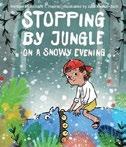
In this riff on the celebrated poem, a youngster rides a blue hippo with a jingle bell harness through a wintery setting. The brownskinned child speaks the opening lines: “Whose woods these are I think I know.” The child then deviates a bit: “My little hippopotamus must think it—” Suddenly, the youngster encounters Robert Frost, peering out of a window superimposed over the trees (no house is depicted). The poet is clearly upset by the word change and the strange sight: “Hippos live in the jungle.” The child, the hippo, and Frost suddenly find themselves in a colorful jungle scene, along with tropical birds and animals peeking from the foliage. The young protagonist continues to rewrite the poem to fit the new environment. When Frost points out that there is no snow in the jungle, the child tries substitutes: Rain? Dough? Deciding that the verse needs more excitement, the child invents disasters such as meteors, a tidal wave, and an alien invasion. Somehow, Frost manages to get through the poem and even starts writing another well-known work. The disconnect between the staid poet and the imaginative child makes for a highly amusing example of metafiction, while the digital art blends elegantly composed wintry backdrops with cartoonish images of the characters and various animals, with gleefully chaotic results. Sets an American literary classic on a wonderfully wrong turn. (Picture book. 6-9)
Murray, Laura | Illus. by Mike
Lowery | Putnam (48 pp.) | $17.99
Oct. 15, 2024 | 9780593532492
Series: The Gingerbread Man Is Loose, 3

The Gingerbread Man learns to fold and fly a paper airplane. The cookie protagonist— whipped up by a class of elementary schoolers and now a member of the classroom—joins the students for a lesson that combines math and science: creating paper airplanes. The kids go outside to fly their planes, but when one student’s creation lands in a tree, the Gingerbread Man jumps into his own plane. Soaring to the tree, he frees it as the students cheer. Early on, the story references fractions and the concepts of speed, lift, and gravity, but these ideas don’t seem to matter when the Gingerbread Man sails through the sky on his way to the tree, doing loops and flipping upside down. The step-by-step folding directions aren’t as clear as they could be, relying on readers’ prior knowledge. Still, it’s an entertaining enough story, ideal for comics newcomers. Lowery combines his full-page illustrations with smaller panels. In his thick-lined, exaggerated cartoon illustrations, the Gingerbread Man sports his iconic icing bow tie and trim; the students vary in terms of skin tone and hair color. While followers of the series will be happy to see a new installment, the muddied presentation of the concepts outlined in the book keeps it from being a standout. Not this character’s strongest outing; strictly for fans. (Graphic early reader. 5-8)
Sets an American literary classic on a wonderfully wrong turn.
STOPPING BY JUNGLE ON A SNOWY EVENING
Nakhaei, F. | Clavis (32 pp.) | $18.95 Oct. 8, 2024 | 9798890630896
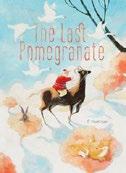
A young boy and his goat companion search the forest on Yalda Night, a Persian holiday observed on the longest night of the year.
“For a perfect Yalda Night,” the unseen narrator tells us, “you need a pomegranate.” Tan-skinned, rosy-cheeked Pouya is excited to see one last pomegranate on the tree. Before he gets far, though, a cold wind “snatches the pomegranate,” and it rolls away. Meandering through the woods, Pouya asks Rabbit if she’s seen the fruit. Rabbit explains that she took just a few seeds before passing the pomegranate on to Bear; when questioned, Bear says he did the same before giving the fruit to Fox. Rushing to find Fox, Pouya and his goat discover her sharing the seeds with her overjoyed little ones. Pouya decides that he and his family can wait until next year for another pomegranate, but the wind has one last trick: blowing in enough pomegranates for his whole family. In this tale published in Belgium and the Netherlands and translated from Dutch, Nakhaei offers a sweet spin on a familiar trope as Pouya questions each of the animals. Dreamy, watercolorlike images depict a fairy-tale landscape full of clouds, warm foliage, and winter snow. Despite Pouya’s anxiety, this is a friendly forest; rather than being scary, lumbering Bear seems a bit of a goof, while Fox’s children are darling. A sweetly satisfying holiday tale of generosity and compassion. (information on Yalda) (Picture book. 3-6)

A sweetly satisfying holiday tale of generosity and compassion.
THE LAST POMEGRANATE
Nanji, Shenaaz | Illus. by Beena Mistry
Second Story Press (110 pp.)
$10.95 paper | Oct. 8, 2024
9781772603903 | Series: Alina, 2
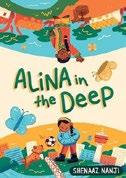
Alina navigates an initially rocky relationship with her cousin. When Alina, who’s Indian Canadian, finds out that cousin Safi is visiting from Kenya, she couldn’t be happier. An only child who’s always longed for a sibling, Alina can’t wait for the two of them to dress alike (“like twinsies”), binge-watch TV, attend soccer camp, and have water balloon fights. But when Safi lands at the Calgary airport, she’s not at all who Alina was expecting. Safi wears eye-catching traditional Indian outfits, talks loudly when the girls visit the library, and throws up after the two ride the merry-go-round. Alina’s always attempted to blend in, and Safi’s blaring difference makes her nervous. Plus, she’s disappointed at Safi’s disinterest in her proposed activities. It’s not until the two girls team up to find Alina’s missing dog, Lux, that she comes to believe a Swahili saying embroidered on one of the gifts Safi brought from Kenya: “When trouble comes, it’s your family that supports you.” Alina and Safi’s relationship rings true, while Alina’s fears of standing out and her efforts to balance her Indian and Canadian heritage feel relatable, given her past experiences with bullying. The incidents leading up to the final resolution are a bit unevenly paced, though the story’s beginning and resolution flow beautifully. Mistry’s simple black-and-white cartoon artwork breaks up the text. Expectations are upended and bonds are strengthened in this poignant family tale. (Fiction. 6-9)
Ortega, Claribel A. | Scholastic (384 pp.)
$17.99 | Oct. 1, 2024 | 9781338853841
Series: Witchlings, 3
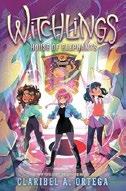
In her efforts to cure her hexed friend, Valley Pepperhorn, who has been turned to stone, witchling Seven Salazar uncovers both a frightening conspiracy and a despicable secret.
Seven may still be struggling with miscast spells, but her illicit abilities to conjure and to talk with raccoons and other beastly monstruos come in handy not only in rescuing Valley and others who were stonified, but also in fending off the savage attacks of the full-fledged witches who have long forced her and her fellow Spares into the most menial and laborious jobs. Even as conflicts mount, Spares begin disappearing amid ominous, coded talk of maintaining a mysterious “order and balance.” But the true iniquity of what’s going on becomes clear only when Seven finds clues pointing to a terrible secret that affects all levels of society. She also finds out (the hard way) that some supposed allies are actually terrifying foes who must be stopped (Ortega leaves this last storyline unresolved, ready to seed future crises). Seven’s journey includes plenty of magical and personal challenges, from attempting to master the art of making pink-frosted bizcochos to hunting for the forbidden cuentista spell. This third series entry leaves her marked by deep swells of joy, grief, anxiety, and, at last, a sense of belonging. A new set of witchy exploits, replete with magic, game-changing revelations, and monstruos both cute and scary. (Fantasy. 8-12)
Patton, Jay, Jay & Antoine Patton with Kiara Valdez | Illus. by Markia Jenai Graphix/Scholastic (128 pp.) | $14.99 paper Sept. 17, 2024 | 9781338893205

Father-daughter pair Jay Jay and Antoine Patton draw from real life for this work of graphic nonfiction that grapples with the toll incarceration takes on families.
Jay Jay, who presents Black, is 5 years old when she learns that her father’s been incarcerated for the past two years. Writing letters and making phone calls aren’t enough to maintain the sort of connection Jay Jay needs (the art obscures her father’s face in many of her memories). While in prison, her father develops his skills as a computer programmer, ultimately earning his degree. He’s released when Jay Jay is 10, and he sets out to pursue a career in tech, but it comes at a cost; the whole family—Jay Jay, her parents, and her younger brother—must relocate from Buffalo to Florida. After they adjust to their new life, Jay Jay’s dad, inspired by his own experiences, starts developing Photo Patch, an app that helps children share photos and letters with incarcerated parents. It isn’t easy, but with help from Jay Jay, a budding programmer herself, the two are ultimately successful. Some of the dialogue feels forced, and the cartoon art is a bit static. Still, the journey is a satisfying one that exudes feelings of love and empathy, and it illuminates a challenge that affects many families but isn’t often addressed in literature.
Offers many young people muchneeded inspiration and solace. (author’s note) (Graphic nonfiction. 8-12)
Phelan, Matt | Greenwillow Books (128 pp.) $18.99 | Jan. 28, 2025 | 9780063296343
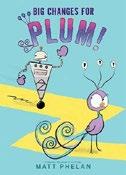
Plum returns for another adventure at the Athensville Zoo, along with some craftily conveyed life lessons.
The fifth and final title in this series finds the perennially peppy peacock facing his biggest challenge yet: He’s been nominated to lead the peafowl flock, because of his “courage, wisdom, responsibility, loyalty…and above all else, a true and caring heart.” Plum’s one condition for accepting is that he have a co-leader (his best friend, Meg, of course), which introduces a key theme: Some traditions should change. Complications develop: first, demolition of the dangerously decrepit old zoo monorail. More perturbing still, the zoo is closing for renovations. Plum frets through the night, and he isn’t reassured by vague warnings from zookeeper Lizzie (cued Latine in previous titles) that more big changes are in store. Plum and Meg believe that the reconstruction will include the removal of their home, the Great Tree, and the relocation of the flock. Scary! Soon, many animals are in temporary quarters, and others have just disappeared. The arrival of—gasp!—a petting zoo and a robot who will usurp Plum’s guide job ramps up the threat. Subtle humor and snappy repartee distinguish this book. Short chapters speed by as the tension builds. Will Plum save the zoo? Should Plum save the zoo? And could it be that sometimes it’s
Offers many young people much-needed inspiration and solace.
DEAR DAD
better to embrace change than to angst over it? Pen-and-wash images add zest. A lively tale with an important warning: Worrying is often wasted on things that won’t happen. (Chapter book. 7-10)
Pincus, Meeg | Illus. by Gillian Eilidh O’Mara Candlewick Entertainment (40 pp.)
$18.99 | Jan. 28, 2025 | 9781536232363

Walnut, the white-naped crane, has a long and fulfilling life thanks to help and patience from wildlife keeper Chris Crowe. Born in 1981, Walnut is an unusual crane who imprinted on a human as a chick. This upbringing meant that she rebuffed potential mates, which concerned conservationists, since her genes were crucial to the survival of her species. Walnut was sent to the Smithsonian’s National Zoo and Conservation Biology Institute, where she met Chris Crowe, a wildlife keeper with a special devotion to animals. His unusual methods and complete dedication to Walnut enabled her to give birth to seven chicks over 11 years, an important contribution to the crane population. This compelling tale about the unique connection between bird and humanity will help young readers understand the harm humans have done to the world’s wildlife and the ensuing responsibility they have to make things better for creatures. The illustrations enrich the narrative with stunning close-ups of Walnut and other birds taking flight against a warm, sunset sky. Backmatter includes information about Walnut, other white-naped cranes, and animal imprinting, along with a Q&A with Chris Crowe. Readers will finish the book with empathy for Walnut and appreciation for the work conservationists do. The story successfully demonstrates Crow’s long-held mantra: “If humans harm wildlife species, then humans must
save them.” Crowe and other humans have tan skin. An informative, richly illustrated call to action. (websites and further reading, bibliography, glossary) (Picture book. 6-9)
Pung, Alice | Illus. by Sher Rill Ng Crown (48 pp.) | $19.99 Nov. 12, 2024 | 9780593812907

A boy chafes against his protective family in this bilingual tale, presented in both English and traditional Chinese.
Fang Xin’s worried parents and grandparents constantly call out “Xiao Xin!”—a phrase that translates both to “Be careful” and the nickname “Little Heart.” Fang Xin finds himself surrounded by a group of morose, amorphous creatures with glowing eyes—a strong visual metaphor for his frustrations. He notices his elders hovering over his baby sister as she attempts to take her first steps. Feeling a burst of independence, he sneaks out of the house. As his terrified caregivers search for him, flashbacks make it clear that their overprotectiveness is rooted in their own trauma. When they finally find Fang Xin, his little sister toddles toward him. His fearful caregivers hold themselves back; taking his sister’s hand, Fang Xin returns to his family, bolstered by a new inner strength. Pung’s terse prose pairs well with Ng’s detailed art, which makes dramatic use of color and perspective to convey heightened emotions. On one spread, Xin Fang looks on enviously as a white-presenting family embrace their child—a moment that might inadvertently give youngsters the impression that white families are more loving. Overall, though, many readers—especially children of immigrants—will see themselves in this empathetic story of caregivers struggling to give their little ones the freedom to make forays into independence. A visually striking, sensitive look at a family affected by generational trauma
but whose love for one another endures. (Picture book. 6-8)
Qayumi, Shahnaz | Illus. by Nahid Kazami | Tradewind Books (96 pp.) $15.95 | June 15, 2024 | 9781990598128
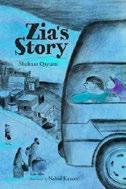
Set in early-1990s Afghanistan, this tale sees young Zia’s life change drastically after his father is taken away by soldiers one night. With the Taliban in power and women’s rights severely curtailed, Zia’s mother, Aisha, must give up her job teaching at the university. Now the sole provider for his household, Zia sells the food Aisha makes at the market. Amid escalating violence, including an explosion in their neighborhood, the two of them flee Kabul for Pakistan. They face numerous dangers as vulnerable refugees, including being stopped by members of the Taliban and later encountering potential human traffickers in Pakistan. Theft of their savings shatters Aisha’s hopes, plunging her into a deep depression. Zia finds work at a kebab restaurant, where he befriends a fellow worker named Najib, an Afghan boy who’s quitting his job to enroll in a school that will support his family—and who encourages Zia to join him. But Zia soon learns dark truths about the school, a Taliban-run madrassa. Qayumi walks a fine line, offering an honest depiction of the trauma Zia endures while keeping the narrative palatable to a young audience. An author’s note provides a brief historical overview of Afghanistan’s tumultuous past and observes that in the wake of the U.S.’s withdrawal of troops, the country still confronts similar issues today. Kazemi’s illustrations, stark in grayscale pencil and pastel, compound the narrative’s somber atmosphere. A sobering tale that shines a light on recent history—and an all-too-real mirror for many young refugees. (Historical fiction. 8-11)
Ragsdale, Linda | Illus. by Lindsay Cook | Flowerpot Press (32 pp.)
$16.99 | Nov. 12, 2024 | 9781486730315
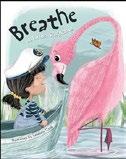
How can you cope with strong emotions?
A variety of diverse youngsters, paired with an assorted mix of animals, model mindfulness. A brown-skinned tot comforts a gloomy elephant (“Send out kind vibes. / Take in good news. / Toss the bad. / And breathe”). A pale-skinned, curly-haired youngster snuggles a cat while reminding readers to “stretch your smile. Expand your thoughts. / Hold nice ones near. And breathe.” Though many of these suggestions feel like generic platitudes, Ragsdale also gets more specific on some spreads, instructing readers on breathing techniques. A lion with wide, toothy jaws helps to demonstrate: “Breathe soft. / Breathe LOUD.” A polar bear shows readers how to “breathe in cool. / Whisper out warmth.” White whooshes of air are visible in the art, reinforcing these directives. Lightly washed illustrations portray playful penguins, a big-eyed flamingo, a tiara-clad capybara, and more, along with their chummy human companions. The smiling, softly rounded animals are all utterly sweet; even the fiercely snorting bull looks far too cute to be frightening. The feel-good phrases float by gently while being read aloud but always land on the most important part: “Breathe.”
A simple yet effective tool for emotional regulation. (Picture book. 3-6)
Ralphs, Matt | Illus. by Veronika Kotyk
Phaidon (48 pp.) | $19.95 Sept. 10, 2024 | 9781838667719
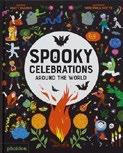
Ghosts, witches, and demons! Festivals that incorporate supernatural figures have been celebrated for centuries.
Many honor ancestors or are celebrated to keep the dead from haunting the living. Others commemorate battles between good and evil. Ralphs and Kotyk describe 21 celebrations in double-page spreads filled with intensely colored, at times overly busy, detailed digital illustrations. Compared with similar titles, this one highlights festivals from a variety of regions, among them Africa, Asia, the Pacific, and the Levant. Starting with Halloween, the holidays include the Ouidah Vodun Festival in Benin, observed in West Africa as well as in the Caribbean and North America; Khamis Al-Amwat, celebrated by Arab Christians and Muslims to honor their dead; and Pchum Ben, a Cambodian Buddhist festival where families pay tribute to the past seven generations of ancestors by preparing food offerings. Unfortunately, the first spread states that Halloween “gets its name from the pagan festival All Hallows’ Eve,” while the section on Samhain refers to All Hallows’ Eve as a Christian celebration. It’s difficult to figure out the order in which to read the text blocks, because the reader’s eyes are constantly being pulled in different directions. There’s no chronological, geographic, or thematic order, and the book lacks a table of contents, index, or map, but despite these flaws, it explores a fair number of holidays that aren’t always spotlighted in children’s literature.
A high-interest title, with some organizational weaknesses. (Informational picture book. 7-11)
Raschka, Chris | Michael di Capua/ HarperCollins (312 pp.) | $24.99 Sept. 17, 2024 | 9780062858276

A 12-year-old New Yorker joins a secret society of intelligent, peace-loving cats working to save the world from felines with evil intentions. When Cleopatra Stein and her cat, Muffin, discover that
Jane Oakhurst, an old lady in their apartment building, has five talking cats, Jane explains that they’re part of the organization PURR: Peace Urgently Requires Reasonableness. Cats are responsible for most of the world’s technological advancements, but while PURR members are dedicated to stability, there’s another cat society with opposite goals: KLAW, or Cats Loving Awful Warfare (“They put the ‘K’ in just to be annoying”). When KLAW members get their paws on the plans for the aether beam, PURR’s new invention that’s intended to be a source of “pure energy,” they decide to twist its purpose for their own gain. Their goal: to blast all the dogs on Earth into outer space. It’s up to Cleo to go undercover and stop them in their tracks. In this entertaining although overstuffed tale featuring frequent, appealing black-and-white watercolor-style spot illustrations, Cleo, Jane, and their band of lovable, amusing cats are easy to root for as they go up against nasty baddies of both the human and feline varieties. The story is most fun when it leans into the cats’ zany antics, but it stumbles when it comes to the extraneous side plots. The main humans are cued white.
A somewhat bloated yet endearing and diverting story for cat lovers. (character portraits) (Fiction. 8-12)
Ray, Mary Lyn | Illus. by Felicita Sala Chronicle Books (44 pp.) | $18.99 Sept. 17, 2024 | 9781797214580
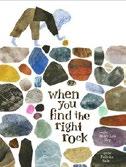
Stones and pebbles have plenty to teach us. Ray hands out life advice using the framework of observing and caring for rocks. After all, “it’s hard to ignore a rock.” This observation is true whether they’re the big ones that invite you to climb upon them or the small ones you stuff in your pockets. You can do lots of things with rocks, from stacking them to lining them up. Above
all, readers should remember that they share similarities with rocks. People may not realize how deep the rocks that make up mountains are. “Some of their big goes unseen,” Ray notes. “But it’s still there. Like yours.” Sometimes you might see something interesting in the midst of a pile of rocks, just as you might notice something intriguing about yourself. “Any rock can be important, even if only you know the reasons.” This deft and simple text has a refreshingly original premise, exploring not the scientific aspects of rocks but rather the emotional support they can offer. Meanwhile, marvelous, watercolorlike mixed-media art draws effective comparisons between the people and the rocks they both ignore and adore. The large cast of children is racially diverse. Rock appreciation is bound to start early thanks to this surprisingly emotional guide. (Picture book. 3-6)
Renwick, Jessica | Yellow Dog (240 pp.) $16.95 paper | Dec. 3, 2024 | 9781773371269
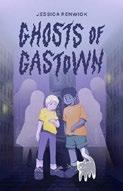
A child grieving the loss of her dad suddenly finds herself accosted by ghosts who are demanding rescue from a mysterious threat. Hardly has 12-year-old Hope arrived with her widowed mom—a popular horror novelist, appropriately enough—in their new apartment in Vancouver, British Columbia, than a ghost she comes to dub Victorian Dead Girl, or VDG for short, steps out of the closet in a flood of spectral water to make cryptic demands. Ever since the accident that claimed her father’s life, Hope has become used to seeing ghosts, but in their historic Gastown neighborhood, she finds herself not only encountering scarily urgent spirits but also up against a supernatural devorator, who’s eating ghosts before moving on to the living. Worse yet, the devorator turns out to be the pet of an even more terrifying, scythe-wielding reaper who’s
actually after Hope. This piling on of villains and threats may add additional drama to the climactic face-off but at times feels overdone. Hope, who’s cued white, befriends her new neighbor Oliver, a French Canadian boy with two moms who presents Black and who also has second sight. A whiplash-inducing reveal involves Hope’s mother, who previously sent her to a therapist for her supposed visions and reacts with hostility to any talk of ghosts from Oliver or his Maman, who’s a medium. Short on logic but long on spooky spectral encounters. (Supernatural. 9-13)
Saigal, Monica | Illus. by Abeeha Tariq | Tiger Tales (36 pp.) | $18.99 Oct. 1, 2024 | 9781664300446
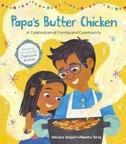
A young South Asian girl helps her father whip up his famous butter chicken.
Monica and her cousin Anya are about to go to the park when Monica realizes that Papa’s getting ready to cook. She joins him in the kitchen, where he regales her with his first memory of eating the dish; he, his brother, and his father ate it at a restaurant under twinkling lights as musicians played. It quickly became a family favorite. While the pair stir the sauce and add the spices, Papa gives Monica some words of wisdom. “Ingredients are just like people,” he says. “Wonderful on their own, but even better together.” Meanwhile, Anya is spreading the word to family, neighbors, and friends that Papa’s cooking butter chicken. Just as Monica and her father are ready to eat, the doorbell rings, and their family and friends stop by with dishes of their own. Monica is upset at the interruption, but Papa reminds her that “beautiful things happen when we share food like this.” As they join the guests for a feast, Monica revels in the
A tasty tale of delighting in the magic of both cooking and memories.
PAPA’S BUTTER CHICKEN
twinkling lights and a special memory of her own. Though the conflict feels a bit forced, Saigal and Tariq capture the immersive feelings of cooking. Bright and cheery illustrations in fiery reds and oranges and complementary blues create a celebratory mood, while spot-art frames feature arches and arabesque designs. A tasty tale of delighting in the magic of both cooking and memories. (foreword from Chef José Andrés, recipe for butter chicken) (Picture book. 4-7)
Sanders, Rob | Illus. by Raissa Figueroa | HarperCollins (32 pp.)
$19.99 | Dec. 31, 2024 | 9780063239593

Two children meet and become friends. A young Black child watches new neighbors move into the house across the street. Along with all the moving boxes, the youngster spots a light-skinned, red-headed child wearing a bright green froggy hat. As the vivid illustrations clearly chart the budding bond between these two, the words illuminate the ups and downs of forging friendship. The text consists of phrases beginning with the word between : “Between yesterday and tomorrow…Today.” “Between strangers and friends…‘Hello.’” Sanders and Figueroa provide glimpses into the intricate dance that is making friends. Waiting and listening, for instance, are crucial to building the trust that friendship requires. The illustrations help readers see that those in-between moments are made up of seemingly small but
important decisions—early examples of developing emotional intelligence. As the narrative progresses, the friendship blossoms, and the two children embark on heartwarming, imaginative adventures. Scenes depicting the kids’ wild flights of fancy incorporate objects from the real world: Cute plushies become adorable creatures that chase the friends; cardboard boxes turn into flying contraptions. The visuals feature deeply saturated blues, purples, and pinks as the pair romp through trees, ride a flying bed over a waterfall, and more. This successful marriage of word and image respects the internal feelings of the very young.
The beginning of a beautiful friendship, lovingly depicted. (Picture book. 3-8)
$18.99 | Aug. 15, 2024 | 9781534113152
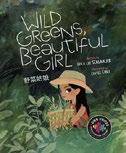
A young girl learns about her people’s history and culture. A beautiful landscape stretches out behind the child, who narrates: “Today, I am helping my ina , my mother, gather greens from our garden.” She’s finally old enough to forage with her mother on their wild lands. Mother and daughter are part of the Indigenous Amis people of Taiwan. Though the young narrator attempts to remove weeds, her mother explains, “We want those plants to grow—we can eat them!” Like the Amis, “wild vegetables…have their own kawas, their own spirit.”
Schlaikjer draws a contrast between the protagonists, who are deeply connected to the food they eat, and most Taiwanese people, who purchase frozen dumplings or instant noodles at the grocery store. The child also learns the Amis language from her ina (only Mandarin and English are taught in school) as the two count to 10 together; the narrator shares other words with readers. Though rooted in concrete details, the prose has a lilting quality, brimming with pride for the Amis and their way of life, while the stunning double-spread watercolors capture the lushness of the land. Chinese and Pinyin translations accompany the text. Backmatter offers further information on the Amis, their native home, and their endangered language. A simple, verdant celebration of heritage, identity, and food. (Picture book. 4-8)
Sheth, Sheetal | Illus. by Lucia Soto
Random House (40 pp.) | $18.99
Jan. 14, 2025 | 9780593651223
Series: Always Anjali, 3

In her latest series outing, young Anjali fights to save her beloved local community center.
Anjali’s distressed to see the sign announcing that the center will be closing. It means so much to her: It’s where she takes tabla lessons and where the family enjoys movie nights. It’s also where her brother, Milan, took his first steps and where her parents play cards. Anjali isn’t sure what to do until she sees Milan vehemently refuse to eat his vegetables: It’s time to protest! Anjali’s family organizes a rally, but only a few people show up. Anjali and her friends then gather signatures for a petition to keep the community center open, only to find that they’re too late, since the center’s fate was decided at a hearing they didn’t attend. Were all Anjali’s efforts in vain? Reminiscent of Nandini Ahuja’s Rise Up and Write It (2021), illustrated by
Anoosha Syed, this book balances Anjali’s ebullient hopefulness with the practical realities of organizing. Soto’s digital illustrations feature big-eyed, big-headed characters set against mostly white backdrops; whether striking determined poses or drooping in discouragement, Anjali cuts an endearing figure. Overall, it’s a spunky, inspiring story of children’s political power. Anjali and her family are of South Asian descent; their neighborhood is diverse.
A fun, feisty tale about community organizing. (Picture book. 4-8)
$18.99 | Sept. 1, 2024 | 9781534112797

A dreamy journey through six oceanic habitats. “Ocean waves gently roll in— / swish / swoosh— / lulling you to sleep.” Modeled on the creators’ The Universe and You (2021), this soothingly cadenced outing leaves “you”—depicted as a brown-skinned child in Coleman’s cozy illustrations—snoozing on a maternal lap beneath a beach umbrella. Meanwhile, beneath the waves, “billions of busy sea creatures” glide through sea grasses and kelp forests, migrate in open waters, lurk in lightless depths, dart over a coral reef, and cling to mossy rocks in a tide pool. Though not in the “billions,” the characteristic sea life in each blue- and turquoise-painted scene is as abundant as it is varied and colorful, ranging from tropical fish and sea turtles to sea stars and strange-looking deep-water denizens. The dream voyage ends back on the beach as the child wakes up and rushes off to discover what has washed up on the sands (“And you’re ready for fun / in the sparkling sun!”). In a short afterword, which includes a sampling of photos, the author offers a broader perspective on our oceans and what we can do to protect them. Calming and informative.
(Informational picture book. 5-7)
Slonim, David | Chronicle Books (32 pp.) $17.99 | Aug. 13, 2024 | 9781797216652
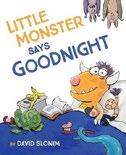
A very unusual sleepy-time sendoff.
“Momster” is preparing Little Monster for bed. First, she serves a yummy treat: sour milk and burnt cookies. Before hitting the hay, Little Monster lets out the family’s pet giant tarantula. Then comes a warm mud bath, though Little Monster forgets to crumple up the “filthy towel” so it can fester on the floor and must be reminded to “leave disgusting glops of fangpaste all over the place.” Kids will relate to the other familiar nighttime rituals that follow, all with hilarious tweaks. Little Monster and Momster literally devour their favorite storybooks, and a thirsty Little Monster sips water from a fishbowl. Asked to check for monsters under the bed, Little Monster’s other parent happily responds, “Found one!” and tells the little one to think of “something scary” to guarantee a bad dream. This may not be the best book to read aloud right before bedtime, because children will be chuckling too heartily to fall asleep while delightedly comparing their bedtime routines to Little Monster’s. Kids will also enjoy seeing the warm relationship between Little Monster and the parents, who make bedtime pleasant and comforting. The goofy, thick-lined illustrations feature an endearing Little Monster and a winsome, decidedly unscary pair of monster parents, all of whom are reminiscent of Maurice Sendak’s Wild Things, with the cuteness of Sesame Street characters. Monstrously appealing storytime fun. (Picture book. 3-6)


for being a Kirkus Prize Finalist for Young Readers’ Literature!

“This middle-grade novel based on a li le-known episode in which hundreds of Jews were saved by the people of the Grand Mosque seamlessly weaves historical context into a thrilling, triumphant adventure that celebrates courage, compassion, and solidarity in the face of hatred.”
—Kirkus Prize Jurors




The husband of Pete Buttigieg was inspired by his own family for Papa’s Coming Home.
Chasten Buttigieg, the husband of U.S. Secretary of Transportation Pete Buttigieg, has a children’s picture book coming next year, People magazine reports.
Philomel will publish Buttigieg’s Papa’s Coming Home, illustrated by Dan Taylor, in the spring of 2025. The press describes it as “a charming picture book about unconditional love…perfect for families who love each other the whole year through.”

SPONSORED CONTENT
This review originally ran in the October 1, 2024, issue.
A timid boy learns to summon his own internal strength. School is filled with the raucous sounds of kids laughing, shouting, and playing. Quiet, bespectacled Xavier is swallowed up by all that noise. Whenever he tries to speak, his voice gets stuck in his throat. Even when other children make a friendly effort, “his small voice [can’t] find its way out.” Inspired by a new comic hero named Super Saleem, Xavier starts
drawing his own superhero world. He fills a sketchbook with characters who have the qualities he wishes he could possess. When a sudden rainstorm drenches his drawings, another student helps Xavier dry them off. Could this be the beginning of a beautiful friendship? Afterward, overwhelmed with anxiety and what ifs, Xavier starts to worry. But he feels bolstered by a superhero strength deep inside. Though Xavier’s outward attempts at trying
Chasten Buttigieg worked as a teacher before coming into the national spotlight in 2018 when he married Pete Buttigieg, then mayor of South Bend, Indiana, and a rising star in Democratic politics. Chasten Buttigieg served as a spokesman and adviser on his husband’s 2020 presidential campaign.
He published his first book, the memoir I Have Something To Tell You, in 2020; last year, he released a young adult version of the book.
Papa’s Coming Home follows Jojo and Rosie, two children eagerly awaiting the return of one of their fathers from a trip. Chasten Buttigieg said he was inspired to write it after being unable to find kids’
books that reflected families that looked like his own.
“I just wanted a story, a day in the life of a family like ours, and I wanted my kids to see themselves in one of these stories,” he said.
Papa’s Coming Home is scheduled for publication on May 13, 2025.—M.S.

For more LGBTQ+ books for young readers, visit Kirkus online.
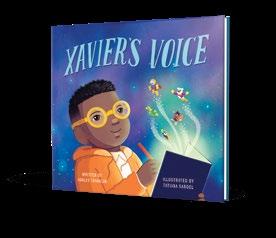
to be loud fail miserably, he eventually finds a way to shine—by relying on his huge imagination. Peppered with calming techniques, this narrative will speak to many young people grappling with anxiety as Franklin creates a safe environment for introspection and growth.
Xavier’s Voice
Franklin, Ashley; illus. by Tatiana Gardel
The Innovation Press
48 pp. | $18.99 | Oct. 8, 2024 9781959244035
Gentle cartoon art brings the action to life; Xavier’s fantasies of flying alongside superhero characters add child appeal. Xavier and his family present Black and are cued Muslim; his school is diverse. An encouraging story for those who struggle to be heard. (Picture book. 4-7)
Littlest Grito
Solis, Nicholas | Illus. by Teresa Martínez | Sleeping Bear Press (32 pp.) $18.99 | Aug. 1, 2024 | 9781534112889
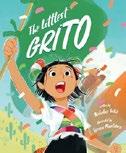
A young girl makes herself heard on Mexican Independence Day. Gloria awakens, excited about the celebrations ahead. On September 16, 1810, Father Miguel Hidalgo y Costilla shouted a grito (a combination of a laugh and a yell), spurring the Mexican War for Independence against Spain. Every year since, members of her family have shouted a grito to mark Mexican Independence Day. But this year, Gloria’s father is sick; he’s lost his voice and can’t shout the grito. Gloria makes Papa some tea, but the village doesn’t have time to wait for him to get better. Gloria has another idea: She’ll do it herself. Despite the mayor’s reservations (“You are a child!” “But she’s a girl!”), Papa supports Gloria, and that’s all that matters. Gloria decides to practice. It isn’t easy, and her first attempts attract strange looks from the villagers. The baker offers her a tortilla with honey and some affirming words, but it isn’t until Gloria has a heart-toheart with Papa that she learns the true meaning of the grito—and summons the strength to let loose “the loudest, most joyful grito she could.” Relying on pastel colors and dramatic use of perspective, Martínez’s illustrations adeptly chronicle Gloria’s trajectory from uncertainty to satisfying triumph. The youngster exudes moxie at each step of the way; this is a joyful celebration of Mexican culture and independence and of family, community, and self.
A heartening tale of finding one’s voice—and summoning the courage to raise it. (Picture book. 4-8)
Soontornvat, Christina | Illus. by Joanna Cacao Graphix/Scholastic (288 pp.) | $24.99 $12.99 paper | Nov. 12, 2024 | 9781338741322 9781338741315 paper | Series: The Tryout, 2
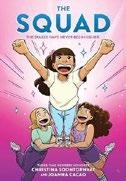
Christina and her friends are back, this time trying out for the ninth grade cheerleading squad. It’s 1994 in small-town Texas, and Christina’s second semester of eighth grade is almost perfect. Her classes are interesting, her friends are great, and she’s looking forward to a fun art project, but she still longs to be a cheerleader. Christina and her two best friends, Megan and Leanne, learn all the routines and dream of what being cheerleaders would mean. When three spots for the ninth grade squad open up, a more confident Christina and her friends go through the intense tryouts again. But Christina’s life falls apart when she overhears her parents talking about divorce. Even though she’s going through a taxing time, she puts on a smile and pushes on with cheer, hoping to make her life movie-perfect. While cheerleading is a major component of Soontornvat’s funny, relatable, stand-alone graphic memoir companion to The Tryout (2022), the story also explores divorce, friend drama, a first crush, racism, and microaggressions. As someone who’s Thai and white and feels like she doesn’t fully belong to any one community, Christina continues to struggle with identity, especially after her parents’ split. Pranks and jokes add levity to this emotional story. Cacao’s bright, sharply rendered illustrations highlight the characters’ expressions and add context about the ’90s and the various cultural elements. Another hilarious and sincere look at a middle schooler’s search for her squad. (author’s note, photos) (Graphic memoir. 8-12)
Soundar, Chitra | Illus. by Sandhya Prabhat | Candlewick (32 pp.) | $17.99 Oct. 1, 2024 | 9781536235531

A parent comforts a child with a lullaby. Tucking the little one in, the parent reads a book that leads the child on a magical journey. As the two wander through deep jungles and “merry streams,” they gaze at all the sleeping creatures. Peacocks, owls, fish, bears, and other animals drift, swirl, and whirl around them. Though the youngster is reluctant to give in to sleep, the parent says to “hand your sobs / to roaring seas. / Gift your rage to / the swarming bees.” Slowly and gently, as the child falls asleep, the parent keeps up the refrain: “Count the stars that twinkle bright. / It’s time to hush and say good night.” It all ends with a good-night kiss and the parent’s promise to welcome the little one at sunrise. This is a soothing look at a shared nighttime ritual between a parent and child. Despite some abrupt transitions, the gentle rhyme is quietly comforting. The colorful and bold illustrations in deep reds and indigo blues merge into an inky black night and add a sense of wonder and whimsy. The characters are brown-skinned; their attire hints at South Asian heritage, and in a note, Soundar mentions that she was inspired by traditional Indian lullabies. Sure to calm children at bedtime—and then to enliven their dreams. (Picture book. 3-7)
Sowder, Nicolette | Illus. by Myo Yim Random House Studio (40 pp.) | $18.99 Dec. 31, 2024 | 9780593652367
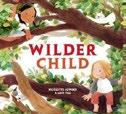
Jump, climb trees, and run through a field of stars with the wild children. No shoes? No umbrella? No map? No problem. Based on a poem by Sowder (founder of
Wild Child and Wildschooling, organizations dedicated to nature-based learning), this lyrical picture book celebrates the “wild children”: those who aren’t afraid to get mud under their fingernails, scramble up the rocky coastal shoreline, or get up close and personal with a nest of newly hatched spiderlings. After the author lists the many ways these adventurous children immerse themselves in nature, her lofty final stanzas suggest that their deep connection to the natural world will inspire them to speak up for those who have no voice. Softly textured, mellow pastel and pencil illustrations feature children with varying skin tones and hair colors as they connect with their vibrant outdoor environment. While the children’s cartoon faces are sweet, simply rendered, and serene, the outdoor scenes are the true stars of the show. The visuals are dazzlingly detailed, down to a moth’s fragile antennae; the forests and streams command attention as the wild children merely pass through. Roll up your sleeves and read this book with your toes in the grass. (Picture book. 3-6)
Standish, Ali | Harper/HarperCollins (320 pp.) $18.99 | Oct. 22, 2024 9780063275621 | Series: The Improbable Tales of Baskerville Hall, 2
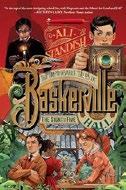
A return to Baskerville Hall offers more opportunities for sleuthing and self-discovery. When readers last left the students of Baskerville Hall, they had rescued a mysterious pterodactyl and destroyed an immortality machine and exposed its villainous creator. This volume finds the crew eagerly returning for their second term. Various scholastic and social challenges quickly arise: There’s the annual Invention Convention to prepare for, questions about the Clover
(the school’s secret society), and the sorting of students into Circles by area of study (Iron, Dawn, Lightning, Spirit, and the Citadel). Heightening tensions, Arthur’s roommate and good friend Jimmie Moriarty is acting strange and standoffish. When Professor Sherlock Holmes and later two others are found comatose from a mysterious poison, Arthur must crack the case. Trips to the library’s dustiest shelves and some communication with spirits via classmate Grover’s Ghost Board provide a portal into the shadowy past of their strange school. A cinematically grand denouement makes for a delightfully dramatic read, but the substantial focus on sundry elements of scholastic life often feels only loosely tied to the compelling central plot. Gender parity and a socially diverse atmosphere remain an essential element of Baskerville Hall, with Scottish Arthur and South Asian British Grover (and his Ghost Board) leading the charge in this volume. A satisfying return to a well- developed setting, rich with secrets and schemes. (historical photos and drawings, all about Arthur Conan Doyle) (Mystery. 9-14)
Sumovich, Michelle | Illus. by Sarah Jacoby | Harper/HarperCollins (48 pp.) $19.99 | Oct. 15, 2024 | 9780063295827
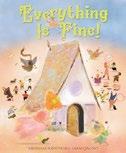
Paulette is a “precious tornado” whose mother loves her—even when she makes a mess at the market.
Paulette’s mother’s mantra? “Everything is fine!” She mitigates every disaster by paying for items that Paulette’s damaged and doling out excuses. When Paulette gets too
close to an herbalist’s magic potion— ignoring the “No Touching” sign—nothing seems amiss at first, but the next morning Paulette is missing. Apparently, Paulette’s mother was so exhausted the night before that she slurped Paulette into her belly along with her spaghetti. As Paulette’s mother searches frantically for her daughter, she encounters many other naughty children, all deemed “perfect” by their loving parents. Suddenly ravenous, she devours a long twirling rope of spaghetti given to her by the herbalist; Paulette uses the strand of spaghetti to climb up and out. The setup may lead some to expect a cautionary tale with a clear takeaway; such readers will be disappointed by the meandering narrative. Reunited, the pair breeze into town, “a whirlwind of noodles and mayhem,” evidently having learned no lessons from their ordeal (though they warn a curious tot to stay away from the herbalist’s wagon). Eye-catching, ethereal illustrations in pastel tones with saturated pops of neon are spattered with marbling ink, making for chaotic scenes that are hard to follow. Paulette and her mother present white with golden curls; other characters are diverse.
A quirky story of a plucky motherdaughter pair that reads like a fable missing its moral. (Picture book. 3-5)
Sutton, Jane | Illus. by Kate Chappell Kar-Ben (24 pp.) | $18.99 Jan. 7, 2025 | 9798765619889

It’s a wonderful day for Ruthie and Zayde. Mom and Dad are helping Bubbe prepare for the Passover seder, so Ruthie is
A satisfying return to a well-developed setting.
THE IMPROBABLE TALES
ready to help make Zayde’s first solo babysitting experience a success. Mom has provided an itemized list of activities for Zayde to keep Ruthie occupied, wear her out, and get her ready for the seder. The activities include preparing a Passover art project, shopping for the seder, having fun in the playground, searching for and discarding breadcrumbs, and more. Since Ruthie does need to be awake for the long night ahead, a nap is required. Each numbered item appears at the top of a page and is followed by colorful illustrations that joyfully enhance the text and demonstrate that while they complete every task on the list, it might not be the way Ruthie’s mother intended. Ruthie pushes Zayde in the shopping cart at the grocery store, Zayde does a handstand and whooshes down the slide at the playground, Zayde needs Ruthie to pull him out from under the sink while they’re cleaning, and Zayde is the one who has the nap while Ruthie is wide awake. At Bubbe’s house, the seder table is set, Zayde leads the seder, and diverse friends and family are on hand to make it a special night of good food, traditions, and songs. Readers will find themselves giggling with delight at the antics and wanting more of Ruthie and Zayde. The protagonists are light-skinned. Intergenerational love at its most tender and sweet. (about Passover) (Picture book. 3-9)

Sy, Stephanie Ellen | Illus. by Daniel Tingcungco | Kokila (40 pp.) | $18.99 Sept. 17, 2024 | 9780593697054
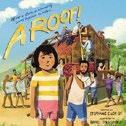
T he Filipino concept of bayanihan (“being in a community”) is beautifully embodied in this moving picture book.
In the wake of a terrible storm, young Maya and her father, Tatay, find a large piece of corrugated metal with the words “If found, please return to.” But who does it belong to? Maya and Tatay pick it up and go in search of its owner. A farmer, his cart pulled by a carabao, pipes up after they’re stopped by a blocked road: “We can help!” He and the animal give them a ride. As the narrative continues, so, too, does the pattern of bayanihan. At a raging river, several fishers let the group climb aboard their narrow boat (the carabao paddles alongside). And when at last they come across a pile of debris—a now-destroyed home— Maya realizes that the metal they found earlier is the family’s roof. Everyone pitches in to rebuild, “nail after nail, board after board, heart after heart.” Seamlessly incorporating Tagalog terms and Filipino traditions, Sy’s lyrical, methodically paced narrative pairs perfectly with Tingcungco’s lush, digitally rendered, collagelike artwork. The illustrator expertly blends textures and color to depict the rural setting, from a verdant forest to cascading waterfalls. Never verging on preachy, this tale will leave
young readers fiercely resolved to follow Maya’s worthy example. A bighearted tribute to a tradition rooted in love and community. (author’s note, glossary) (Picture book. 5-9)
Kirkus Star
First Big Book of How: How Do Polar Bears Keep Warm? How Do Keys Open Locks? How Do Spacesuits Work? The Ultimate Book of Answers for Kids Who Need To Know How!
Symes, Sally & Saranne Taylor | Illus. by Kate Slater | What on Earth Books (256 pp.)
$25.00 | Oct. 15, 2024 | 9781804661192
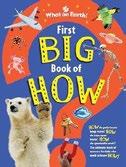
Fascinating photos and interesting illustrations take center stage in this fun, factfilled book. A colorful, appealingly organized, and straightforward table of contents describes the six highinterest subjects the book covers— the body, machines and buildings, wild animals, bugs, Earth, and space— immediately signaling to readers that they can enjoy the information within in myriad ways. Longer segments that answer questions like “How do touchscreens work?” and “How do we know what extinct creatures looked like?” allow learners to gain a more in-depth understanding of a range of subjects. Many pages include a text bubble that presents a “wacky fact,” a fascinating tidbit designed to engage and impress—for example, that scientists once found a suit of armor in a shark’s stomach—which is a clever way to help readers retain information. For those with shorter attention spans, “Tell me how…NOW!” spreads provide quick answers to burning questions, such as “How many times do people pass gas in a day?” The informal language and kid-friendly phrasing make the facts
feel like thrilling wisdom passed between friends on the playground, and the numerous references to poop will delight many readers. Stunning photographs interspersed among the charming illustrations and clear scientific diagrams add greatly to the overall appeal. The photos and artwork portray a racially diverse array of people. A well-researched, visually impressive informational treat. (glossary, index, source notes, picture credits) (Nonfiction. 5-10)
Tahmaseb, Ryan Bani | Illus. by Fateme Mokhles | Charlesbridge (32 pp.)
$17.99 | July 16, 2024 | 9781623543815
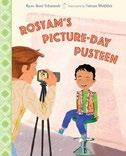
A first grader worries that his friends will make fun of his outfit. Rostam and his mother recently moved to the United States; his father (Baba) still lives in Iran. Though Rostam’s been in America only three months, he’s already made friends, and on a video call, Baba praises the boy for his bravery. But Rostam is nervous about his picture-day outfit: Baba’s pusteen, a traditional vest once worn by Iranian shepherds. At school, it seems as though Rostam’s fears are justified. His classmates pepper him with questions: “What’s that ?” “Why’s the inside so fluffy?” Rostam remembers to be brave and explains the garment’s significance; enthralled, his classmates beg to try it on. Their admiration banishes his worries, and in a text message to his father, he says, “I’m going to wear my pusteen forever.” Mokhles’ expressive cartoon illustrations capture Rostam’s emotional trajectory. Her depictions of his family’s bright, simple home exude a relatable warmth; their “yummy rice” dinner looks especially mouthwatering. Tahmaseb offers an encouraging— and refreshing—reversal of
expectations; here, the new kid isn’t bullied for his differences, but embraced for them. While many immigrant kids face discrimination, Tahmaseb mentions in an author’s note that in his own father’s case, “sharing a part of his Persian heritage ultimately led to self-acceptance and joy. It’s important to remember that stories like this exist, too.”
An affirming tale that will inspire many kids to open up about their own cultural identities. (glossary) (Picture book. 4-8)
Tolin, Rosanne | Illus. by Vali Mintzi Reycraft Books (248 pp.) | $17.95 Sept. 3, 2024 | 9781478876199

In 1942, two Jewish children in a French orphanage dream of escaping to safety across the border in Switzerland. Twelve-yearold German Jews Ziggy and Elka meet in Annemasse, France, near the Swiss border. Both have traumatic memories of seeing their families for the last time, but Elka, at least, is hopeful of being reunited with her parents and sister, Ruth. Georges Loinger—a real person whose story inspired this novel and who appears as a character in the book—accompanied Ziggy and other children on the train to Annemasse, and now he’ll be their new gym teacher. But Ziggy is unsure: Based on his close observations, he suspects that Georges is a spy. The question is, for whom? Elka, however, is sure that Georges is no Nazi collaborator and is
determined to prove it. The story alternates between Ziggy’s and Elka’s close third-person perspectives. The early chapters are somewhat bogged down by the backstory, but the pace picks up as the children discover more about Georges’ true identity. Ziggy has a limp due to a bout of polio; sporty Elka reflects on how he’s been “so selfless….Spooning extra oatmeal in her bowl, staying up late to keep watch while she ran” (in preparation for their sports festival). Although Ziggy’s faith in his own future wavers, at a crucial moment Elka has enough hope for both of them. The epilogue ends on an optimistic note. A solid World War II story that features quiet heroes. (map, author’s note) (Historical fiction. 9-12)
Varner, Kristin | First Second (304 pp.)
$22.99 | $14.99 paper | Oct. 29, 2024 9781250225900 | 9781250225917 paper
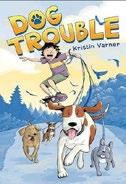
Thirteen-year-old Ash Tompkins likes skateboarding, BMX biking, his friends, and his cat, Suki, but despite all these good things, Ash has had a tough year. His mom is busy studying and working. Pop, his grandad with whom he had a close relationship, has died. And Ash recently got caught vandalizing an abandoned warehouse with friends. As a result, he’s sent on a ferry away from the city to spend the summer on nearby Ferncliff Island with his father and stepfamily, where he’ll do
Will inspire many kids to open up about their own cultural identities.
ROSTAM’S PICTURE-DAY
PUSTEEN
community service at the animal shelter. The plot focuses on Ash as he bonds with his younger stepsister, Parker, learns how to handle dogs, and deals with grief over the loss of his favorite shelter dog, Cooper. The story provides useful and interesting dog-related information that’s tinged with humor, such as a fecal scoring chart used to gather data on shelter dogs, but it doesn’t delve into the connection between the losses of Pop and Cooper, which are central to Ash’s growth. Varner uses an appealing, limited color palette of gray for flashbacks and blue for the present. Splashes of yellow signal strong emotions, highlight sound effect words, and spotlight the dogs Ash meets. Variations in the panel structure, including trapezoidshaped cells and ones without borders, add interest and meaning to the reading experience. Ash presents white, and his stepmother and Parker read Black.
Long on canine fun but short on the treatment of the serious (and central) topic of death. (author’s note, cover sketches) (Graphic fiction. 8-12)
Verdú, Irene | Illus. by Verònica Aranda
Trans. by Luisana Duarte Armendáriz
Charlesbridge (40 pp.) | $17.99
Sept. 3, 2024 | 9781623544812
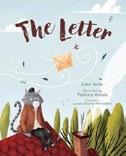
A windblown letter effects happy change. A lost letter falls into a puddle; the water washes off the writing on the envelope. Who sent it, and who is it intended for? The wind opens the letter, which simply reads, “I love you.” Deciding that this beautiful message should be delivered, the wind lets “the letter choose its own destiny.” It makes its way to curmudgeonly Mr. Cat, whose motto is “better a lonely cat than a disappointed one!” Reading the missive cheers him; he searches for the
A sweet, thoughtful story with a pointed message about expressing thankfulness.
THE LETTER
sender. He encounters Ms. Goose. Did she send it? Mr. Cat carries her heavy basket for her, but she hurries away, forgetting to thank him. Next, he spots Mrs. Hen. Perhaps she sent it! He rescues one of her chicks from a tree but receives no thanks. Later, he jump-starts Shepherd Dog’s motorcycle—again, no thanks. Back home, he discovers his grateful neighbors bearing delicious treats, apologetic they hadn’t acknowledged his kindness. Mr. Cat finally feels loved. And the letter? The wind blows it from Mr. Cat’s house—to where? This poignant, uplifting Spanish import offers a satisfying ending and delivers a meaningful message about the importance of gratitude. Children will welcome the opportunity to discuss the letter’s next destination. Clad in old-fashioned garments such as bowler hats and bonnets, the anthropomorphic animals cut whimsical figures in the expressive cartoon art, which incorporates onomatopoeic sound effects.
A sweet, thoughtful story with a pointed message about expressing thankfulness. (Picture book. 4-7)
Vitalis, Jessica | Greenwillow Books (256 pp.)
$18.99 | Oct. 29, 2024 | 9780063314450
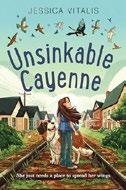
A seventh grader with free-spirited parents can’t wait to find a real home and friends of her own. It’s 1985, and Cayenne and her family have traded in their nomadic ways for a small Montana
rental and the hope of more income. But money continues to be tight, her parents are fighting, and Cayenne can’t seem to get the right kind of attention from the popular girls at school. When the discovery of the Titanic wreckage leads to a school assignment on the ship’s passengers, Cayenne finds parallels between her life and the social stratification aboard the doomed vessel, which prompts her to consider what she thought she wanted and what she actually needs. This story centers the valuable perspective of a child growing up in a loving family with alternative norms, and it demonstrates respect for young readers with a bittersweet ending that feels authentic to the characters. While Cayenne comes through as flawed but sympathetic, many of the other cast members feel underdeveloped, and the verse format doesn’t allow for sufficient exploration of and connection among the story’s many emotional turns and themes. Vitalis thoughtfully and age-appropriately incorporates Cayenne’s father’s marijuana use, and she discusses the drug in relation to his PTSD in her author’s note. Aside from the repetitive yet ambiguous racial marking of one of Cayenne’s classmates, most characters are white. An uneven presentation of a worthwhile story. (Verse historical fiction. 8-12)

For more by Jessica Vitalis, visit Kirkus online.
Walliams, David | Illus. by Adam Stower Harper360 (368 pp.) | $9.99 paper Nov. 12, 2024 | 9780008704001
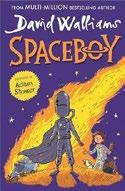
Dreaming of escape from cruel grown-ups, two orphaned children share an out-of-this-world adventure in the space race’s early days in this offering by British actor Walliams.
Gazing longingly at the sky one starry night, 12-year-old Ruth sees a flying saucer crash in a nearby field and excitedly races out with her three-legged rescue pooch, Yuri (named for the Soviet cosmonaut). She makes contact with a short, silent figure clad in shiny foil and a tall, oblong helmet. As it turns out, Spaceboy (or Kevin, as he’s really called) doesn’t come from all that far away, and, also being orphaned and mistreated, he shares her dream of getting away. Unfortunately, both dog and children are instead swept up by vigilant authorities and hustled off to Cape Canaveral (with stops at the Top-Secret Secret Base and the White House for savage digs at the military and political classes) in hopes of giving the country’s fledgling space program a boost over their Soviet rivals. Frequent changes of typeface size and weight in the narrative, matched with Stower’s abundant comical cartoons and caricatured portraits, lend this work the look of farce. But what with the satiric edge cutting deep enough to draw blood, even younger readers may find themselves wincing at times as they root for the underdogs, canine and otherwise. Spaceboy and a few others are rare
exceptions in an otherwise lightskinned cast.
A soaring escapade, heavy axe-grinding aside. (space race timeline) (Adventure. 8-11)
Watkins, Lala | Seuss Studios (48 pp.) $9.99 | Jan. 7, 2025 | 9780593646212

Fun with friends makes for a great day.
Norbit, a salmon-colored worm with a pink kerchief, joyfully greets the day and everyone he encounters. “Hello, friends! It’s time for fun with the sun! Let’s play!” He and his menagerie of forest pals— including the sun, who grows limbs and descends from the sky—exuberantly engage in various forms of physical activity such as jumping, going down a slide, spinning around, and watching the clouds go by. Young readers will readily relate, as these are games that most children are familiar with. As day turns to night, Norbit says farewell to Sun and welcomes Moon with an invitation to continue the fun. Watkins has created a vivid world of movement and merriment. Her illustrations feature bright bursts of color that match the energy of the text, with most sentences ending in an exclamation point. The author/ illustrator incorporates many elements that make for an ideal early-reading experience (despite the use of a contraction or two): art free from clutter, text consisting of words with only one or two syllables, and
A haunting testament to the strength of the human spirit.
WOLVES AT THE DOOR
repetition and recurring bits, such as a continued game of hide-and-seek with Sun. Inspired by never-beforeseen sketches from the Dr. Seuss Collection archives at the University of California San Diego, this is the first title for Seuss Studios, a new imprint for original stories from “emerging authors and illustrators” who “honor Seuss’s hallmark spirit of creativity and imagination.” Say hello to a relatable and rewarding early reader! (author’s note) (Early reader. 5-8)
Watkins, Steve | Scholastic (288 pp.) $18.99 | Dec. 3, 2024 | 9781546109983

In an effort to survive, two sisters in East Prussia navigate the war zone between Nazi Germany and the Soviet Union. Having fled the bombing in Königsberg, 11-year-old Asta and 9-year-old Pieta are living with their mother on their grandparents’ farm during the final months of World War II when the Red Army attacks. They’re forced to flee to the ships carrying refugees to safety in mainland Germany; the family hopes to reach a cousin in Hamburg. But after a Soviet submarine torpedoes their ship, the girls make it into a lifeboat, but they tragically lose Mama and are left to fend for themselves. Gathered in a gymnasium with other orphans, Asta and Pieta bond with 10-year-old Gerhard. The trio set off on a dangerous journey by foot through bitter winter weather, hoping to reach Königsberg and then go on to Gerhard’s aunt and uncle’s farm in the Memel Forest. The vivid descriptions of the hardships faced by the East Prussian refugees, especially the tragic plight of the
desperately scavenging Wolfskinder, or wolf children, shed light on this largely unknown chapter in World War II history. Watkins alternates between Asta’s and Pieta’s first-person viewpoints, offering glimpses into each sibling’s psyche during times of hardship. This work, full of heart-wrenching details of hunger, sickness, and wartime violence, doesn’t avoid the gruesome reality of the time.
A haunting testament to the strength of the human spirit. (map, historical note) (Historical fiction. 10-14)
Weinberger, Justin | Scholastic (240 pp.) $14.99 | Nov. 12, 2024 | 9781338881929
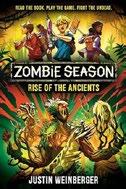
The zombie apocalypse overwhelms all human defenses… until suddenly, it doesn’t. Before pulling the rug out from under readers with a massive anticlimax, Weinberger does crank up the terror yet another notch as the one factory that manufactures the flash-freezing bombs that seem to be humanity’s only effective defense against zombies is destroyed. Not that it matters all that much: The ancient entity guiding the zombie invasions of both the Atlantic and Pacific coasts can also read and control the minds of many living grown-ups. All of this means that for surviving refugees, including Regina Herrera, Joule Artis, and other young zombie fighters, no “zomb shelter” is truly safe. The author does slip in zombie jokes (“It’s a lot to digest, I know”) as well as a few wrinkles— notably Regina’s ongoing efforts to fight, or at least conceal, her own increasing zombification as well as a revelation regarding the reason for the entire apocalypse. Still, no sooner does he paint Homo sapiens into a truly hopeless corner than the whole
zombie threat is abruptly dismissed with an airy hand wave…just in time for summer’s end and the first day of school. The chills, thrills, and gross bits recall those of previous episodes, but the trilogy couldn’t have had a tidier wrap-up. Regina is cued Latine, and Joule has brown skin. Shambles along well enough for a while, but ends with a disappointing faceplant. (Adventure. 9-12)
Westergaard, Azadeh | Viking (40 pp.)
$18.99 | Nov. 12, 2024 | 9780593114636
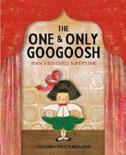
An adoring, wistful diaspora remembers the single-named Iranian singer Googoosh. Collages of painted cut paper create funky and nostalgic visions of pre-1979 Iran as Googoosh first takes the stage at age 2 with her acrobat father. The young performer appears surrounded by textured rose petals, resplendent in pomegranate red. As other children play and go to school, her star rises, capturing the heart of a nation with her resonant voice: “Like the snowcapped peaks of the Alborz Mountains, / you were everywhere we turned.” Westergaard lovingly brings to life this childhood narrative of Iran, relying on a warm palette and layered paper shapes and melodic text that praises the deliciousness of “warm babari bread” and “salted boiled beets.” Two stark full-spread illustrations nearly
sapped of color depict the moment everything changed, with a man holding up a sign in front of a vast crowd that reads “انقلاب” (“inqilāb,” or “revolution” in Farsi)—and then an empty stage with dark curtains closed. “The sound of a woman’s singing voice— / outlawed.” Many people, including Googoosh’s fans, leave the country, “scattering across the world / like wild, windblown poppies.” Even while acknowledging great sadness, however, the story exudes joy in the way displaced Iranians preserve their memories and culture. More than just a loving tribute to one particular singer, this is a rich concoction of immigrant yearning.
A radiant love letter to a treasured artist—and to a long-gone way of life. (author’s note, more about Googoosh, sources, photograph) (Picture book. 4-8)
Williams, Rachel | Illus. by Leonie Lord Magic Cat (80 pp.) | $24.99 | Oct. 15, 2024 9781419774638 | Series: Slow Down

“Some of the most magical things in life… take time and are full of WONDER.”
Following an introduction that explains the origins of the word patience (from the Latin patientia , “to endure” or “to wait”), this wellwritten compendium of scientific facts, first published in the U.K., presents captivating, child-appealing
A radiant love letter to a treasured artist—and to a long-gone way of life.
THE ONE & ONLY GOOGOOSH
information about the natural world, from phenomena that occur extremely quickly (light from the sun reaches Earth in eight minutes) to events involving longer periods (a camel can go without water for two weeks as it crosses the desert) to those taking place over the course of years (a rainforest regrows over about six decades). Each set of facts is presented on a two-page spread, beginning with a one-minute phenomenon (the human heart beats 60-100 times in one minute) and concluding with an over-100-years milestone (a Galápagos giant tortoise can live more than a century). Very lively, clear explanations are delivered in a conversational tone. The text is ably abetted by numerous dynamic, child-centric illustrations, rendered in pencil and digitally colored, that are set in easy-to-navigate panels, graphic novel– style, featuring racially diverse background characters. Dashed lines helpfully guide readers through the spreads to facilitate learning. Be patient and take your time savoring this wonderful offering. (index, bibliography) (Nonfiction. 8-11)
Withers, Pam | Yellow Dog (240 pp.) | $16.95 paper | Dec. 10, 2024 | 9781773371245

Geological disaster spurred by a corrupt logging operation threatens a small town that’s haunted by a past tragedy. Even after a generation, the small Vancouver Island town of Tass is feeling the effects of the Big One, a sinkhole that swallowed an entire church full of people. No bodies were ever recovered. Sixteen-year-old Hudson has always delighted in exploring the area’s sprawling cave systems, but he’s recently become increasingly worried about the looming prospect of a repeat catastrophe. A timber company’s
A joyful read for families and a thoughtful gift at baby showers and for new parents.
I’M ALWAYS LOVING YOU
careless logging and road building are causing unpredictable changes in the patterns of subterranean water flow, the community center’s foundations are cracking, and the local mayor seems to be in the pocket of the company’s smoothtalking executive. Hudson’s worries turn out to be well founded as events and escalating tensions in town lead to a violent and terrifying climax. Though Hudson serves mainly as a mouthpiece and a model for safe caving practices, Withers does set him up for several heroic rescues. His developing relationships with an estranged former bestie turned bully and two rival girls from school add some personal heft. The author’s extensive background research is evident in the narrative, which is loaded with infodumps on cave formations and ecology, specific techniques involved in cave exploration, and the causes and dangers of sinkholes. Names and other oblique hints suggest that the cast may not be entirely white.
Narrow going plot-wise, but readers will come away better informed about environmental concerns. (Eco-fiction. 11-14)
Wolff, Kathy | Illus. by Acamy Schleikorn Bloomsbury (32 pp.) | $18.99 Dec. 17, 2024 | 9781547614202
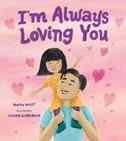
Some things can’t be shared often enough. Throughout this cheery book, narrated in jaunty verse, several diverse
families explain that they always love each other. Relying on energetic, colorful digital illustrations that brim with warmth and humor, this tale demonstrates that love’s all around and can and should be declared every day, everywhere, whether families are together or apart, and in a variety of settings and circumstances: home, school, the playground, and more. Exactly who’s sharing this beautiful message isn’t always apparent on each page: Is it a parent with a child? A child with parents? One parent with another? Does it matter? Love can and should be expressed by anyone—and this is a wonderful tale that can be shared by any reader seeking cheery affirmation. On one spread, for instance, a parent and child are trying out new hairstyles before a mirror; the accompanying text reads, “I love you when you brush your hair / and try out something new.” Either the parent or the child could be expressing this feeling, or each could be saying it to the other in turn; either option works, and it’s satisfying to believe that both parent and child are freely expressing their love. In the end, though, the day clearly begins and concludes with a sweet and fitting parental declaration of love.
A joyful read for families and a thoughtful gift at baby showers and for new parents. (Picture book.)


AFTER MONTHS OF wide-ranging reading and thoughtful, spirited discussions, we’re delighted to present the slate of six finalists for the Young Readers’ Literature category of the 2024 Kirkus Prize. In her column on p. 76, my colleague Mahnaz Dar introduces the picture book and middle-grade contenders. I have the pleasure of telling you about this year’s young adult choices.
Gather by Kenneth M. Cadow (Candlewick, 2023) has already made a big splash as both a 2023 National Book Award
Finalist and a 2024 Michael L. Printz Award Honor Book. Cadow is a longtime educator from Vermont whose extensive experience with middle and high school students shines through in the natural, authentic voices of the characters. The protagonist, Ian, faces struggles shared by too many young people across the U.S.—he’s living in poverty with a single mother who grapples with opioid addiction. In his YA debut, which combines literary sophistication with an accessible voice that will hook even reluctant readers,
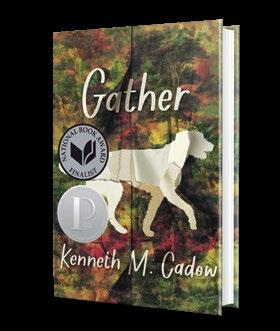
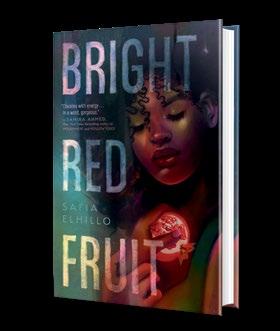
Cadow evinces a deep respect for rural communities and practical, hands-on ingenuity and intelligence. Frequent flashes of humor, the deep love between a boy and his dog, and an abiding love for nature buoy the story, sustaining an overall sense of hope, even in the face of tremendous hardship.
Looking for readalikes? Readers can’t go wrong with these powerful, engaging novels about rural communities: Adam Garnet Jones’ Fire Song (Annick Press, 2018), about Shane, a grieving Anishinaabe boy who’s living on the rez in Ontario; Jeff Zentner’s In the Wild Light (Crown, 2021), which follows Cash, who’s grounded in the natural beauty of East Tennessee; and Mark Smith’s If Not Us (Text, 2022), in which surfer Hesse wakes up to environmental threats facing his small Australian town.
Bright Red Fruit by Safia Elhillo (Make Me a World, Feb. 6) is a verse novel that beautifully showcases the celebrated author’s gifts. Elhillo, whose 2021 YA debut, Home Is Not a Country, earned her a Coretta Scott King Book Award Author Honor and made the National Book Award longlist, has also won awards for her poetry for adults. Samira, who’s growing up in Washington,
D.C., has a passion for poetry and a deep curiosity about the world beyond her tightknit community. Her Sudanese immigrant mother is highly protective—for good reason, as Samira sadly learns. Yet after being exploited by a charismatic and manipulative man in his 20s whom she met in an online poetry forum, 16-year-old Samira turns crushing betrayal into positive change and growth. Elhillo’s roots in slam poetry are evident in vibrant, energetic verse that tells a profoundly nuanced story of girlhood and empowerment. Some gripping verse novels sharing raw insights on similar themes are: Elizabeth Acevedo’s Clap When You Land (Quill Tree Books/HarperCollins, 2020), which explores the impact of a father’s secrets on half sisters Yahaira and Camino; Alessandra Narváez Varela’s Thirty Talks Weird Love (Cinco Puntos Press, 2021), about Ciudad Juárez, Mexico, teenager Anamaria who receives guidance from her older self; and Hannah Sawyerr’s All the Fighting Parts (Amulet/Abrams, 2023), which centers on Amina’s struggles after being raped by her pastor.
Laura Simeon is a young readers’ editor.
A plucky vampire hunter teams up with a bookish, recently turned vampire to stop bloodthirsty monsters in this paranormal romantasy set in 1830.
After Lalo Villalobos, 19, tracks down the vampiro who killed his parents, he ends up being turned into one himself rather than enacting the revenge he wanted. Using his newfound supernatural strength, Lalo escapes and returns home to Los Campos and his younger sister, Fernanda. Together they flee the busy city for the remote pueblo of Del Oro, which reportedly had a 200-year-old case of a vampiro that Lalo hopes holds the key to reversing
his condition. Meanwhile in Del Oro, 18-year-old Carolina Fuentes wants to prove she’s just as capable as her father and older brothers of slaying sedientos, or “thirsty ones,” as the vampiros are also known—but only Abuelo believes in her. Four weeks after a tragic sediento attack on her family, Carolina stumbles upon Lalo. He’s feeding on an animal, and she’s determined to kill him, but she’s confused about why he seems so human and not the “abomination” she expected. Instead of slaying Lalo, Carolina eventually agrees to work with him to figure out whether they can unlock the secret to
By Charlene Allen
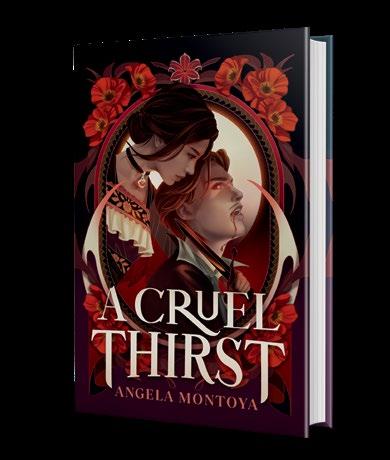
restoring his humanity. Montoya adeptly weaves elements of Mexican history into her sophomore novel, which features delightful supporting characters and lovable protagonists who have
fantastic chemistry. The Spanish-speaking cast members are diverse in skin tone.
An irresistibly charming forbidden romance. (family tree) (Fantasy romance. 13-18)
By Angela Montoya
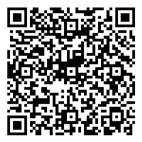
MY FAIRY GOD SOMEBODY
Kirkus Star
My Fairy God Somebody
Allen, Charlene | Harper/ HarperCollins (272 pp.) | $19.99 Dec. 3, 2024 | 9780063212848

A teenage girl begins a journey of radical selfdiscovery as she investigates her family history. McCauley
“Clae” Mitchell has always felt like a part of her was missing. Raised in the predominantly white town of Gloucester, Massachusetts, by a single mom, Clae has many questions about her estranged dad that her mom has repeatedly dismissed. Before Clae’s uncle Wendell passes away, he gives Clae a class ring that belonged to her dad. The ring, inscribed with the name of the New York City high school he attended in the early 2000s, is the first clue to solving a perplexing mystery. The second is the Brooklyn address of an unknown benefactor who’s been sending money to her mom for years—a person Clae believes is a paternal relative. When she earns a scholarship to a top summer journalism program, she trades New England for the Big Apple, and with the help of new friends Joelle and Nze, who form the rest of “the Black girl contingent,” she slowly but surely uncovers the truth. Allen’s sophomore novel effectively captures Clae’s turbulent inner struggles, particularly her thorny feelings about her persistent longing for genuine kinship and community. The first-person narrative features spots of wholesome summer romance, but realistic themes of friendship, complicated relationships, and grief take center stage.
A richly drawn story that explores the precarious construction of identity and the pain of complex family dynamics. (Fiction. 13-18)
Arnold, Justin | Tiny Ghost Press (284 pp.)
$21.99 | Dec. 3, 2024 | 9781915585226
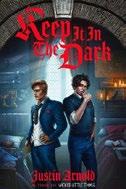
A vampire prince goes to boarding school. Perpetually 17-year-old Casper was adopted by the Belamys after being found newly turned and abandoned. Now he’s part of the wealthy and powerful “royal vampiric family of the American East.” He’s been promised a trip to Europe to see the way other vampires live—if he can spend one year at Mockingbird Prep without revealing his true nature. Senior Rowan Young is the campus golden boy, football quarterback, fencing team captain, and son of the headmaster. This is his year to shine and uphold his family legacy—until Casper becomes his roommate, and everything falls apart. Rowan is frustrated by Casper’s rudeness and weird habits, like running barefoot in the woods and sleeping in a wardrobe. Casper isn’t ready to be in such close quarters with mortals, particularly Rowan, who smells delicious. Trying to avoid each other while sharing space is difficult, and Rowan can’t help but notice how beautiful he finds Casper. Despite being filled with popular romance and vampire tropes, the novel lacks nuance and the characters are underdeveloped. The uneven pacing contributes to the confusing timelines and a mystery that lacks tension. Even though the cute moments between the leads are
promising, they can’t overcome the inconsistencies in the plotting. Both main characters are cued white.
A disappointing vampire romance with no bite. (Paranormal romance. 14-18)
Banghart, Tracy | Feiwel & Friends (304 pp.) $19.99 | Nov. 19, 2024 | 9781250902863
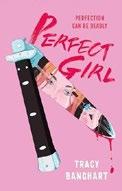
An unchaperoned slumber party, a stormy night, and a crime in want of a perfect victim.
Good girl Jessa is the “rules police, teacher’s pet, parent whisperer” type of people-pleasing perfectionist. When her parents plan a night away, she doesn’t want to be left home alone in her isolated, creepy, old, and possibly haunted house, especially when girls have been going missing in a nearby town. She begs for an exception to her parents’ rules and receives permission to invite some friends over: best friends Kellan and Alexis and the recently estranged member of their quartet, Tiny. It’s a classic horror movie setup, right down to the unexpected arrivals at the slumber party. Interlude “Before” chapters follow another girl who caught the wrong person’s eye, but Banghart is careful not to reveal too much before Jessa and her friends make their own discoveries the hard way. While Jessa’s behaviors and choices are sometimes frustrating, the novel directly addresses this element: She must consciously make war with her social conditioning and toxic gender norms if they are to survive the night. The fast pace and short timeframe (the bulk of the story unfolds over the course of one night) add to the horror movie feel and will help readers move along instead of dwelling on the plausibility of certain plot elements. Most characters read white. Alexis is bisexual and coded Vietnamese American; Jessa’s love interest, Ryan, is Black. The ending conclusively wraps up the story. Cinematic, page-turning brain popcorn. (Horror. 14-18)
Fortune’s Kiss
Clement, Amber | Union Square & Co. (368 pp.) | $19.99
Nov. 12, 2024 | 9781454950219
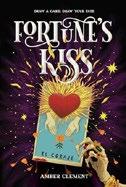
Two friends risk everything in a dark magical competition for the chance to make their deepest dreams come true.
Though her family was once one of Las Cinco Familias, the five most powerful in Ciudad Milagro, Mayté Robles’ debt-ridden father drinks too much and has lost their fortune. Feeling abandoned and resentful, Mayté can’t afford to buy the paint she needs to try to make a success of her art. Worse, she’s being violently threatened by her father’s debt collectors. Though still a member of the aristocracy, Lorena de León, Mayté’s best friend, struggles with her mother’s unexplained disappearance years ago and her father’s physical and verbal abuse. When a poster appears, announcing tryouts in their town for Fortune’s Kiss—a legendary pop-up gambling den that grants winners a magical wish—the girls commit to conquering the game together. The mysterious Fortune’s Kiss is rumored to ruin some players’ lives, but Mayté and Lo are desperate. In her rush to get to the game, Lo makes a split-second decision that comes back to haunt her. The fast-paced plot will pique readers’ curiosity as questions, secrets, and betrayals arise with each new round of the ruthless game of Lotería the contestants play. The enchanted salon where the game takes place is glamorously luxurious but pulses with an evil magical force that
tries to corrupt everyone inside. Surprises abound that will keep readers guessing until the ultimately hopeful and satisfying conclusion. A well-structured and intriguing tale. (Fantasy horror. 14-18)
Daniels, Sarah | Sourcebooks Fire (480 pp.) | $11.99 paper Dec. 3, 2024 | 9781728258157
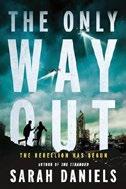
Rapidly worsening conditions in their makeshift camp and a fraying truce with the hostile state that surrounds it plunge the eco-refugees of the wrecked ocean liner Arcadia into desperate straits in this duology closer.
Months after the climactic events of The Stranded (2023), things are only looking worse for the Arcadia survivors as cholera has broken out in the camp and neither medical supplies nor progress in negotiating a general release is forthcoming from the autocratic Federated States. Once again, it’s up to fiery, impatient Esther Crossland to force some action. Daniels has loaded up the cast with so many secretive, treacherous, doubledealing, or outright evil characters, not to mention continual switches in narrative point of view, that even attentive readers will have trouble telling Esther’s friends from her foes at times. Esther and her allies must jump through myriad hoops to pull off the whirl of rescues and escapes, some requiring serious suspension of disbelief. What with all the betrayals, flying bullets, exploding
The fast-paced plot will pique readers’ curiosity as secrets and betrayals arise.
FORTUNE’S KISS
bombs, cold-blooded murder, and gruesomely invasive high tech, the goings-on are so grim, in fact, that the personal drama whenever Esther’s rival beaus, Nikhil Lall and Pat Huang, find themselves in the same scene comes as something of a relief (“What are you, twelve?” Esther justifiably snarls after one round of posturing). Names cue some diversity in the cast.
Convoluted but nonstop action: will appeal to readers who like their fictional futures on the dark and gritty side. (Dystopian. 13-18)
Davis, Holly | Inimitable Books (300 pp.)
$18.95 | Nov. 5, 2024 | 9781958607268
Series: The Gifted Mage, 1

A teen with a rare magical ability is desperate to rescue herself and her disabled sister from their emotionally abusive parents. Sixteen-year-old Cadence Alero views her ability to cry diamonds as a painful burden, especially since her parents fund their lavish lifestyle by forcing her to cry and keep her and her older sister, Allegro, confined at home. Though Cadence gladly cries to fund expensive treatments for Al’s neuromuscular disease, she longs for another way to help Al—and herself. When her parents, hoping to marry Cadence off to Prince Wendell, let the sisters attend King Pontifex’s Summer Solstice Ball, Cadence meets Raven, a mysterious, beautiful girl who reveals that Cadence is a mage. The two secretly leave for Kinephrus, the city to which the magi were banished, where Cadence anticipates receiving answers and aid from Archmage Sanora. Instead, she discovers family secrets—and vendettas that could cost her and Raven their lives. Despite its attention-hooking premise, Davis’ debut fizzles. Though the romance between Raven and Cadence (who’s cued bisexual) is vividly
described, frequent exposition and two-dimensional villains blunt the emotional impact. And while Cadence’s love for Al is touching, comments such as “She’s helped me more than I’ve helped her” risk painting Al as an inspirational trope. The open ending suggests further adventures. Cadence and Al’s father has dark brown skin, and their mother is pale-skinned; Raven, Sanora, and many secondary characters have brown skin. Unusual but underdeveloped. (trigger warning, bonus scene for hardcover edition) (Fantasy. 13-16)
Dennard, Susan | Tor Teen (384 pp.)
$18.99 | Nov. 19, 2024 | 9781250339485
Series: The Luminaries, 3

Friendships, romance, and long-awaited answers combine for a triumphant trilogy closer. A couple of dramatic prologues and some early exposition bring readers up to speed about the mysteries and players of Hemlock Falls. Winnie Wednesday, Erica Thursday, and Jay Friday have formed a clue-gathering trio collectively known as the WTF triangle. The three agree to work together to uncover the truth behind mysteries involving Winnie’s missing father and Erica’s late sister. Winnie’s star has risen in this entry: Characters who teased her during the events of the first book are now cheerfully welcoming toward her, and her romance with werewolf Jay continues to heat up. Her ongoing guilt and trauma over deaths from prior books ground the narrative, while sprinkled-in pop-culture references and a recurring Emily Dickinson motif showcase her nerdy personality. Changes in the format— such as scriptlike dialogue sequences and daily schedules for the Nightmare Masquerade—break up the narration in creative ways. The eventual reveal of a looming threat that’s targeting everyone
Winnie knows starts the countdown of a ticking clock within the story. Meanwhile, a slew of fantasy monsters ensure high enough stakes, suspense, and action to bring the story to a heart-racing and satisfying conclusion. Winnie and Jay present white, and Erica is cued Latine.
Combines the best parts of the earlier books with confidence and creativity, sustaining strong momentum throughout. (Fantasy. 14-18)
Dietrich, Cale | Wednesday Books (336 pp.)
$24.00 | Dec. 10, 2024 | 9781250887757

Jamie Johnson is just a regular American high school kid—until his adoptive mom upends his life. It turns out that Mom knows more about Jamie’s bio parents than she originally let on: He is, in fact, a prince of the kingdom of Mitanor. King Alexander invites Jamie, his mom, and his stepdad to spend the summer with the royal family, and what follows is a wholesome reunion filled with patience, respect, and love. After the news of Jamie’s royal status is leaked to the press, Prince Erik of Sunstad becomes his tutor, teaching him the rules of royalty and preparing him for his first press conference. Erik is also the perfect companion for a fellow gay prince. Despite being in a fight with his bestie, Max, for the majority of the narrative, Jamie is well supported by his core group of friends and his adoptive, biological, and step families. Likewise, Erik may not always see eye-to-eye with his
parents and grandmother, but he’s very close to his older brother, crown prince Stefan, and Stefan’s fiancee. Readers will enjoy indulging in the deliciously slow-burn romance between the kind, honest, and adorable boys, who narrate in alternating first-person chapters. While Jamie’s and Erik’s narrative voices can sound too similar, this cozy royal love story is thoroughly delightful. Main characters are cued white. Healthy relationships and honest discourse abound in this sweet romance. (Romance. 13-18)
Gardner, Faith | Harper/ HarperCollins (368 pp.) | $19.99
Nov. 19, 2024 | 9780063347106
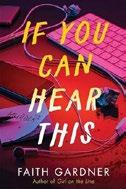
A beloved teacher’s disappearance motivates a previously uninspired club to produce a controversial news show. Posey Spade knew to expect culture shock when she moved with her newspaper editor dad from San Francisco to the small rustic town of Wild Pines, California. An aspiring journalist, Posey is undaunted by her new school’s lack of a journalism department and the apathy of the students she meets in its recently formed AV club. But when Ms. Moses, the scrappy young teacher who sponsors the club, goes missing, neither the school administration nor the local police department seem eager to act. The AV club members, who are devoted to Ms. Moses, launch an investigative news show to raise awareness of her
A dread-filled yet inspiring tale of the power that angry girls can wield. WE ARE THE BEASTS
case. But the more they dig into Ms. Moses’ personal life, the more questions they unearth and resistance they encounter. Some plot threads are never fleshed out, and as a result, the story functions less as the mystery it presents itself as and more as a tender depiction of found family. Posey is also more audience stand-in than a fully realized person, but the large supporting cast is lovingly and individually characterized. Most residents of Wild Pines are described as white, a fact addressed by one biracial member of the AV club. Many club members are queer, including Posey, who identifies as “bisexual and/or pansexual.”
A lackluster mystery that finds surer footing in its study of community. (Mystery. 13-17)
Gould, Courtney | Wednesday Books (336 pp.) $20.00 | Dec. 10, 2024 | 9781250340672
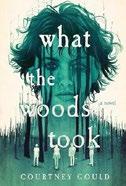
A group of teenagers must survive after a wilderness therapy program goes awry. When 17-yearold Devin is woken up in the middle of the night by two men in her room, she fights back and calls for her foster parents. She quickly learns they’re well aware of what’s going on. The men throw her into a van that’s holding another teen named Ollie and take them both into the woods for wilderness therapy, where they join Hannah, Aidan, and Sheridan. Devin is determined to escape—until she wakes up to find the counselors are missing. Suddenly, her focus shifts to surviving, along with the rest of the group, even including Sheridan, whom Devin has butted heads with from day one. As the teens desperately trek through the woods, strange things start happening, leading them to believe they may not be alone, and that something sinister lurks in the woods. The teens must work together to make it back to civilization,
all while facing the traumas that brought them there in the first place. While the story has an interesting premise, besides the author’s note, it doesn’t delve deeply into the well-documented harm of the unregulated world of wilderness therapy, leading to a somewhat shallow exploration of the industry. Despite that, the atmosphere is well developed, and the gripping plot moves forward at a breakneck pace. The main characters are cued white. Fast paced and atmospheric. (Supernatural thriller. 14-18)
Grant, Katy | West 44 Books (200 pp.)
$25.80 | Dec. 1, 2024 | 9781978597389
Series: West 44 YA Verse
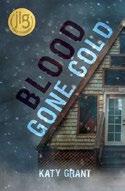
Quarreling sisters must work together to escape home invaders. Sisters Abby and Natalie used to be best friends, but they’ve grown apart because of their different personalities and interests. Abby is tentative and introverted, while high school senior Natalie is social and outgoing. After Natalie makes fun of Abby for falling while snowboarding, their parents become so fed up with the girls’ bickering that they leave them behind in their borrowed cabin while they go out to dinner. The teens are alone—Natalie inside and Abby in the hot tub—when two men break in and try to kidnap Natalie. Abby rises to the occasion, stabbing one of the men with an icicle. The girls’ mom is an immigrant from the Philippines, and their dad is white; Abby shouts at her sister, telling her to run into the forest, in Tagalog, a language the white-presenting intruders likely won’t understand. Inadequately dressed for the snowy weather—Abby is barefoot—and with the men in pursuit, the teens need to work together and repair their relationship in order to make it through the night. This novel in verse for reluctant readers maintains a high level of tension
from the opening scene on the mountain to the final showdown in the forest. Readers will connect with the realistic depiction of the various facets of the sisters’ relationship.
A fast-paced and accessible thriller. (Verse thriller. 12-18)
Griffis, Gigi | Delacorte (352 pp.) $19.99 | Dec. 10, 2024 | 9780593707722
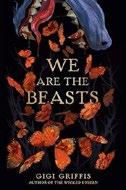
When a beast terrorizes their village, girls in rural France must save themselves. It’s 1765, and Joséphine and her best friend, Clara, are busy tending to their flocks of sheep and preparing to survive the upcoming winter. After finding a dead body in the forest, they encounter Charlotte, a terrified child who’s more afraid of her father’s rage than of the mysterious beast that’s being blamed for recent deaths in the area. Joséphine and Clara come up with a plan: They’ll help Charlotte by faking her death, making it seem as if she was killed by the beast and finding somewhere safe for her to live. Their plan works—but they soon realize that there are other girls who need rescuing from the evil men in their lives, especially because the local priest is blaming the beast’s attacks on the girls’ sins. Inspired by the true history of the mysterious Beast of Gévaudan, the novel has a setting that’s immersive and rich. Fear of the beast provides some of the tension, but the terror is mostly derived from the constant threat of abuse from powerful men. Hope is found through the young women’s finding ways to band together and protect themselves, giving this visceral and poetic story a strong feminist stance. There’s also a lightly developed yet heartfelt romance between Joséphine, who’s white, and Clara, who’s of Ethiopian descent.
A dread-filled yet inspiring tale of the power that angry girls can wield. (historical note) (Historical horror. 14-18)
In her novels, the author tackles challenging topics like teen alcoholism. Young readers devour them.
BY ILANA BENSUSSEN EPSTEIN
“SOMETIMES, YOU DON’T know how to articulate a feeling until you’ve read about it in a book,” says author Kathleen Glasgow. Glasgow made her name penning YA books that find the language to address hard topics—from self-harm to the opioid epidemic—in compassionate and approachable ways. Her latest work, The Glass Girl (Delacorte, Oct. 1), takes on the experience of alcohol addiction, following 15-year-old Bella as she navigates crisis and recovery. Our review calls the book a “visceral, weighty read”; we spoke to Glasgow over Zoom from her home in Tucson, Arizona, to learn more. The interview has been edited for length and clarity.


What was important for you to communicate in a YA book about addiction?
I wanted to capture the emotions that come along with something you don’t fully understand yet. It was important to me that Bella remain a 15-year-old, and when you’re that young, you don’t fully understand what happens to your body and your brain when you overuse substances. She has anxiety, and she’s dealing with her parents’ divorce, her grandmother’s death, heartbreak, and a changing friend group. She’s using alcohol to put her in a different state of mind.
There are things that I’ve never forgotten about what it felt like to be 15. You want your independence and yet you need your parents with you. You want to break boundaries, but you don’t know how far you should go. You want to be in the world, but the world is sometimes a very painful place to be.
The opening of the book distills that tension clearly: It’s a litany of the concerns and issues that jockey for your attention as an adolescent. When I was in high school we didn’t have cell phones, we had rotary phones. We
didn’t have this constant barrage of information, imagery, and text. The worst thing that could happen to you at my high school was someone would put your head in the toilet and flush it—give you a swirly. Now when you’re 15 and you go to high school you literally have to worry about getting shot. You have to worry about climate change. You have to worry about cyberbullying. It’s everything, all at once, bearing down on you.
My kids went to school one day in 2020, and then they came home and didn’t go back for nine months. A lot of kids don’t want to talk about what it was like, just seeing their friends on a screen, having to watch their teacher on a screen, having to stay inside because outside this virus that you can’t comprehend is killing people. You don’t
have the tools to manage all of that stress at that age.
This book isn’t on its face a Covid-19 book, but the pandemic is clearly something that’s had an impact on the characters. I think you now have to consider the pandemic when you’re writing fiction for younger readers. You have to consider how old they are now, and how old they were during the lockdown. What things might your characters have experienced during that time that informs who they are in this moment? Adults reference “lockdown” all the time when we talk about things, but I’ve noticed that kids still don’t really know how to articulate what it was like for them.
Little kids, you tell them, You have a certain amount of screen time each day. And then, suddenly it’s,
Now you have be on the screen for eight hours, five days a week. It’s just crazy. And Don’t touch that, and Put your mask on, and Don’t go over here, and Are you coughing? We instilled this fear in them, and I don’t think we’ve fully seen what it means yet. You have to consider that in fiction now: Even if it’s not an obvious plot point, it has to inform your characters from this moment forward.
Bella would have been 11 in 2020. Where do you see the aftereffects of her lockdown experience in this book? I think the isolation heightened her anxiety. She was also with her grandmother quite a bit, which spiked her drinking, since her grandmother was the one who introduced her to alcohol. Then her grandmother dies after the lockdown has ended, and Bella thinks, What was all that for, if she was going to die anyway?
It’s not on the page, but I think lockdown is also what really exacerbated the tensions between Bella’s parents. There’s a reason why you shouldn’t spend 24 hours a day with the same people, day in and day out.
The book offers different models for how people handle recovery. After I wrote Girl in Pieces, I got letters from readers who liked the part that took place in the hospital and wondered if I would write a book that took place entirely in a hospital environment I realized they were saying that because they wondered what it would be like if they had to
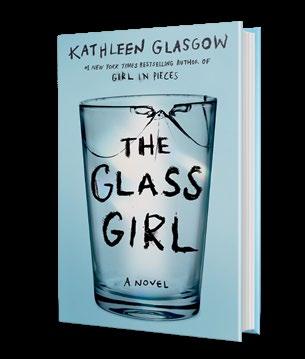
The Glass Girl Glasgow, Kathleen Delacorte | 464 pp. | $21.99 Oct. 1, 2024 | 9780525708087
Adults don’t always have all the answers. Recovering addicts don’t always have all the answers.
go into a facility. Writing the recovery scenes at [Bella’s rehab] Sonoran Sunrise, I knew each of the kids would have their own story of what happened to them and what made them turn to substance abuse and alcohol.
I also wanted the adults who were running this place to be addicts in recovery, and for everyone to make mistakes. Adults don’t always have all the answers. Recovering addicts don’t
Readers always want sequels. They want to know what happens next. I don’t do Part Twos, because I want you to imagine where the characters are and, if you identify with them, where are you right now? Are you in a better place because you read this book and you asked for help? Or because it helped you feel less alone? There can’t be any sequels because the characters are still on the road. I mean, I know where they are in my head, but I would never tell a reader, Don’t worry, they’re just fine.
Is it challenging to write openly about a topic as stigmatized as addiction?
always have all the answers. Eighty percent of it is figuring out what you need to do to stay sober, every day, over and over and over again. It’s not always clean, and I don’t want to lie to younger readers.
As you write in the author’s note, “Bella is at the very beginning of addressing her addiction. I don’t know what the future holds for her, but I have hope.”
Comedian John Mulaney, who’s been very open about his addiction issues, has a line in his special Baby J along the lines of, And those are just the things that I’m choosing to tell you. Writers and artists don’t have to be open about their own biographies to the people who consume their work; we shouldn’t have that expectation of artists. You might start a book with a little kernel of something that happened to you, but pretty soon that becomes boring: You want to live someone else’s life on the page. The one thing I put in this book is someone duct-taping a bottle of alcohol to themselves. That’s a real thing, I did do that [laughs]. I didn’t mind saying that, because it incriminates no one else and it’s stupidly funny. And those are the things that I’m choosing to tell you.
Ilana Bensussen Epstein is a writer and filmmaker in Boston.
An expansive sequel that builds on the fresh worldbuilding of the original.
STRANGER SKIES
Josephson, Kalyn | Roaring Brook Press (448 pp.) | $20.99
Nov. 12, 2024 | 9781250812384
Series: This Dark Descent, 2

T his fantastical sequel to This Dark Descent (2023) continues to explore intrigues in Enderlain.
Arielle, Mikira, Reid, and Damien navigate the kingdom’s complicated politics while dealing with their own strained relationships and discovering the true history and power of forbidden Kinnish magic. Mikira and her famed golem horse, Atara, join her old friend and rebel, Talyana. The two girls conspire with the Enderlain resistance to gain control of their kingdom and return power to the people. Arielle remains with Damien, but their relationship soon becomes contentious due to secrets and betrayals. Reid, ever the pacifist, is caught in the middle. Now that Arielle knows that the immense power she wields isn’t from her Racari, or book of magic, but rather from being possessed by a Heretic (one of the “enchanters who caused the Cataclysm”), she endeavors to rid herself of the spirit at any cost. Written in alternating points of view that follow the third-person perspectives of Arielle, Damien, and Mikira, this story picks up directly from the end of its predecessor. Unfortunately, the busy plot is somewhat confusing, and the many secondary characters and tangled relationships are difficult to keep straight. That said, the narrative eventually arrives at a satisfying conclusion that’s sure to please readers
who enjoyed the earlier entry. The central cast members are described as having light or olive skin.
A high-fantasy duology closer that’s lovingly steeped in Jewish folklore and is sure to satisfy returning fans. (family trees) (Fantasy. 14-18)
Kankesan, Koom | Mawenzi House (272 pp.) | $18.95 paper Nov. 5, 2024 | 9781774151624

Contemporary Ontario teenagers stumble across a mysterious time-travel device and wind up stranded in Elizabethan England. Nathan, Isabel, and Suresh, a motley group of misfits, are trying to go back in time to the year 1613. Nathan, who got caught cheating in English class, wants to make sure Shakespeare’s plays are destroyed in the Globe Theatre fire so no one will ever have to study them. Isabel longs to meet her deceased English professor father’s literary hero. And Suresh, who threw a time-traveler party inspired by Stephen Hawking, “seems game and needs no convincing.” But the trio instead accidentally land in 1592— and lose their time machine. Japanese Canadian Nathan and Sri Lankan Canadian Suresh soon find that the racism they face in modern times is just as prevalent and dangerous in the 16th century (Isabel is white). The teens encounter assorted historical figures, including astronomer John Dee and explorer Sir Francis Drake,
as well as the titular playwright. Unfortunately, the plot wanders incomprehensibly at times, dropping plot threads; the confusion is made worse by the difficulty of distinguishing among the multiple narrators’ voices. Kankesan never establishes a clear, cohesive tone for the novel and instead bounces unpredictably from irreverent comedy to treatises on colonialism to scientific musings on the space-time continuum. Conceptually interesting but excessively convoluted. (discussion questions) (Fiction. 12-18)
Lacelle, Pascale | McElderry (544 pp.)
$21.99 | Nov. 5, 2024 | 9781665939300
Series: The Drowned Gods Trilogy, 2
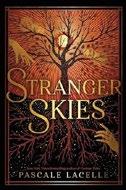
Emory and Baz find themselves separated across time and space in this sequel to Curious Tides (2023). Following the events in the Dovermere sea caves, Emory Ainsleif and Romie Brysden follow in the footsteps of their favorite book, Song of the Drowned Gods, and cross into the Wychwood. Cut off from their friends back at Aldryn College, Emory and Romie befriend a young witch named Aspen Amberyl in hopes of finding another magical door and continuing their journey toward the sea of ash. As the girls travel farther down the starlit path between worlds, they face heightened perils. Back in Emory and Romie’s home world, things aren’t much better. Baz, Romie’s brother, faces immense scrutiny and injustice for being Eclipse-born, and his friend Kai Salonga is hiding from the magical government after escaping from imprisonment. The boys rally their allies to try to help Emory and Romie, but it’s difficult to communicate across worlds. All the magic students can do is keep following the song they hear in their dreams.
Lacelle continues the strong worldbuilding she established in the previous book, populating the story’s new realms with complex systems of magic and interesting mythologies. This sequel takes on a darker tone as the story develops, growing and shifting alongside its characters. Queer representation is present in the form of same-sex love interests and gender-diverse characters. Main characters are cued white. An expansive and engaging sequel that builds on the fresh worldbuilding of the original. (Fantasy. 14-18)
Mann, George | Disney Lucasfilm (512 pp.)
$18.99 | Sept. 24, 2024 | 9781368095174
Series: Star Wars: The High Republic

In the midst of the ongoing war with the Nihil, a mysterious blight spreads across the galaxy, turning everything it touches to dust.
Reath Silas carries the hopes of the Jedi Order and the entire Republic on his shoulders. Everyone is counting on his research to discover a solution to the rampant and seemingly random spread of a fatal blight. Loneliness and self-doubt war inside Reath in the absence of his old master, who abandoned the Jedi. Azlin Rell, an ancient, fallen Jedi whose life is sustained by a desperate desire for revenge, is the only one who makes Reath feel understood—but Reath knows he can’t trust Azlin. Although he sees a connection between the blight and the Nameless, the Nihil’s force-devouring monsters, a lack of evidence stalls his research until he reluctantly teams up with Amadeo Azzazzo, a Padawan. With the help of Amadeo’s fresh, firsthand perspective on the blight, and the cryptic counsel of Azlin, Reath chases answers in ancient legends about the origins of the Nameless. The wide cast of characters casually and
naturally reflects diversity throughout the galaxy, apart from the brief, clunky introduction of a transgender character. Overall, Mann strikes a satisfying balance between inner turmoil, a malicious threat, devastating stakes, and hopeful, heroic action.
A suspenseful and emotionally affecting adventure. (timeline) (Fantasy. 14-18)
Meiser, Britnee | Aladdin (384 pp.)
$18.99 | Nov. 12, 2024 | 9781665948227
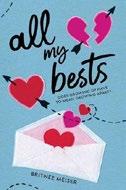
Two best friends must navigate changing relationships during their first year of high school. Jack and Immie have been inseparable since they were 7. But as ninth grade begins, Jack becomes more focused on soccer, and Immie finds herself looking for answers about her biological father. She’s always believed he was just a sperm donor, but when her mom shares personalized CDs he made but won’t say more—“he deserves his privacy. This was the arrangement we agreed upon”—Immie realizes that isn’t entirely true. When Jack isn’t as supportive of her quest for answers as Immie has hoped, she feels the distance between them grow. At the same time, Elijah, a sophomore soccer player, steps into her life, and she’s left to navigate her growing feelings for both boys. While the supporting characters’ storylines feel more like vehicles for exploring the love triangle and various heavy social topics, the complex leads are well developed, particularly Jack, whose anxiety and panic attacks highlight the importance of mental health support for boys. Both Immie’s and Jack’s stories are fully explored: Part One is told through Immie’s first-person voice, Part Two through Jack’s, and Part Three follows both of them in the third person. Meiser examines real topics that affect many teens and
tweens in a mindful and respectful way. Main characters are cued white. An emotional story that beautifully encompasses many sensitive topics. (Fiction. 12-16)
Parker, Amy Christine | Delacorte (384 pp.) | $12.99 paper Dec. 10, 2024 | 9780593650936
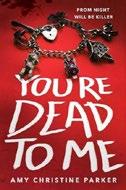
Haunted by her own ghost, a high school senior races to solve her murder before prom night. Ruby is on scholarship at Oleander Bay Academy, works at her family’s animal park, and secretly runs a TikTok account, @reputationkiller. She uses social media to expose the misdeeds of the rich elite in her small town, especially the Bling Brigade, the kids who rule the school. After one of @reputationkiller’s biggest posts yet, Ruby’s ghost appears in her prom dress, warning that Ruby has less than a week before she’s murdered on prom night. While she’s still reeling from this encounter, her secret social media identity is discovered. Now Ruby, who reads white, must team up with best friends Anton and Xavier (a gay couple who are cued Latine and Black, respectively) and a member of the Bling Brigade to find out who has it in for her. As they investigate, they realize that the town and those around them hold more secrets than they could have imagined. Through stakeouts and undercover missions, Ruby feels her way toward the truth as her ghost grows closer and continues to decay. As the countdown to prom progresses, Parker infuses a looming sense of dread into her depiction of a claustrophobic small town. The book has enough twists to keep readers guessing, all while examining the effects of Ruby’s pursuit of justice. Twists and jump scares keep coming in this taut, fast-paced work that will keep readers up at night. (Thriller. 12-18)
Peppins, Brianna | Disney-Hyperion (368 pp.) $17.99 | Nov. 19, 2024 | 9781368081009
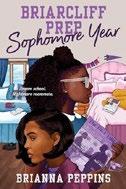
In this follow-up to the 2022 series opener, a Black teen struggles with anxiety while she’s away from home at a Georgia boarding school. After Avielle and her sister, Belle, were physically attacked by Belle’s ex-boyfriend, their father declared a Summer of Survival Instincts for the entire family. In addition to boxing, Avi took weightlifting, driving, and self-defense courses. Now, after what she thinks of as her “summer of torture,” she’s eager to return to Briarcliff Prep for sophomore year. As a first-year student, Avi started to discover her independence, but now she’s consumed with worry. She experiences panic attacks and night terrors, and she’s more forgetful than ever before. Plus her relationships with both Quincy, her ex, and her best friends are in trouble. But Avi has an idea for a student lifestyle magazine unique to the experience of students at Historically Black Boarding Schools, a project that she hopes will be a creative outlet not just for herself but for all the girls at Briarcliff as well as students at Preston, the boys’ school next door. When the pressure of juggling everything gets to be too much, Avi is diagnosed with generalized anxiety disorder and must decide if medication is the right choice for her. The book’s major strength is in how mental health care is portrayed: Peppins thoughtfully unpacks stigmas around medication while also exploring other
options, including therapy and grounding techniques.
A satisfying series entry with affirming mental health representation. (content note) (Fiction. 14-18)
Preston, Natasha | Delacorte (352 pp.)
$14.99 paper | Dec. 3, 2024 | 9780593704080
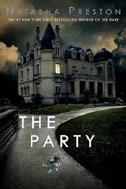
In England, a group of teenagers tries to stay alive when a long weekend in an abandoned castle goes wrong. When Bessie and her friends decide to join a party their classmate Allegra is throwing in her family’s abandoned castle before it’s converted into apartments, they think the biggest issues they’ll face are making it there before a big storm hits and keeping their plans secret from their parents and teachers. Once they arrive at the castle, however, Bessie and best friend Kashvi discover menacing graffiti and evidence that someone has been staying in the cellar. They also learn that protestors from the nearby village are angry about the development plans for the castle—one of them even argues that it would be better to burn it down. A handful of classmates manage to get there before the storm gets too severe. But when the teens wake up the next day to discover one of their own dead, and the storm makes it impossible for them to leave, they quickly realize that they’re in danger. But is the killer one of the members of the Facebook protestors’ group…or one of their own? Despite
the book’s intriguing setup, the prose is dominated by repetitive conversations that convey little substance. Still, readers may still find themselves propelled forward by a need to discover the identity of the murderer. The central cast is racially diverse. A lukewarm thriller. (Thriller. 14-18)
Price, Tirzah | Harper/HarperCollins (352 pp.) | $19.99 | Nov. 12, 2024
9780063278028 | Series: A Lizzie & Darcy Mystery, 1
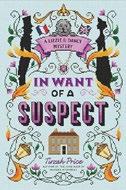
Solicitors Lizzie and Darcy team up in another Austen-flavored mystery.
Jack Mullins, co-owner of a wool storehouse in London, was Lizzie’s first client; three years later, he hires her again. Accompanied by Darcy, Lizzie intends to meet Jack at the storehouse, but upon arrival they find Jack distraught, and the building engulfed in flames. Jack, whose brother dies in the fire, insists that a young woman he spotted on the premises is responsible. Although his story isn’t entirely convincing, Lizzie agrees to investigate. Her leads include both impoverished French refugees and two privileged young women with ties to the country: Leticia Cavendish, who was raised in France, and Josette Beaufort, her half-French cousin, who once turned down Darcy’s proposal of marriage. Unable to confirm puzzling accounts of the Mullinses’ business dealings, Lizzie enlists the Dashwood sisters to help her search the storehouse at night. What they find only adds to the mystery—as does Darcy’s absence. Lizzie sought his help, yet he never showed up. This volume positions Lizzie and Darcy, sturdy survivors of many retellings, as well-chosen protagonists in central roles. While Mr. Bingley and the Dashwoods turn up (and Miss Woodhouse makes a cameo appearance), new characters streamline the
action by freeing up creative space in which the intriguing mystery can briskly unfold. Major characters present white.
A treat for fans of Regency tales and stories inspired by classics. (author’s note) (Mystery. 14-18)
Segura, Alex | Disney Press (384 pp.)
$18.99 | Dec. 3, 2024 | 9781368097901

This prequel to Disney’s animated film Encanto centers on the mysterious outcast Bruno Madrigal. Bruno, who’s a triplet, has a lot on his mind. He wants to be supportive of his hermanas: Pepa, who’s getting married, and Julieta, who’s still deciding among suitors. Then there are his mother’s expectations that they should be helpful to the townspeople, making the most of the magical gifts his family’s been given. Bruno, who’s socially out of step, struggles with anxiety and wonders who he really is. Is he just a broody social pariah who only predicts bad news? Could he alter his fate by dressing differently— changing his style and sharing the hopeful news people want to hear, even if it’s not entirely true? And what if, the entire time, someone is waiting on the periphery, threatening Bruno’s family and the Encanto? The dialogue often casually includes Spanish phrases that are easily comprehensible in context, fleshing out the Colombian setting. The book includes some characters who do not appear in the movie, and the plot and setting walk a line between following the canon of the movie and presenting an original world (for instance, there’s no mention of Bruno’s room being a sandy cavern). Unfortunately, the text relies too heavily on overexplanatory narration, which takes away from the fun of learning more
about these characters naturally over the course of the story.
May satisfy diehard fans of the original movie. (Fiction. 12-17)
Sherrard, Valerie | DCB Young Readers (200 pp.) | $16.95 paper Nov. 9, 2024 | 9781770867642

When a teenage boy catches his dad in yet another lie, he seeks answers—but will knowing more really make things simpler?
Rising senior Ethan Granger lives a comfortable life in a gated community in Ottawa. He has a fickle girlfriend, Nora, whom he considers worth the heartache. The fact that his father is a self-described “smooth talker”—or, Ethan admits to himself, a liar—is brought home again when he sees his dad with some men in a strip mall parking lot in town at the same time that he’s supposedly just leaving the airport. After attempting to dig into his father’s business dealings on his own, Ethan hires private investigator Imani Abboud. But when she advises him that something illegal is going on and he should avoid danger by ceasing to look further, Ethan decides to continue on his own. Enlisting best friend Owen, old schoolmate Aki, and Nora (between breakups), Ethan stakes out an address he got from the PI. Eventually Jean-Guy, Aki’s boyfriend, helps with surveillance, too. An epilogue shares the impact on Ethan’s family of his completed investigation. His first-person narration will ensnare readers immediately, sustaining their interest as this compact, strongly paced story navigates red herrings and subplots. Aki and PI Abboud are well rounded in their secondary roles. Main characters read white; names cue ethnic diversity in the supporting cast. A fast-paced page-turner that explores moral gray areas. (Mystery. 14-18)
Dust
Stine, Alison | Wednesday Books (320 pp.)
$20.00 | Dec. 3, 2024 | 9781250878731

A 16-year-old girl living in a slightly alternate history faces coercive control and a new Dust Bowl. Back in rural Ohio, Thea was already different— deaf in one ear and homeschooled. But now her father has moved the family to a farm in a dry, dusty Colorado valley, and her so-called unschooling consists mainly of working on the farm, where her father allows no modern clothing, internet access, or library books. But the family needs money, so Thea is allowed to work at the tiny cafe in town, where she secretly begins to connect with the wider community, including Ray, a Deaf boy her age. Through skillful prose, Stine weaves together the threads of Thea’s coming-of-age story: her dawning understanding of ableism, her search for self and community outside her family, and her desire to understand and give back to the world. The narrative builds a creeping sense of dread like a gathering storm, exploring the twin horrors of climate change and abusive control as the dust storms increase in intensity, water dwindles, locusts swarm, and the farm produces nothing but a few potatoes. Thea’s father is a man who’s increasingly radicalized, stockpiling food and guns and tightening his control over his family, but disappointingly, the resolution of his behavior is all too pat, ending this otherwise excellent and intense novel on a flat note. Thea presents white; Ray has brown skin and straight dark hair.
Gripping and emotional. (author’s note) (Fiction. 12-16)


for
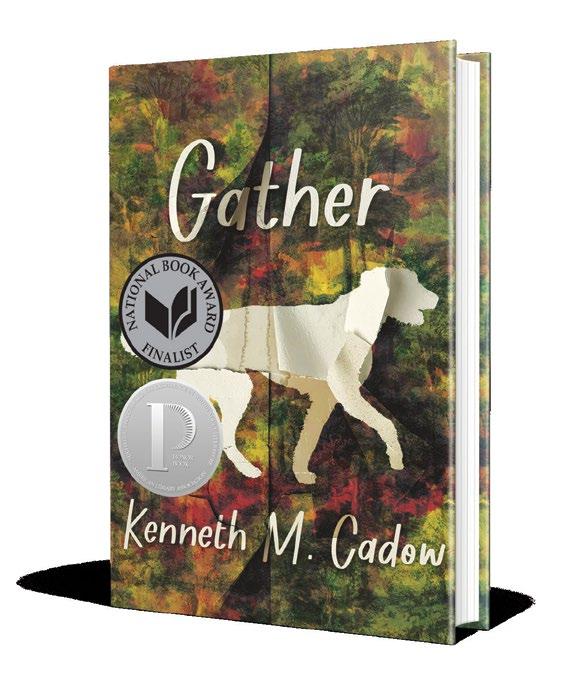
“Cadow’s humor, grace, and tenderness bring to life a boy and his dog story that will leave an indelible mark on readers’ hearts via a beautifully realized novel that celebrates nature and the will to survive.”
—Kirkus Prize Jurors




The first book, Watch Me, is scheduled for publication next year.
Tahereh Mafi will return to the world of her popular Shatter Me books in a new spinoff series, Today. com reports.
Mafi is launching a new spinoff series of young adult novels, with the first installment, Watch Me, coming next year.
Mafi made her literary debut in 2011 with Shatter Me, which follows Juliette, a girl whose touch can kill and who has been imprisoned in an asylum by The Reestablishment, an iron-fisted, military-run government. She is given a cellmate, Adam, who helps her escape to the headquarters of a resistance movement.
Mafi wrote five more novels in the series, which concluded in 2020 with Imagine Me. Watch Me will focus on James, the imprisoned brother of a resistance leader, and

Rosabelle, an assassin for The Reestablishment. The novel is set 10 years after the last book in the Shatter Me series.
Mafi said that characters from the original series will return in the new one.
“They’re all going to be very much there on the page, living their lives, and you’ll get to catch up with them and see how they’re doing,” she told Today.com.
Watch Me is scheduled for publication on April 15, 2025.—M.S.

For a review of Shatter Me, visit Kirkus online.

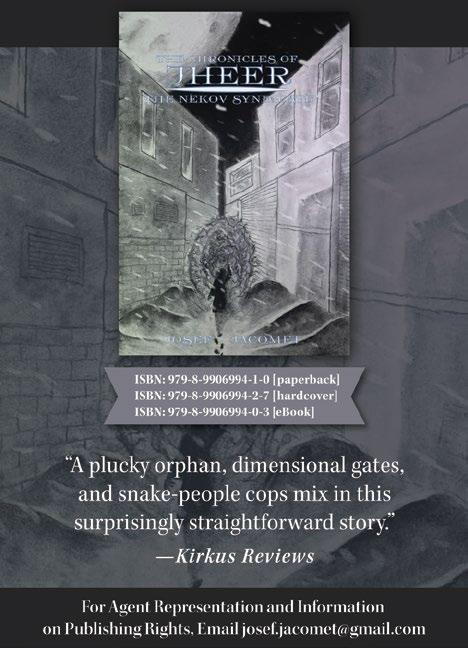
J.R.R. TOLKIEN’S CLASSIC
1938 children’s book, The Hobbit , is well known for the villainous character of Smaug—a fire-breathing dragon who jealously guards a massive treasure. Similar creatures have been a staple of fantasy tales ever since. There are other kids’ books, including Cressida Cowell’s How To Train Your Dragon (2004) and its sequels; YA novels, such as Christopher Paolini’s bestselling Inheritance Cycle; and countless works for adults by such acclaimed authors as Anne McCaffrey and George R.R. Martin. Here are four more dragon tales for a range of audiences, all recommended by Kirkus Indie:
In Katie Weaver’s lively picture book Uh-Oh! My Dragon’s Hungry!, illustrated

by Caner Soylu, a young girl gets worried when her pet dragon’s stomach grumbles; when he gets too hungry, he spits fire. It’s up to her to feed him, and she assumes he won’t want food that she doesn’t like, such as casseroles or brussels sprouts. Instead, she proposes wilder and wilder sweets, including “mountains made of pancakes.” However, the girl’s pet dragon prefers somewhat healthier fare. Our reviewer praised Soylu’s “vivid, idiosyncratic” illustrations and how Weaver “wraps this quirky fantasy around a good message for picky eaters.”
The middle-grade fantasy novel The Dragon and the Girl: True North, by Laura Findley Evans, features 12-year-old Eliana Fallond, who meets a young,

horse-size dragon in the woods near her farm. She soon finds that she can communicate with the newcomer, whose name is Winston; before long, the pair embark on a quest to find a king’s treasure and Winston’s missing father—a giant dragon named Raiden. It all takes place in “a charming, smartly crafted fantasy world that readers will want to linger in,” says Kirkus’ reviewer.
Blake and Raven Penn’s YA fantasy series starter, Dragon Thief, received a Kirkus star. Its story revolves around teenage Asher’s quest to keep a valuable dragon egg from falling into the hands of the Black Valkyrie—the Mage Hunter who murdered his magic-using mother. The complex worldbuilding features Dragon Wars in the past, a part-dragon people called the Drekai, and, of course,



dragons themselves, including Asher’s flying “wyvern and best dragonfriend,” Thorn. Our reviewer called it “an exciting fantasy adventure and a great start to a promising new series.”
In James Turner’s graphic novel Dragon Garage, 20-something archeology student Zach Vandermeer finds an ancient statue at a flea market near the lost city of Erkund. Back home in San Francisco, he incorporates the object into a session of Heroic Journeys, a Dungeons & Dragons–like role-playing game he regularly plays with his friends. Later that same night, he finds that his garage has become a portal to a land called Arthea, a fictional place he and his brother created long ago that features wraiths, goblins, and other fantasy creatures—including dragons. In fact, he almost immediately finds a dragon egg, which hatches later on. In Arthea, Zach and his pals become the powerful heroes they always imagined themselves to be. Kirkus’ reviewer noted that the characters are “delightfully nerdy and bursting with love—love they have for each other and love the author clearly has for them.”
David Rapp is the senior Indie editor.
Rotbart offers a compendium of useful information from his popular business podcast. Fun, well organized, and brimming with useful information, this is a book that some will want to read cover-to-cover and others will treat as a reference book to look up subjects as needed; either way, it’s a delight. The author is a co-host of the Monday Morning Radio business podcast, and much of the information here is taken from episodes of that show. Each chapter focuses on a guest of the podcast, including Ken Blanchard, author of The One Minute Manager (1982); Pulitzer Prize–winning reporter and author Charles Duhigg; Joanne Lipman, former deputy managing editor of The Wall Street Journal and
editor-in-chief of USA Today ; and Tom Ziglar, CEO of Ziglar, Inc. These luminaries (and many more) tackle pertinent topics including “How To Influence People and Win Friends,” “Unlocking the Steps That Lead to a Successful Life,” “Closing the Gender Gap at Work,” “Entrepreneurial Success,” and “Simple Truths but Profound Leadership Tools.” These are hardly revolutionary subjects for self-help or business books, but they are presented here in a fresh way, including insights from the contributors, actionable suggestions pertinent to each chapter’s content, illustrative case studies, QR codes to access the original podcasts, and a useful bibliography. Actionable tips include looking outside your own
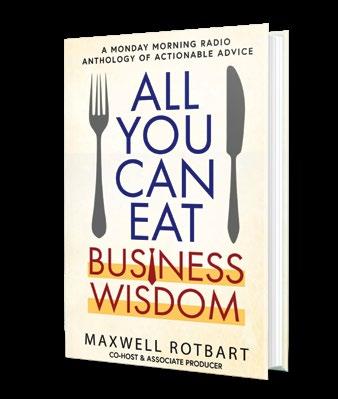
Rotbart, Maxwell | Self | 255 pp. $29.95 paper | May 1, 2024 | 9798324120047
field for innovation, as detailed in Norhart, Inc. CEO Mike Kaeding’s chapter on adapting technologies and techniques from other business sectors, which also emphasizes making incremental improvements instead of looking for a “silver bullet,” and having the confidence to fire good people in favor of the best. These are boldly presented,
useful insights, and a list of social media links allows readers to interact with Kaeding (this is true of all the book’s subjects). And this is just one example; the entire book is a winner, a rare mix of ultra-useful information and an engaging presentation. A well-mounted business self-help book that’s actually helpful—and a good read, too.
Alexander, Stephanie | Red Adept
Publishing (378 pp.) | $14.99 paper
July 29, 2024 | 9781958231548
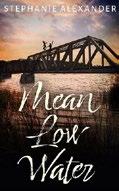
In Alexander’s paranormal mystery, a lawyer looks to the past for answers, assisted by her paranormal abilities, when an important figure from her past goes missing.
Lisa “LeeLee” Lightstone Moretz’s friend Ginny Blankenship had always been able to see glimpses of the past and future—or, as Ginny’s mother described it, she could ride time’s currents as it “roll[ed] from all directions toward its own sea.” When they met as teenagers back in 1995, Ginny felt that they were uniquely connected; as it turned out, LeeLee had similar powers. Not even fated friendships are perfect, though, and they cut off contact with each other seven years later. Thirteen years after that, LeeLee, now an attorney in Charleston, South Carolina, meets with Peace Smith, a former friend and boyfriend to both LeeLee and Ginny. His return to town brings up complicated, unresolved issues for LeeLee; he tells her that he and Ginny broke up a few years before and that Ginny’s been missing ever since. Soon afterward, LeeLee gets an anonymous email telling her that Ginny is dead; as a result, the troubled Peace is now a prime suspect. As the mystery proceeds, new memories, LeeLee’s visions, and the findings of a private investigator bring more new information to light. Alexander’s characters are well developed and feel authentic throughout. The narrative also has a strong sense of place, which will invest readers not only in the story, but also in the welfare of the community the characters inhabit. The complex, fluid relationships of the main players ebb and flow over time, which reflects reality in a striking way. LeeLee, Peace, and Ginny are all flawed people, but they’re shown to have redeeming qualities, as well; although they all love one another deeply, they’re selfish,
secretive, and reckless to varying degrees, despite their best intentions. These traits move the story forward just as much as its supernatural aspects do. A well-crafted tale of friendship and discovery.
Amsden, Barbara | FriesenPress (236 pp.)
$37.99 | $24.99 paper | July 22, 2024 9781038314185 | 9781038314185 paper

Amsden, an experienced executor of wills, furnishes a concise but complete guide to the complexities of her work.
The author has served as a co-executor of estates on three separate occasions. Here, she offers “the good, the bad, and the ugly” of what she learned—the “observations of a recovering executor.” The process of executing an estate can be maddeningly complicated, so an executor needs the “patience of Job” and the “wisdom of Solomon.” A well-drawn will isn’t enough; one also needs a very detailed plan. The stakes can be high—an executor can be held liable for decisions related to an estate, and they’re expected to operate reasonably and prudently. To that end, the author provides an impressively comprehensive tour of the principal issues that must be addressed, from choosing a funeral home to the “sometimes-murky waters of dealing with financial institutions.” Amsden’s guidebook is intended for anyone either choosing an executor, faced with the possibility of becoming one, or who “will die at some point,” the sort of cheeky humor that characterizes the whole work, a welcome counterpoint to a weighty, technically challenging discussion of what this “sacred trust” entails. The book concludes with a series of appendices that help the executor organize various checklists: These are helpful resources that are a testament to
the author’s thoroughness. Amsden’s writing is consistently clear and as free of technical jargon as any book of this kind can be; she assumes no prior knowledge on the part of the reader, defining “executor” and “estate” early on in the book. As she candidly points out, a work so brief couldn’t possibly cover every conceivable issue. Yet she does manage, in minute detail and with a breezy manner, to paint a synoptic picture of the executor’s obligations. An informative, well-organized guidebook written in a lighthearted style.
Arnold, Justin | Self (466 pp.) | $19.99 $11.99 paper | May 27, 2024 9798326853196 | 9798326842626 paper

A street-smart, spiritually oriented trucker hauls much more than freight in Arnold’s action thriller.
“Relax, Mister Smith,” truck driver Buddy Green says to his new passenger and client. “It’s smooth sailing here on the Shakey Town Express.” In addition to hauling goods up and down California’s I-5 corridor, Buddy runs a successful side business helping all kinds of fugitives (like Mister Smith) slip past the law. There are just a few rules everyone has to abide by: no smoking, no guns in the front seat, no music other than country, and no taking the Lord’s name in vain. (Buddy explains that he has “disabused” himself of a strict moral code after serving in Afghanistan and Iraq, but he remains a devout Christian.) Smith begrudgingly agrees to Buddy’s rules, and the two find themselves locked in endless debates about God, war, and everything in between. (The Great Gatsby even becomes a hot topic when Smith discovers that Buddy enjoys hosting a trucker book club with no-nonsense former MMA fighter Large Marge, one of the book’s best characters.) What Buddy doesn’t know yet is that Smith isn’t just on the run for fraud—he’s a
THE PERFECT PANCAKE
member of a gang that just pulled off a deadly heist. Danger lies in wait for them at Smith’s destination of Los Angeles, where a young sex worker named Dylan, who has crossed the wrong Hollywood mogul, is also waiting and putting all her hopes on Buddy. Arnold introduces readers to this gruff but fascinating world with fantastic cinematic energy, snappy dialogue, and well-calibrated suspense. Buddy is an instantly likable character whom readers will be happy to ride along with. The treatment of Smith (and, as a consequence, the overall story) is more uneven. Pages fly by when Smith and Buddy settle into a Midnight Run –like action-comedy groove, evading the police and learning about each other. But a sudden burst of unexpected, gratuitous violence awkwardly shifts the story’s stakes and tone. (The second half, dedicated to Dylan, has a great setup and some touching moments but feels like an entirely different novel.) Arnold assembles some inventive set pieces and memorable characters here, but they don’t quite make a cohesive whole. A thoroughly enjoyable—if sometimes bumpy—ride with a philosophical outlaw trucker.
Beaumont, Alexandra | Brigids Gate Press (266 pp.) | $15.99 paper April 24, 2021 | 9781957537818
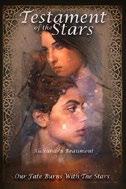
In Beaumont’s fantasy novel, war erupts over control of the Stars. The author skillfully explores the philosophical implications of power in her
created world, the Star-Riven Settlements, in which each region uses their given Stars— asteroid-like objects that fell from the sky—differently. The two Stars of Gemynd enable its rulers to subjugate an adjoining region, Rask. Rask accepts its lesser status until dire circumstances compel its people to revolt, refusing to provide labor and goods to Gemynd any longer. Parlenta considers itself superior because it mines its Stars and sells the resulting product, Astamitra (a drink that fosters communion with the Stars), to the Gemyndians. In contrast to the rest, Aisren’s Stars are available to all in the form of energy. The story’s two principal characters come from opposite socio-economic backgrounds. Einya, from wealthy Gemynd, is newly trained as an Astrologer, one of an elite group with access to the cave housing the sacred Stars. Einya hopes to elevate her Raskian lover, Tollska, by wedding her, but Tollska has different plans, sacrificing herself to a loveless but expedient union with Einya’s cousin, Pearth, the leader of the Constellan Guard. While Einya and Tollska try to work from within to prevent a civil war, Einya’s brother travels to Parlenta, seeking an alliance with that region against Gemynd. A startling discovery by Einya furthers the ongoing crisis: Communicating directly with the Stars, she finds that, contrary to long-standing mythology, Gemynd isn’t the favored land at all. The Stars are neutral, caring only about “memory and truth,” desiring merely to be “historians.” But rulers such as Pearth shun that revelation, rounding up and executing Raskians under the guise of keeping the peace. Beaumont’s narrative mostly moves at a gallop. The characters, often hurtling through dangerous situations, are compelling and multidimensional;
for example, Tollska, though in love with Einya, feels unexpectedly attracted to the unlikable Pearth. The story could have reached a smoother finish; it ends abruptly on a jarring note (Beaumont has a next installment planned). Fast-paced, with nuanced characters and believable parallels to our own world.
Blake, Annie | Self (36 pp.) | $11.99 paper June 24, 2024 | 9798329336269

Author/illustrator
Blake offers a colorful, simple picture book about kitchen utensils working together to make good, but not perfect, pancakes. Skillet and Spatula team up to whip up a batch of pancakes, but when Spatula becomes determined to settle for nothing less than perfection, Skillet gets hungry—and frustrated that flapjacks that are simply good enough aren’t acceptable to their friend. The story offers a straightforward message about letting go of perfectionism. The simple, full-color sketches lend the story a bright and cheerful feel and will help to make the story accessible to young children. The shape and size of some images appear distorted at times, and the bright purples and blues used to color the Skillet and Spatula are surprising. However, the characters become more recognizable as the story progresses. Stark white backgrounds make colorful images pop, and some pages feature significantly more text than others, speeding the story along at funnier moments, and slowing it down for heartfelt scenes. A “Beyond the Book” section invites readers to extend the story by making their own pancake batch and presents other activities to get youngsters thinking about the story’s meaning. At once playful and intentional, this book will remind children that true friends accept us as we are, imperfections and all. A fun lesson in growth mindsets for young kids struggling with perfectionism.
In the Silence of Decay
Boyle, Lisa | Self (398 pp.) | $17.99 paper | Oct. 24, 2023 | 9781736607763
Series: Pinter P.I., 1

A Vietnam War veteran trying to leave his past behind finds himself being pulled into a murder investigation in Boyle’s mystery novel. James Pinter was once a U.S. Army Criminal Investigation Division agent involved in investigating the My Lai Massacre. When James left the service, he became a truck driver, hoping to forget the horrors of war. His life takes a turn in 1979, when James becomes the sole caretaker of his estranged 14-year-old daughter, Molly, after her mother overdoses. An even more significant change occurs when Molly discovers the body of Linda Morris near a New Mexico gas station. The investigating state troopers chalk up Linda’s death as yet another Indigenous overdose case. James has doubts, but wants to purge his past as a cop (“this was not his case, he reminded himself again”). Still, he fears that Linda’s son, Adriel, may be in danger, so he heads for the Navajo Reservation, where Linda’s sister, Kay, convinces James to find her sister’s murderer. James quickly must determine the players on the reservation: He doesn’t know what to make of attractive, bullheaded reporter Gloria Fenwick, but tribal officer Wayne Tully becomes his close ally in an off-thebooks hunt for Linda’s killer. Linda’s death appears to be tied to a potential disaster caused by a company exploiting tribal resources; James becomes a target himself, as many don’t want the white man looking into Navajo corruption. Boyle has created an intriguing modern hero in James—the re-entry of Molly into his life means that he has to stop running. One of the novel’s most enjoyable storylines charts how the pair grow closer as they investigate together. The strong supporting cast has intriguing secrets to be explored in
future books in the Pinter P.I. series. The reservation itself becomes a character as Boyle deftly delves into pressing issues affecting Indigenous people; her narrative is a slow burn, building to a surprising conclusion. A gripping thriller.
Canning, Patrick | Self (261 pp.) | $14.99 paper Aug. 29, 2024 | 9798323893928

Two detectives take on a bizarre case with suspicious origins and increasingly personal ramifications in Canning’s mystery novel. This satiric, at times surreal mystery plunges two detectives into a case involving (but not limited to) experts in public manipulation, corrupt corporate moguls, anarchic artist and feminist groups, assorted crooks, a movie star with alleged cannibalistic tendencies, a search for a rumored-tobe-lethal stockpile of Vietnam War–era Agent Orange somewhere in Southern California, a secret organization with global reach…and a fictional cameo appearance by Tom Hanks. That this wild ride doesn’t spin out of control is down to the sure hand of the author, who balances the antic plot with unexpected heart. This element is personified by Teddy, one of the owners of the Lint Detective Agency, located in a Los Angeles strip mall. Teddy, a “Black Mr. Rogers in an eyepatch,” is a one-eyed, cardigan-wearing “believer in the direct application of compassion.” His protective brother, Ralph, of seeming Mediterranean heritage, is
athletic and tough. They bonded as young children after being kidnapped by a twisted cult leader to whom Teddy lost his eye. (Ralph lost a less visible part of his anatomy.) Their reputation for investigative alacrity brings them a client who attempts to bolster his dubious claim of being a CIA agent by bringing actor Tom Hanks with him for a brief, paid appearance as his “legitimacy catalyst.” Canning weaves dark humor, occasional gritty violence, and barbed observations of societal ills into an odyssey of discovery that culminates in a riotous clash of gun-toting feminist “gynarchists”—artists who create public disruptions (“sonic incontinence,” anyone?)—and an “invisible government” of elite corporate manipulators whose mantra is to appeal “to emotion over intellect, bias over information.” A reunion with a sister cult survivor—a secret held by the East LA grocer who rescued and adopted the brothers—and a bittersweet choice facing Teddy provide additional enjoyable texture to the mix. A surprisingly humane assemblage of unforgettable characters, a fun house plot, and sharply observed societal shortcomings.
Chan, W. James | Self (433 pp.) | $15.52 paper | May 31, 2015 | 9780994285256
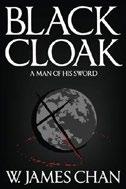
Chan’s first fantasy novel in the Jaydemyr Saga drops readers into a world of psychic powers and swordfights. Early on, readers first meet
A messy but mesmerizing introduction to a bold new high-fantasy world.
BLACKCLOAK:
A MAN OF HIS SWORD
Blackcloak the Scourge and glean some information about the character’s Mindwarps and dream manipulation before they’re whisked away to the small village of Swimming Carp. It’s the setting of the story of a 12-year-old boy called Dog-Ears who’s known as the so-called village idiot. In his world, which is reminiscent of ancient China as well as feudal Japan, all people serve the local Lord Ayakawa, who, in turn, serves the Emperor Tsukamoto, who is directly responsible to an all-powerful female God. At night, when everyone fears dangerous figures known as Blood Peddlers, Dog-Ears experiences vivid dreams of a “faithwar” that results in worldwide slaughter. Later, he discovers that he has a Talent for controlling fire. One day, he finds a town that is deserted, except for a formidable enemy called Hua-Shi, and a strange female presence named Fa Shai-yeh, who speaks to him in riddles and questions, calling him “Charan.” This encounter leads Dog-Ears to declare that his name is now Charan Jaydemyr, and that he and Fa Shai-yeh will go to the capital of Kaifeng together. There, Char becomes a respected thief, falling in with a gang known as the Rats, and he’s dead set on stealing a precious sword that seems to call to him. As Char moves across the capital and eventually ingratiates himself with the dangerous Blood Peddlers, the barriers between dreams and reality, present and future, and different facets of his own persona break down during a hallucinatory quest of self-discovery.
Chan’s dreamlike work opens with a flurry of bombastic high fantasy and poetic language: “There is blood on a leaf….As small as it may be, this deposit of life is great enough to milk the moon and to hold its light within a shiny bubble. This is mysticism in minutiae, a miracle of the basest order.” It then goes on to weave together fractured narratives against the fantasy backdrop. Chan lays out a deep mythology that puts magical spins on real-world history, blending Abrahamic religion with samurai culture—a fascinating concept. However, nothing is quite clear, even after repeated use of the book’s Annexes. The difficult prose resembles an epic
poem with dream logic that leaves little time to dig into the intricacies of the mythos. The plot itself is shrouded in mystery, creating a strange experiential journey, as if David Lynch rewrote the works of George R.R. Martin. Chan churns out beautiful turns of phrase on almost every page, delivering otherworldly aphorisms (“repulsion is too often little more than compulsion in denial”) and haunting descriptions (“The moon overhead was a splinter of curved bone”). But, for all its abstraction, numerous chapters stick to back-and-forth dialogue, bringing the action, linguistic or otherwise, to a halt. Basic plot elements still feel elusive: Where and when are we? What is a particular character’s motivation? Chan’s work is engrossing but consistently vague on these basic points. However, he delivers something daringly different for ambitious genre fans.
A messy but mesmerizing introduction to a bold new high-fantasy world.
Colerick, Brad & Scott Feldmann
Deep Magic Song & Drawing (48 pp.)
$29.99 | Sept. 27, 2024 | 9798218439644
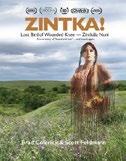
A mixed-media book—including original song lyrics and artwork—telling the story of Zintkála Nuni’s tragic life. This companion book to the award-winning short film Lost Bird (Zintkála Nuni) begins with the lyrics—only one or two lines per page—to Colerick’s song “Little Bird—(Lost Bird of Wounded Knee)” (the sheet music for which is included at the book’s conclusion). It tells the story of Zintka, who, as an infant, survived a three-day blizzard in the arms of her dying mother in the aftermath of the Wounded Knee Massacre. The dominant feature of each page is the artwork, done in a style Feldmann calls “animontage,” which is based on the Plains
Indians’ ledger art of the late 19th and early 20th centuries. Feldmann “created digital ledger art using backgrounds of broken treaties, telegraphs, and handwritten military documents. On top of them [he] placed drawings by Lakota artists of the era.” The lyrics convey the loss and desolation Zintka faced after being adopted by an army general who forged his wife’s signature in court before leaving the two of them in poverty years later: “Lost in a Ghost Dance / Spirits have come looking for you / They won’t rest until you’re home / Little bird / Troubled child / You can feel your mother’s love / And frozen fingers.” Feldmann’s prose retelling of Zintka’s life and death, which makes up the book’s second half, is handled with both compassion and matter-of-factness. Haunting images, like a close-up of a man’s gloved hand holding (strangling?) a shadowy bird surrounded by buffalo skulls, add an extra emotional layer to Zintka’s remarkable story. A timeline spanning from her birth in 1890 to 1991, when her body was exhumed and reburied at Wounded Knee, helps put the events in context. All of these elements ultimately combine to provide an unforgettable glimpse into a particularly dark time in America’s history. A poignant multimedia journey that beautifully combines art, music, and the written word to detail a long-overlooked life.
Cotton, Peter B. | Illus. by Bonnie Lemaire | Bublish (66 pp.) | $15.98 paper Aug. 24, 2023 | 9781647047672

Fred the Snake and his friends explore the western United States in Cotton’s picture book. First stop is Los Angeles, where Fred and friends visit a film set before taking a ski trip to Lake Tahoe. In Yosemite National Park, they rescue a wounded bird. An illicit plane ride over the Golden Gate Bridge in San Francisco
SUPER PSYCHED
is followed by a tour of Alcatraz. In Seattle, from the top of the Space Needle, they can see Vancouver, Canada. The crew then navigates around icebergs on a ship to Alaska. Finally, they fly to Hawaii, where they hula dance on Waikiki Beach, visit Pearl Harbor, and camp by the volcano Mauna Kea. Lemaire’s brightly hued cartoon illustrations manage to convey the details of the featured settings and the characters’ activities without overwhelming the pages. The story is written in rhyming verse, which is often forgivably silly but occasionally constraining to the point of treating some subjects reductively. For example, in Alaska, “The native people you may know, / were once called the Eskimo. / But better now, to avoid dispute, / please use Inuit and Aleut.” The text font is rather small and intricate, which might be challenging for younger readers. Each page includes a helpful color-coded header labeling the state and locality, making each place easy to find and revisit. The book’s best element is its balance of educational information and an entertaining tone. This children’s travel book stokes curiosity and a spirit of adventure.
Croal, Lyndsey | Shortwave Media (252 pp.)
$27.99 | $17.99 paper | Sept. 3, 2024 9781959565468 | 9781959565420 paper

Croal’s short stories ponder the human condition as it might exist in the future. The thread connecting the short stories in this SF compilation is
the presence of post-human and para-human culture in the future. When artificial intelligence, cyborgs, and robots overstep the operating parameters set by their human users, the results may be beneficial—or sinister. The title tale concerns a surgical breakthrough using “data node” implants to resurrect patients from devastating brain-injury comas. But along with this “AfterLiving” comes the temptation, particularly for ambitious parents, to secretly enhance the unwitting patients’ abilities. Thus, young car-crash survivor Nara find herself featured in a televised music show displaying singing talent she never knew she had. The narrator of the opening story “Patchwork Girls” is a beautiful entertainment-industry android, built to suffer violence, even murder, in films and live-stage productions; medical miracles make her good as new after every stunt. She is supposed to feel no pain or malaise, but she does (“maybe she’s dying for real this time. Maybe this is the end. There is some relief in that thought”). In “Hush Little Sister,” sentient holograms called Shimmers replace deceased family members, and these artificial ghosts bring comfort and solace to the household survivors (supposedly). In “Better Self,” retinal implants, mandatory for elite employees in the big-tech industries, bring nonstop bombardments of advertising. The solution only leads to exponential commercial intrusion. A few stories flirt with supernatural futures; “The Rift Between Us” posits a region of space in which the spirits of humans who die off-planet remain aware and available for melancholy reunions with the living. Some stories are “flash fiction” vignettes of only a few paragraphs. Croal’s prose is smooth as touch-screen glass and does not submerge readers in abstruse science or techno-jargon; still, genre fans must
be quick on the uptake to recognize virtual reality, cryogenics, and other SF concepts. This collection commendably addresses deep emotions in addition to apocalyptic shocks and awe.
A heartfelt array of speculative SF tales.
Dorsay, Adam | Amplify Publishing (296 pp.) $28.00 | Oct. 1, 2024 | 9798891381421
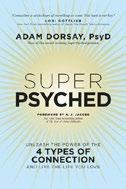
Dorsay offers a new spin on well-known principles of self-development. The author, the host of the Super Psyched podcast, offers insights for living a fulfilling life through the lens of connection. Dorsay breaks the concept of connection down into four components— connection to oneself, connection to others, connection to the world, and connection to “something greater”—and devotes a section of the book to each.
According to Dorsay, while everyone needs connection in all four areas, every individual has a unique “connection formula”; he gently admonishes the reader, “do not push yourself to take on things you think ‘should’ fill your cup. Rather, go with what you believe actually will fill your cup.” Each section includes anecdotes from the author’s life and work that illustrate the key ideas, along with reflection questions and suggested activities. After part one, each chapter wraps up with a boxed “connection formula exercise” that is easy to complete, such as writing a gratitude letter, spending time in nature, or reaching out to an old friend. Dorsay’s writing style is clear, conversational, and consistently upbeat. He provides relatable examples (though many seem to assume a well-heeled lifestyle) and explains concepts simply (summing up negativity bias, for example, as “losing
hurts more than winning feels good” and a flow state as “the overlap of meaning and challenge”). Dorsay frequently quotes people who have been featured on his podcast alongside well-known figures such as Brené Brown, Oprah Winfrey, Thich Nhat Hanh, and Albert Einstein. While much of the information and advice revisits proven concepts such as mindfulness, gratitude, setting boundaries, and seeing failure as actionable data, they’re presented in fresh, accessible ways and accompanied by many useful tips. Dorsay’s book makes his advice to “just put yourself out there and see what happens” seem not only wise but eminently doable.
Useful advice for strengthening connections in all areas of life.
Egerton, Jeff | Self (362 pp.) | $27.95 paper May 25, 2019 | 9781074553241

Egerton, a former Marine and air-traffic controller, presents a thorough history of the commercial airline industry in the United States.
As the author observes in this remarkably comprehensive account, the genesis of commercial flight took place during a particularly inauspicious time: the Great Depression. Few Americans could afford to fly, and most were wary of “these new fangled flying machines.” At first, paid flights focused on everything but conveying passengers—mail and freight transport, pest extermination, timber surveying, aerial photography, and many other innovative uses. A decade passed between the famous first flight by the Wright brothers and the first passenger paying for a regularly scheduled flight. Also, the experience of flying was primitive by today’s standards; there was no heating provided, the noise was extremely loud, and the trips weren’t much faster than traveling by rail. There also wasn’t a kitchen aboard a commercial airline until 1936.
The normalization of commercial flight, the author points out, wasn’t an “an orderly, straightforward process”; new technology was required, as was colossal infrastructure, a new regulatory regime, and widespread acceptance of air travel. Egerton furnishes a minutely detailed account of all these transformations, including the roles played by important figures, such as Howard Hughes and Charles Lindbergh, who, at one point, was the “most famous and sought after man on earth.” Sometimes, readers may get lost in the dense thicket of granular information, as when the author supplies the physical specifications of a DC-7 airplane. This is a minor quibble, though, as Egerton’s work is a magisterial display of scholarly rigor, especially when one considers the diversity of the fields he covers in such a synoptic history. Moreover, the story of commercial air travel is a surprisingly dramatic one; readers will see this with clarity when Egerton expertly chronicles the use of airplanes during World War II. Overall, this is an erudite, panoramic, and compulsively readable work. An engaging and impressively researched book about American passenger flight.
Fettke, Rich & Kathy Fettke
BiggerPockets (288 pp.) | $26.99 Sept. 10, 2024 | 9781960178169
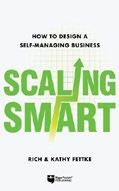
Rich and Kathy Fettke present a book of tips and tricks for growing a business. As is stated in the introduction, the goal of this work is to help entrepreneurs with an obvious, though difficult, task: growth. This is not a book for readers dreaming up new businesses but rather a guide for those seeking to transform what they have already built “from a time-sucking, stress-inducing monster into a well-oiled, income-generating
machine.” Chapters cover subjects including developing a winning company culture, recruiting the right employees, and determining the ways in which new technology (like artificial intelligence) can be of assistance. It all begins with an entrepreneur’s personal vision: Business creators need a “clear target” of where they want their businesses to go (one should not try to grow too quickly, the Fettkes caution). The authors also emphasize the importance of creating a strategic plan including an organizational chart so that it is clear who will do what in a company. Clarity and organization are common themes, as evidenced by the advice about working with partnerships: “Written agreements prevent disagreements.” Throughout the chapters, the authors, a husband-and-wife team, share their experiences of working in real estate. Their down-to-earth approach has much to offer: Readers learn everything from what constitutes a useless meeting (and how to avoid one) to how a great team can make all the difference. (The authors also recount some less-than-great teams they have encountered, such as one including an employee who used work emails to promote her own events that “made anything on OnlyFans look tame!”) Though the book is full of practical content, some of the text can read as obvious or vague. A quote from the founder of Groupon exhorts readers to “Hire great people and give them freedom to be awesome.” Solid advice, but perhaps easier said than done. Nevertheless, as each chapter ends with a handy list of “Takeaways,” the content is easy to navigate. Readers will be comforted knowing they need not attempt the arduous task of growing a business alone.
An indisputably helpful guide to the finer points of entrepreneurial expansion.

Frank, Dana | Wiley (256 pp.) | $24.64 June 18, 2024 | 9781394198696
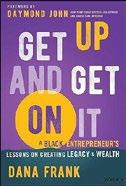
In this guide, Frank offers insights into the pursuit of real estate investment, with a focus on building wealth for Black families. In 1989, the author and her mother took over a successful real estate business founded by her father, who had established it in 1950 with only one single-family home. She now oversees hundreds of multifamily apartments and continues to expand the business with a vision of growing generational wealth. This book shares Frank’s financial advice, with which she aims to teach readers how to build their own wealth, despite institutional obstacles. Frank’s story begins with her parents, whom she defines as “fire starters”—people who ignite a flame for their future against the narrative that society has given them. She tells of how her father came to Seattle to build a business after leaving Detroit and its Jim Crow laws; she also references the success of her uncle, music legend Quincy Jones. Each chapter begins with an original poem by Frank and ends with a list of takeaways and action steps to help them put the author’s wisdom into practice. In these pages, readers can dive into the benefits of real estate investment, as well as her REAL method—an acronym for a multistep process of researching, expanding one’s business, amplifying requests, and leveraging connections. Alog the
way, the author offers an inside look into what it’s like to be a landlord and run a family real estate business, particularly in Washington state and Arizona. Frank artfully blends her advice with discussions of diversity, equity, and inclusion, boldly speaking out against racism, sexism, and other prejudices that one may encounter while pursuing one’s full wealth potential. Ultimately, Frank encourages readers to hold a big financial picture in mind, envisioning a legacy of intergenerational wealth and philanthropy. This will be an empowering story that will provide inspiration to a wide range of readers, and particularly to Black families and entrepreneurs seeking to achieve their financial dreams. Although Frank’s advice is specific to real estate investment, readers interested in other wealth-building methods will also find motivation in this book’s vignettes. A deeply personal and upbeat entrepreneurial manual.
Star
Garwood-Jones, Alison | Pen Jar Productions (280 pp.) | May 10, 2024 9781738267422

Readers see the many faces of adult orphan grief in Garwood-Jones’ adult picture book. The five stages of grief, as conceptualized by Elisabeth KüblerRoss, get an expansive remix, complete with renderings of subjects in the throes of various distilled moments of coping mechanism flux. In this
A deeply personal and upbeat entrepreneurial manual.
cleverly conceived book, faithfully nuanced caricatures, or stagers (a term taken from Shakespearean theater protocol and a play on Kübler-Ross’ stages), mirror the ways grief manifests in our actions across 41 chapters with titles that are sometimes familiar (“The Shell Shocked,” “The Pity Partiers,” “The Addicted”) and other times unexpected (“The Dog Moms,” “The Closeted,” “The Narcissists”). Over a dozen stand-alone quotes on grief by noted people are interspersed between, as well. An eggplant-purple color scheme is used purposefully to unify the sweeping range of emotions between disparate poles of intensity, associated with red, and calm, associated with blue. To “capture how we are coping, moment to moment, year after year, after a big loss” is the author’s mission statement, and for the most part it is easy to draw a connection between the coping mechanism attributed to the various stagers. In some chapters, however, the correlation between the subject as portrayed in the accompanying text and the person’s stage of grief is tenuous. A chapter entitled “The Dicks,” for instance, includes a portrait of Donald Trump, Vladimir Putin, and two other men, all espousing questionable ideologies. They may well be orphaned adults, but their personalities can’t be boiled down to a reaction to grief. Midway through, a quote by writer and actor Amy Sedaris, “Assume everyone is grieving,” reorients readers in light of such less apparent examples of how an adult orphan might be grappling with loss. Finding oneself, family, friends, or others within these pages makes it a perfectly contemplative coping tool. A unique book with more than a few profound philosophical moments that evoke peace and foster emotional healing.

Gitenstein, R. Barbara | Koehler Books (234 pp.)
$23.64 | $15.98 paper | Aug. 23, 2022 9781646637539 | 9781646637515 paper
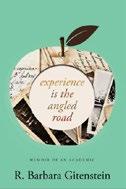
Gitenstein reflects on growing up Jewish in the Deep South, a groundbreaking career in academia, and living with a chronic illness.
The author, an accomplished academic and university administrator, was born in 1948 to Anna and Seymour Gitenstein. Anna and Seymour, both born and raised in New York City, married in 1943 and lived in Florala, Alabama, where Seymour ran the family shirt and underwear factory, and they were one of the few Jewish families in the county. The differences in their personalities led to a marriage “that likely never satisfied either of them but that tied them to one another in love and need for the rest of their lives,” per the author. Other defining influences included her siblings, her maternal grandmother and aunt, administrators at the Holton-Arms School, and professors at Duke University, UNC Chapel Hill, SUNY-Oswego, and Drake University. Don Hart, her husband and fellow Florala native, shines as a key source of support in her life. Together, they navigated parental disapproval of their marriage, institutional sexism and antisemitism, the vagaries of life in the academic world, and lifelong health issues. Gitenstein’s generous acknowledgments of those who mentored her, along with her stellar achievements (including becoming the first woman president of the College of New Jersey), will resonate with readers who have been ensconced in academia. All readers will appreciate the honesty with which the author writes about living with ulcerative colitis and the difficult choices involved in managing the disease. (“Anyone who has survived or learned to manage a chronic disease without becoming an invalid understands the bravery and will
embedded in these choices.”) The compassion Gitenstein shows when writing about her parents—she lost her mother to Alzheimer’s, starting in the late 1970s, and notes that “like so many men of his generation, Dad lived in denial about his homosexuality”—is moving. References drawn from years of written correspondence add further insight to this fascinating memoir. An honest and compassionate look back at a life of accomplishment.
Gnup, Valentina | Grayson Books (100 pp.) | $12.96 paper March 1, 2024 | 9798988818649
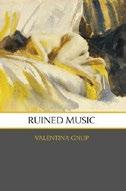
Love, marriage, motherhood, divorce, old age, and the effects of poverty and oppression are among the themes explored in these ravishing poems.
Much of Gnup’s work is confessional verse that revisits milestones in a woman’s life in a voice redolent of passion and disabused wisdom. Topics include the long arc of romance (“At eighteen, I promise never to write love in a poem, / at twenty-six, I tell you I’ll stay with you always, / at forty-four, I pawn my wedding ring for ninety-five dollars”); the engrossing physicality of childbirth (“I know how to squat and push, / how to reach down and discover / the hard slick head of my infant”); and the wry indignities of online dating in one’s 60s (“do not focus on his hairy little hobbit hands or his jewelry”). Other poems explore social justice issues, including a remembrance of victims of the AIDS epidemic, a somber meditation on war, and a plangent elegy for a 17-year-old Iraqi Kurd girl stoned to death in an honor killing (“Afterwards / an uncle gathers her in his arms / like kindling”). Two poems recount Gnup’s experiences working in a welfare office, presenting a colorful, Hogarthian panorama of disadvantage and bad choices: “There are questions / you never ask: / Why do you stay with him, / when he throws you /
downstairs? / Do you need another baby, / when you can’t support / the five (or seven or ten) / you already have? / And why all those tattoos / on your face?” Gnup’s poetry conveys intense feeling, dense atmospherics, and convincing characterizations in language that’s vivid and evocative, whether it’s a lyrical sketch of a French village (“Outside the cathedral / a mourning dove performs its hollow music of wind, / barleycorn, and sorrow. The rain comes again, tentative / as a girl’s voice”) or a stark view of a young waitress’s daily grind: “The busboy hoses down the rubber floor mats / under the fluorescent light, / the cook blasts Foreigner’s / Feels Like the First Time from the kitchen radio. / I clock out at 11:15 and drive home in my Plymouth Arrow. / I sit alone at the kitchen table, / (my hair smells like greasy fish, my feet ache). / I count my tips— / I smooth the short stacks of dirty wrinkled ones, / I build my little coin towers.”
A luminous collection, full of arresting imagery that captures the warped richness of life.
Graubart, Philip | Koehler Books (286 pp.) | $18.95 paper Oct. 22, 2024 | 9798888244852
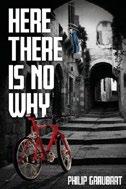
A writer reluctantly takes on writing a book about the life and mysterious death of his former teacher and mentor in Graubart’s novel. Pulitzer Prize–winning pop culture writer Judah Loeb is compelled by his brother-in-law / agent to revive an abandoned project: a book about the life and death (by presumed suicide) of Chaim Lerner, a Holocaust survivor and “famous public intellectual [and] radical theologian.” A trip to Israel in 2005 to work on the book proves triggering—Lerner was Loeb’s professor when Loeb lived and studied abroad in 1982. (Loeb’s own wife killed herself, and her body was found by their then 5-year-old daughter, Hannah.) Loeb has
been fascinated by Chaim’s death, a fall from the outdoor patio of his apartment building. Did he actually commit suicide? “There were reasons for doubt,” Loeb writes. Hannah, who as a teenager accompanied Loeb to Israel, thinks the answer is obvious: He was murdered, she asserts. Loeb and Hannah return to Israel in the present day for the funeral of Chaim’s widow, a prominent politician. Perhaps closure awaits Loeb in the truth about Chaim’s death, a revelation about his wife’s suicide, and his relationships with his daughter and Michal, whom he loved when he was a student in Israel. Loeb wants to know the whys, but, as the now grown-up and married Hannah tells him, “‘Why’ is not the right question.” In this novel, Graubart, a rabbi, grapples with primal and provocative questions about suicide and trauma. Was Chaim’s death because of the Holocaust? “Was he one of Hitler’s last victims, just delayed, done in by PTSD and not the gas chamber? Can thinking too much about God, good, and evil have fatal consequences?” These are good discussion starters; the circumstances surrounding Chaim’s death, which are relatively predictable, are less so. Still, Loeb’s fraught emotional and religious journey remains compelling. A gripping novel of revelations and redemption with a searching and sympathetic character at its core.
Harwood, Eli | Sasquatch Books (288 pp.) | $17.96 paper Sept. 3, 2024 | 9781632175465
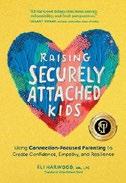
Harwood, a therapist, presents a practical guide that sets up close relational bonds as the foundation of parenting success.
A child with a secure attachment to at least one caregiver is more likely to be independent, caring,
confident, and resilient, asserts the author in the introduction to her new parenting guide, which approaches its topic in a chatty, friendly, and effervescent style. Harwood breaks down basic concepts of attachment and offers empowering tools for caregivers of kids of any age, while acknowledging the challenges of raising neurodivergent children, or kids who have gone through trauma. She also notes the inevitable gaps that a book by a straight white woman will have when approaching the topic of identity oppression. In discussions reinforced by solid data and actionable advice, Harwood proposes a “high structure, high nurture” environment as the best parenting strategy—one in which conflict is an opportunity for discovery, and the emphasis is on cooperation: “When we create a secure connection with our children,” she writes, “it helps them to trust our capacity to help them through the hard stuff.” She illuminates each chapter with relevant stories from her and other parents’ experiences. The book also includes “Nerd Alert” sections, which delve deep into the research and science behind various concepts. These data-rich sections can be easily skipped by those who aren’t interested, but those who are will find engaging explanations of the prefrontal cortex, internal scripts, Edward Tronick’s well-known 1970s “still face” experiment, and more. Harwood’s boisterous prose invigorates lessons in managing conflict, enforcing structure, navigating difficult topics (such as addiction, racism, and abuse), and developing confidence. The type of parenting that this book espouses won’t come naturally to all readers, and it emphasizes that secure attachment isn’t possible without putting in the work to address one’s own attachment traumas, which she calls “ghost hunting”; the more settled and present caregivers are, she
points out, the easier it is for kids to find comfort and connection with them. An accessible, enthusiastic manual on how to raise resilient, confident kids.
Hassani, Sadri | Springer (275 pp.) | $36.09 paper | Oct. 27, 2024 | 9783031652585
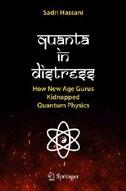
Physicist Hassani’s treatise critiques the appropriation of quantum physics by popspiritual gurus. Hassani observes that quantum physics has always attracted those with an interest in New Age spirituality, especially since the “rush of gurus” to the West in the 1960s. The injection of Eastern thought into Western philosophy, and the fascination with occultism in the West, had much to do with this rush, as well as the inherent “weirdness of quantum physics.” Many of the founders of quantum physics, like Schrödinger, Bohr, and Heisenberg, encouraged this association by publicly linking their work to various versions of mysticism. But this is a “false marriage,” as the author spiritedly avers, one entirely based upon a rank miscomprehension of physics, a disingenuous sophistry, or both. Much of the alleged similarity between pop spirituality and quantum physics is the result of an astonishingly shallow analogy of the kind one finds in popular books like Deepak Chopra’s Quantum Healing. “They put a mystical statement next to a similar-sounding statement about science—or a quotation by a mystic scientist—and argue that the similarity of those statements implies the
A meticulous study composed in admirably accessible prose.
QUANTA IN DISTRESS
parallel between the contents.” The author explains that the stakes of these mischaracterizations are not purely theoretical: An unsuspecting public has been taken in by useless dietary supplements and ineffective alternative medical treatments as a consequence of this ignorance. Hassani impressively charts the principal mistakes made by the spiritual teachers looking for legitimacy via a connection to modern science, an undertaking that requires him to discuss quantum physics in some detail and with great clarity. He’s a touch out of his depth when he attempts to link his thesis more broadly to the history of Western philosophy—it is indefensible to assert that Augustine’s effort to link Christianity with Platonism is the same as what “New Age gurus are doing with Eastern theology and quantum physics.” Still, this is a rigorously researched and well-argued book that should be read by anyone interested in the commandeering of science by pseudoscience.
A meticulous study composed in admirably accessible prose.
Henry, Megan | Self (439 pp.) | $29.99
$19.99 paper | Aug. 7, 2024 9798335255486 | 9798332672804 paper
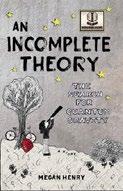
Henry exposes a hole in the conventional understanding of physics in this debut nonfiction work. Gravity is a tricky subject; we know it exists, but not how it operates. The phenomenon is explained by Einstein’s theory of relativity, but not by quantum mechanics. The author is an adherent of Mach’s principle, which she defines as “the belief that all motion is relational and can only be determined by and described with respect to other objects.” She sees this concept as the key to explaining gravity within the framework of quantum mechanics, though doing so would require us to jettison the theory of relativity. With this book,
Henry attempts to sketch the history of this “incomplete theory” of gravity, from Aristotle to Bohr and beyond. The major players are all represented here—Copernicus, Kepler, Galileo, Newton—as are the dueling titans of Einstein and Mach. Henry sets forth her view of a Machian universe while identifying persistent holes and nagging loose ends. She chronicles her own journey as she goes, weaving in accounts of the book’s composition and revealing how the work—like the theory (and the entire history of physics)—is very much a rocket ship being constructed midflight. Henry’s leisurely prose takes on an almost poetic quality, particularly when she is explaining complex ideas: “If one of the spatial dimensions is a circle, it is possible to wrap one of the two dimensions of a membrane around the circle, leaving the other dimension— which looks just like a string—to move around in the remaining nine dimensions.” Though not for beginners, this book makes for a wonderful primer on both the history and the unknowns of physics, including discussions of the ways various theories fit (or fail to fit) together. Whether Henry’s own notions related to Mach’s principle are ultimately borne out feels less essential than the reminder that the path toward a unified theory is populated by false starts, dead ends, and thinkers brave enough to question the status quo.
A wide-ranging, open-minded look at the problem of gravity.
Horn, Kimberly | Amplify Publishing (200 pp.) $29.95 | Sept. 10, 2024 | 9798891380950
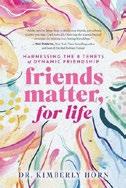
An upbeat manifesto on the importance of friendship and the fundamental principles that make it thrive.
Horn, a psychology researcher and professor, contends that satisfying friendships are the cornerstone of a
happy, healthy life—and yet, contemporary society “faces a pressing loneliness crisis.” In her first book, she shows readers how to “navigate the complex and sometimes murky waters of adult friendships.” The first chapter gives an overview of what the author calls “dynamic friendship,” i.e., close, meaningful relationships that create an exchange of positive energy. In each chapter, Horn explores fundamental friendship tenets: Recognizing (the different types of friendships), Communicating, Accepting, Blending (combining different friend groups), Safeguarding (building trust and loyalty), Reciprocating, Recalibrating (changing or ending friendships), and Self-friending. Each tenet comprises several basic principles. For example, Reciprocating includes “exchange time generously,” “tune in and truly listen,” and “express your gratitude,” among others. The author briefly describes each principle and prompts the reader to envision it and reflect on it. The guide concludes with a final recap and several pages of notes. Horn’s inspirational tone empowers readers to “reverse the trend of declining adult friendships.” Her writing is warm, vivid, and heartfelt: “Friends are the family we choose for ourselves, becoming increasingly precious as we age. They are our pillars of support, our sources of joy, and our lifelines in times of need.” While acknowledging that “the intricacies of adult friendships can be challenging,” Horn’s advice focuses more on the why than the how. She encourages the reader to connect “with an open heart, free from jealously or resentment”—an admirable sentiment that’s unfortunately much easier said than done. And while the need for friendship is universal, and the book advocates cultivating diverse friends, its frame of reference seems exclusively uppermiddle-class American, replete with scenarios like spontaneous road trips, winery tours, high-paying jobs, yoga, and brunch. Ultimately, though, its message—“Be your own best friend, and let the magic of true friendship unfold in your life”—is timeless.
An instructive celebration of close, meaningful friendships.
House, M.D. | Self (391 pp.) | $14.99 paper April 26, 2024 | 9798324048983
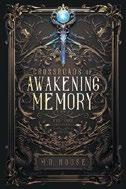
The first installment in House’s End Times Convergence saga is an adventure fantasy that follows a young military trainee in the shadow of a looming war. Rain Barynd—the son of artisans and farmers from a small, peace-loving nation called New Haven—is worried about his potential future as a Council Guard. His training isn’t exactly going smoothly, especially after being called out by his strict superior, master-at-arms Ileom Mystrevan—“a war hero from the east as cantankerous as a wounded bear on his best days.” But on a routine patrolling assignment, the young Rain and his fellow trainees are thrown into a brutal battle against bandits attacking innocent travelers. In the aftermath of the violent conflict, Rain’s seemingly simple existence is suddenly complicated by numerous life-changing revelations, the first being the discovery that he can somehow use powerful magic. Second, a woman named Antara charges Rain with a confusing but supposedly monumentally important task: to take a talisman that he recovered at the scene—a key—and “deliver it to the prophet.” The story takes a wild turn when Rain, while holding the key, inadvertently transports himself to another reality. The new world, it turns out, is modern-day Earth, and Rain can’t wrap his head around items like a barbed wire fence, a paved road, and a car: “[He] stared in fascination as the
monster, which had four wheels like a wagon, only smaller and fatter, rushed past, growling. He spotted a bearded man, enclosed behind glass and wearing something black over his eyes, staring at them as it sped by.” With the help of Antara—who is a spy and could be perceived as either a hero or a villain— and Ileom, Rain begins piecing together a complex political puzzle that involves warmongering factions that have found a way to use talismans to open up portals to other worlds. As Rain’s world, Tenris, is being invaded by armies and fantastical beasts, the teenager is asked to do the impossible: to defend his realm against wave after wave of attackers while also finding a way to save millions of innocents living on multiple worlds. House initially walks a fine line between an intricate twist-laden storyline and a more unwieldy anything-goes read. Several seemingly disparate narrative elements are in play: magical portals to different worlds, domesticated griffons used like flying war horses, dragons that can psychically bond with their riders (à la Anne McCaffrey’s Pern), refugees from Nazi Germany, dwarves, elves, Navy SEALs, megalomanic leaders looking to enslave entire worlds, religious orders, ancient prophecies, and more. House, however, does a great job not only of keeping the multiple storylines clear and coherent, but also maintaining a relentless pace throughout. And while readers may have some significant questions about the book’s thematic direction (Will this ultimately evolve into a “religious fantasy” storyline? What’s the purpose of the mysterious Order? What exactly are the Crossroads?), they will be more than satisfied with the unexpected twist ending, which sets up the sequel in grand style.
The auspicious beginnings of what could be a truly breathtaking fantasy saga.
Knudsen, Pamela K. | Illus. by Patricia Dewitt & Robin Dewitt | FriesenPress (44 pp.)
$21.14 | $11.99 paper | March 31, 2023 9781039144446 | 9781039144439 paper
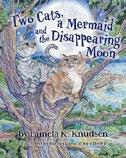
In Knudsen’s debut illustrated chapter book, two curious cats go exploring in search of the full moon, which appears to have vanished. Topper and his brother Lexington are typical young cats. They love to climb trees and chase lizards, and they are fascinated and distracted by the world around them in equal measure. One night, they become entranced by the full moon (“It made everything outside look magical”), so large in the sky that Topper seems almost able to touch it from his perch on a high branch. The two brothers wait for the moon to become full again, but find only darkness in its place—and then a big, round, red, planetlike thing. Disobeying their mother’s instructions not to venture beyond their yard, the brothers set off to search for the disappeared moon. Along the way, they encounter the mermaid Shellie and her dolphin friend. Shellie, too, is missing the full moon, under whose light her tail and seaweed will transform into legs and a dress, allowing her to dance. Braving the threat of coyotes, Lexington and Topper climb a nearby cliff to consult with an owl. The moon returns, and they learn about lunar eclipses. Knudsen narrates a straightforward tale, using age-appropriate language and dialogue. Topper and Lexington embody the quintessential playful curiosity of young cats and will appeal to children and adults alike. Their journey plays out moment-to-moment; the narrative is more languid than urgent, in keeping with the artistic focus and exploration of place. While
there is quite a lot of text for young readers to work through, it is commensurate with the scope and detail of the Dewitts’ full-page illustrations. The dark palette and watercolor textures convey a striking sense of the world at night and often bleed through to the text pages, hinting at unseen spaces and larger landscapes. Perhaps the greatest strength of the Dewitts’ artwork lies in the backgrounds, as seen in an image of the night sky and clouded red moon with rippling waves and shadowy palm trees leaning in the distance; Topper and Lexington’s explorations come to life in no small part due to the richness of such settings.
A dreamy nighttime adventure capturing the wonder of the natural world.
Lee, Wang-tai | Trans. by Timothy Smith | Shadelandhouse Modern Press (458 pp.) | $26.95 paper May 30, 2024 | 9781945049446
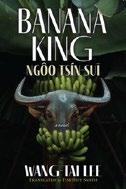
L ee’s historical novel, translated from the Mandarin, Hoklo, and Japanese by Smith, recounts the true story of a man who massively expanded Taiwan’s banana trade during dark days of martial law. Ngôo Tsín-suī is from an agricultural area in southern Taiwan. His goal is to benefit local farmers, improve product quality, and expand Taiwan’s dominance of the Japanese banana market. He has remarkable success, bolstered by his concern for the farmers’ finances and his negotiation skills. He rises to become the director of an industry group, and becomes known locally as the Banana King, but his life at his farm with his wife, Giok-ìn, and their beloved water buffalo, Mari, is where his heart is. Taiwan is in a state of upheaval as World War II ends; Japanese colonizers leave, and Chinese Nationalists arrive. Tsín-suī, who speaks a native Taiwanese language, Hoklo, as well as Japanese, must now
learn Mandarin. The resentful local population stages a revolt that the Chinese Nationalist government brutally puts down. Tsín-suī survives the aftermath and continues to flourish in the banana business, but his stature and reputation are threatened when corrupt officials fabricate a fraud case against him. Lee’s historical novel offers readers an impressive amount of detail about a difficult period of Taiwanese history and of a figure whose grand ambition ultimately didn’t succeed (as noted in a foreword). His characterization of Ngôo Tsín-suī as the face of Taiwanese success is highly readable as various challenges, including literal storms, swirl around him. However, readers may find that the granular level of detail sometimes bogs the story down. Lee’s depiction of Tsín-suī as an innovator who put cash in the hands of small farmers is inspiring, and his story offers life lessons as well as obvious warnings about authoritarian government. Smith’s translation uses natural, contemporary English while preserving what he can of the original languages (“He must have eaten some tshauphang sweet potatoes. Must be that’s why his stomach is so bloated”), along with providing explanatory footnotes (in this case, defining tshau-phang as “giving off a rotting odor”).
An inspiring and informative, if tragic, tale of Taiwan.
Marín, Mari-Carmen | Shanti Arts (104 pp.) | $22.95 paper April 30, 2024 | 9781962082242
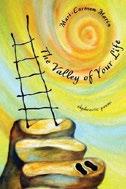
An ecstatic collection of ekphrastic poems. Marin writes from a place of visual art appreciation. Considering classic paintings, like Leonardo da Vinci’s Mona Lisa , alongside more obscure works, the poet explores human emotion, relationships, culture, and nature. Sometimes, the poet
adopts the perspectives of the paintings’ subjects; in other pieces, she finds parallels between the artwork and her modern life. Marin uses Neena Sethia’s Contradictions of Being (2021) as a catalyst for a letter to her own son on his 12th birthday, advising, “Be the white dove with the plucked leaf / in your mouth, help others grow wings / on their heads to fly free.” Contemplating Gustav Klimt’s The Kiss (1907/08), the speaker implores, “Lock me in your manly embrace, / then throw the key into the abyss below / my feet.”
Reflecting on the Covid-19 pandemic, the poet relates to the desperate man in Edvard Munch’s The Scream (1893):
“I’m vanishing, blending into my home walls, living a life of / non-living, each day a clone of the others.” The poet intuits that the crying woman in Lilly Martin Spencer’s Peeling Onions (1852) is in fact mourning the limitations of her gender role: “No days off, no / salary, no raise. She is not allowed mistakes.” Marin elegantly paints her own pictures with her sensory-rich descriptions, like the “pale blue of a cloudless sky // that kisses the sloppy ground of perfect green, red grass” or her humming fan’s “August soundtrack.” The poet experiments creatively with form: Marin uses blackout text to symbolize the erasure of history in a poem on the BergenBelsen Concentration Camp, and a piece on Francesco Hayez’s Vengeance Is Sworn (1851) reads like a theatrical scene. Marin mines a wide variety of artwork styles and eras, represented in works ranging from Vincent van Gogh’s The Bedroom (1889) to Kadir Nelson’s Heat Wave (2019). Most of the poems include images of the corresponding artwork; it would have been helpful if every poem had been paired with the piece that inspired it.
A breathtaking collection of poems inspired by timeless artwork.

For more Indie content, visit Kirkus online.
Marshall, Aldric | Self (116 pp.)
$14.99 paper | Oct. 3, 2023 | 9798862320022
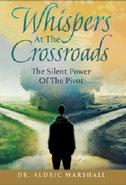
A guide to embracing the ability to pivot when facing life’s numerous challenges.
Marshall introduces the idea of how to change course when arriving at a crossroads— whether it’s a milestone event, like marriage, or a quieter moment, like an ethical dilemma. Marshall, a barbershop owner, met his own significant need to readjust when he was diagnosed with multiple sclerosis. His marriage soon crumbled, and he felt the call to become a pastor (although his advice here isn’t based on any overtly religious principles). While detailing his own experiences and pivots, the author walks readers through strategies for recognizing when (and how) to cope with thorny obstacles and changes. Whether used for developing a company’s marketing strategy or advancing one’s perspective, pivoting itself can be a philosophy: “It’s about realizing that while our personal history shapes us, it doesn’t define us. We are not merely the sum of our past achievements. Our potential is limitless…In the dance of life, to pivot is to evolve.” The desire to keep learning is “the fuel that powers” the pivot, and Marshall elaborates on ways to keep that desire alive (acknowledge that learning is not linear, consider diverse viewpoints, and remain humble). Each section concludes with a handful of blank lined pages for readers to track their progress. Even while tackling some headier concepts, the book maintains a conversational tone—“While [pride] can be a driving force behind achievements and milestones, it can also blind us, making us resistant to change and oblivious to the warning signs that scream, ‘It’s time to pivot!’”—although the text can sometimes drift into general platitudes (pivots “are the brushstrokes that paint the magnificent portrait of your life”).
Throughout, Marshall lucidly uses both real-world examples and philosophical musings to guide those who’d like to step outside of their comfort zones. A warm, inspiring manual for re thinking how to problem-solve.
Mellon, Mark | Self (146 pp.) | $9.99 paper May 20, 2024 | 9798324148768
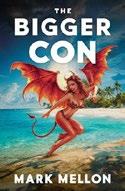
Con artists and charlatans take advantage of the building boom in 1920s Florida in Mellon’s historical novel. In Target City, Florida, Harry Easton has it made: Sheltering under the friendship of the mayor and sheriff and married to the beautiful Gabe, he runs a successful business conning people out of money for stocks, shares, and property. When Regina Siddons, who is the daughter of the founder of Target City and incredibly rich, invites Harry and Gabe to her home, Harry crosses paths with Irishman Sylvanus O’Moira. O’Moira, a charlatan and mystic, suggests that he and Harry could go into business together to swindle the old woman, leading Harry down a dangerous path far beyond any risks he has taken before. The narrative plumbs the rich world of Prohibition-era Florida, conveying the heady atmosphere of a populace scrounging to make a dollar in this expanding Southern haven, “an idyllic, tropic utopia where money lay in the streets, only waiting to be picked up.” The depth of Mellon’s historical research is clear, from the specific guns referenced to champagne imports from Cuba, providing a fascinating window into the period. The plot is occasionally hard to follow; the author’s predilection for dialogue-rich scenes puts the reader at the heart of the action; however, with myriad names flying about from the very beginning, the story gets a little confusing in the first few chapters. The main characters who emerge, however, dominate the pages with their vibrant personalities—particularly
the repulsive, grasping O’Moira and the likable rogue Harry, whose repartee will keep readers hooked throughout the short novel. The text’s brevity supports the punchiness of the narrative, though the ending feels a little abrupt. One hopes this indicates a potential sequel.
A high-octane story for readers who like a pinch of history with their crime fiction.
Montpelier, M.G. | Xlibris US (158 pp.)
$12.99 paper | Jan. 21, 2024 | 9798369414392

Montpelier surveys the past half-century of conservative politics in America in this nonfiction book. As the author of multiple books on American politics and post–World War II conservatism, Montpelier has long been a vocal critic of the modern Republican Party. In this compendium of previously published writings, he seeks to warn readers of what a 2024 Republican electoral victory would mean, stating it would signal a new era of “anger, hate, and chaos.” Backed by a solid bibliography, the book’s astute historical analysis begins with a 1971 memo written to the U.S. Chamber of Commerce by Lewis Powell prior to his nomination to the United States Supreme Court. The memo outlined a broad conservative agenda to thwart the New Deal and Great Society social programs and restore corporate influence over the economy. It also called for the creation of a network of conservative think tanks tasked with pursuing an aggressive public relations and political campaign in support of hardline conservative positions. This gave rise to organizations like the Heritage Foundation and the Federalist Society that, Montpelier notes, continue to dominate the Republican Party today. Tracing the history of conservatism from the Nixon era to the trickle-down
economic agenda of the Reagan administration to the autocratic tendencies of Donald Trump, the book offers a compelling critique of the modern Republican Party. A former federal employee with a keen sense of modern political history, Montpelier blends his own musings with speeches and writings on democracy from a bipartisan array of historical figures, from Republican stalwarts like Abraham Lincoln and Teddy Roosevelt to progressive icons including Franklin Delano Roosevelt and Henry Wallace. With fewer than 200 total pages, this is an accessible book; the engaging main text is supported by a wealth of images, textbox vignettes, and even original poetry on democracy, fascism, and other relevant topics. While the book admirably balances an authoritative understanding of recent history with a down-to-earth writing style, it is plagued by a tendency to rely too much on bolded fonts and grammatically incorrect capitalization to emphasize its points. A flawed but well-argued primer on modern conservatism in the United States.
Parker, C.A. | Running Wild Press (402 pp.) | $19.99 paper May 7, 2024 | 9781960018007
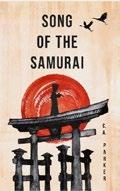
Parker chronicles the wanderings of a defrocked warrior-monk in this debut historical novel.
Japan, 1745: Samurai and Zen monk Kinko Kurosawa serves as the senior music instructor at Nagasaki’s Kuzaki Temple. Like all members of his order, Kurosawa is not only a swordsman—he’s also a flautist, dedicating a portion of each day to mastering the shakuhachi flute. It is his skills with the shakuhachi that get him into trouble, in fact; his music catches the attention of a young married noblewoman, and it is only a matter of time before word of their clandestine affair reaches the temple’s abbot. In order to save face, the abbot
does not outright expel Kurosawa, but strips him of his priesthood and reassigns him to a sister temple in the capital city of Edo. “Your musicianship is technically exceptional, but it does not yet reflect your depth of soul,” a mentor advises the miserable Kurosawa as he prepares to depart. “Claim that greatness of heart. Allow it to shape your music, then you will be on the path to Buddha-nature.”
Dishonored and ashamed, Kurosawa sets off on a journey through a country ruled by the authoritarian Tokugawa shogunate, in which spies, assassins, and rebel samurai wage an underground struggle against the regime. He also finds a country of merchants, courtesans, kakure kirishitans (“hidden Christians”), and monks from other Buddhist traditions who do not share the same narrow worldview of mendicancy and self-denial that Kurosawa has honed in his years at the monastery. As he travels the roads, sharing music and stories in the inns, Kurosawa begins to question the tenets he has tried (and failed) to live by, all while seeking to become the soulful flautist his teacher challenged him to be. Though Kurosawa aims to avoid politics, he soon finds that every samurai—even monkish, flute-playing samurai—must choose a side in the simmering unrest against the shogun’s rule.
Parker reconstructs Edo-era Japan in convincing detail, from the weapons-free pleasure quarters of the cities to the basket-headed humility of the komusō (“monks of nothingness”). The author’s quiet prose artfully evokes Kurosawa’s world, in which every space and person has a spiritual dimension. Here the protagonist climbs a holy mountain: “The route through the forest was narrow, and as Kurosawa made his way higher up the mountainside, he found himself walking through dense clouds. A thin blanket of snow lay upon the ground, crisp and hard…Kinko felt as though he had left the ordinary world behind him and journeyed into a sacred, hidden realm.”
Readers looking for a swashbuckling historical epic may be disappointed: Kurosawa’s journey is highly episodic, and Parker is primarily focused on the character’s philosophical growth. Much of the novel comprises the conversations he has with people he meets along the
way. Based on the historical figure Kinko Kurosawa, who traveled around Japan collecting musical pieces for the shakuhachi, the novel succeeds in re-creating a time and, perhaps more importantly, a worldview that many readers will enjoy getting lost in. An immersive and cerebral historical novel steeped in Zen Buddhist ideas.
Perillo, Francesca | Illus. by Stefano Cardoselli Mad Cave Studios (112 pp.) | $17.99 paper Oct. 15, 2024 | 9781545812020
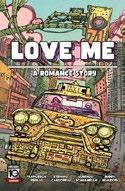
In Perillo and Cardoselli’s graphic novel, a robot in a dystopian future fights for the woman he’s just fallen in love with. JoJo is a round-bodied, thin-limbed robot living in a crowded city. Even though he drives a taxi for humans who don’t mask their hatred of robots, he stays positive and appreciates life’s “little extraordinary things.” His own life takes a pleasantly unexpected turn when Gilda Atkinson Pedretti hops into his taxi cab. She’s a beautiful woman who, like JoJo, has a fondness for Nina Simone and old black-and-white movies. They make a date, but then Gilda seemingly vanishes. When she finally calls, she fearfully asks for help before the call is cut off. As JoJo soon learns, Gilda is the lawyer for the Polpette Mafia, and the mob boss’ son is apparently obsessed with her. The tenderhearted robot, convinced this woman is his only chance at happiness, has no qualms about facing off against trigger-happy gangsters if there’s a chance he can save her. Perillo’s writing, coupled with Cardoselli’s artwork, delivers a smashing blend of sci-fi, romance, and noir (JoJo’s bug-eyed cat Frida narrates with the cynicism of a world-weary detective). The author wisely keeps the narrative simple while providing glimpses of characters’ backstories, including those of Gilda and robots in general. The handful of bullet-riddled action scenes include delightful touches of humor; JoJo
doesn’t carry a gun like the mobsters and uses what he can for a weapon (a phone proves especially handy). Cardoselli sublimely captures all of this chaos in pages bursting with vivid visuals (like a recurring gag of heavily advertised Perillo’s Cakes and Donuts) in jumbled panels fighting for space. And while JoJo is an undeniably winsome hero, it’s gleefully self-absorbed Frida who steals the show. A witty, wildly diverting romantic SF thriller.
Prior, George | Prospect & Main (472 pp.)
Sept. 3, 2024 | 9798991023702
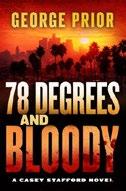
In Prior’s thriller, a lone detective tracks a disturbed killer on the loose in Los Angeles. Two people are brutally murdered in their house in Los Angeles. One of the victims, Baby G, works handling luggage at an airport; the other is his girlfriend Bicha, an influencer with a large TikTok following and some success writing poetry. Baby G was not involved in a criminal group, but he was a minor drug dealer and had recently stolen several bars of gold, making him a target for the killer, a man named Brooks. Casey Stafford is assigned to the case, working with his partner Banchet Suwan as Brooks murders more people, desperately trying to cover up his tracks. Even worse, as the killer indulges in drugs, his bloodlust and his craving for perverse violence grow. As Stafford continues his investigation, Bicha’s grandmother, who has connections to the Mexican Mafia, commands Bicha’s cousin and high-ranking mob member El Duende to find and kill her murderer. Stafford will have to work fast to find the killer before a Mexican hit man administers a different kind of justice. Prior has crafted an excellent thriller in this debut, which boasts a fast pace, unexpected twists and turns, and a compelling villain in Brooks. (His character is convincingly nefarious, particularly when taking
pictures of women he’s killed for his own pleasure.) The crackling prose highlights the severity of the stakes in passages such as, “Brooks swung the gun at her. She saw it coming, ducked, the barrel grazed off her head, cutting her but not dazing her, and she hit him again in the face with her fist.” Stafford is a worthy hero, proving himself as a detective as he unravels the mystery and holds his own against dangerous criminals. An exhilarating thriller.
Richardson, David Scott | Self (356 pp.) $14.99 paper | Sept. 3, 2024 | 9798988647959

In this YA novel set in a Seattle neighborhood during WWII, someone is setting dangerous fires. Young Scotty Johannsen is the narrator. There’s a war on, and the West Coast is under a strict blackout. Scotty’s father is the volunteer air raid warden and is very conscientious about his job, patrolling every evening and lecturing scofflaws. Someone’s trash bin is set on fire; soon a garden shed and a garage are also set aflame. Not only are fires against blackout orders, of course, but someone’s house could be next. Scotty and his friends decide to investigate. They also have to deal with the neighborhood bully, Simon Lashbaugh, and his gang of thugs. Scotty’s best friend is the nerdy Burr Boucher. Scotty’s older brother, Erik, is considering registering as a conscientious objector, and their uncle Ted is in the Navy somewhere in the Mediterranean. The war is very real to this middle-class family and even more so when Ted is listed as missing in action.
The firebug casts a pall of fear over all, and the Johannsens don’t come out unscathed in other ways. Richardson notes in his short bio that his own father was killed in the war, and he provides a very detailed picture of the time and the place: the blackouts, the rationing, the Japanese internment policy, the mix of patriotism and misgivings, and the collective doubts and fears. The book also has a moving passage where Scotty and his father introduce Burr to fishing, with morning fog on Puget Sound a metaphor for their loss of bearings. Richardson has a knack for just the right word, as in “the house bulged with silence,” and, during a tense scene, “our small talk was smaller than usual.” A helpful chronology of the war years is included. The book would benefit from a light copyedit. An involving read with well-imagined characters and period detail.
Saxsma, Aj | Self (256 pp.) | $14.99 $11.99 paper | Aug. 16, 2024 9798326044938 | 9798329980042 paper

In Saxsma’s collection of short stories, characters come to grips with their lack of agency as they navigate miserable situations.
In “Drive You to Violence,” Linda, an office worker, comes home late from work to find her husband and children sitting in front of the television. They are waiting for her to start dinner and imploring her to follow the instructions for the “box dinner helper”: “Don’t add steps or take steps out. Just follow the box.” As “Curse the Writer” opens, a director reads a new script, knowing that he’s the studio’s second
choice, while his relationship with his partner, Dennis, continues to fall apart. In “He Had a Receipt,” Parks, a legal assistant in a world where robots are house servants, finds an unexpectedly sentient robot in front of his office, asking to check in for an appointment. Overindulgent cashier Andy Dibbler plans to propose to his less tolerant boyfriend, Brian, in “Common Sense,” while dodging calls from a debt collector. Finally, in “What’s in Your Head, Chris Cooper?,” the titular character goes missing in 1999 after deciding to hold an art exhibition; in 2022, his family wants to re-release a documentary that features details of his disappearance. The premise of each story is simple and somewhat desolate, in keeping with the collection’s title; indeed, for each tale, there’s a growing sense of foreboding as the pages turn. Saxsma’s prose style is minimalist throughout, and his dialogue especially shines, employing repetition and occasionally longer, impassioned speeches to heighten the absurdity of misunderstandings and the tension between characters to great effect—especially when stories come to a shocking end. Some characters, though, are more sympathetic than others; the director in “Curse the Writer,” for example, comes off as flat and petulant as his vision for his film remains out of reach, while the protagonist’s internal struggle in “He Had a Receipt,” as he represents a robot client, is brilliantly handled. Tense and surprising stories with an existentialist bent.
Silver, Jason | Ideapress Publishing (250 pp.)
$32.95 | Sept. 3, 2024 | 9781646871667

on the other side of the fence, which describes the tendency of people to long for someone else’s version of things they themselves have—a job, a house, a lawn, or what have you. In this book, Silver concentrates mostly on the world of work, insisting that the key to job satisfaction is not a change of material circumstances but a different attitude: “The secret to better work—and a more enjoyable life as a result—is to change how you’re working.” he writes. “Using the skills you already have to improve the work you already do.” Readers crushed by overwhelming working conditions may quibble with such sentiments, but the author focuses more generally on the centrality of work in one’s personal fulfillment. He asserts that the more someone enjoys their work, the better they are at it, and the resulting joy “spills into the rest of your life.” He puts forward strategies designed to make one’s labor less stressful by making it more efficient. For instance, he looks at improving workplace communication, citing estimates that miscommunication costs the U.S. economy more than $1 trillion per year and noting, in appealingly straightforward prose, that “miscommunicating just feels bad.” He draws on his own business experiences and provides fictionalized examples, all with the aim of encouraging readers to improve their job experiences by focusing on being “the best version of yourself.”
of “brief back,” in which one person briefly and immediately recaps something told to them by another. Silver’s prose is clear and inviting, and his essential optimism runs through the book like a bright thread. He consistently reminds readers that they have the power to change how they feel about work—not their bosses or teammates. Again, readers who deal with unreasonable bosses, co-workers, workloads, and deadlines may find these thoughts to be more aspirational than practical. But Silver’s central idea—that people don’t “get” dream jobs, but “practice” them—has an appeal that will make pronouncements such as “the more you use skills you’re already great at, the better you’ll do and feel” feel uplifting. An ebullient call to improve one’s life and work by improving one’s attitude.
Sutter, Jane Edwards | FriesenPress (168 pp.) | $34.99 June 26, 2024 9781038305251
Public speaker and startup advisor Silver presents a book about finding stronger personal and professional motivation.
The title of this book draws on the old saying that the grass is always greener
Silver sometimes uses cliches, such as “work smarter, not harder,” but he almost always does so to interrogate them or to explode them as he presents his own strategies for improving attitudes. His ideas can be disarmingly straightforward, such as to simply list the job aspects that one most enjoys about one’s work, and then compare that to a list of the things that occupy the most time during the week. He presents an abbreviated version of “The Greener Grass Playbook” in these pages, which breaks down many of the book’s methods into challenges and tactics; the full playbook and other resources are available as free downloads. The playbook’s section on “How To Eliminate Miscommunication,” for instance, includes tactics that draw on his concept
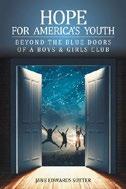
Part history, part biography, and part testimony of the Boys & Girls Clubs of Oklahoma County.
Sutter makes her intentions for this work clear in the introduction: “This is not a self-help text, a scientific study of mentorship, or conclusive document about Boys & Girls Clubs of America”; instead, it’s an “honest attempt to demonstrate how caring adults can ignite the bright potential of America’s youth.” True to her word, Sutter, who served almost a decade as president and CEO of the Boys & Girls Clubs of Oklahoma County, catalogs the success stories of kids who have moved through the program, her personal journey, and oral testimonies from former co-workers and volunteers. One story charts the club’s influence on Rick Nagel, once a “poor kid with no sense of home,” who went on, after earning a scholarship to
Oklahoma University, to visit the White House and head Acorn Growth Companies, a company focused on aerospace, defense, intelligence, and space investments. There is also some historical information about the early days of the organization—originally begun by three women in 1860 in Connecticut who noticed the challenges that kids faced during the Industrial Revolution—and its eventual inclusion of girls. The author’s own path toward her position is described in the form of a vision, a calling from God, and her testimony is moving. Many of her former co-workers and volunteers also have a Christian connection to their service, though there is a wide representation of people interviewed and varied tales of achievement presented throughout. For those interested in reading about the history of one of the leading youth organizations in the U.S. and the dedicated people who pour their hearts into it, there is much to enjoy here. While Sutter didn’t intend for this to be a self-help book, readers may be inspired to donate their time or money to their own communities by some of the words of volunteer Suzanne Breedlove: “There is more need for Boys & Girls Clubs now than ever in history….Everybody has some time to pour into someone else’s life and to see how far just a little bit of attention and energy goes.”
A moving account of a community and organization committed to changing young lives.
Thompson, Hayden | Self (264 pp.)
$14.99 paper | June 19, 2024 | 9798328712712
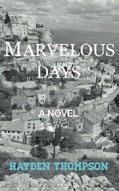
In Thompson’s literary novel, a widowed flâneur finds a second act in travel.
Kevin Brunner’s retirement in 2012 presents something of an existential crisis. An American expat who settled in Germany 30 years earlier, he’s spent half that time as a widower, throwing himself into
his work as a biologist to distract himself from the grief he feels over his German wife’s death. Now, at age 63, he is alone—his adult son Dan has married and moved to Hong Kong— with a lot of time on his hands to sit at home and think. “I’d imagined a vague retirement plan, thinking all would be nice and easy with my free time of plenty. But now, a sense of being domesticated within a confined apartment crept in.” Experiencing an unprecedented wanderlust, Kevin decides to travel, and neighboring France is on the top of his list—due, in part, to the attractive Parisian, Adeline Toussaint, whom he recently met on a train. While cleaning up his flat, Kevin discovers evidence that his wife had carried on an affair with another man long ago—a revelation that causes him to feel as though he’s lost her a second time. Feeling new uncertainty about nearly every aspect of his life—including his identity as a husband, father, scientist, and expat—Kevin spends nearly a decade roaming the towns and cities of France, seeking catharsis in new places and people. Thompson succeeds in capturing the peculiar blend of pleasure and melancholy that comes from travel, the way novelty both distracts from and highlights the preoccupations of the traveler. “These trips, these constant motions,” narrates Kevin, “though taken at times with my unstable moods, had proved to be a panacea preventing me from revolving in dreariness. Happy moments existed, though it was an uphill road. Still, they were taking the reins these days. I’d try to make them last.” There isn’t much in the way of a traditional plot here, but Kevin’s peregrinations and the passage of time ensure the story is always moving.
A richly meditative novel about aging and travel.

Zaiss, John | Self (302 pp.) | $12.95 paper Aug. 5, 2024 | 979987241943
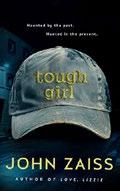
In Zaiss’ thriller, a traumatic night from their teenage years brings two ex-friends back together under suspicious circumstances.
Teenagers Skye McClendon and Jessie Arzate meet at BrighterDay, a women’s shelter in Kansas City where their mothers are living. In Jessie’s case, staying at the shelter was an ultimatum given to her drug-addicted mom by a judge: “Stay off the streets and stay clean, or you’re going to jail, and your daughter will be remanded back to the state’s foster care system.” When her mother disappears one day, Jessie knows she has to find her before something bad happens. Skye, hearing her plans, blackmails Jessie into letting her come along, and the two end up in a bloody, violent situation neither of them could have ever prepared for. Traumatized by that night, Skye grows up to become an ER doctor, while Jessie lives a rough life on the streets. Sixteen years after the incident, they run into each other again, but what Skye believes to be a coincidence is actually a detailed scheme put into place. As it turns out, Jessie has been coerced by the FBI to track down Skye to see what she knows about her fiance laundering money for a Russian mobster. The FBI wants answers, and Jessie, blaming Skye for ruining her life all those years ago, wants revenge and is determined to get it however she can. Narrated by both girls, this gripping drama masterfully switches between present and past, filling in the details about what happened that night when they were teens (it would spoil too much to give away the incident—it’s a critical moment in the plot that anchors this compulsively readable story). With twists around every turn, the novel never feels like it drags or meanders—this is a fast and engaging ride.
A classic thriller, fun all the way through.


By David Schulze
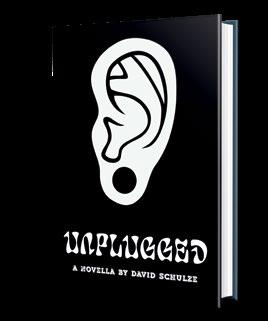

Rick Cochran
By William Mebane
Laura Resau
By Michael George
Robin Keuneke

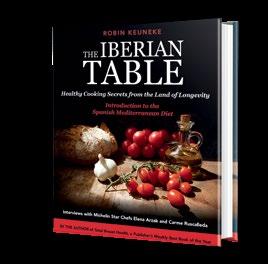



“Distilling Argentina’s history into accessible text, the work ends on an uplifting note, discussing how the figure’s ‘songs of empathy and esperanza, fearlessness and fuerza helped the country begin to heal.’” Publishers Weekly
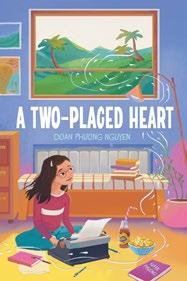
“This highly readable verse memoir beautifully portrays the internal anguish of growing up and adapting to life in a new country.” School Library
,


“Captures both the terror of displacement and brief but meaningful moments of tenderness. . . . A moving and enlightening depiction of the refugee experience.”
Kirkus Reviews, starred review
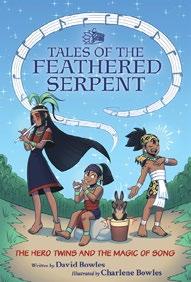
“Weaves demigod-filled bombast with fanciful hijinks, star-crossed romance, and heaps of humor.”

“A gripping page-turner that perfectly blends sisterhood, magic, and self-discovery, [it’s] simply enchanting.”
—Crystal Maldonado, author of Fat Chance, Charlie Vega
